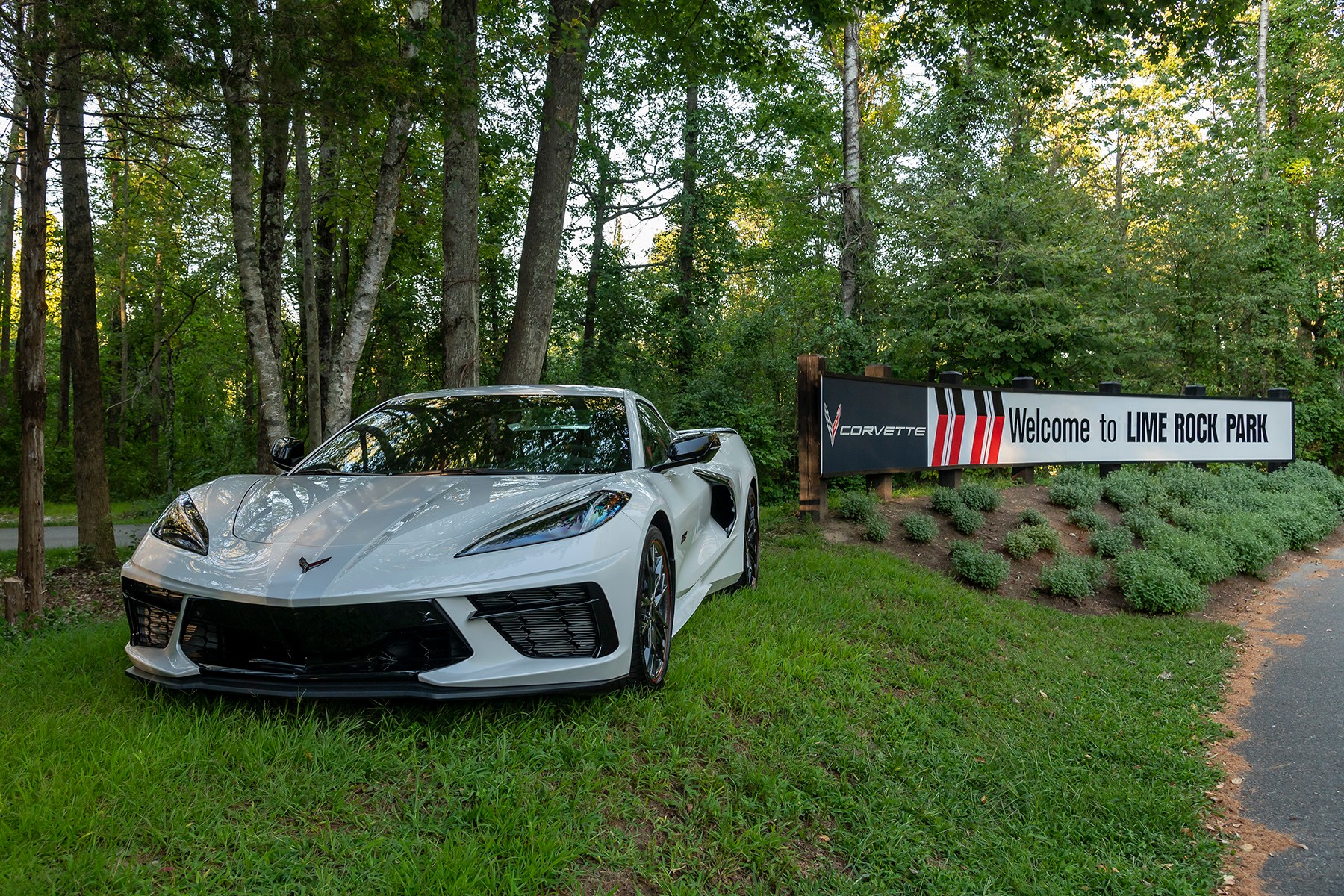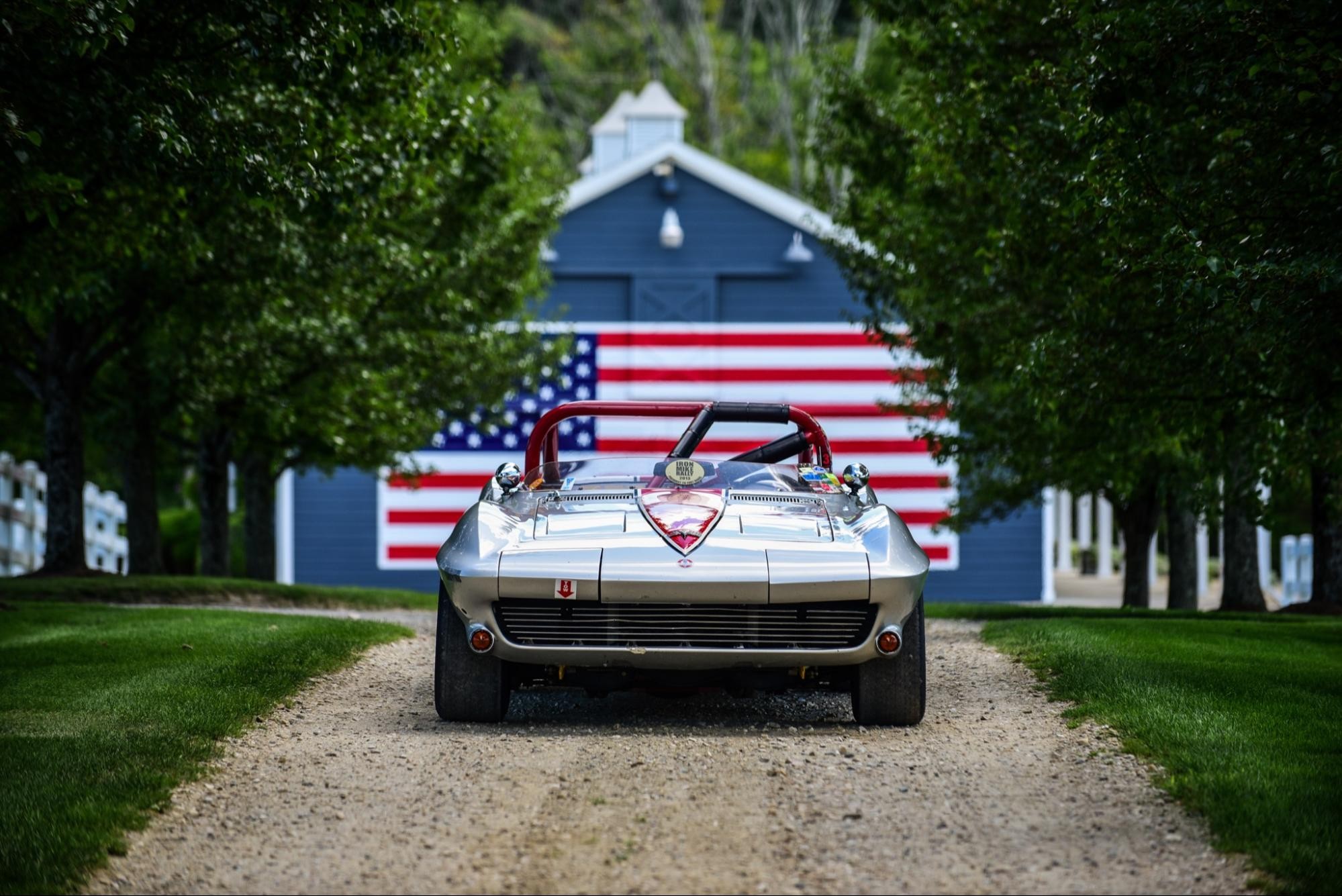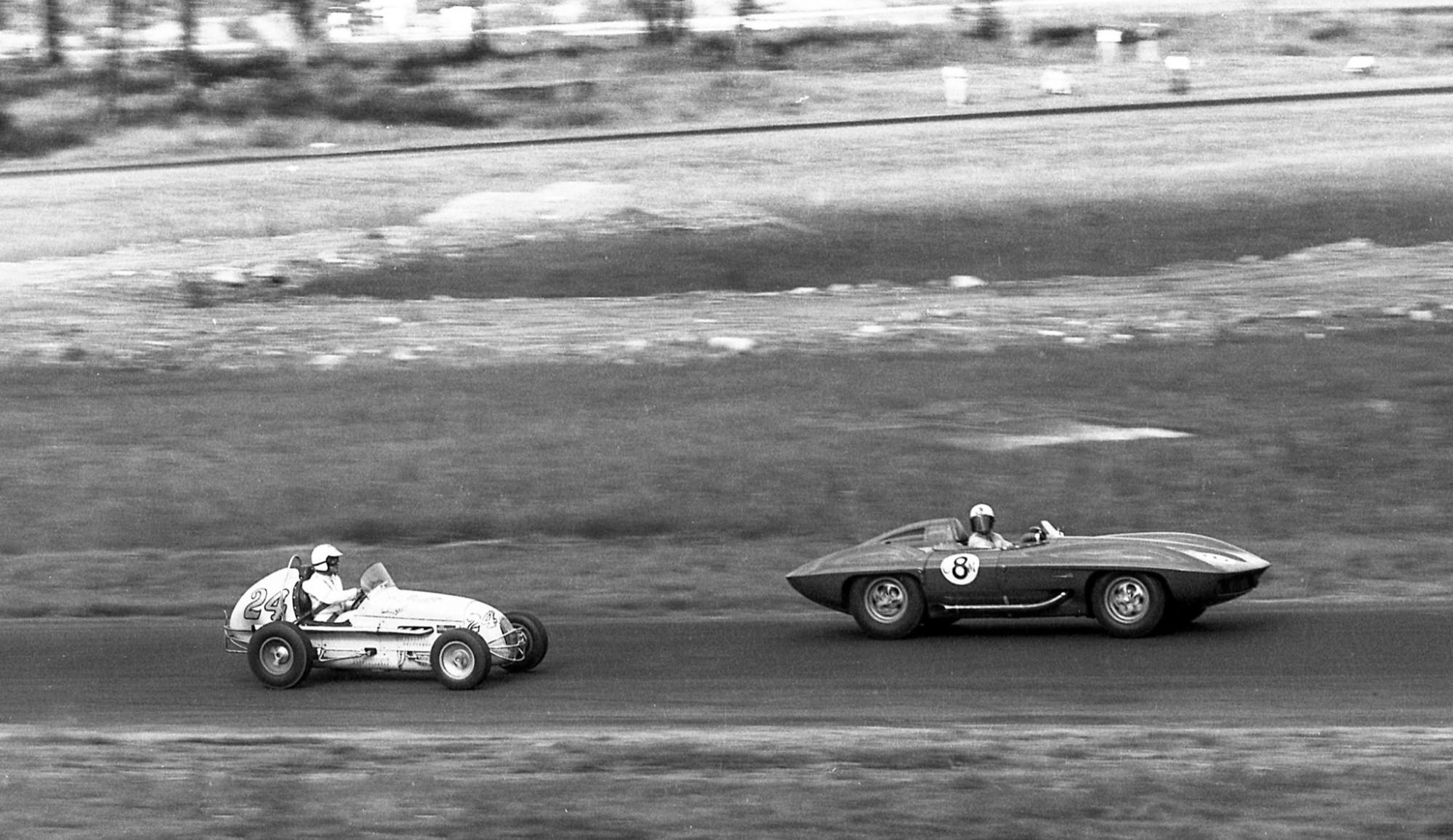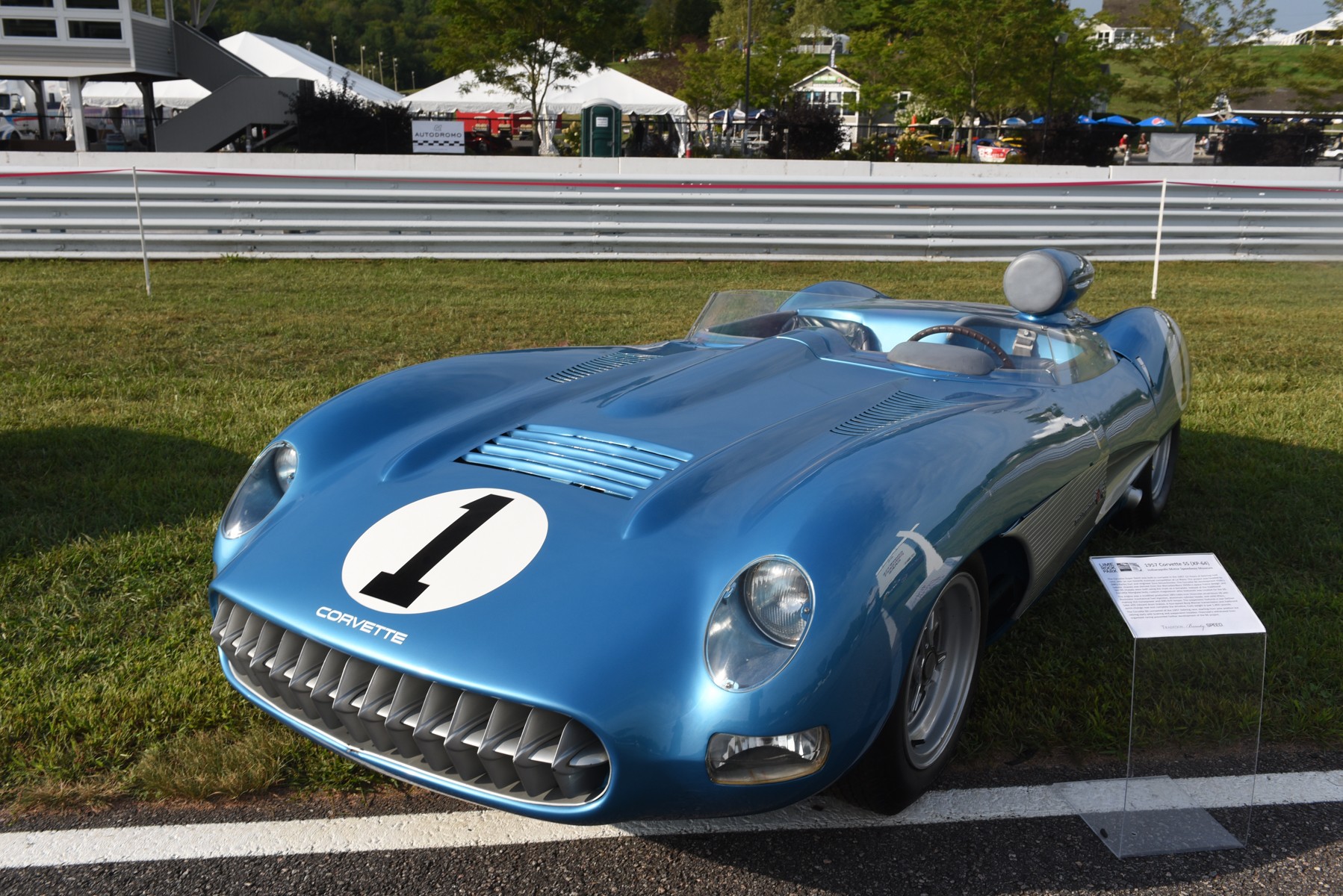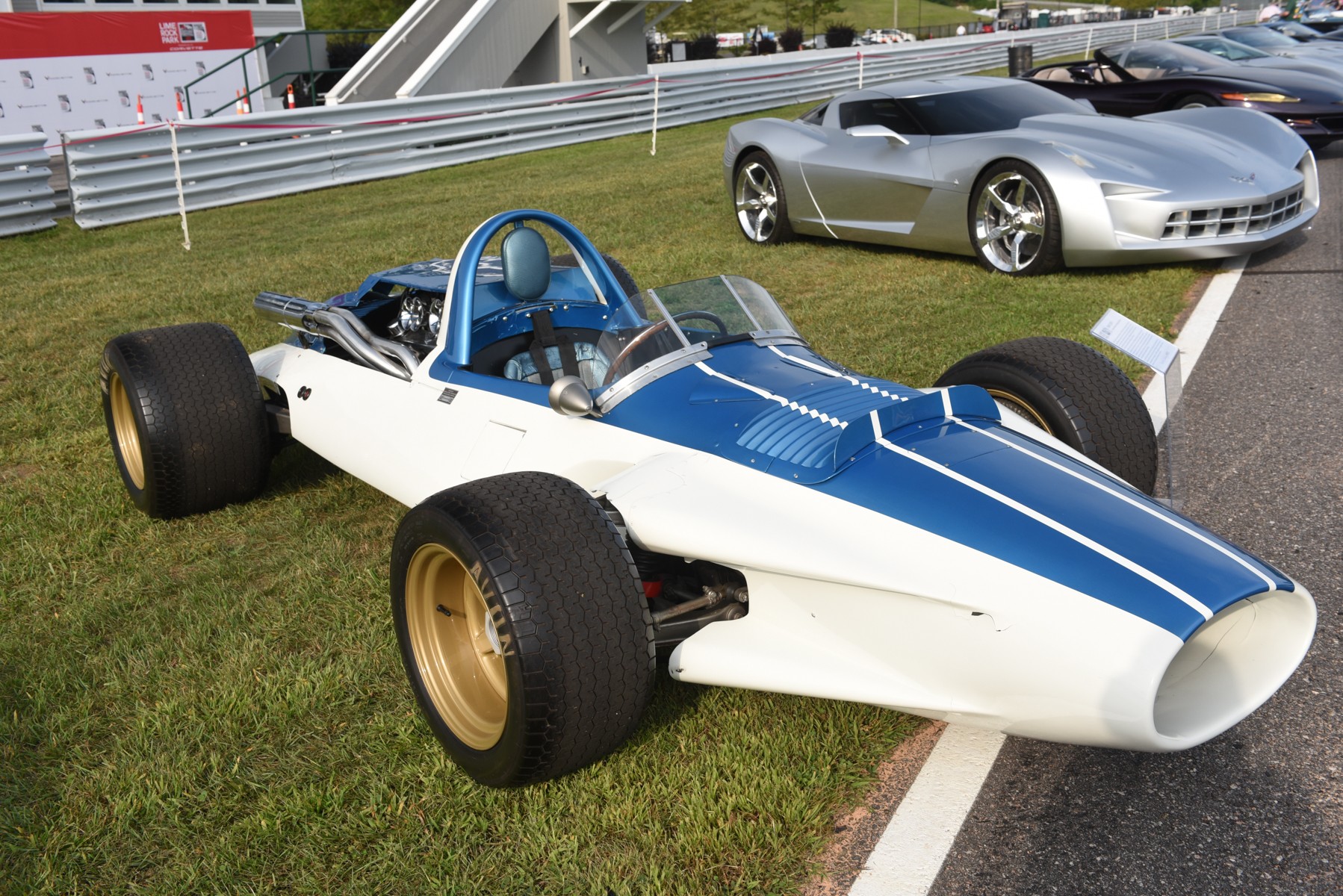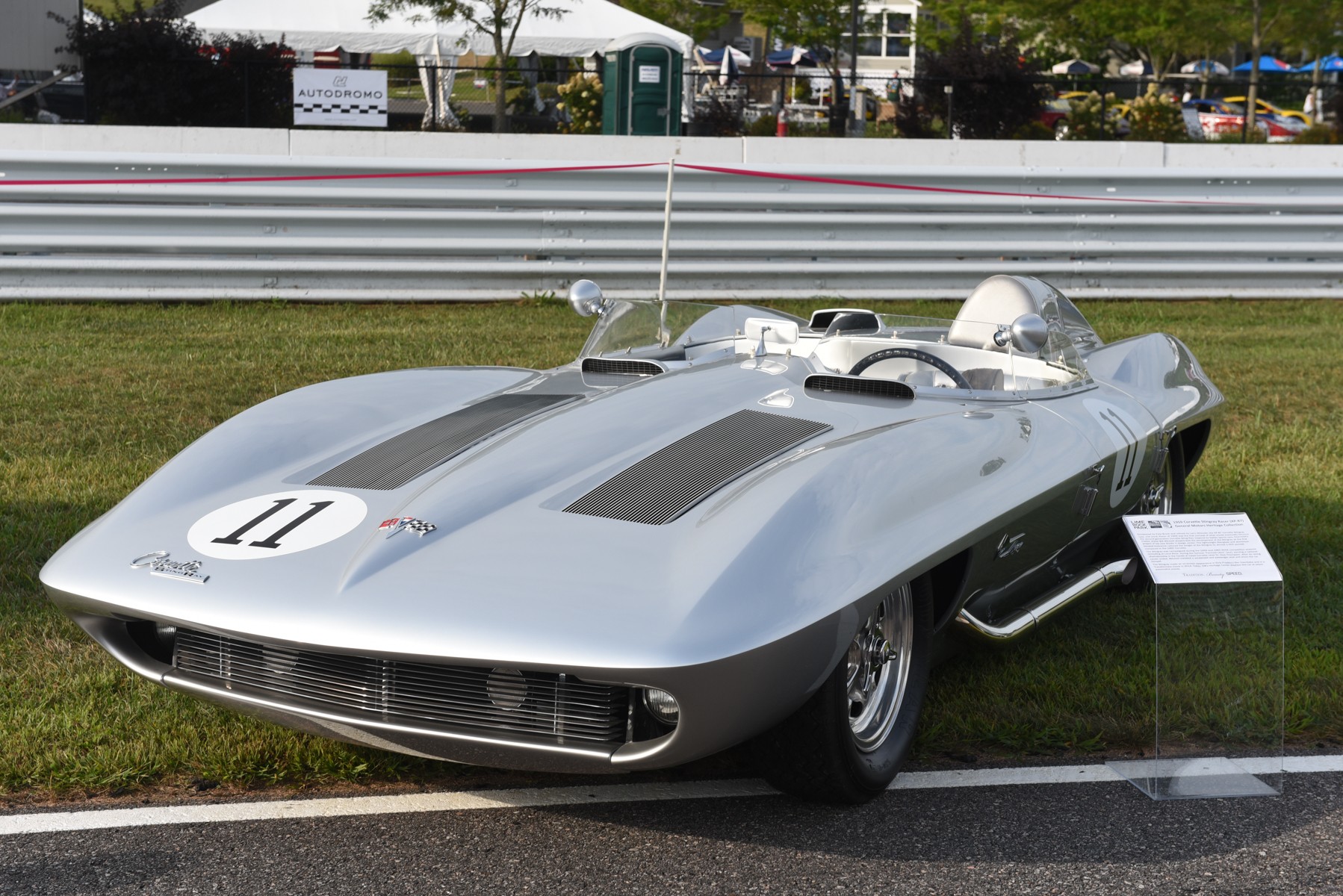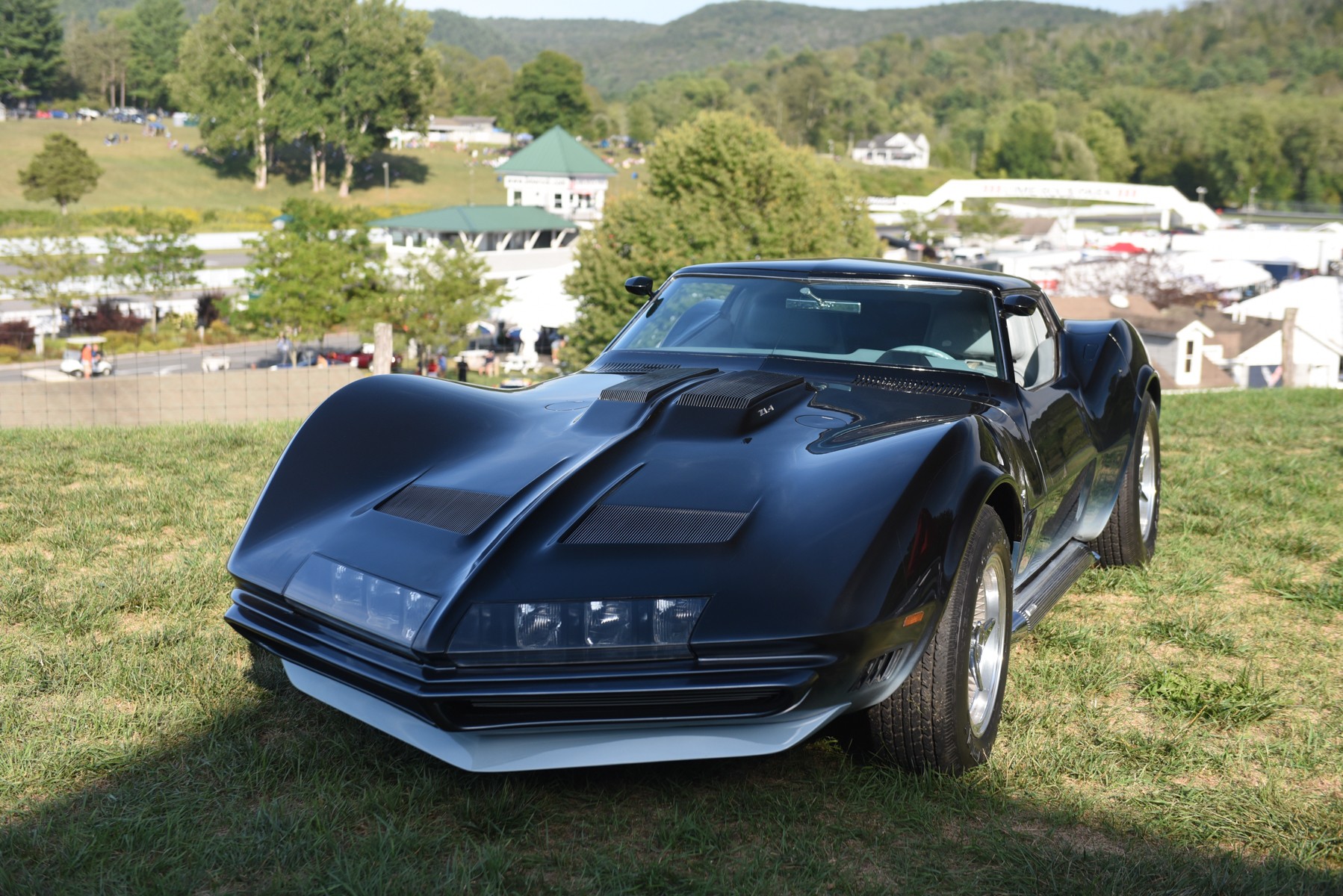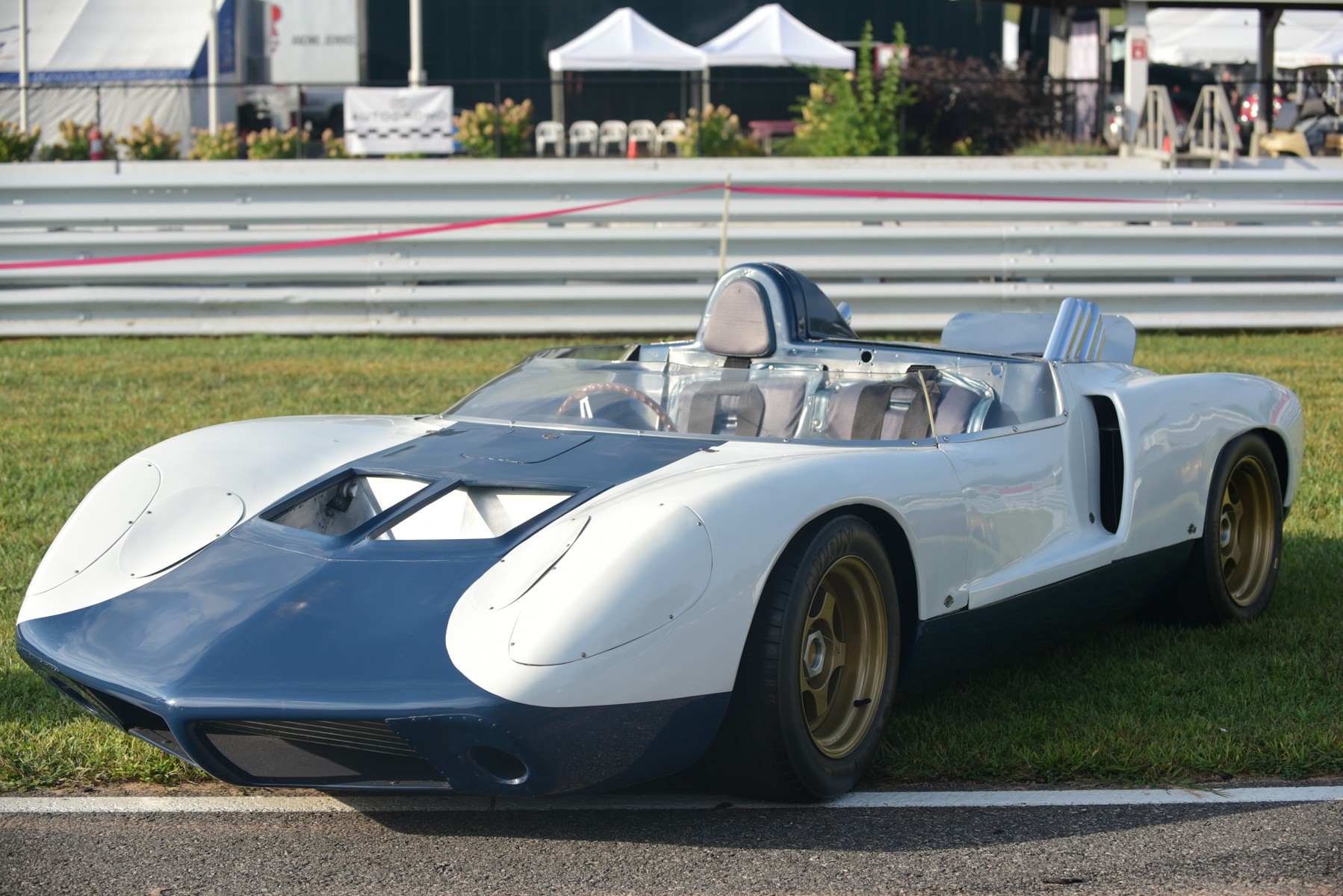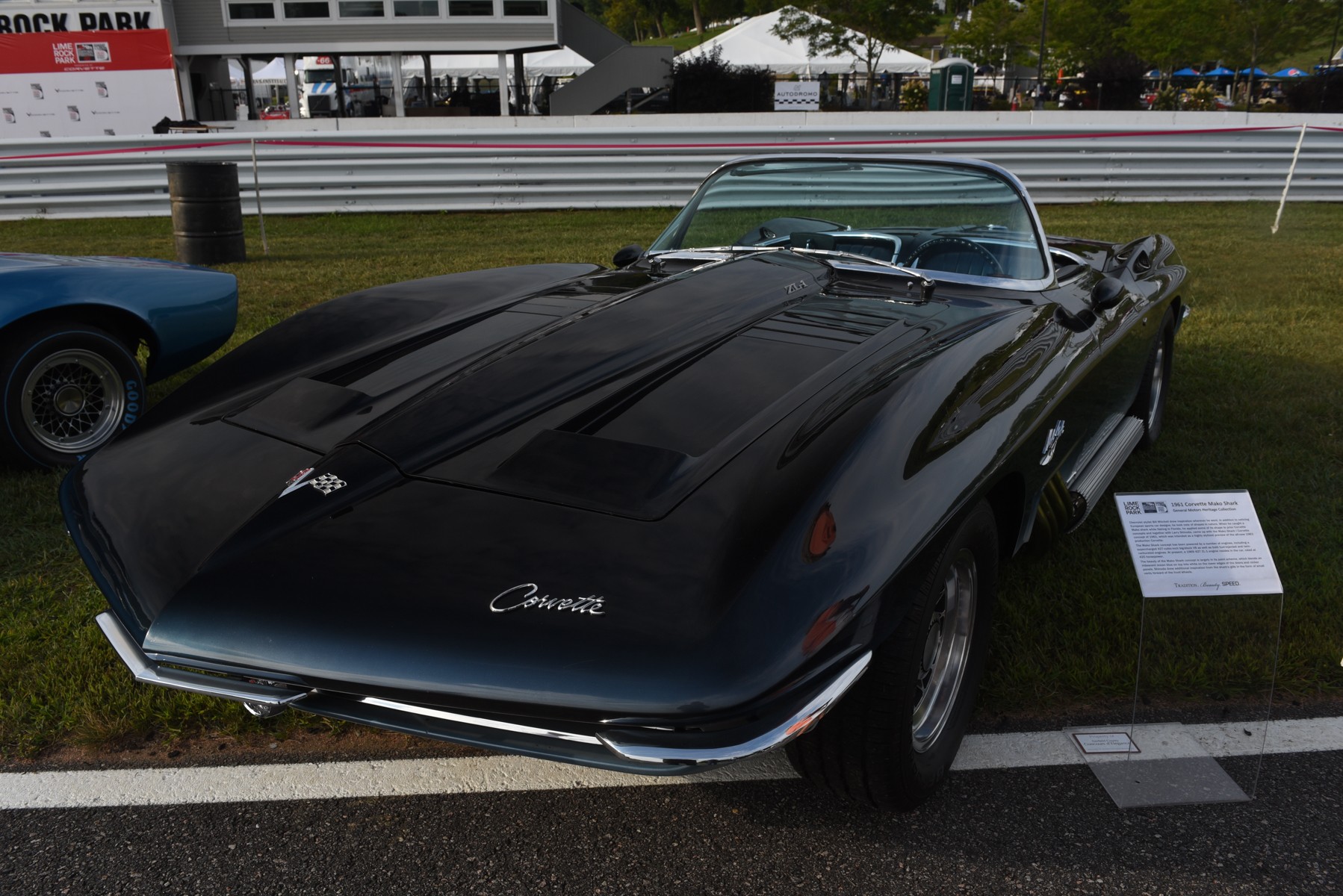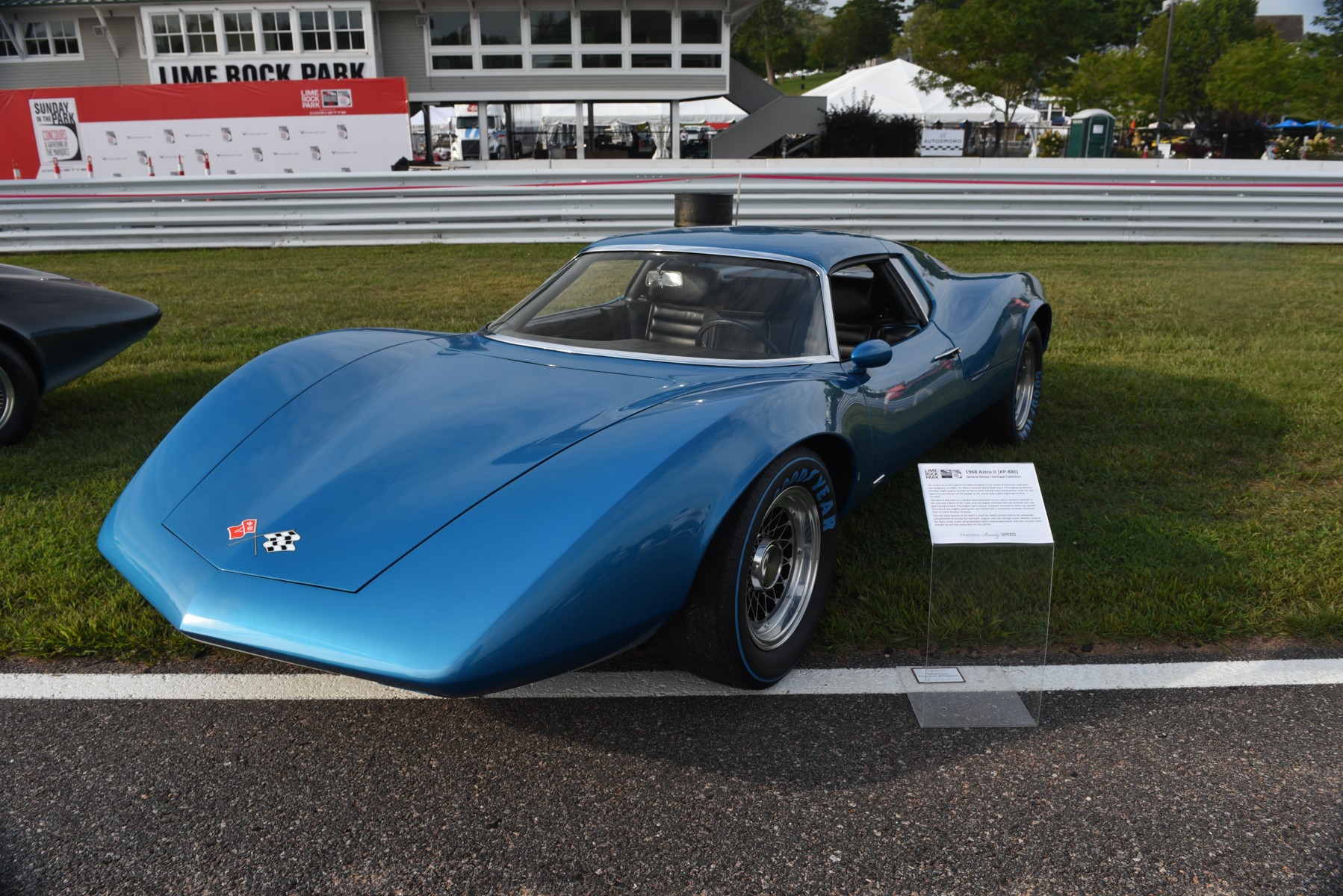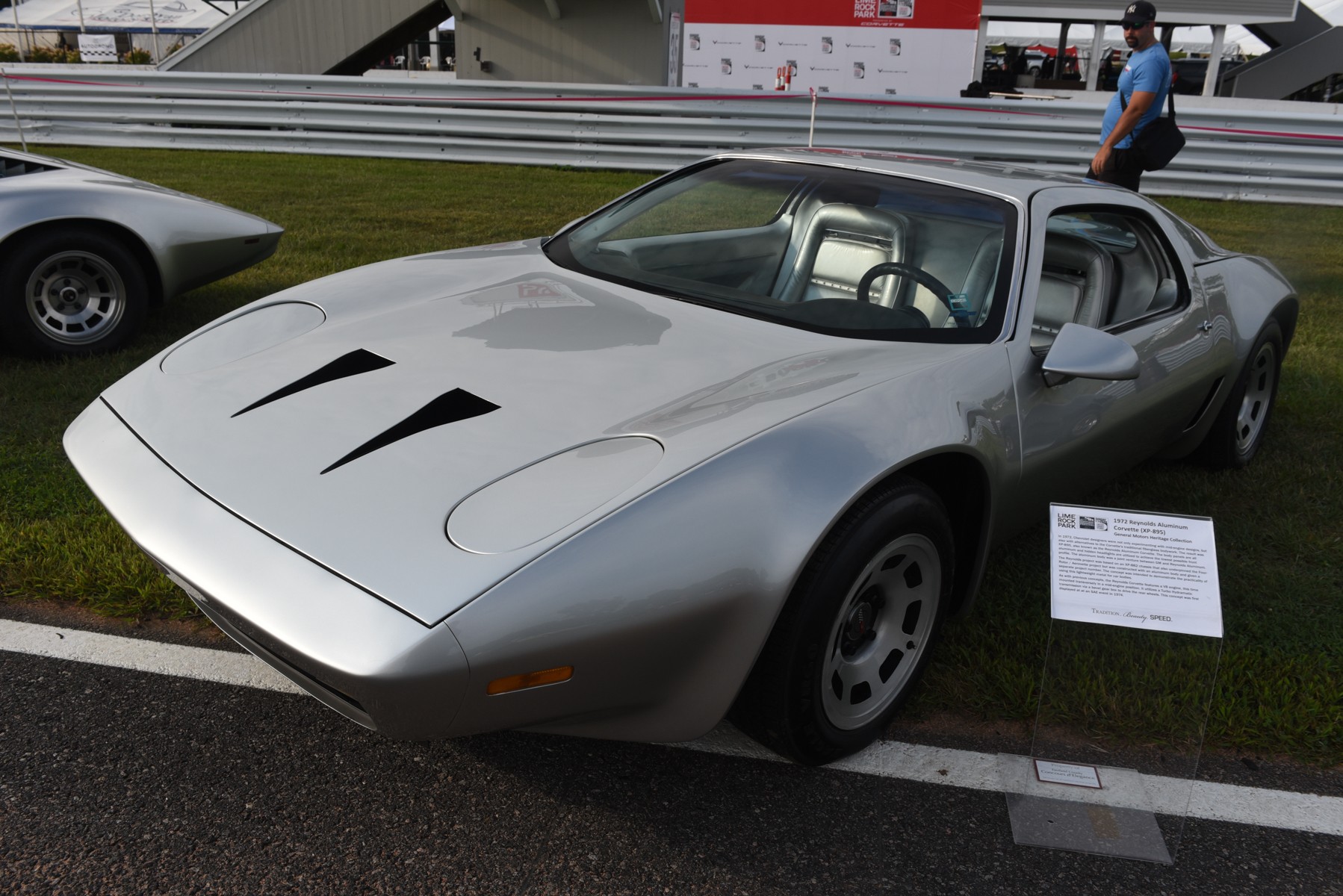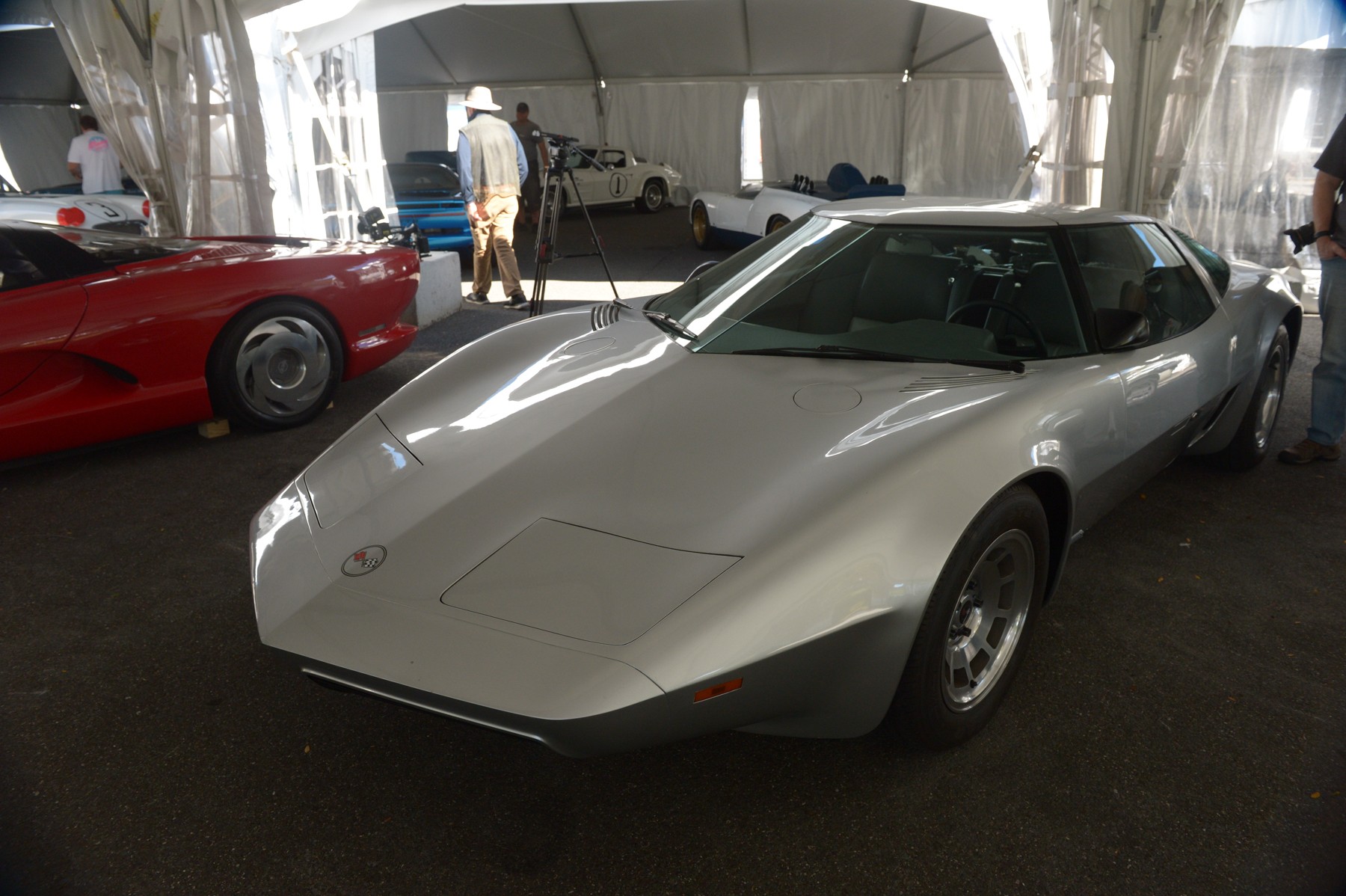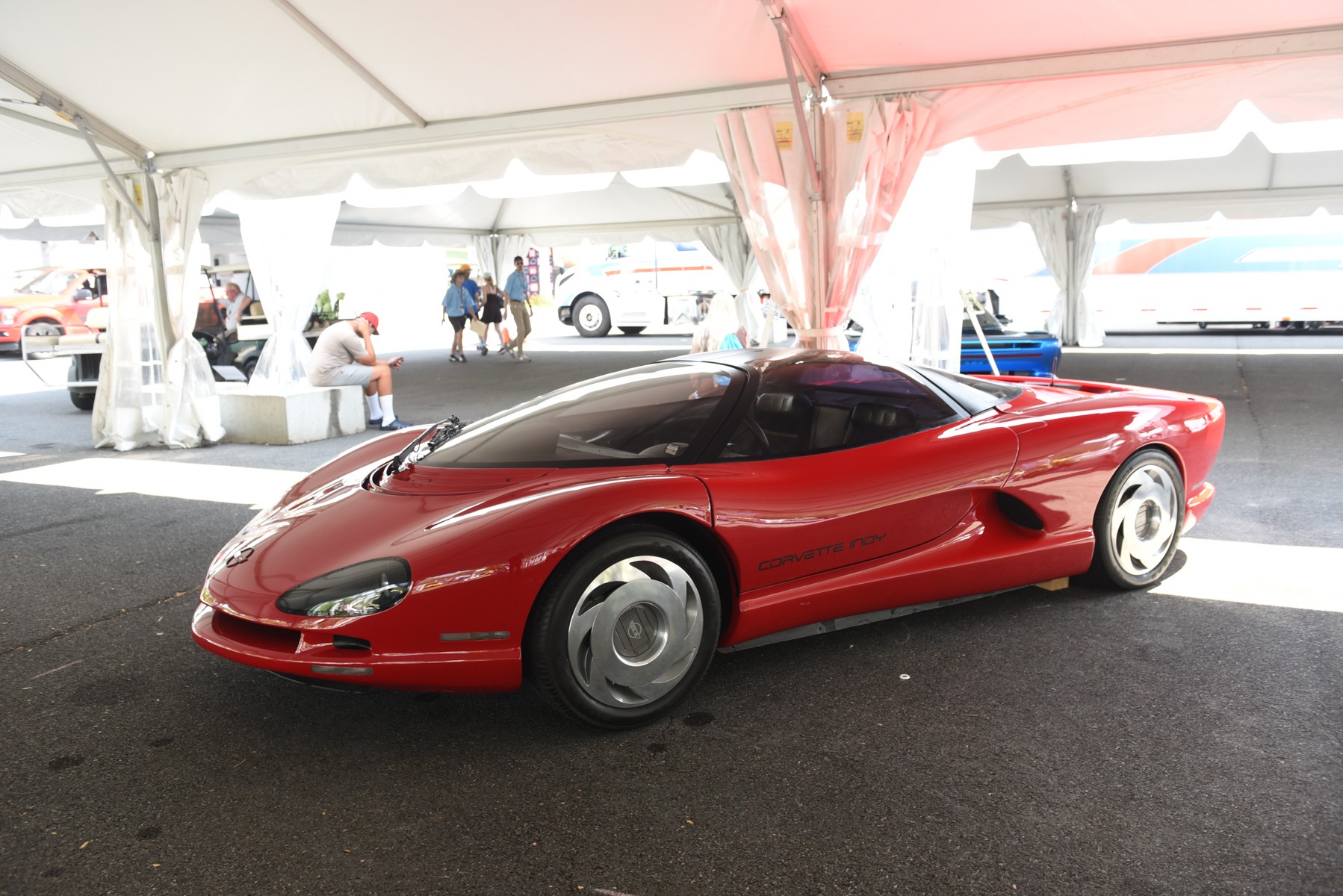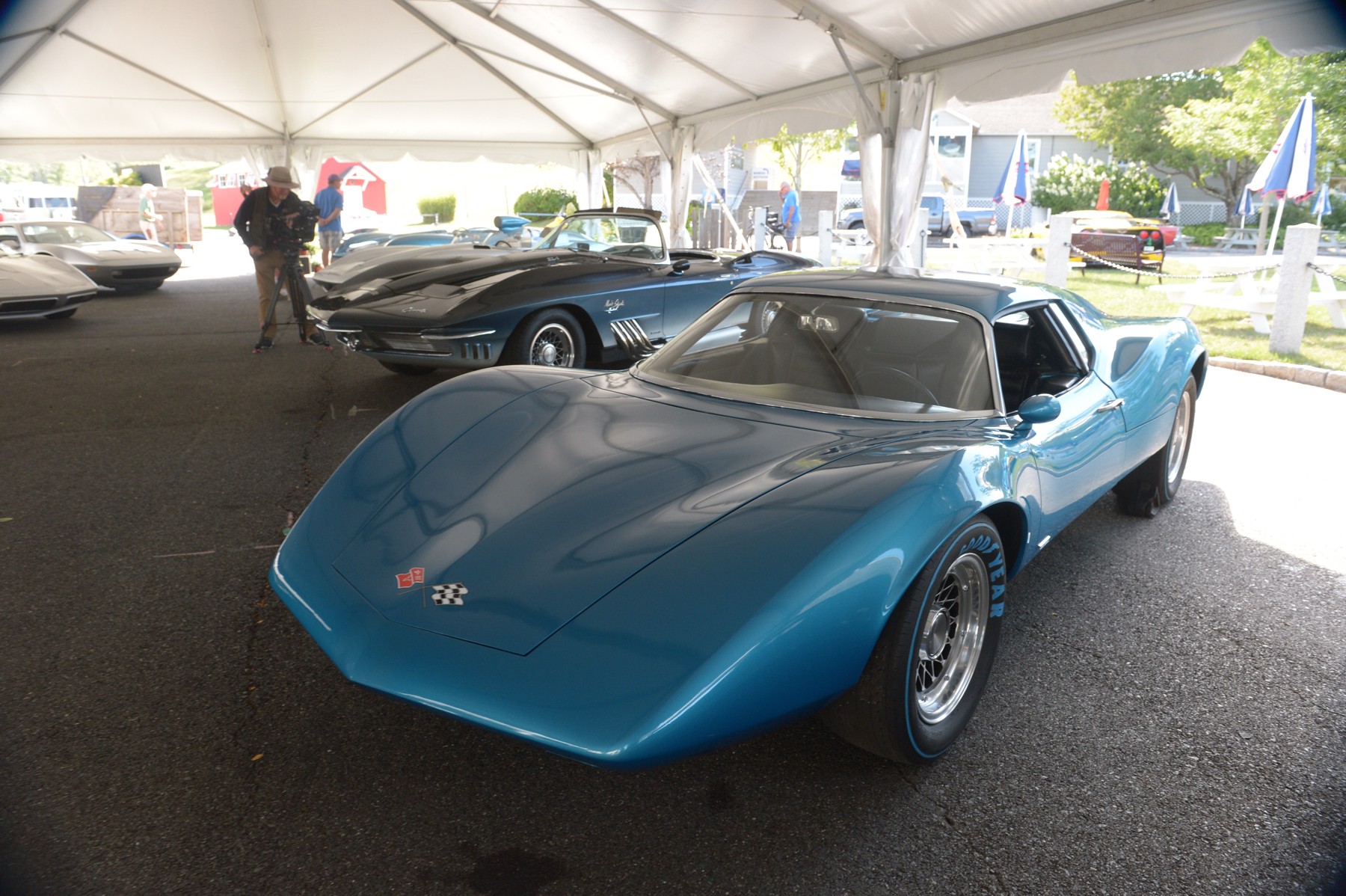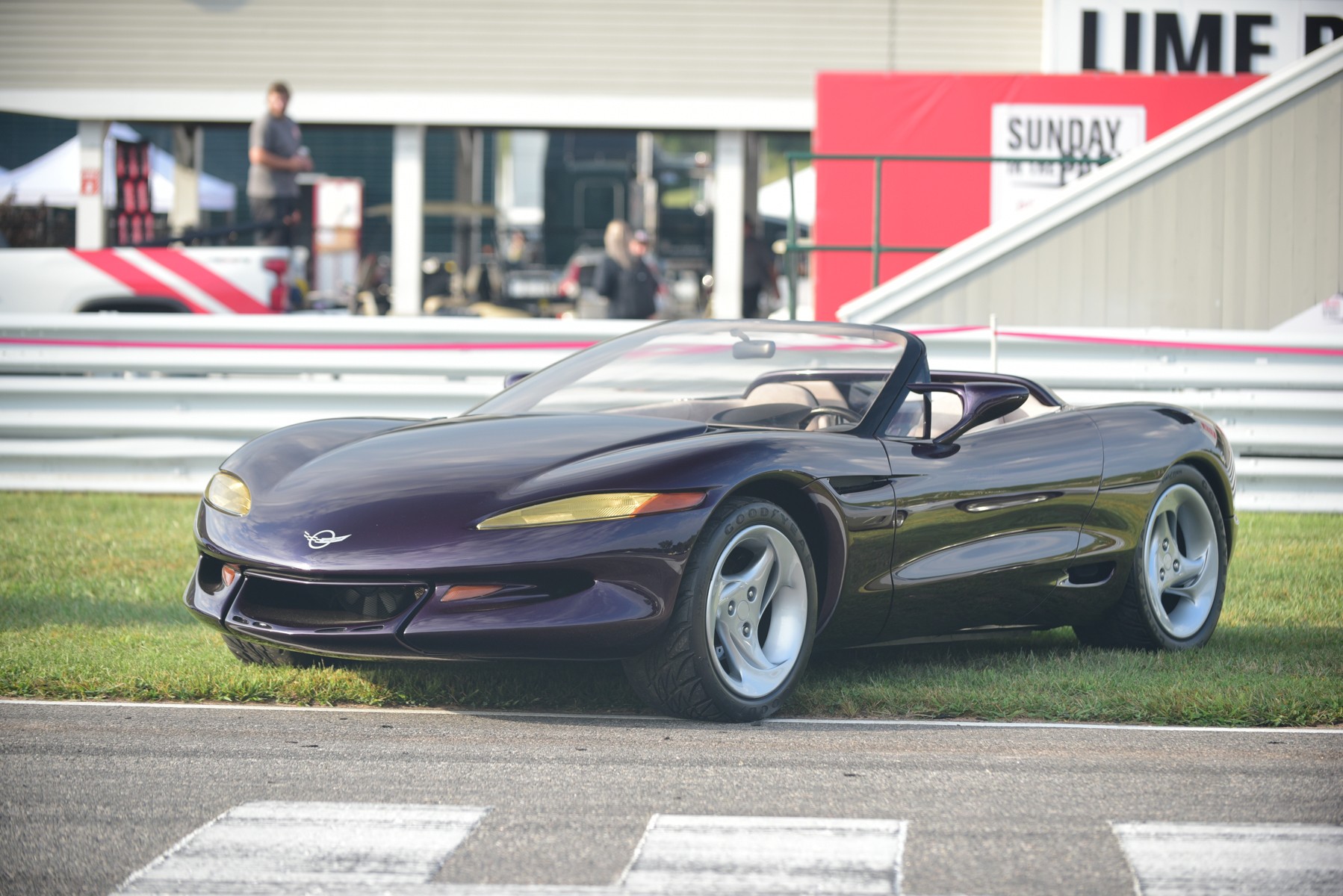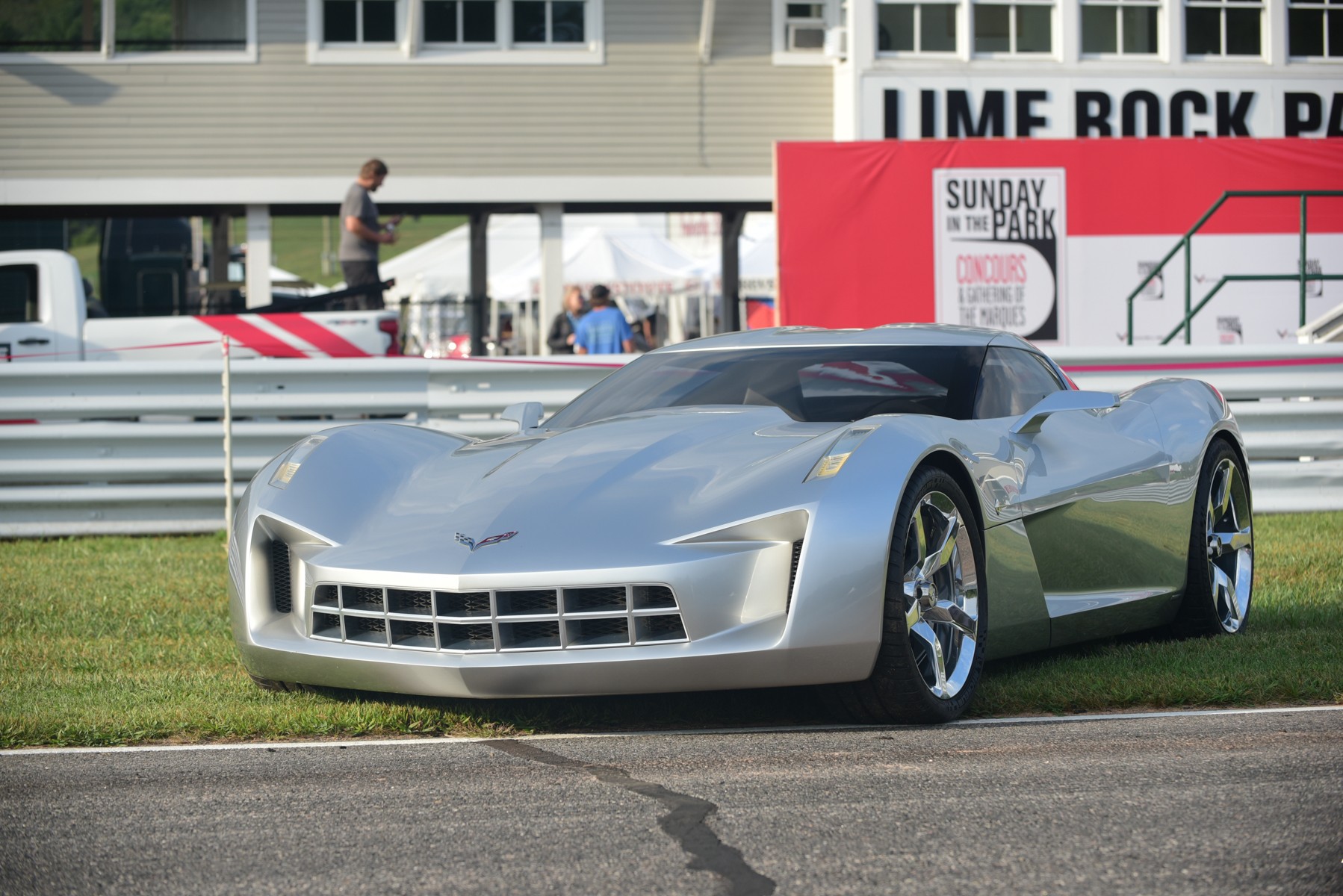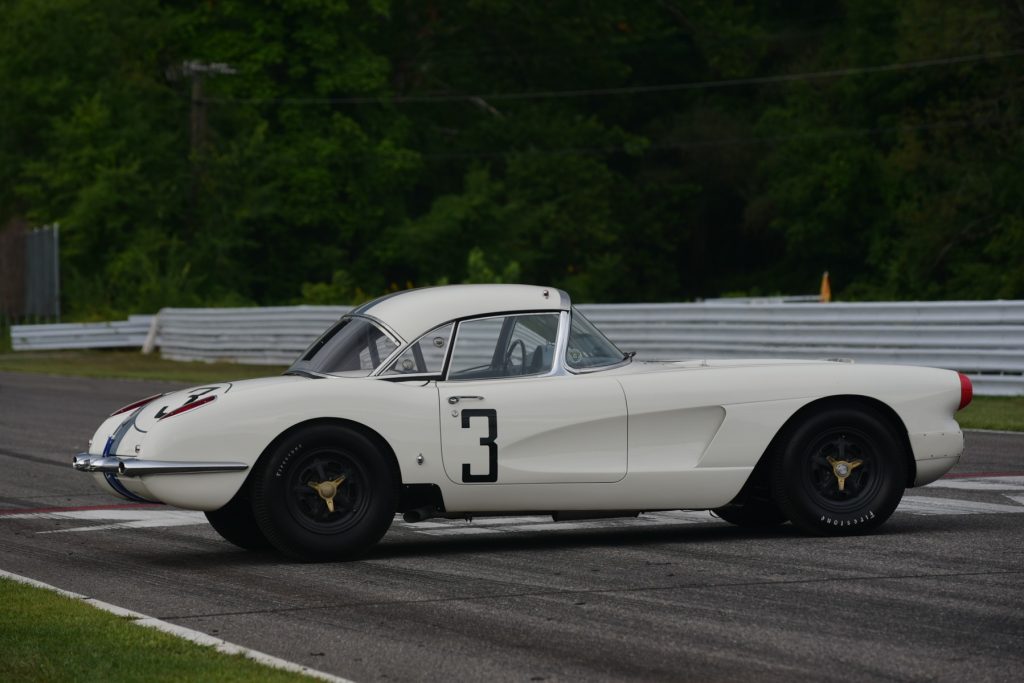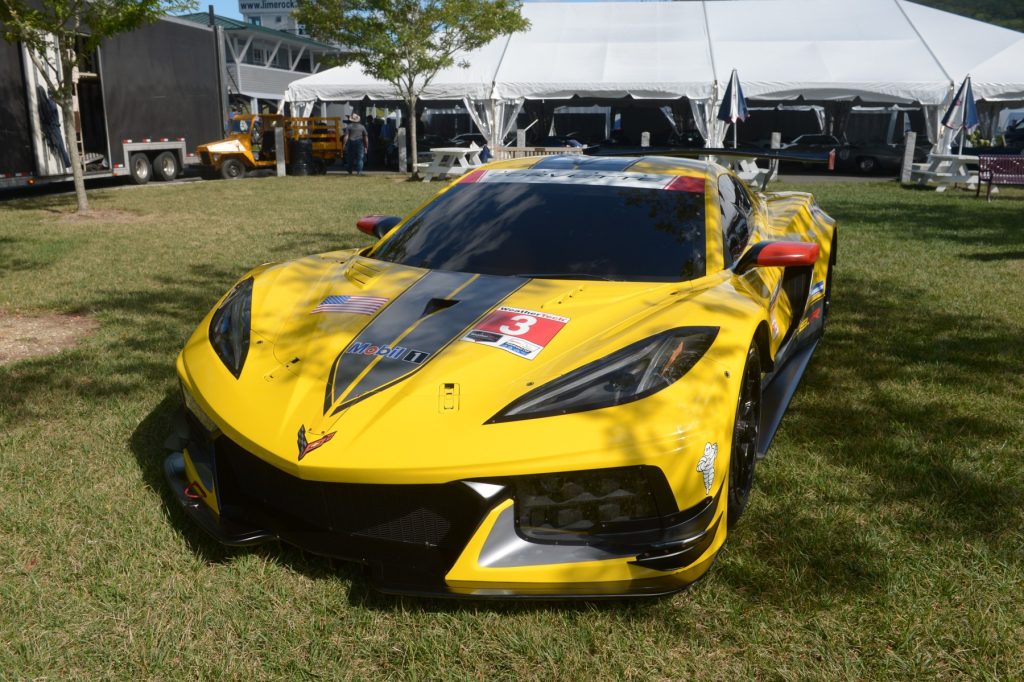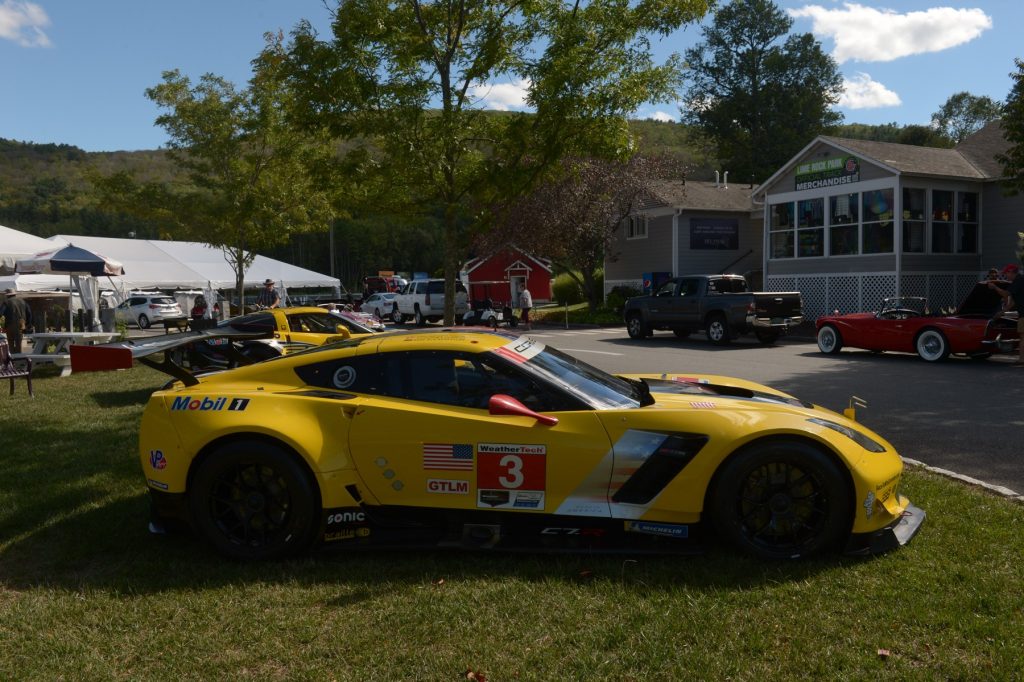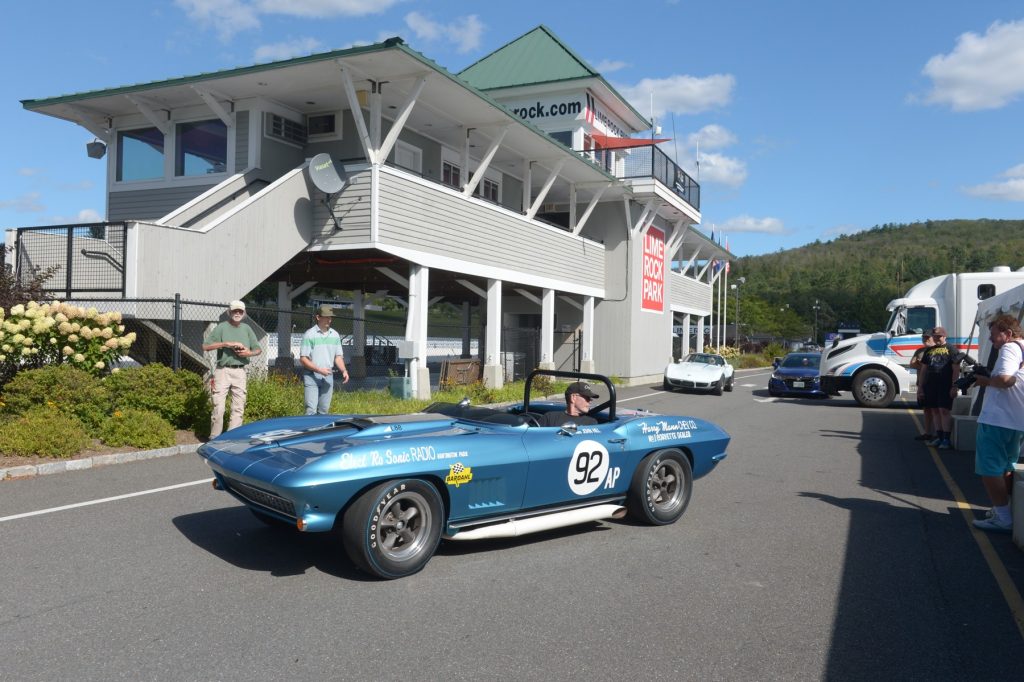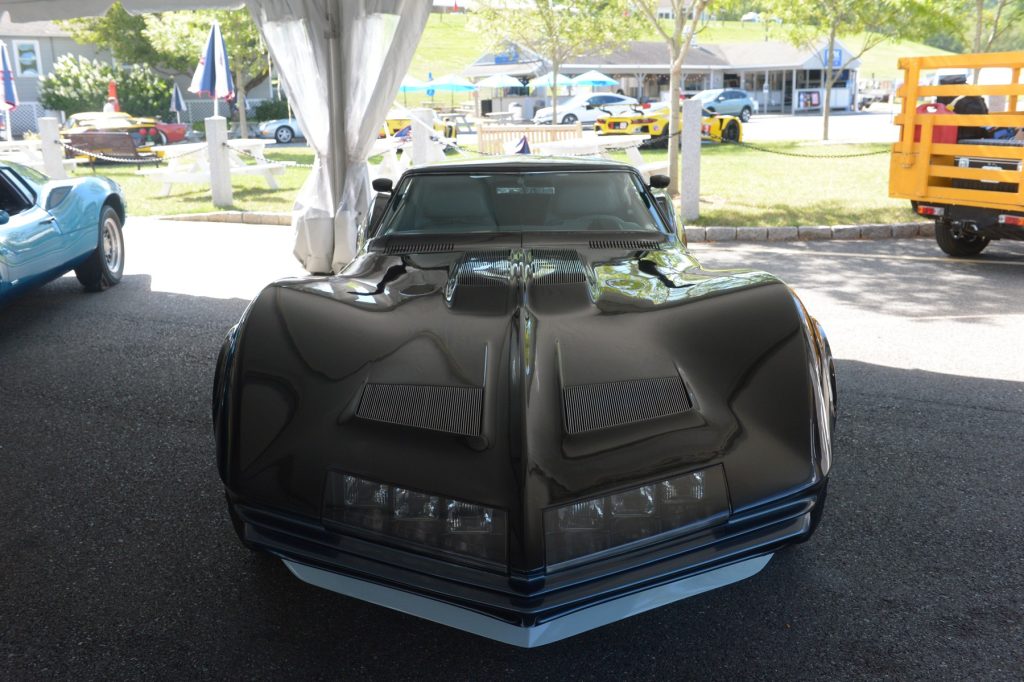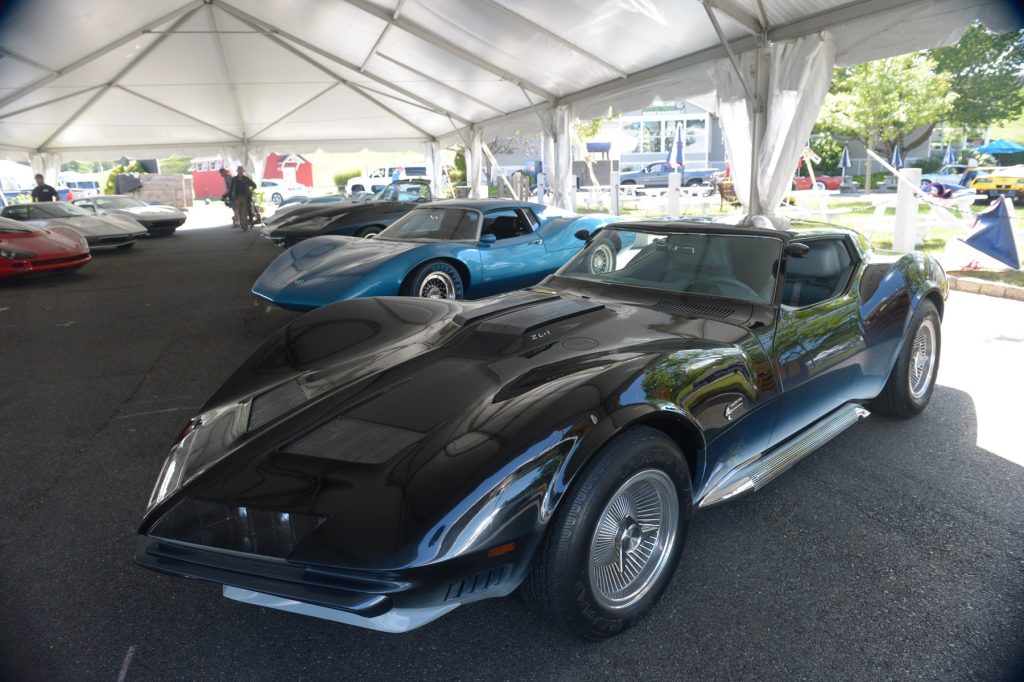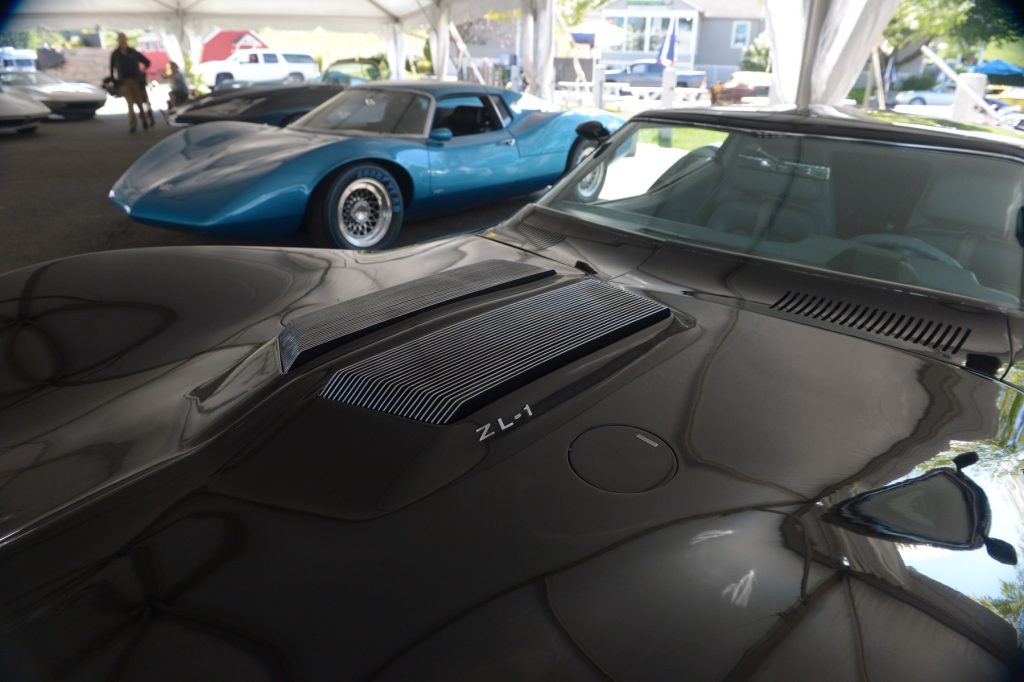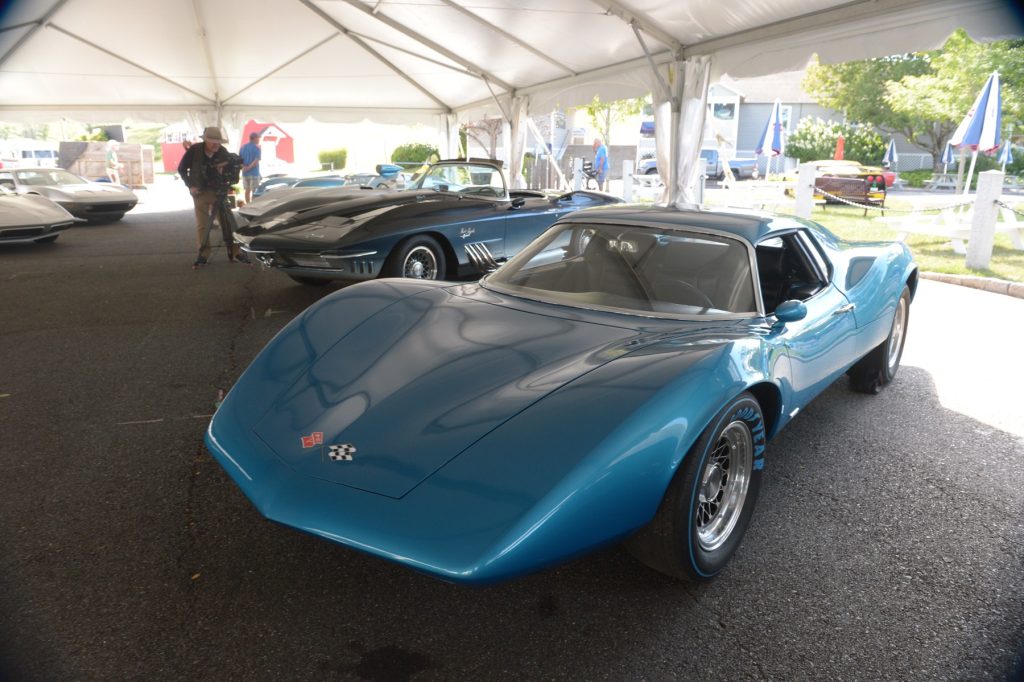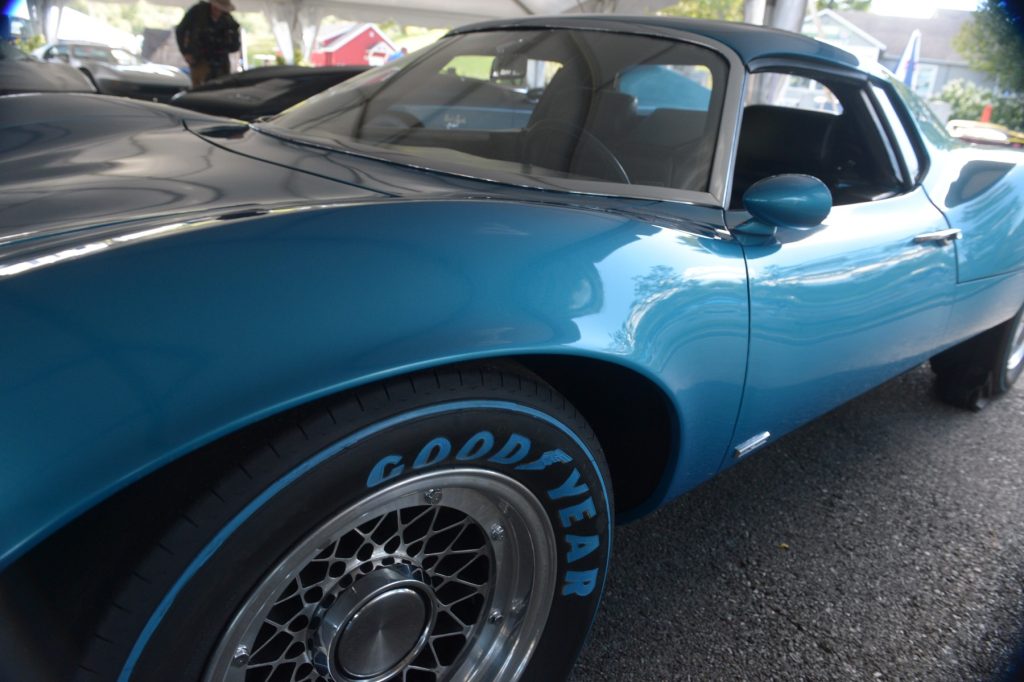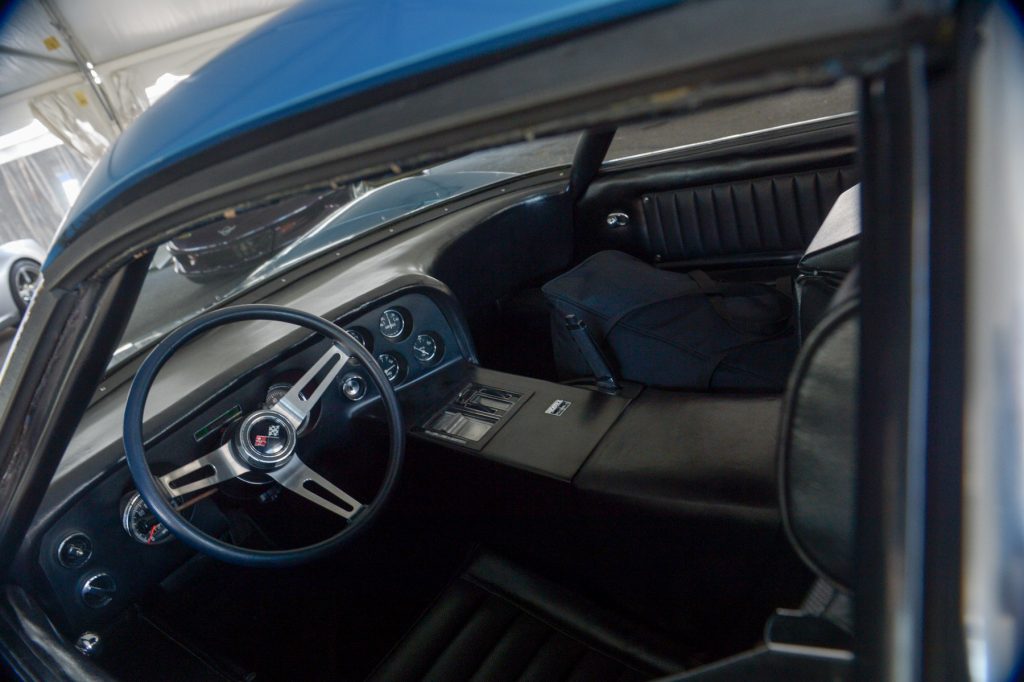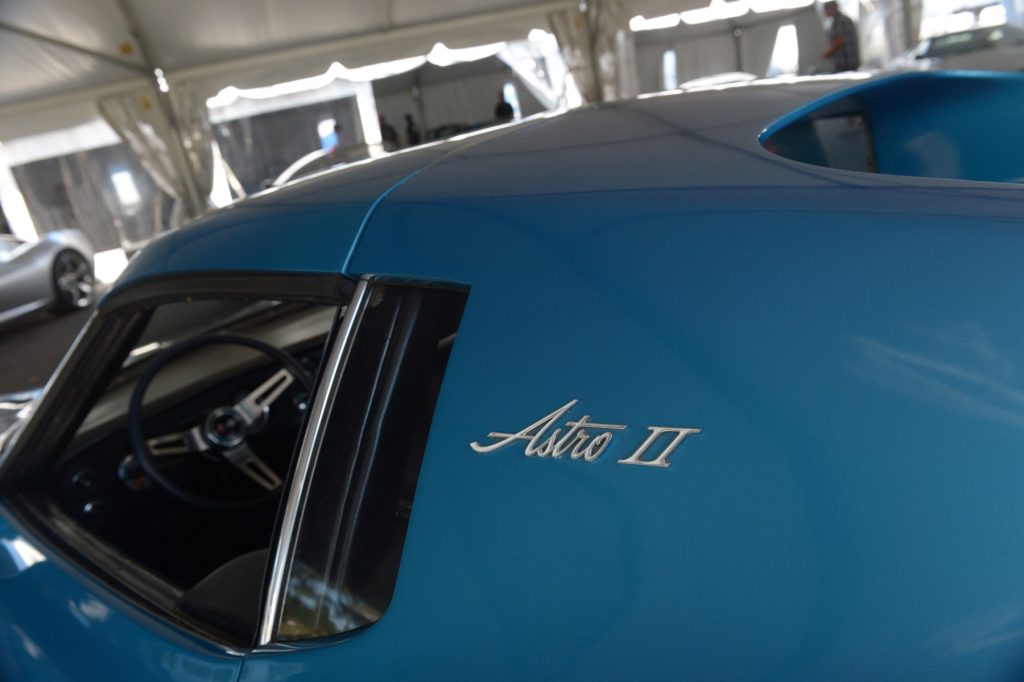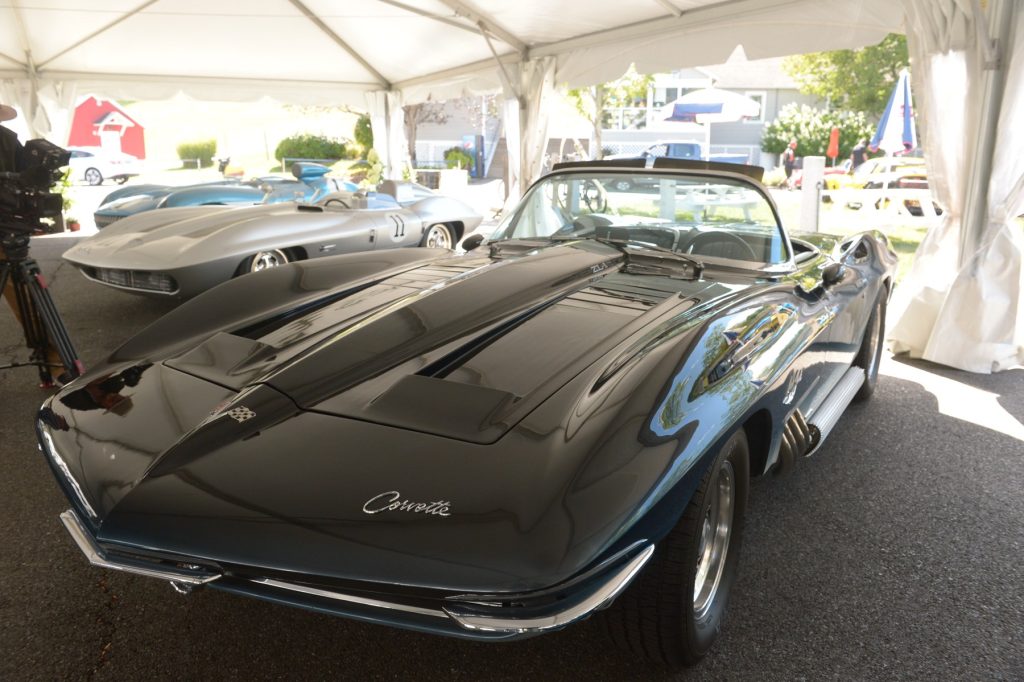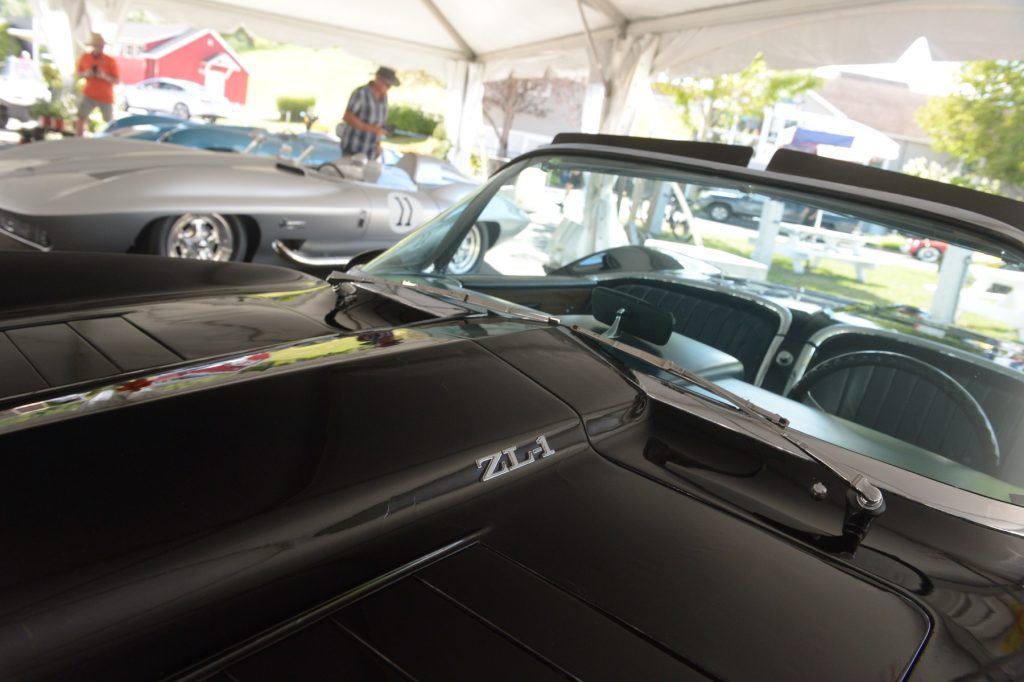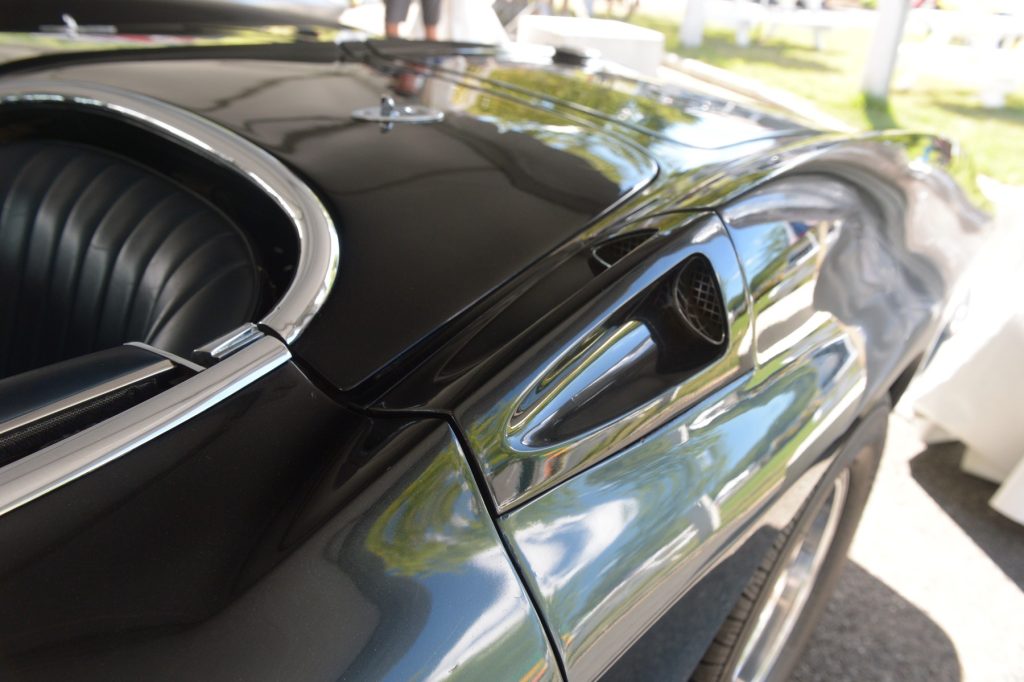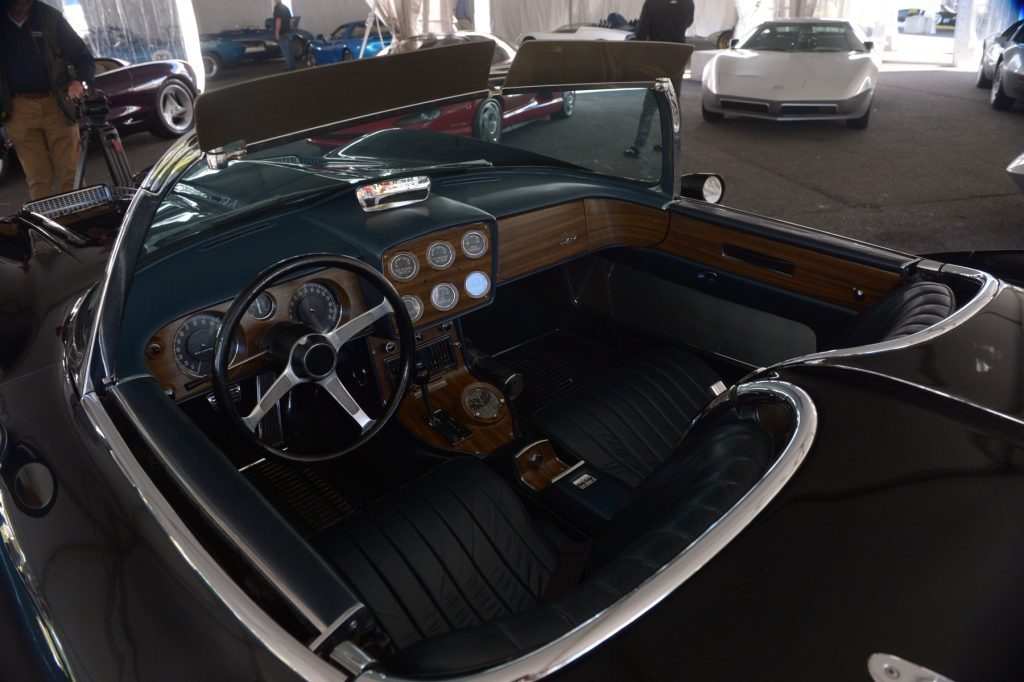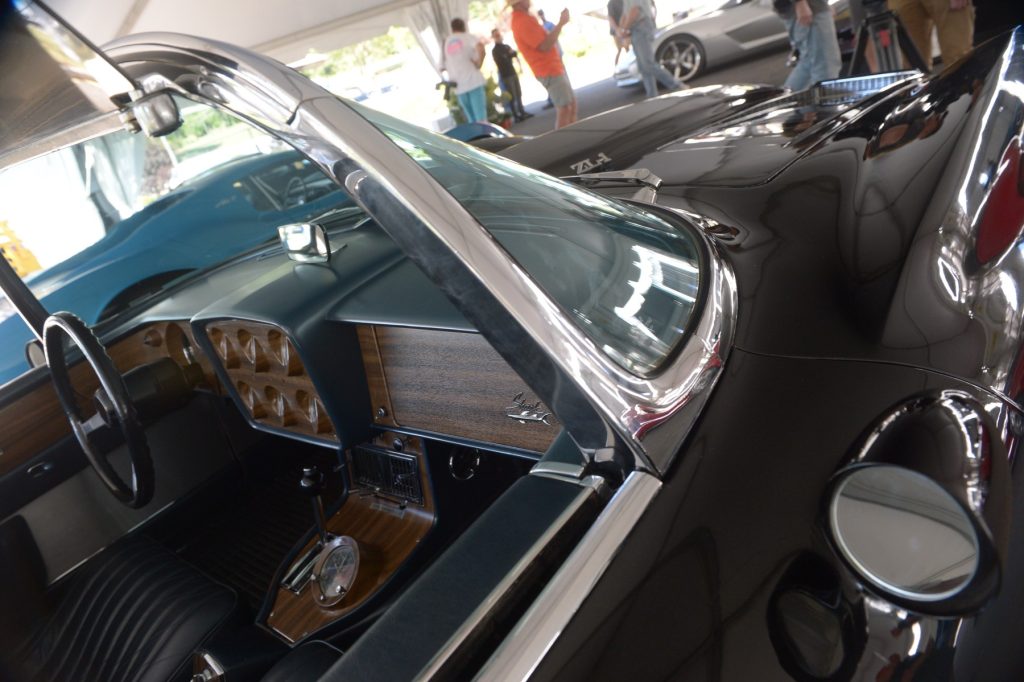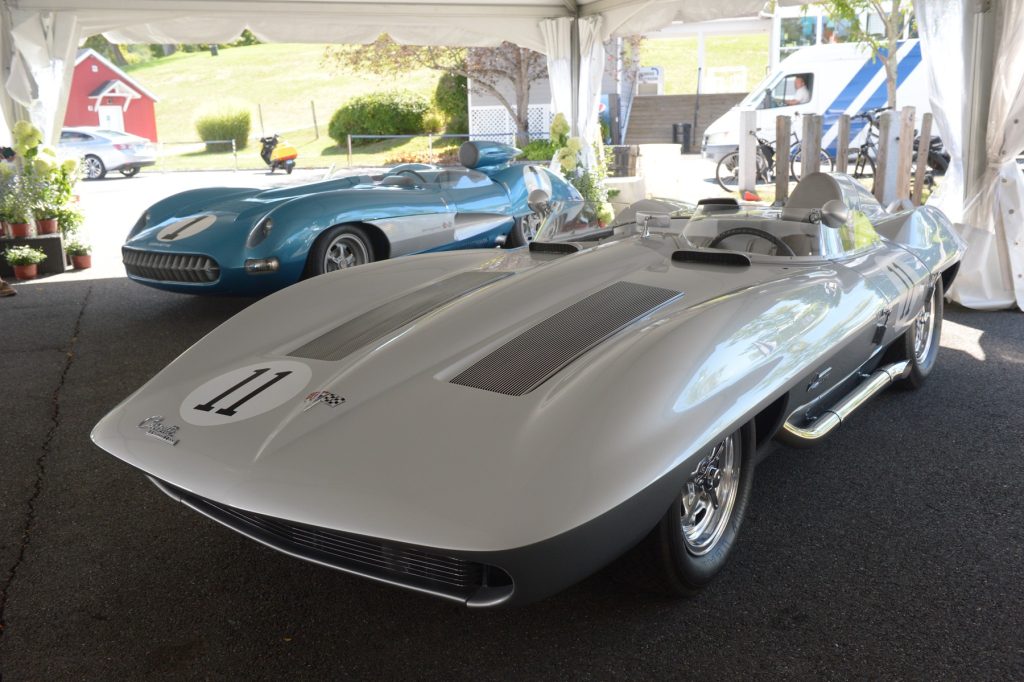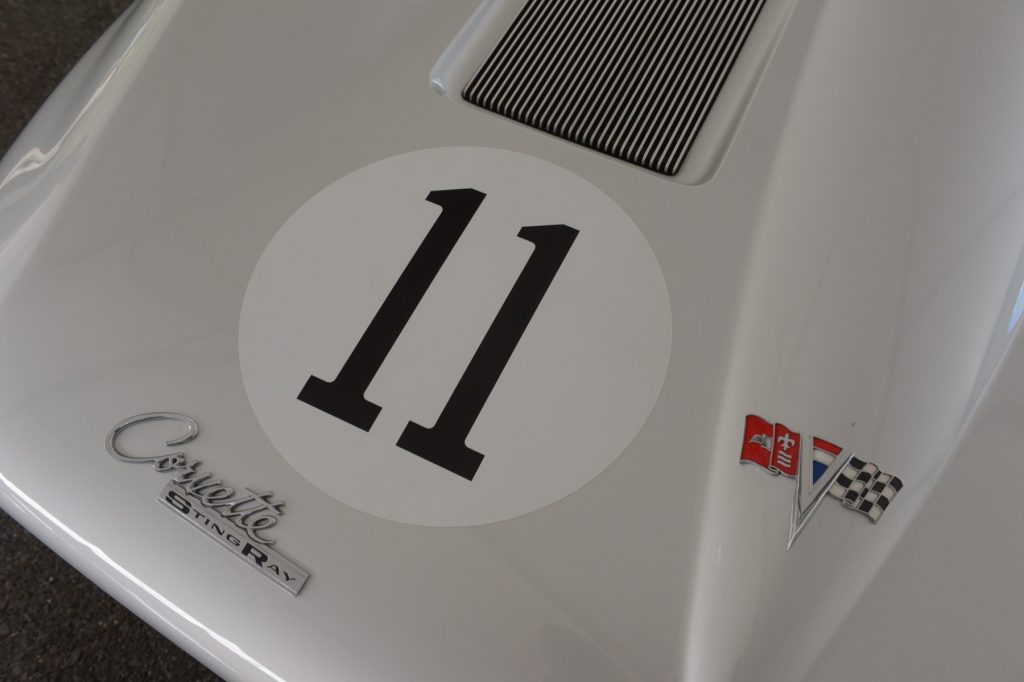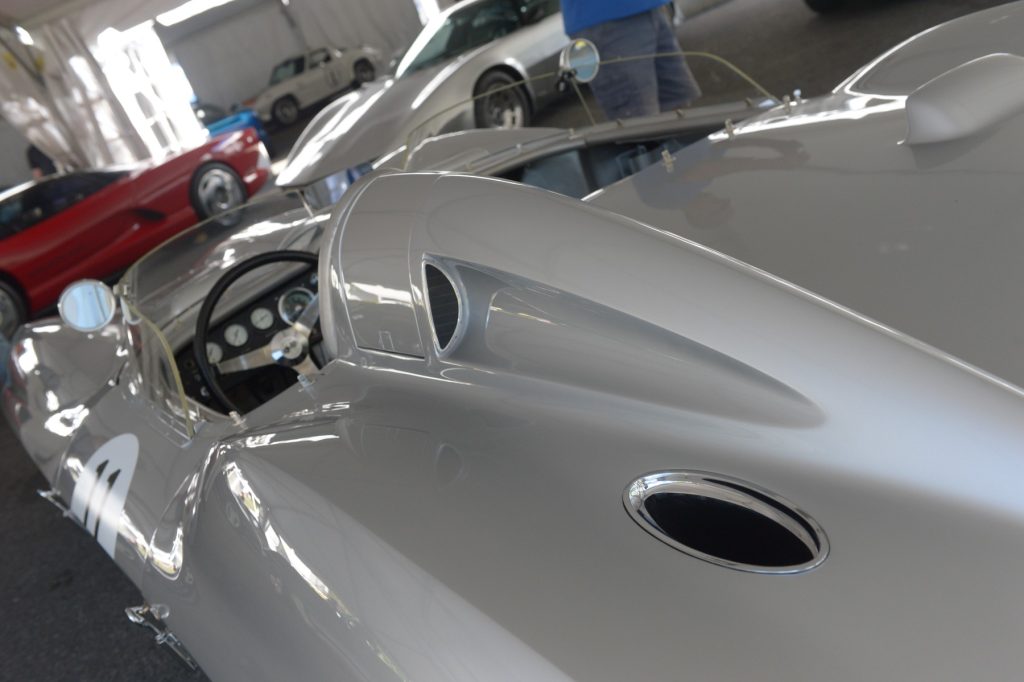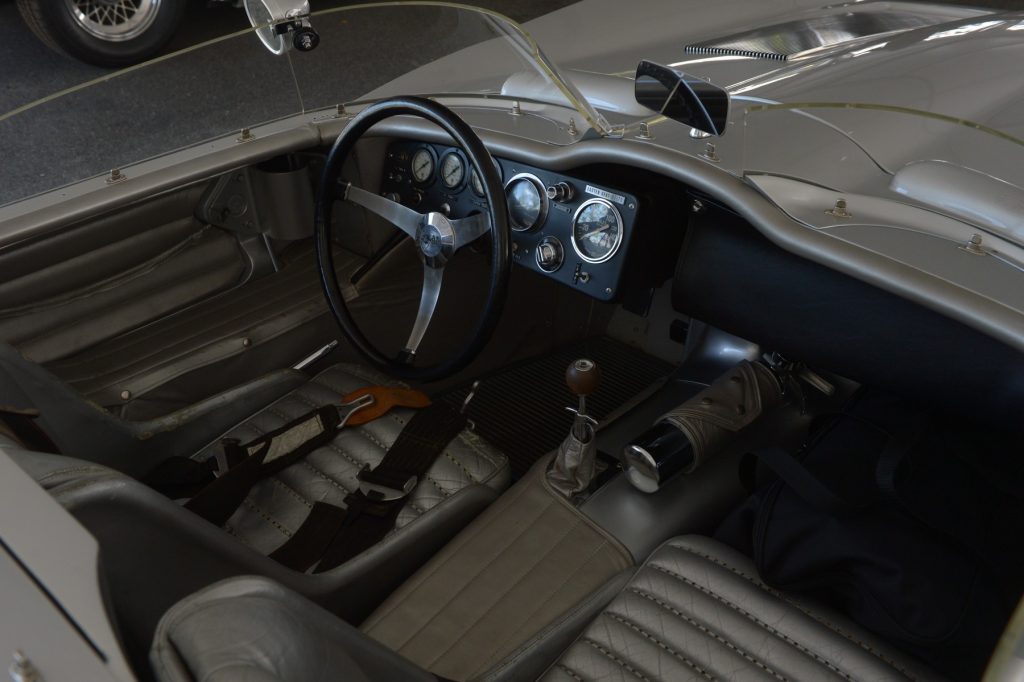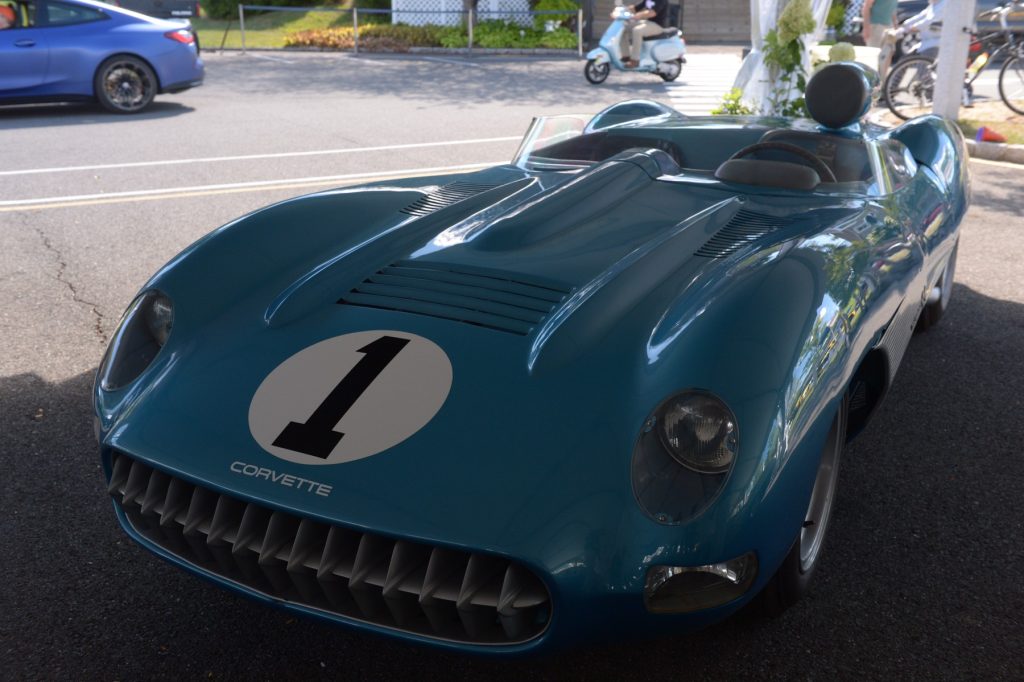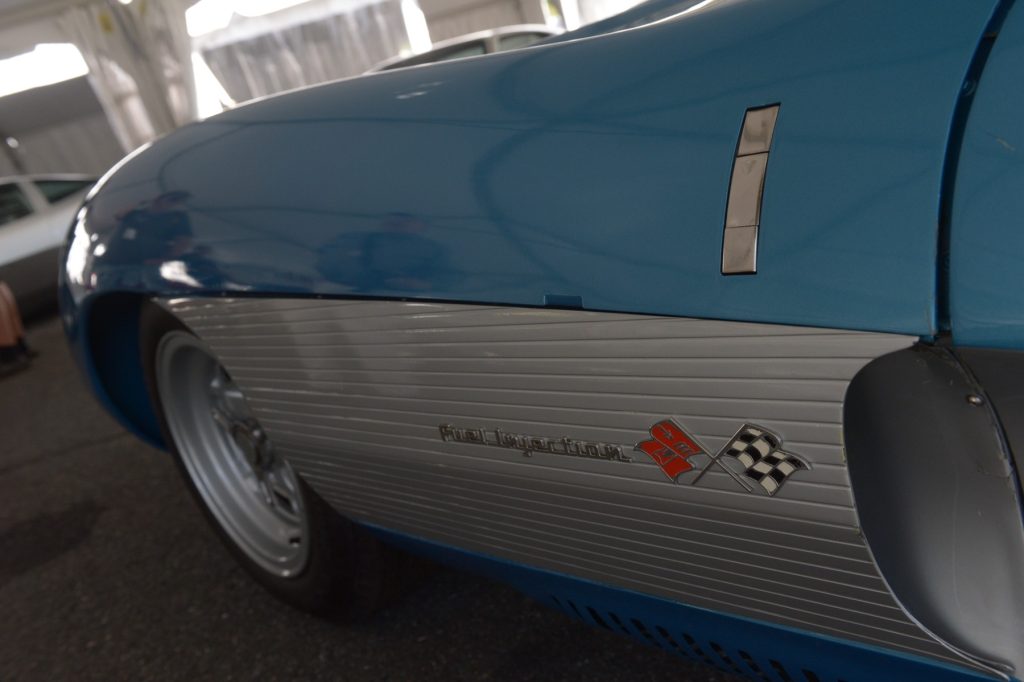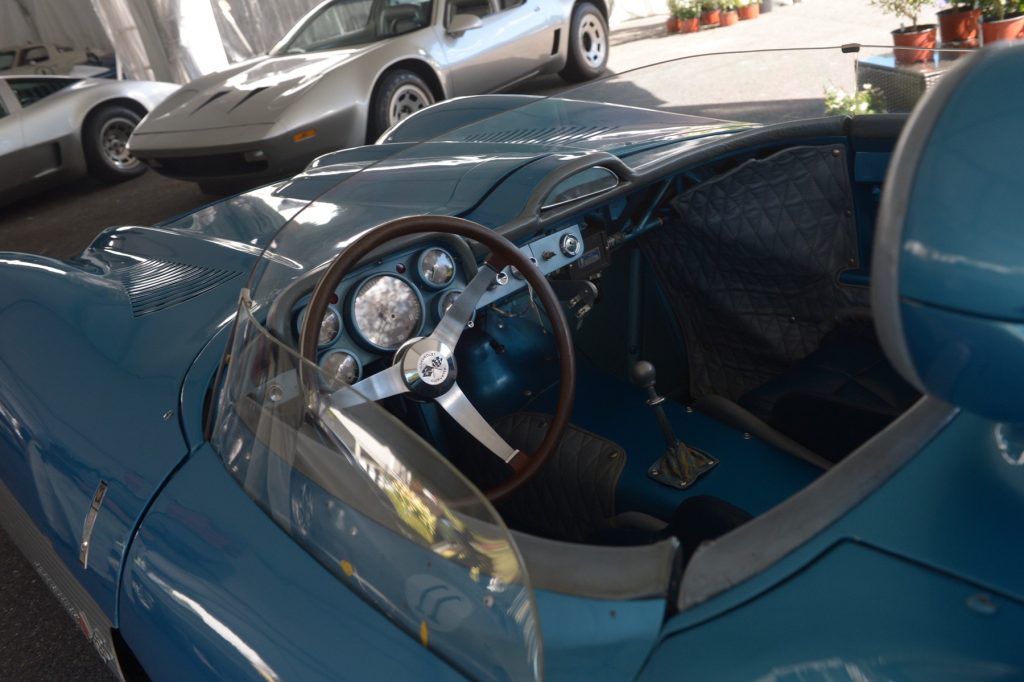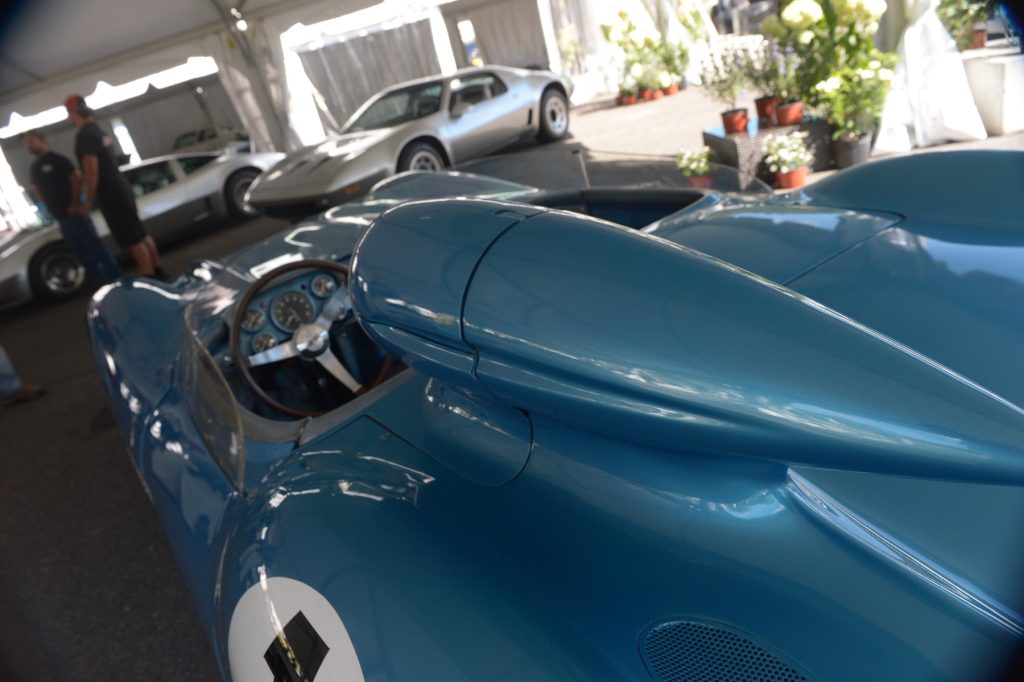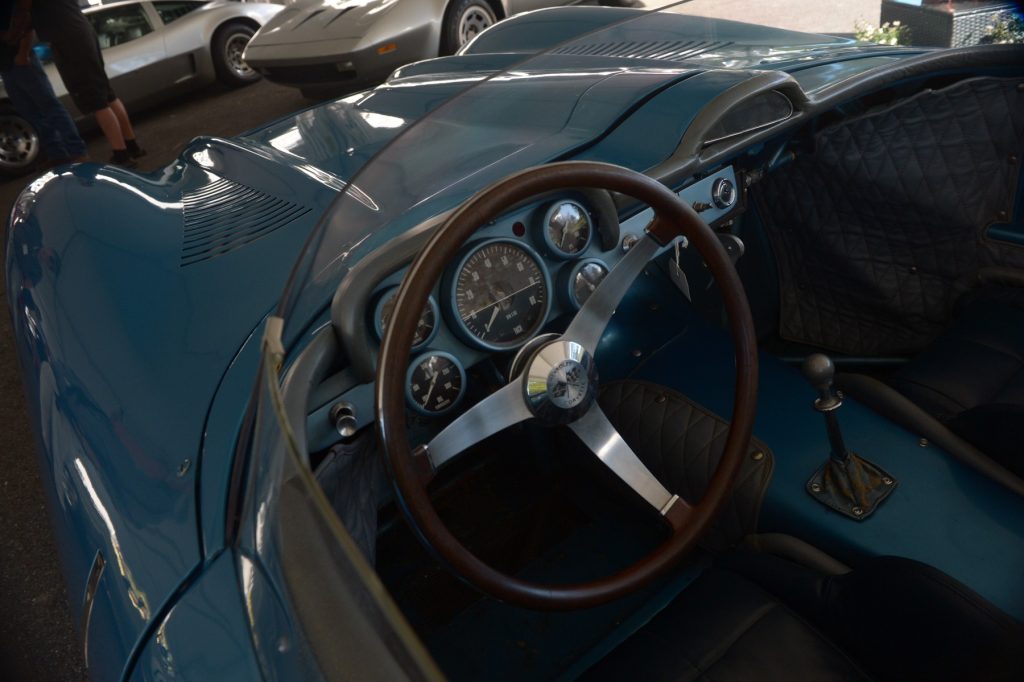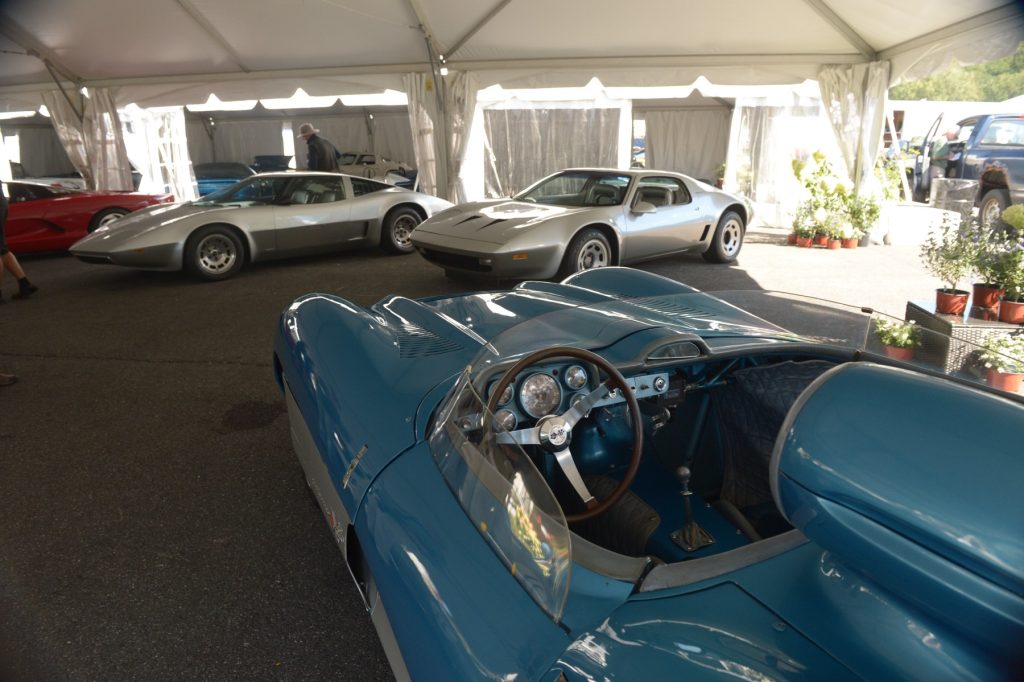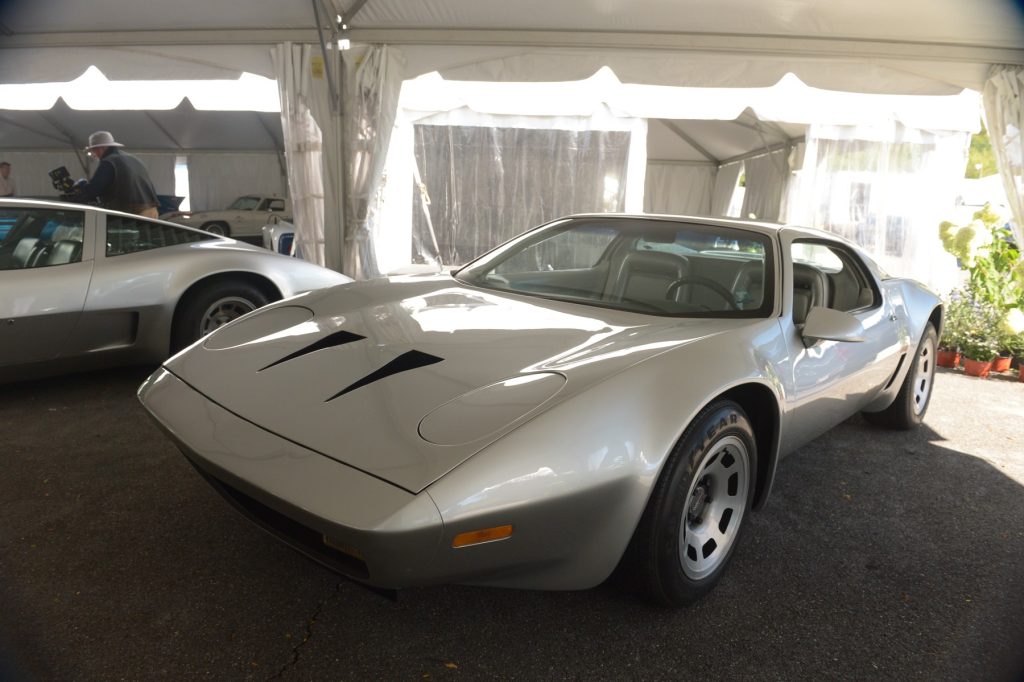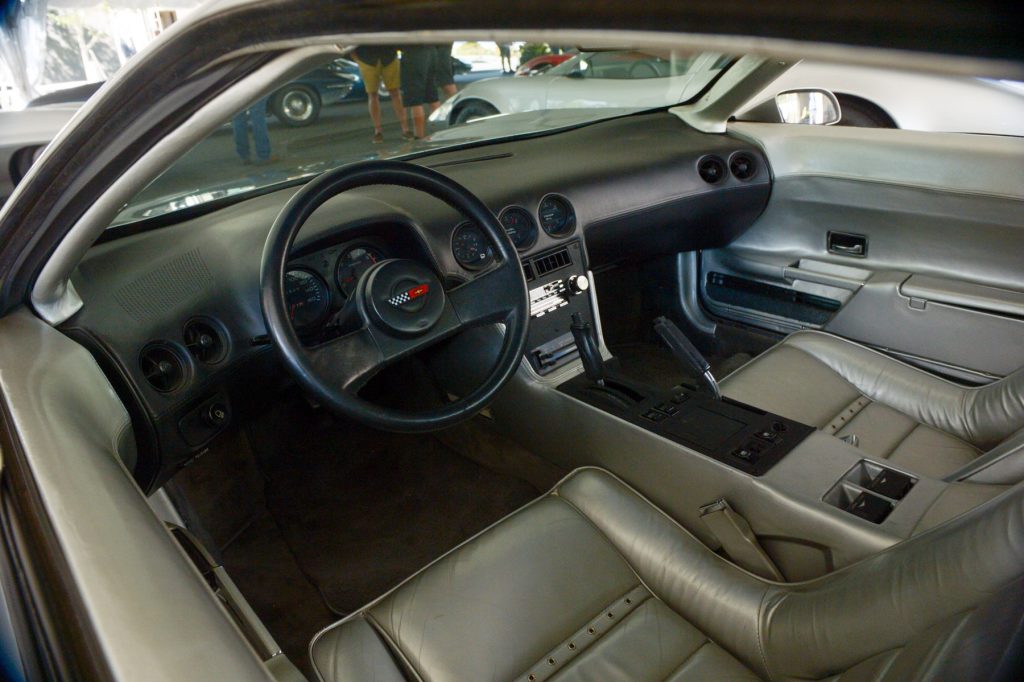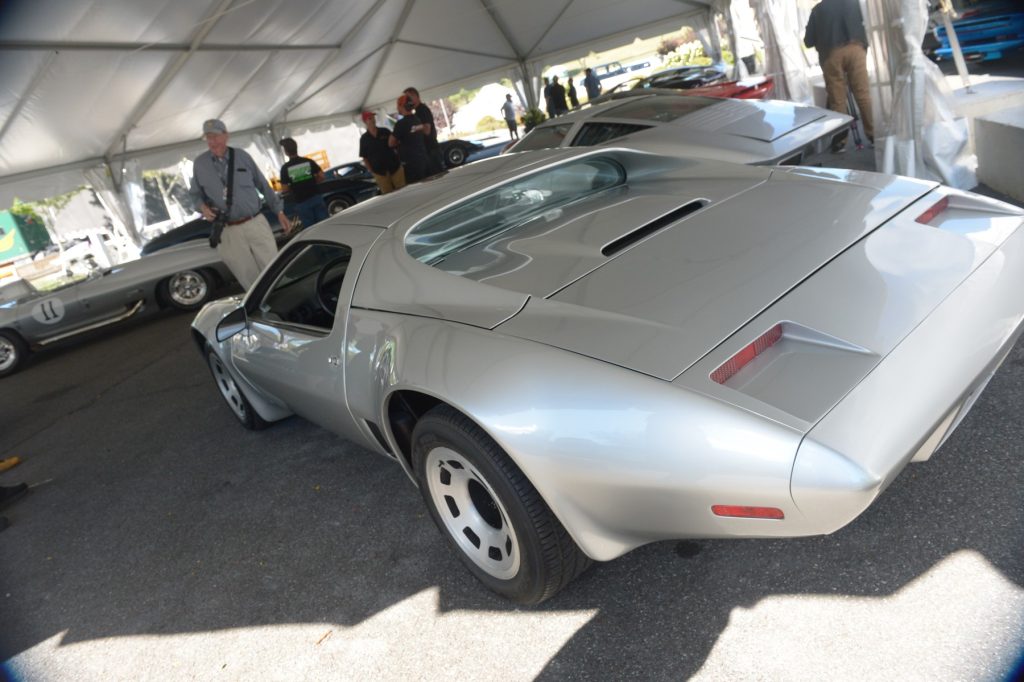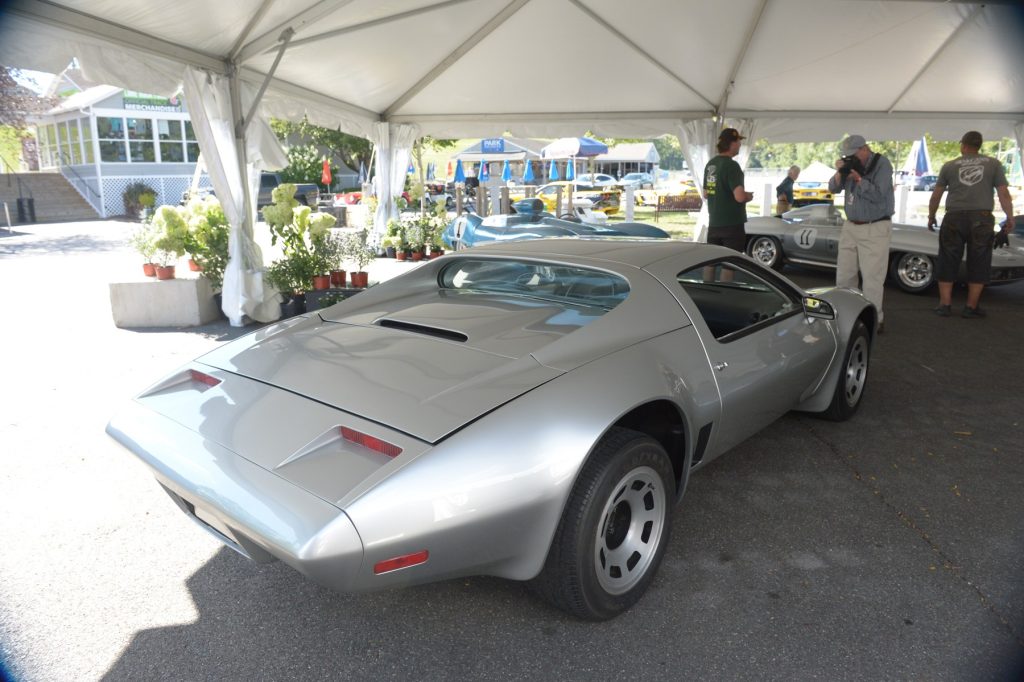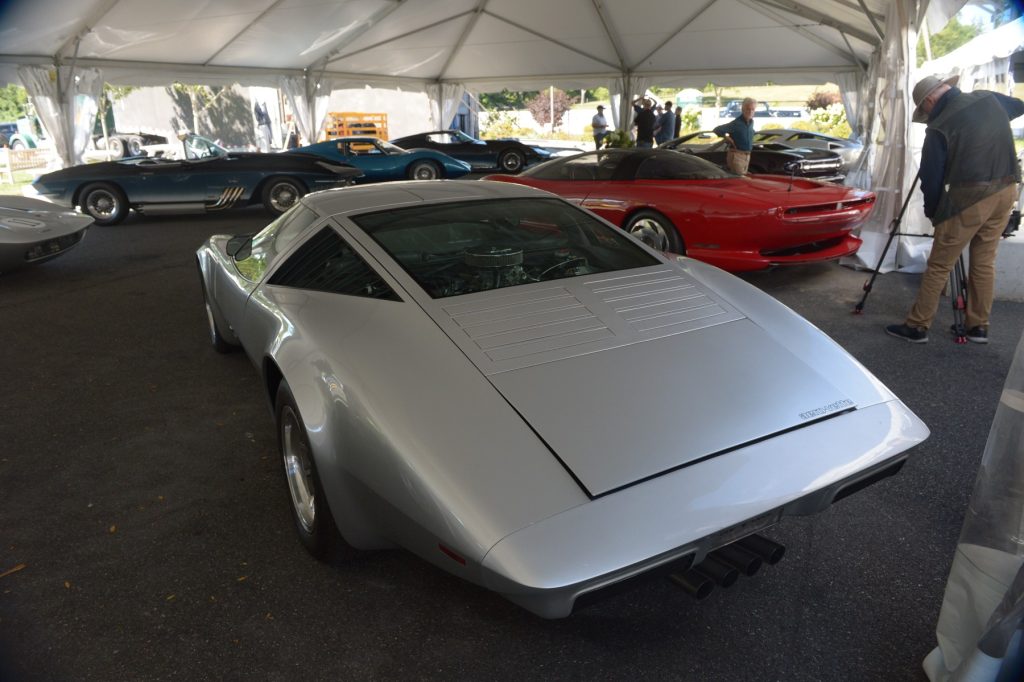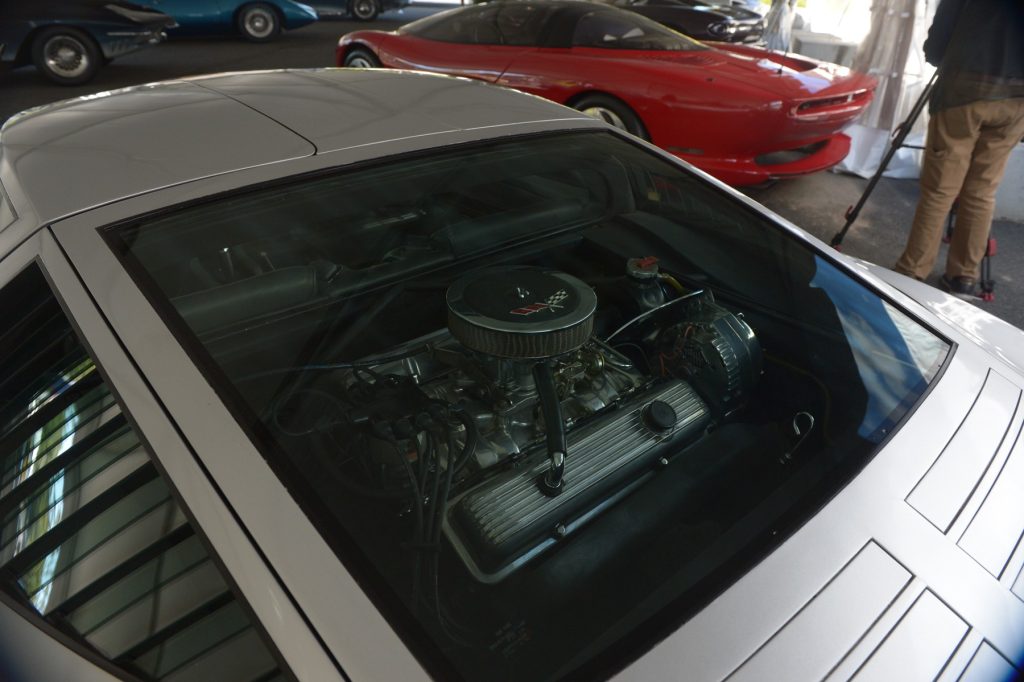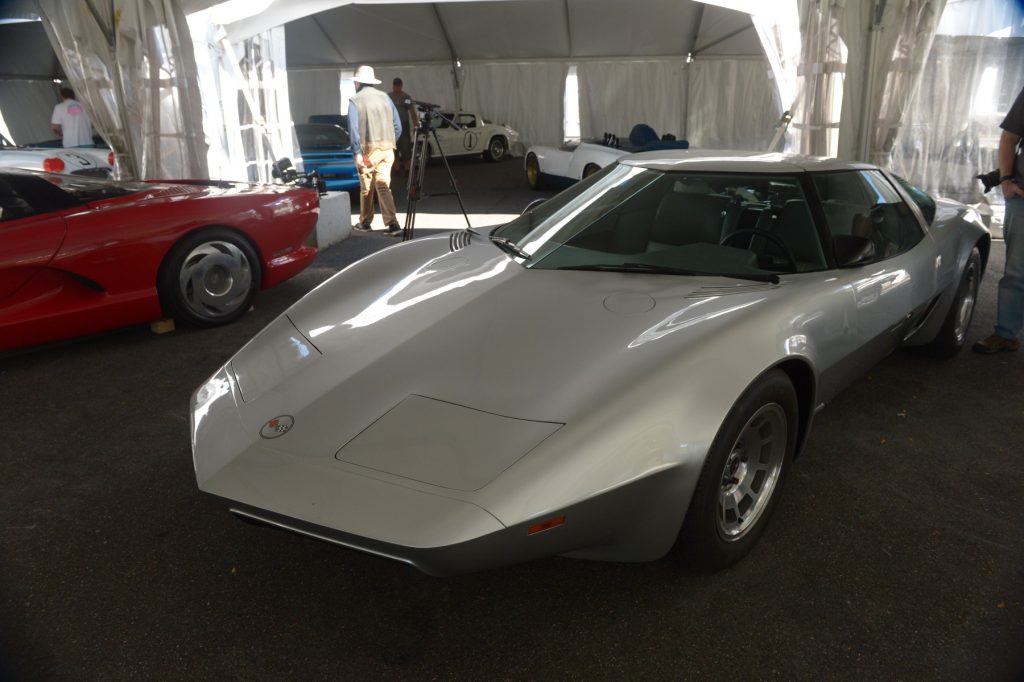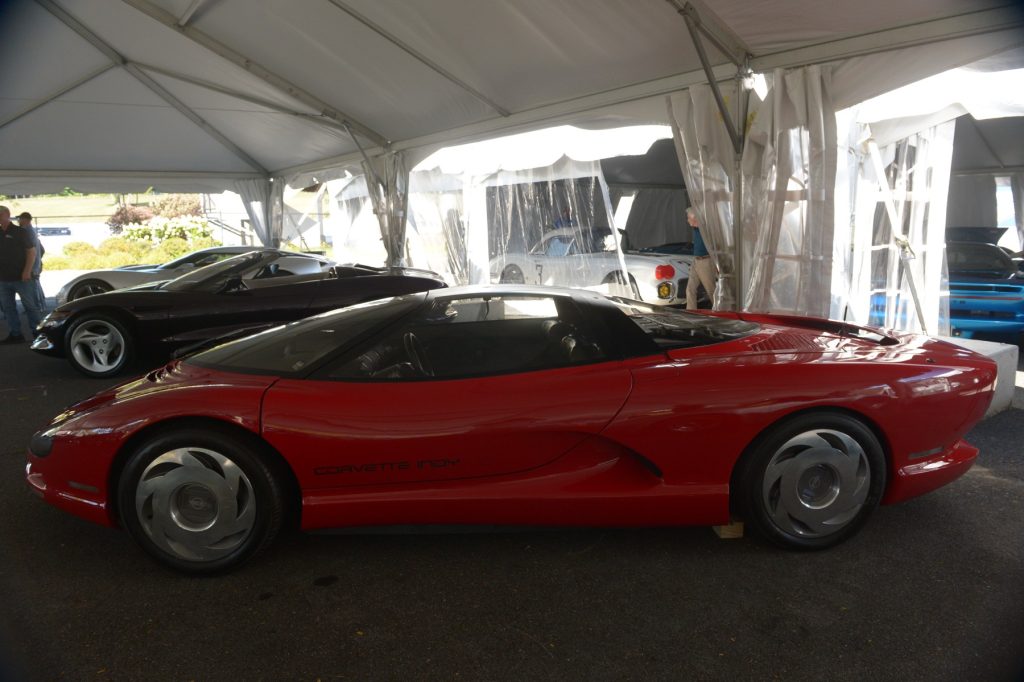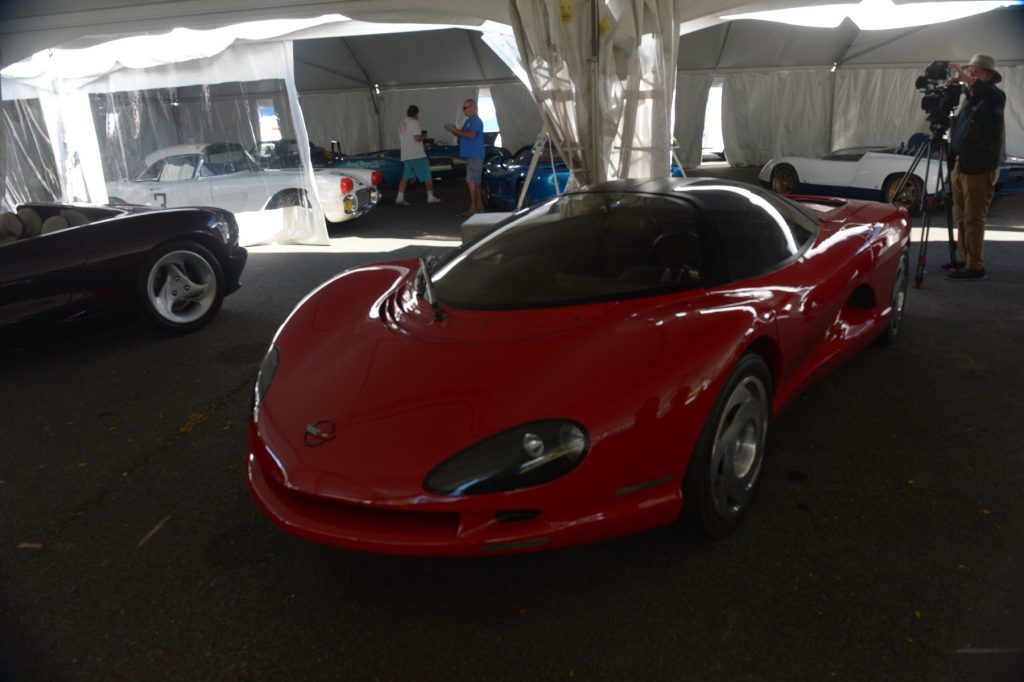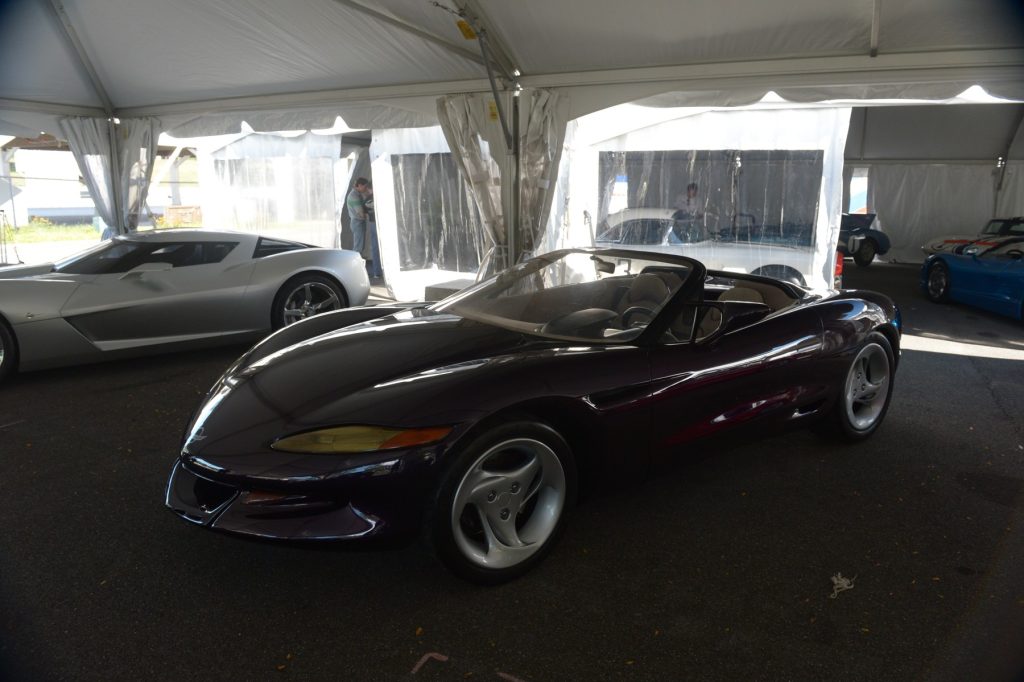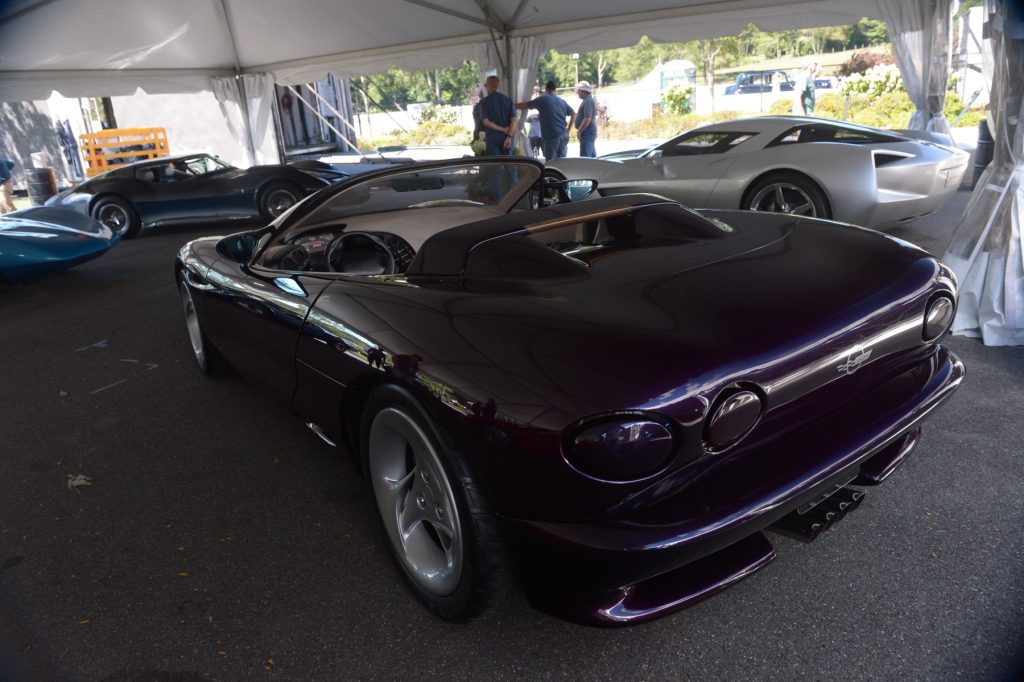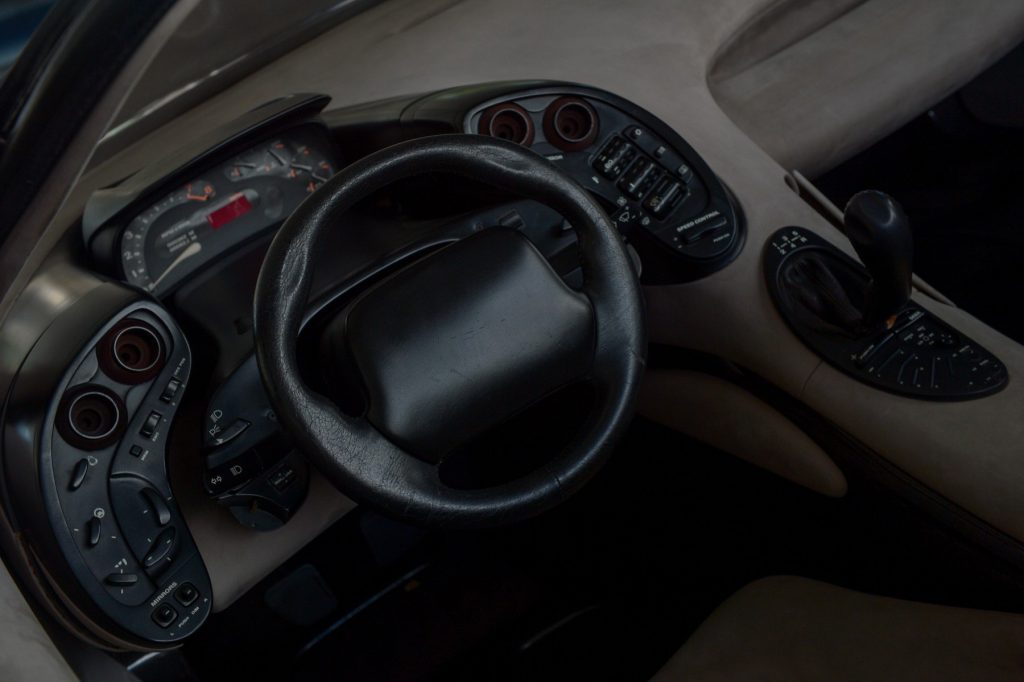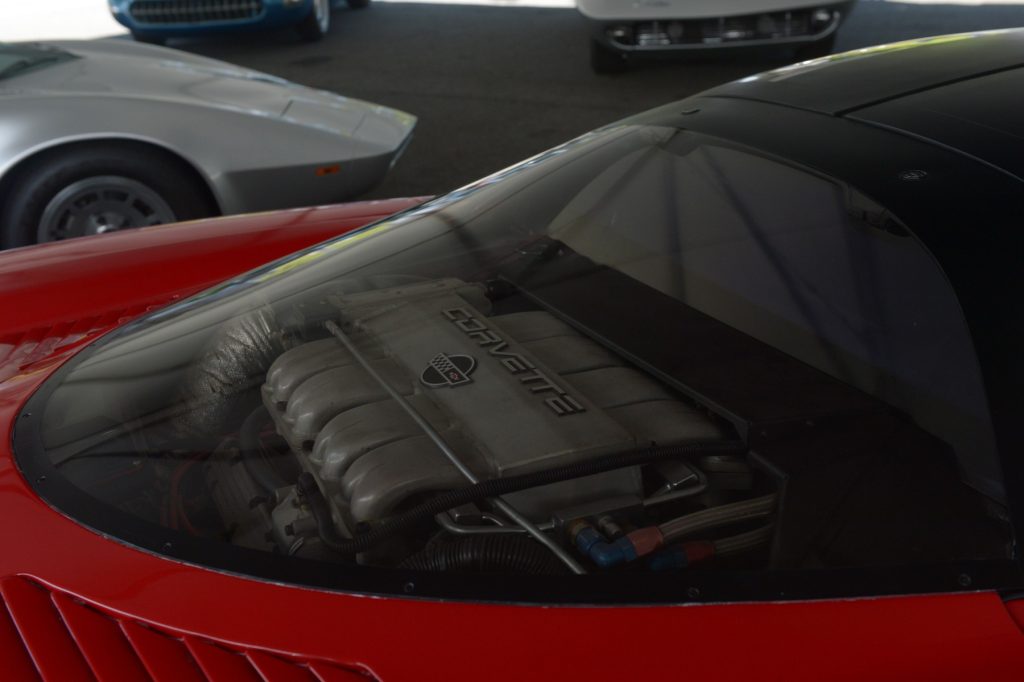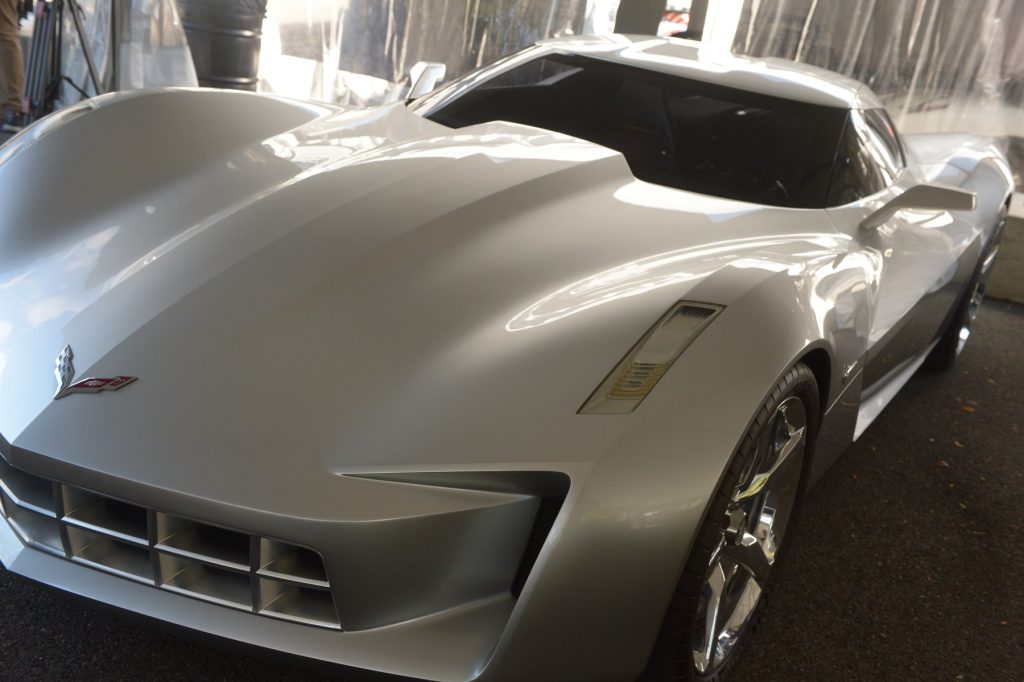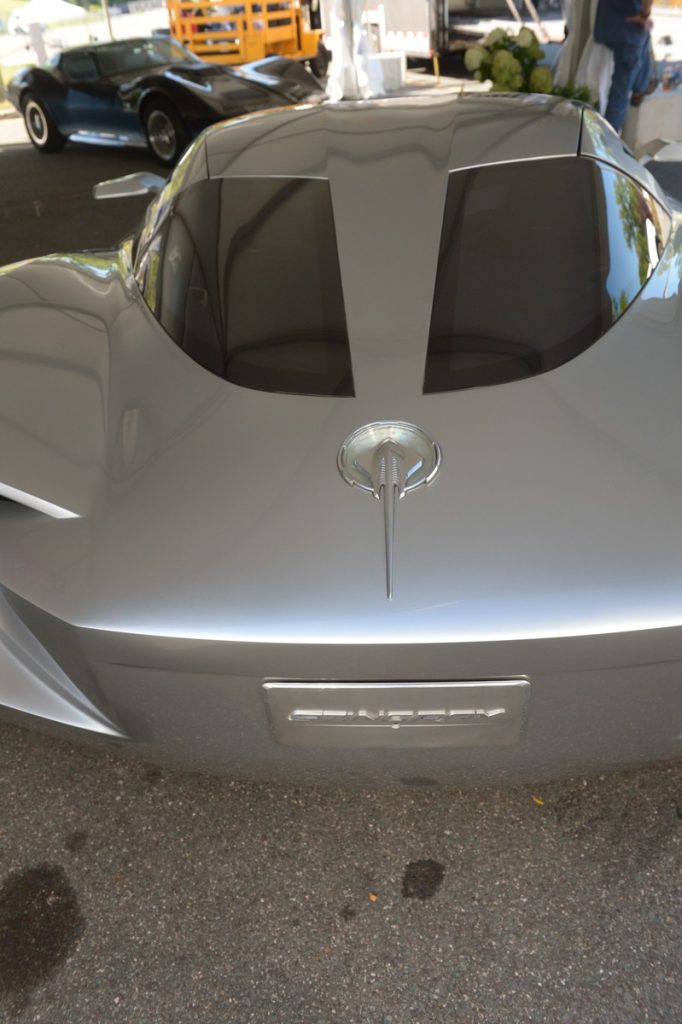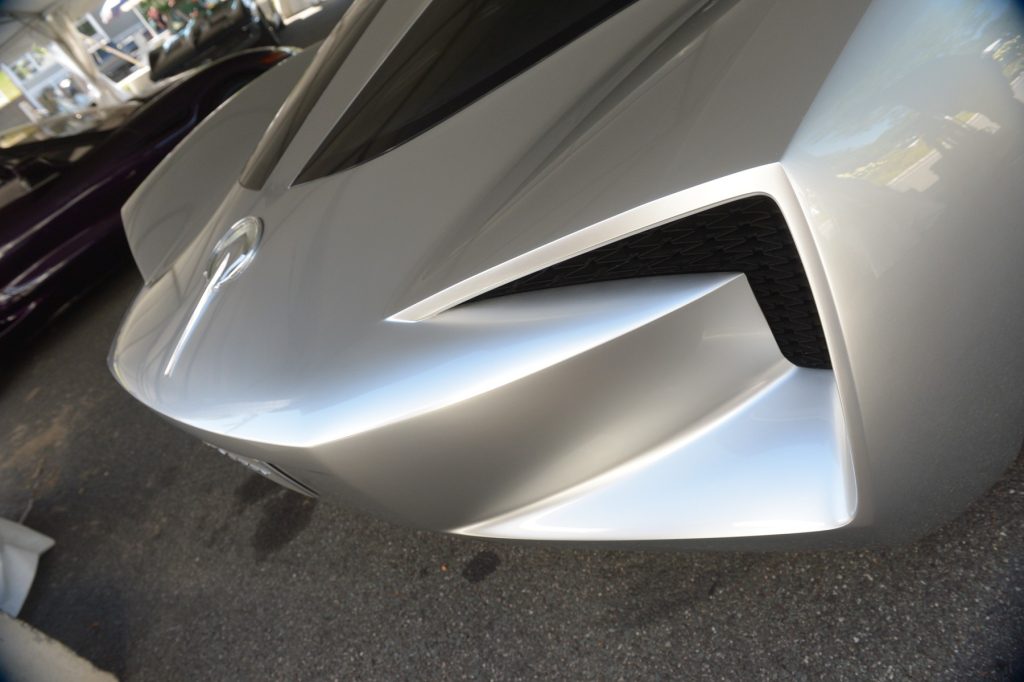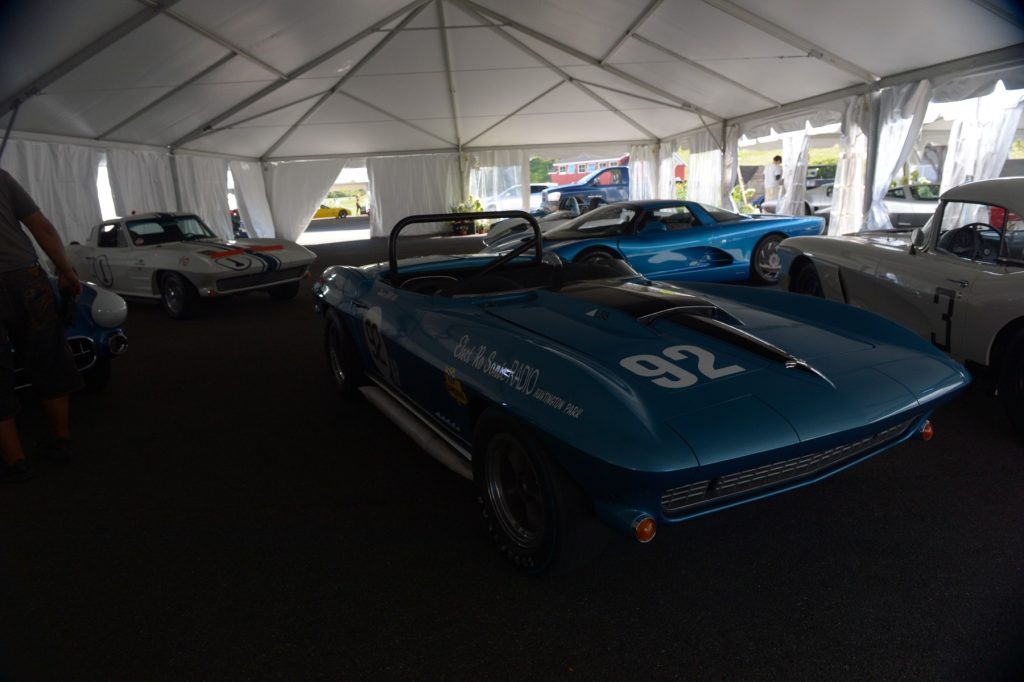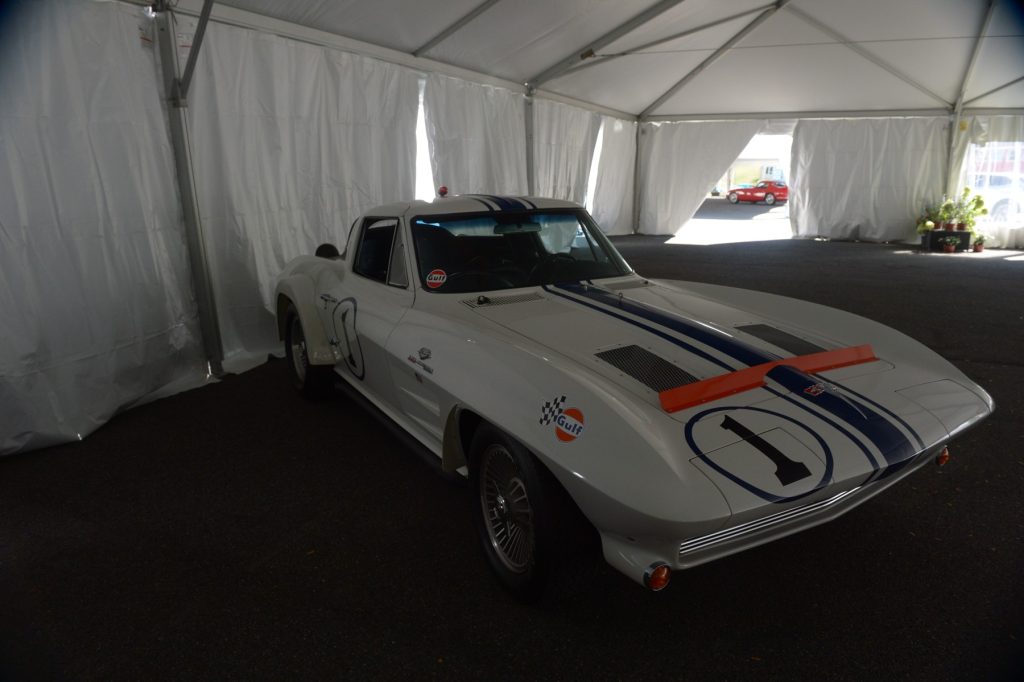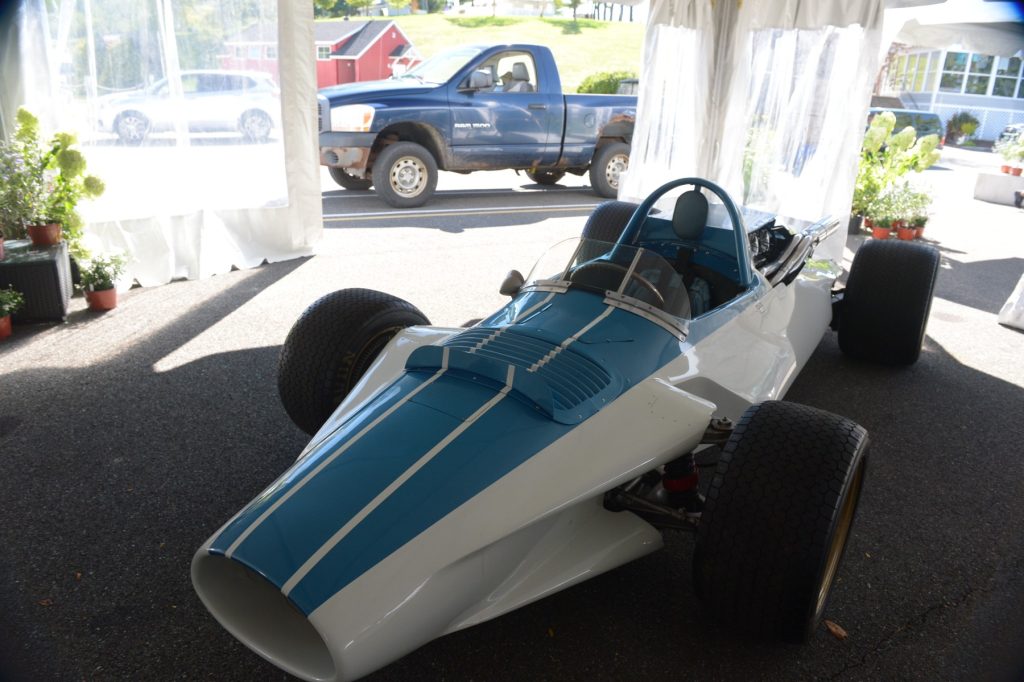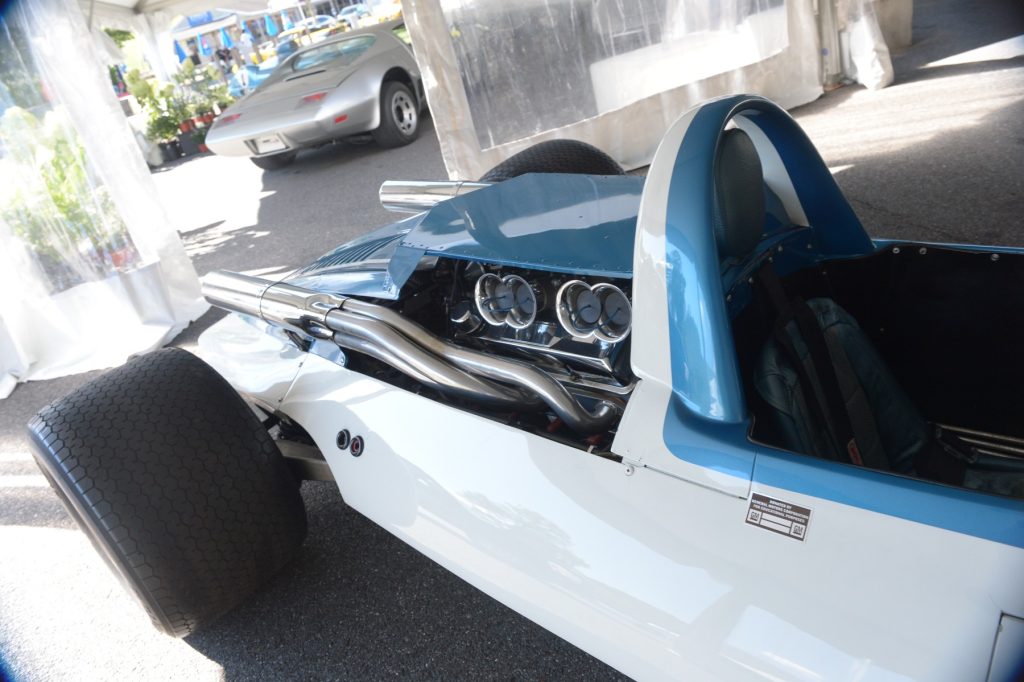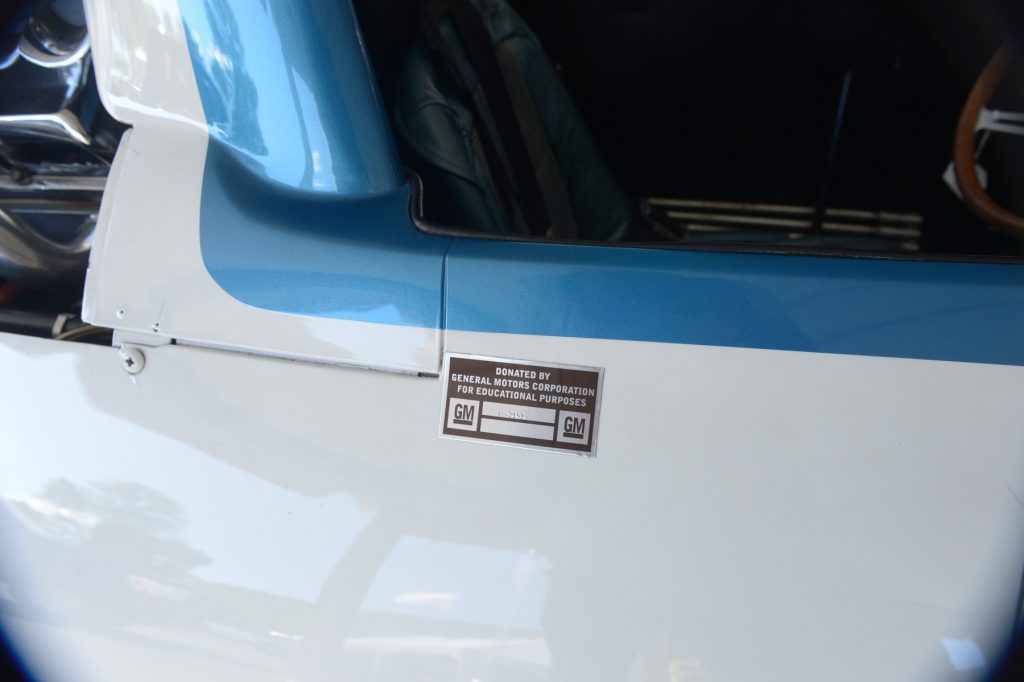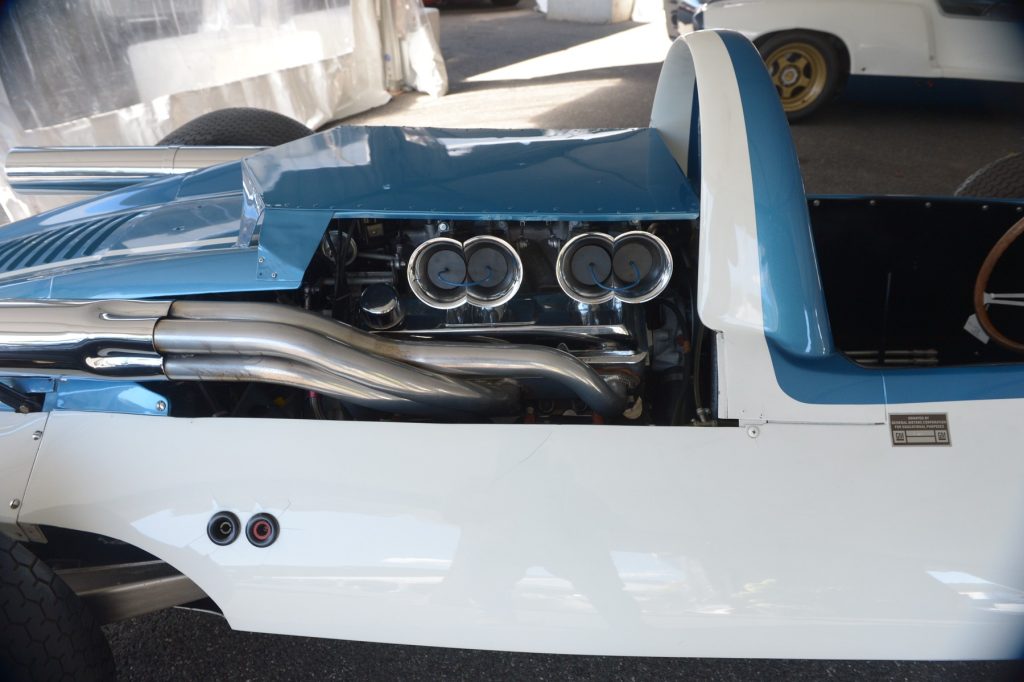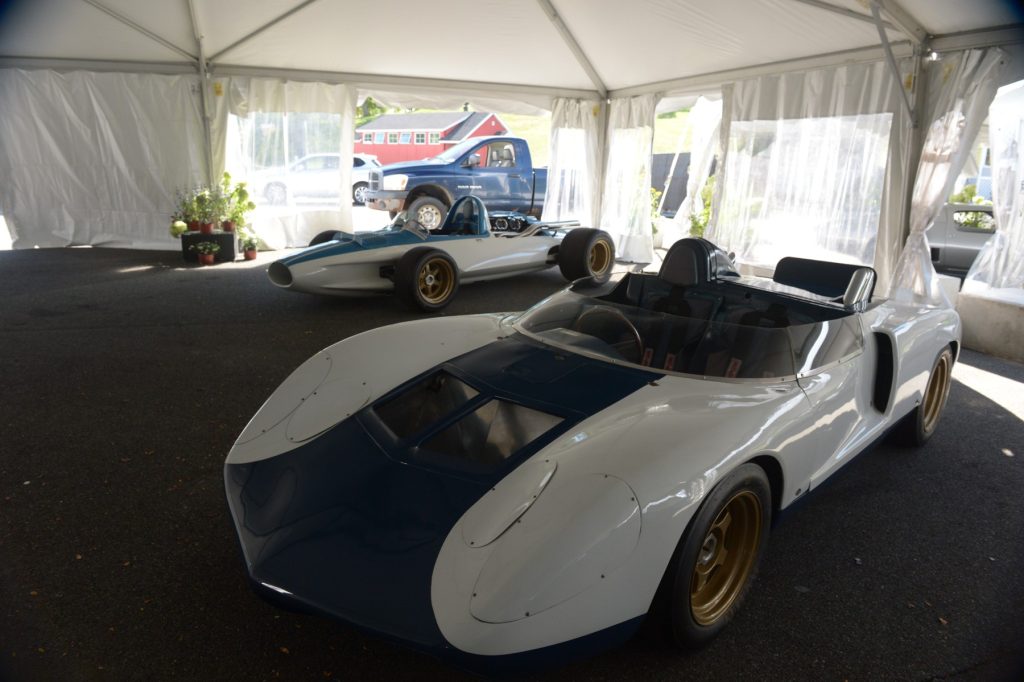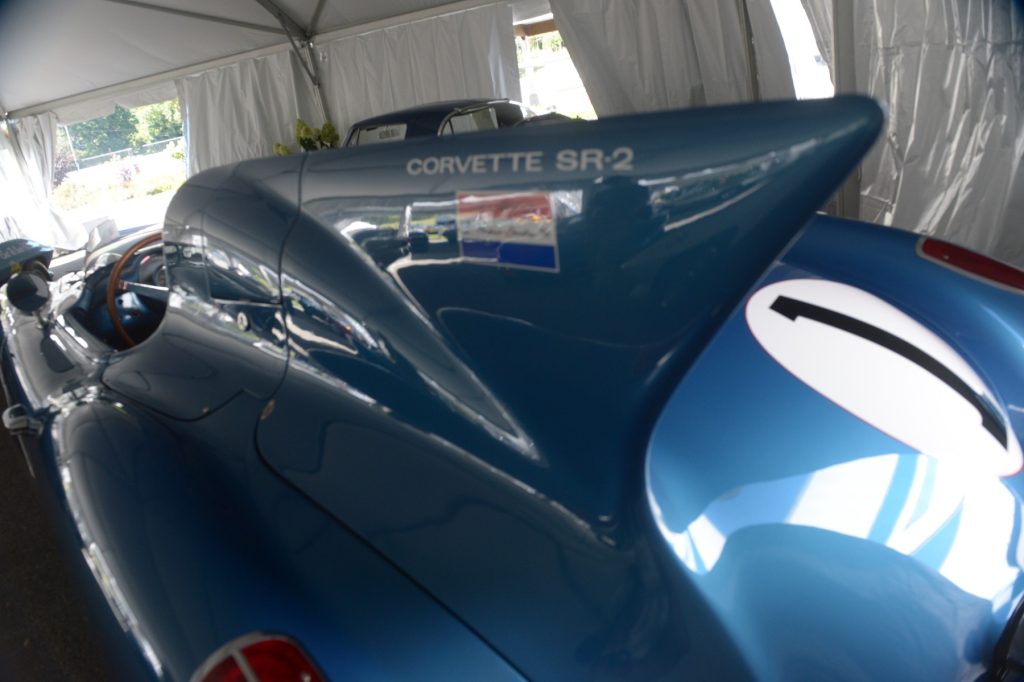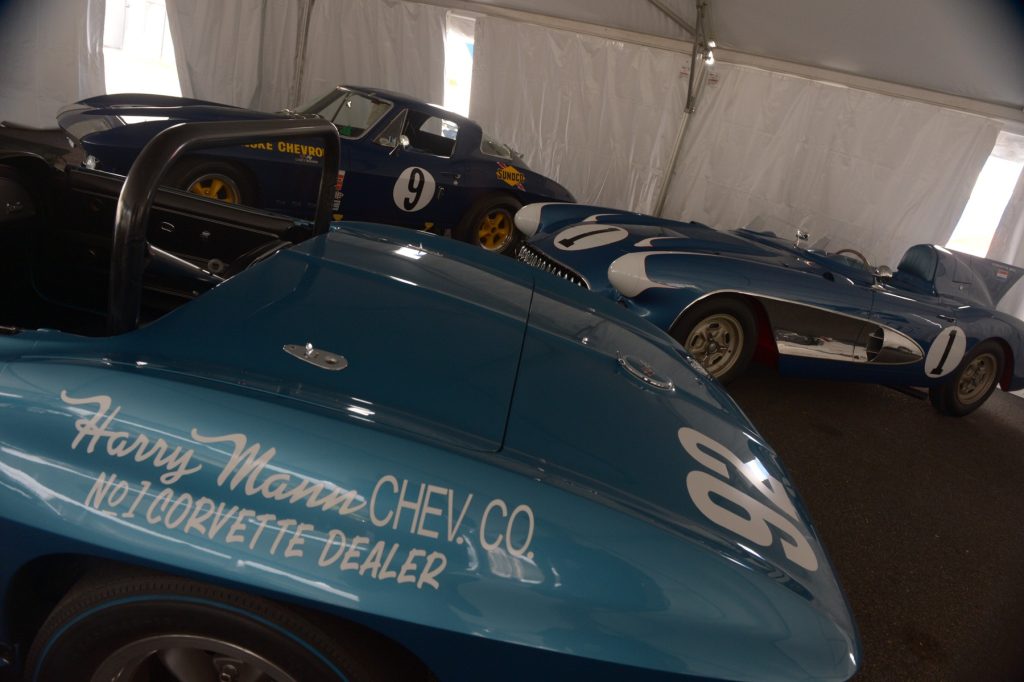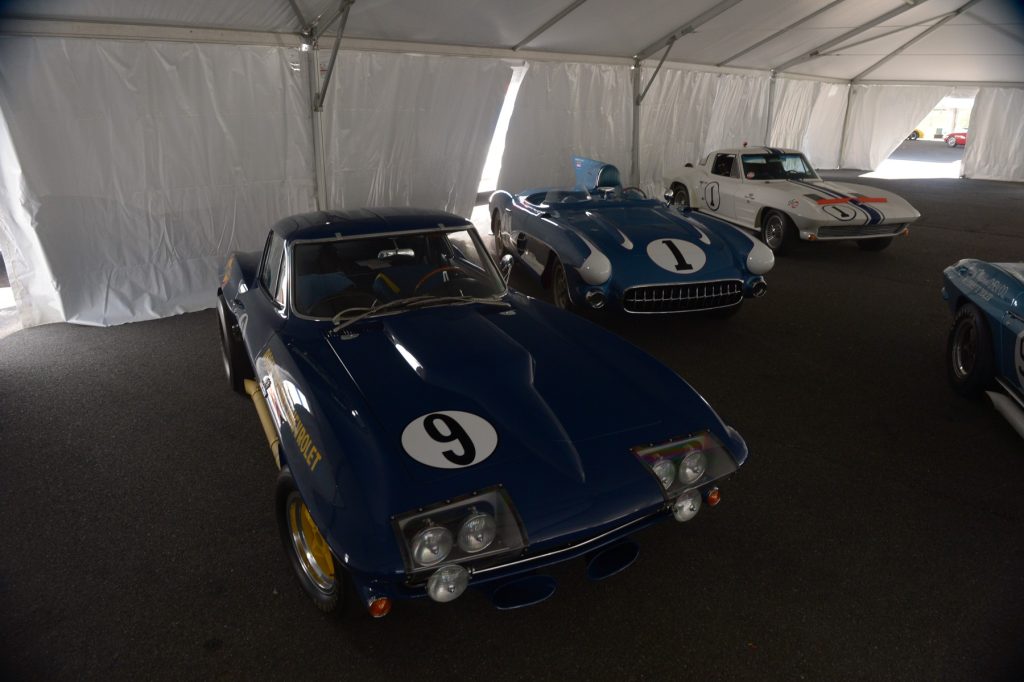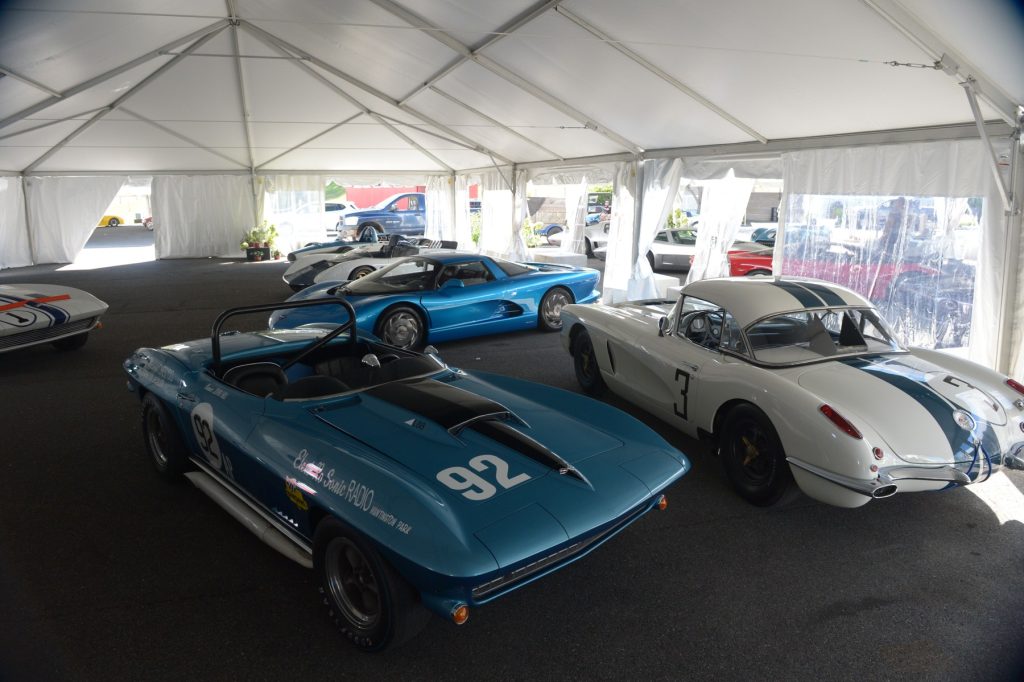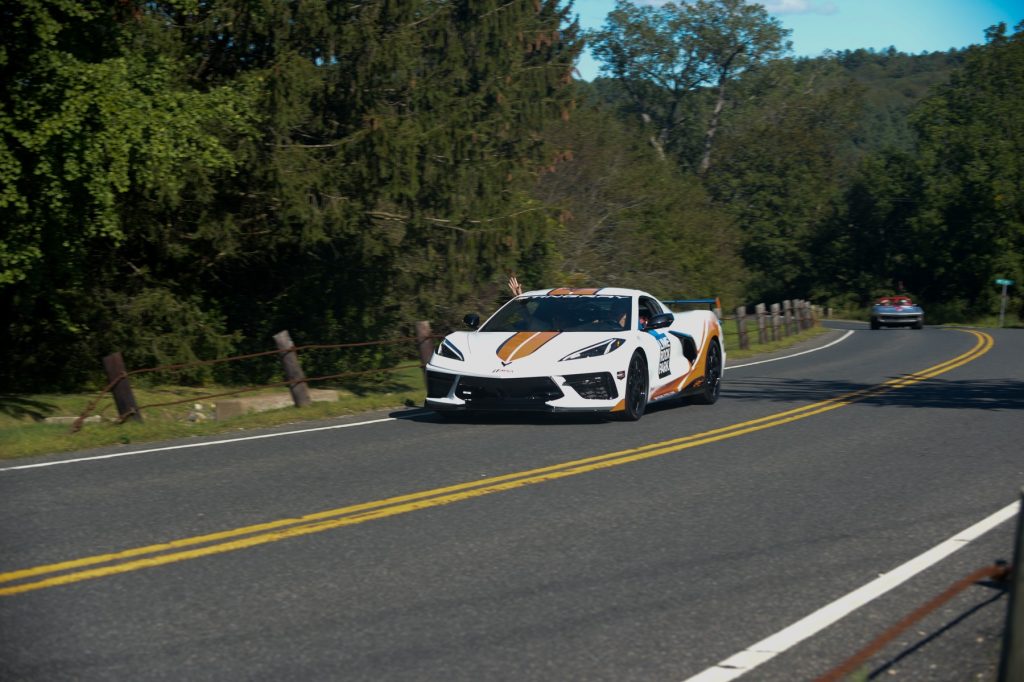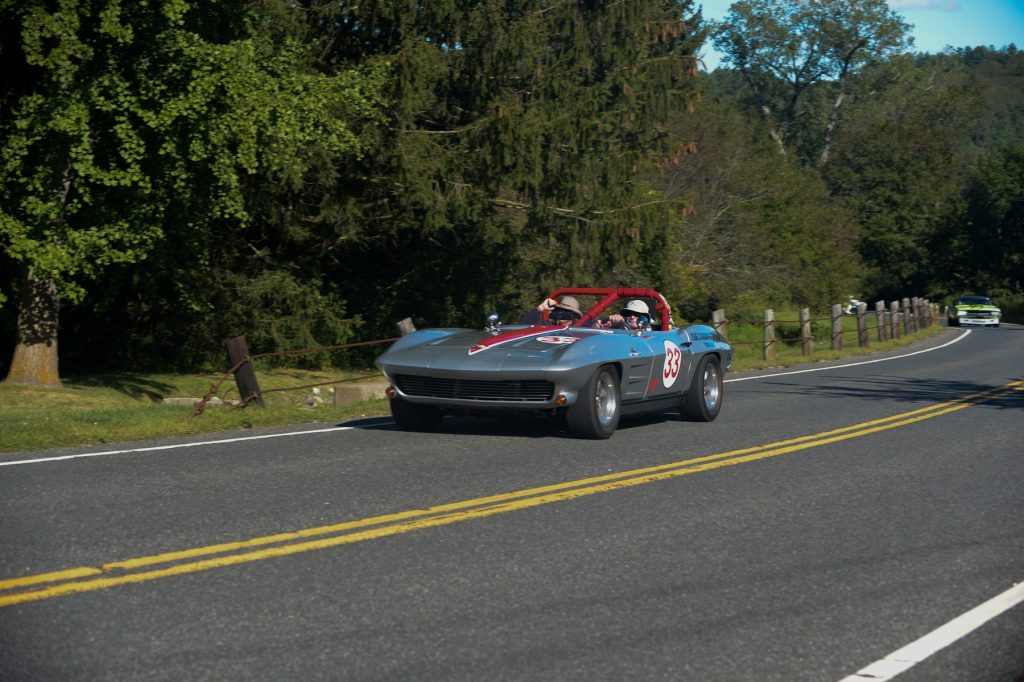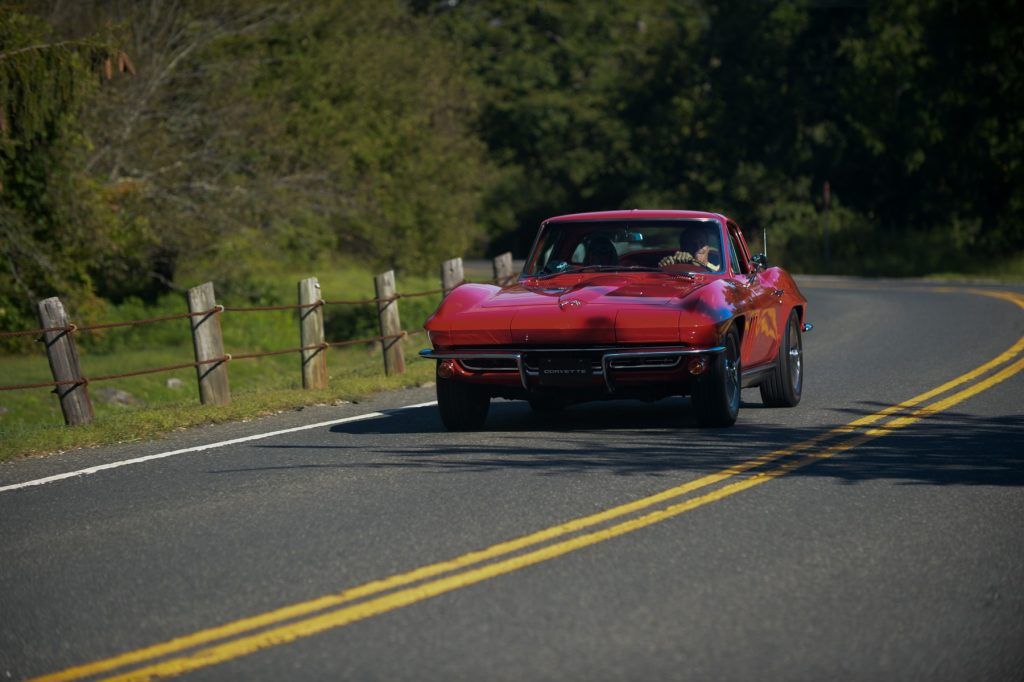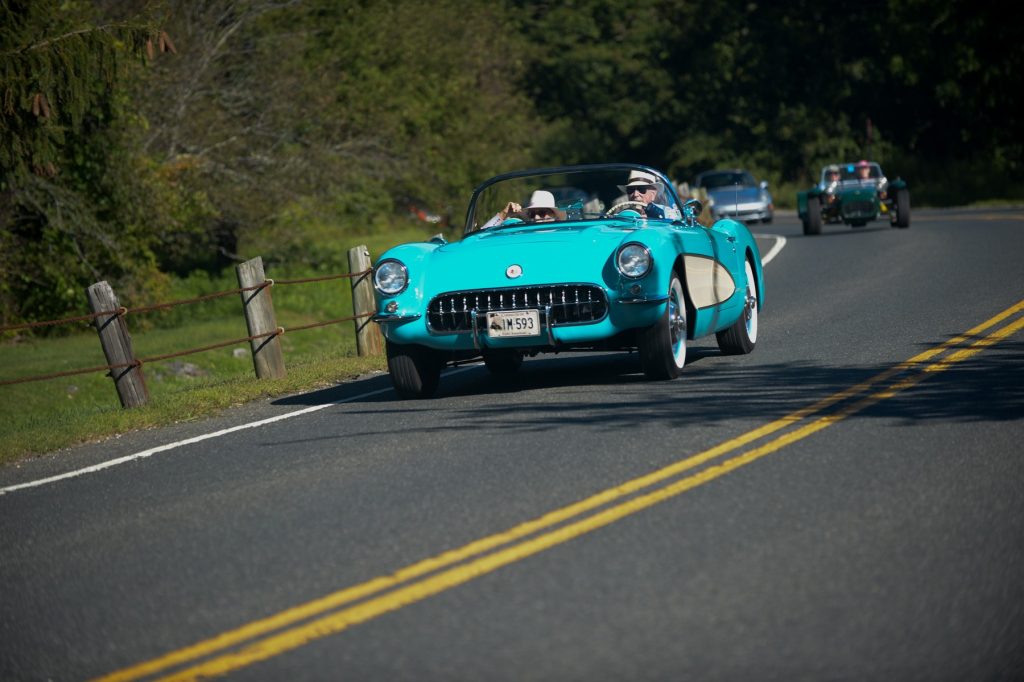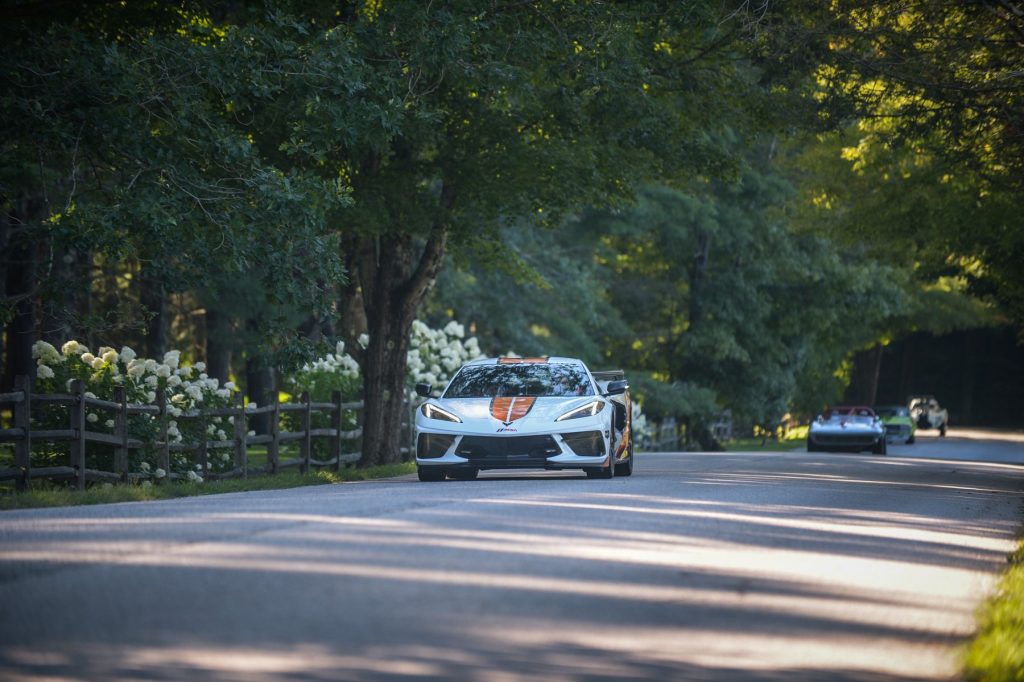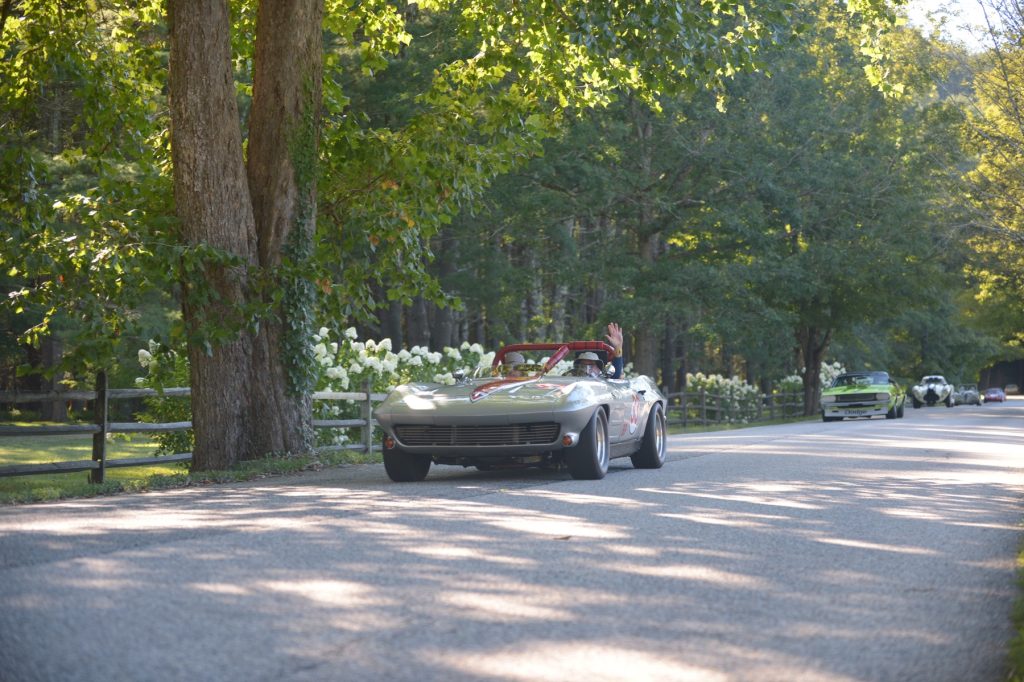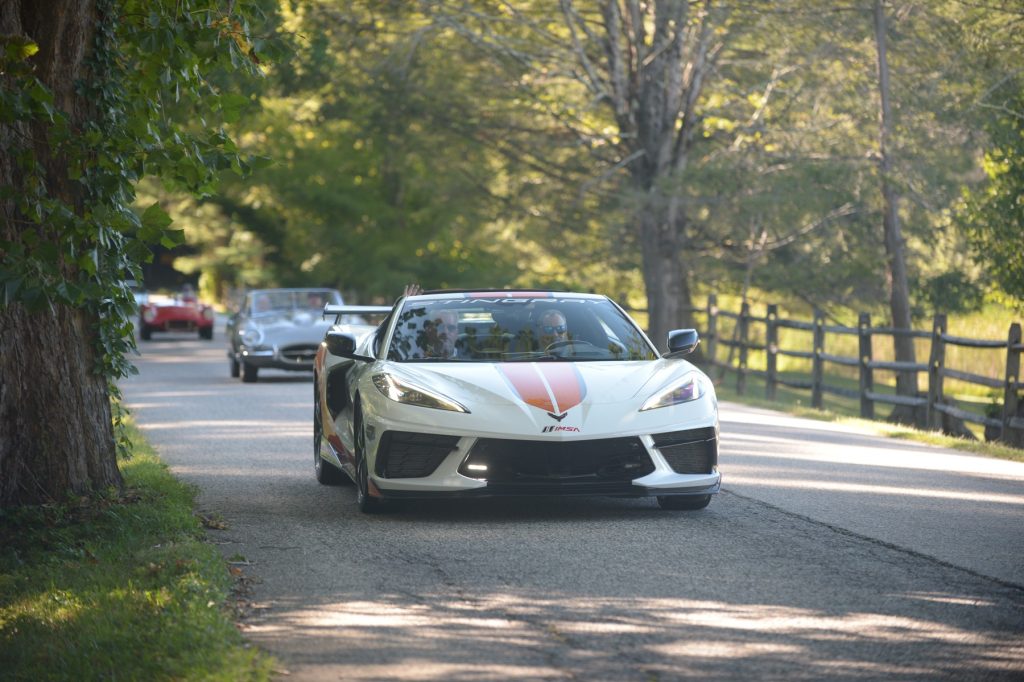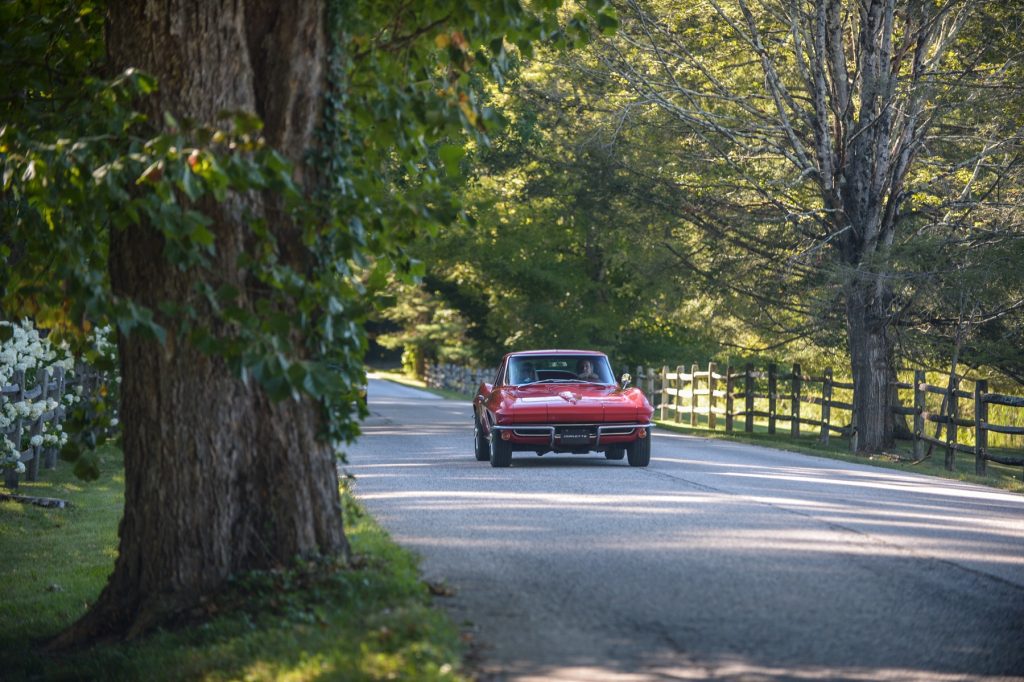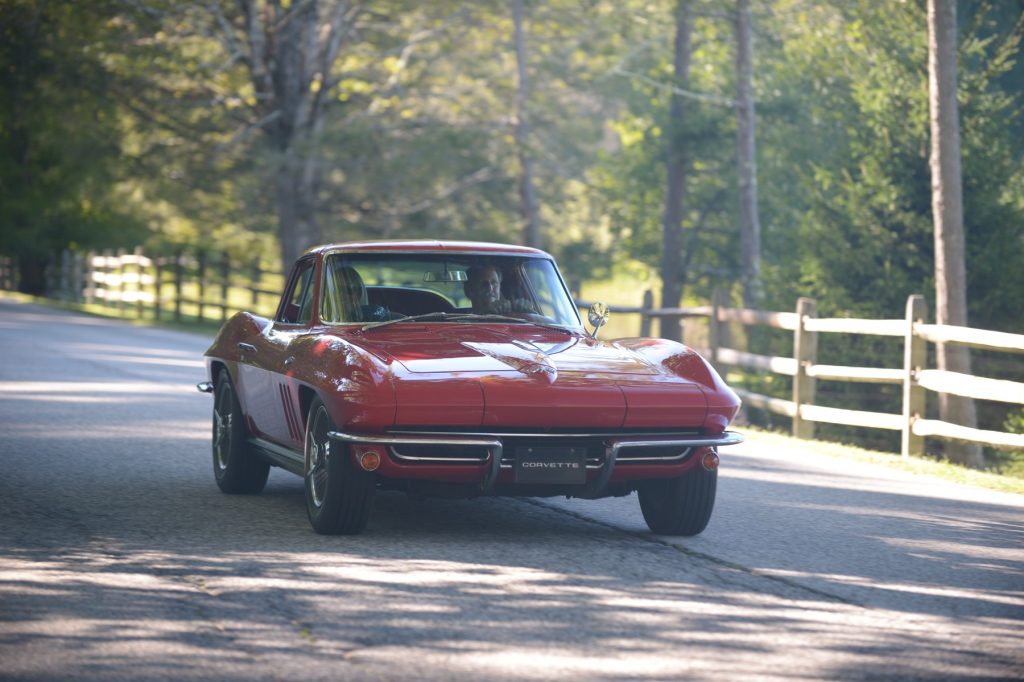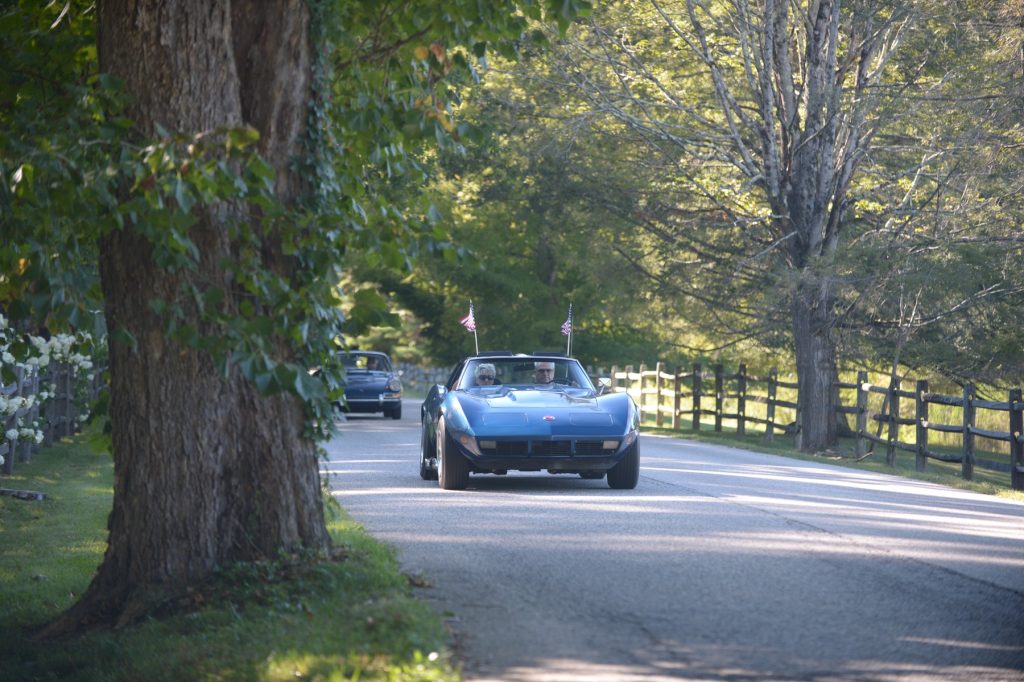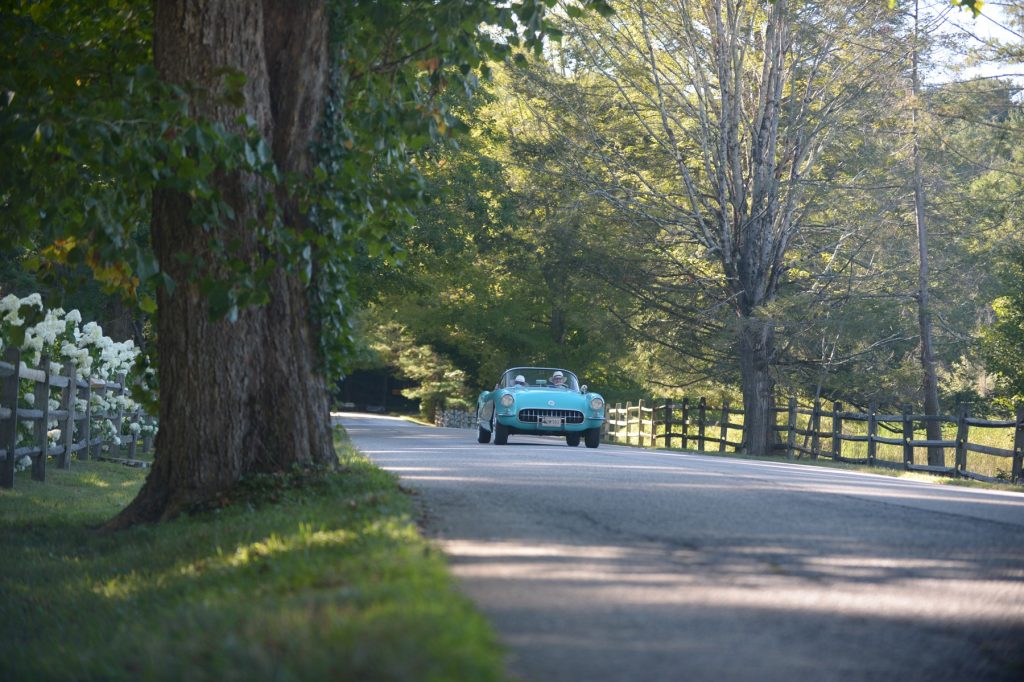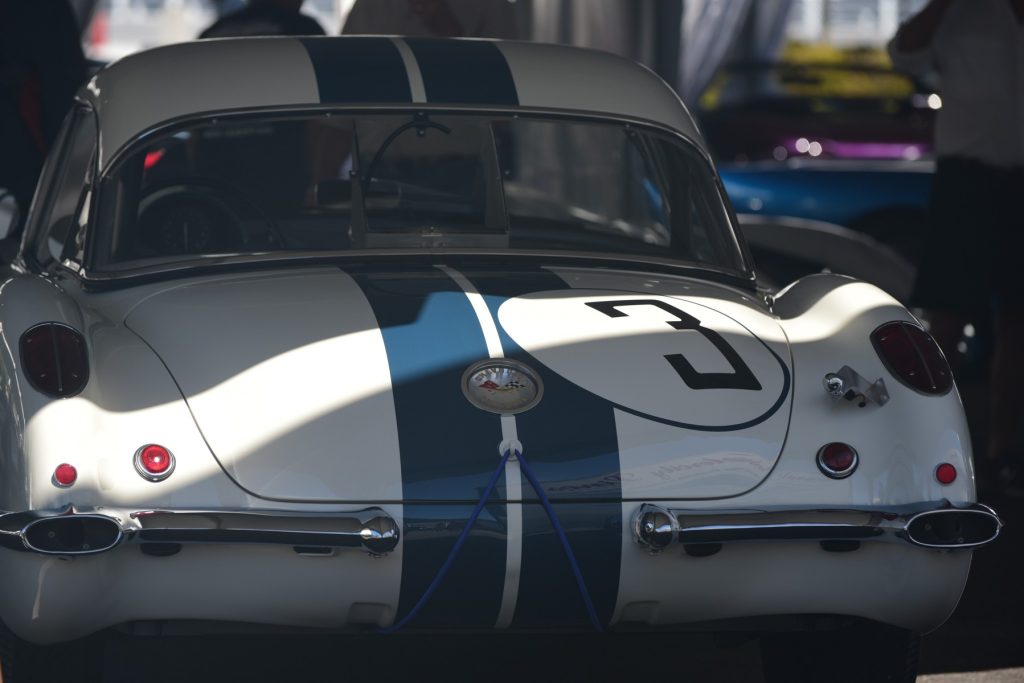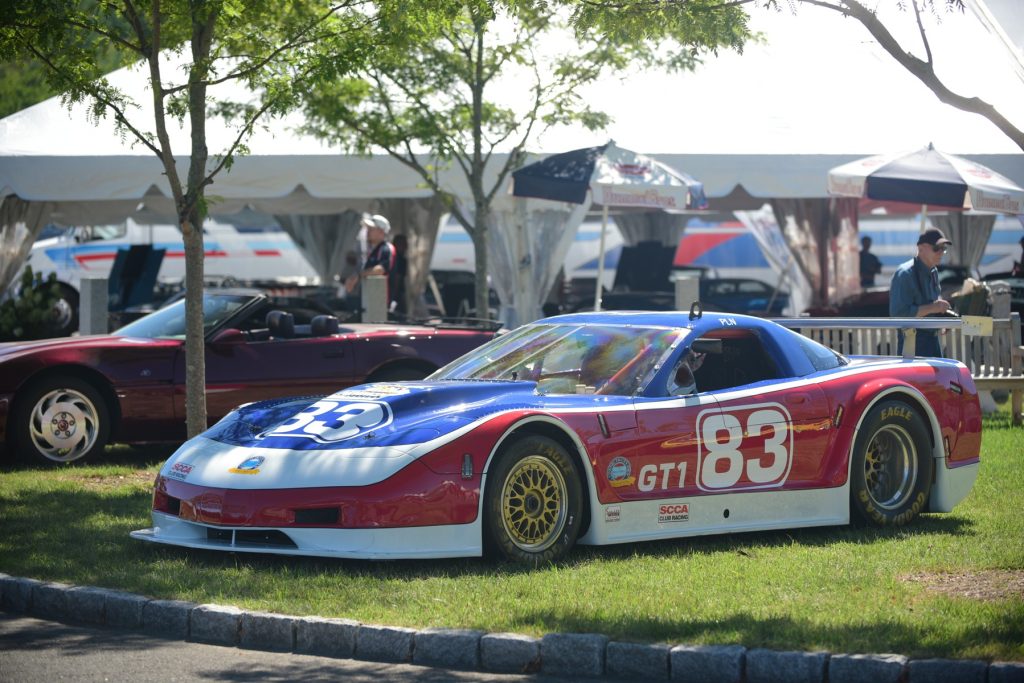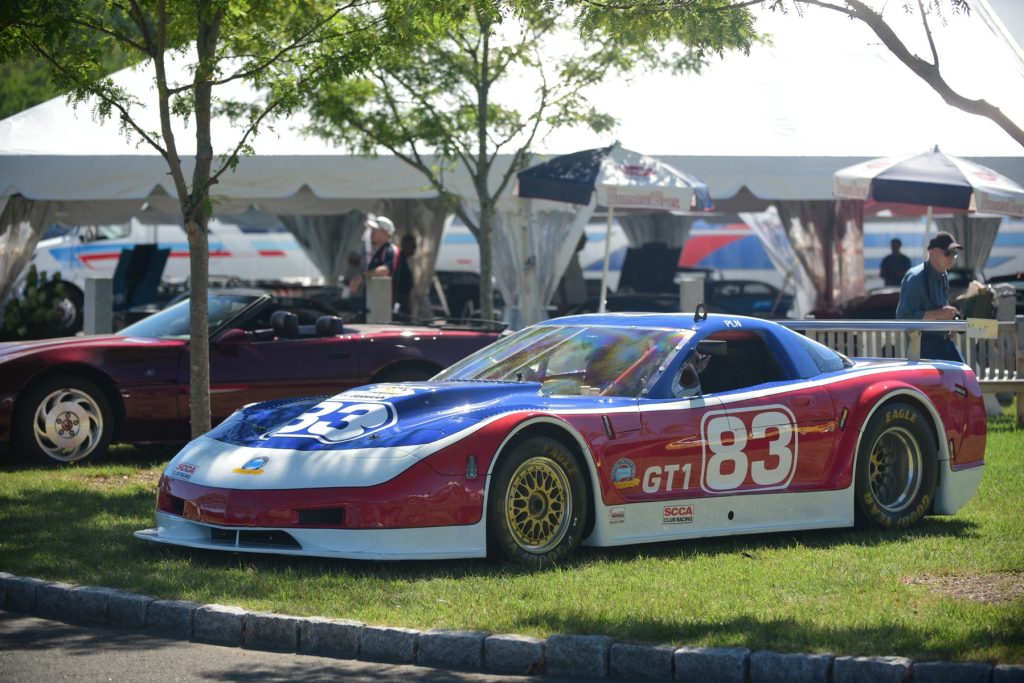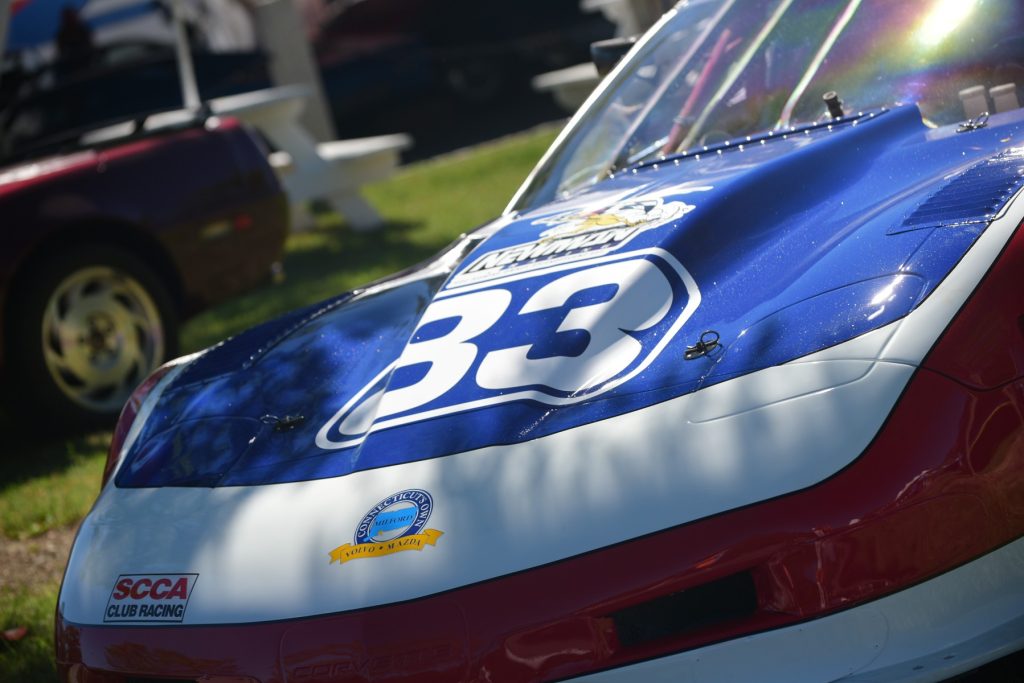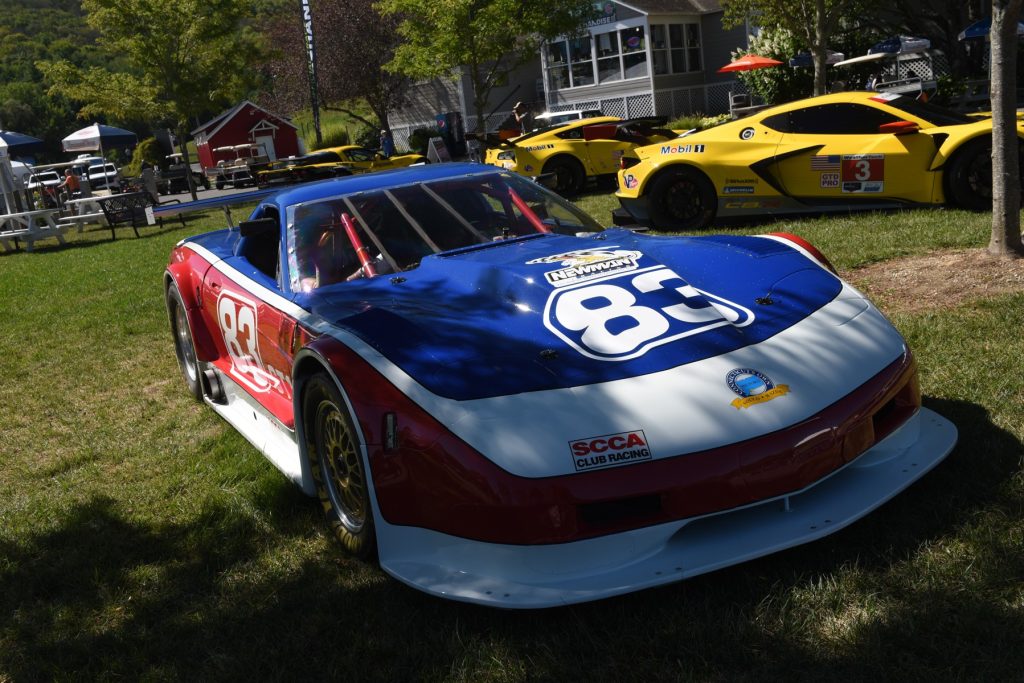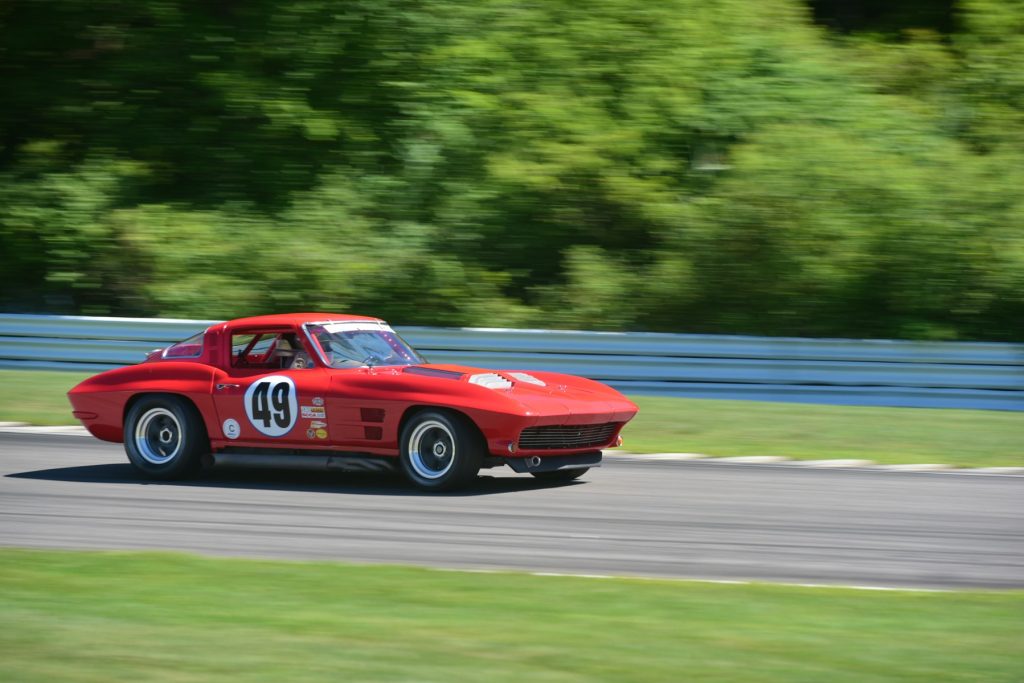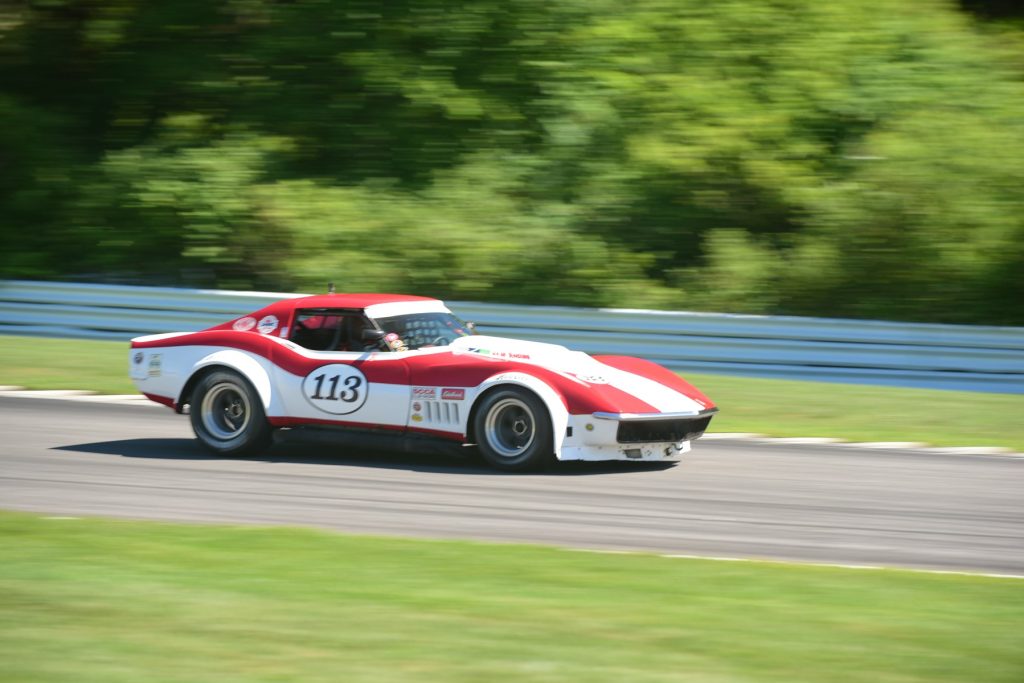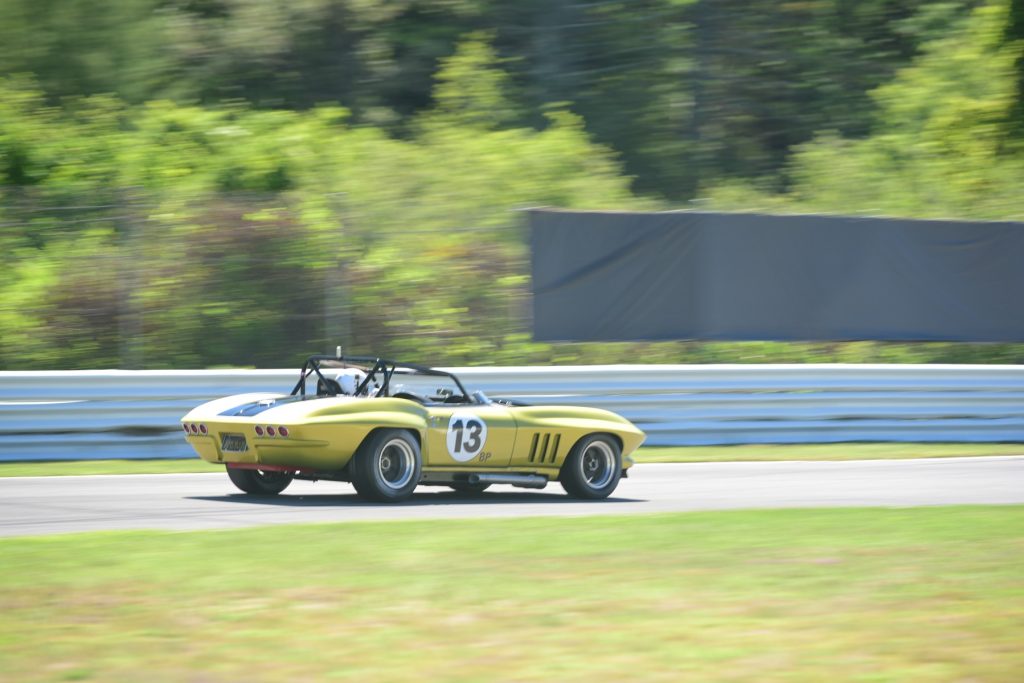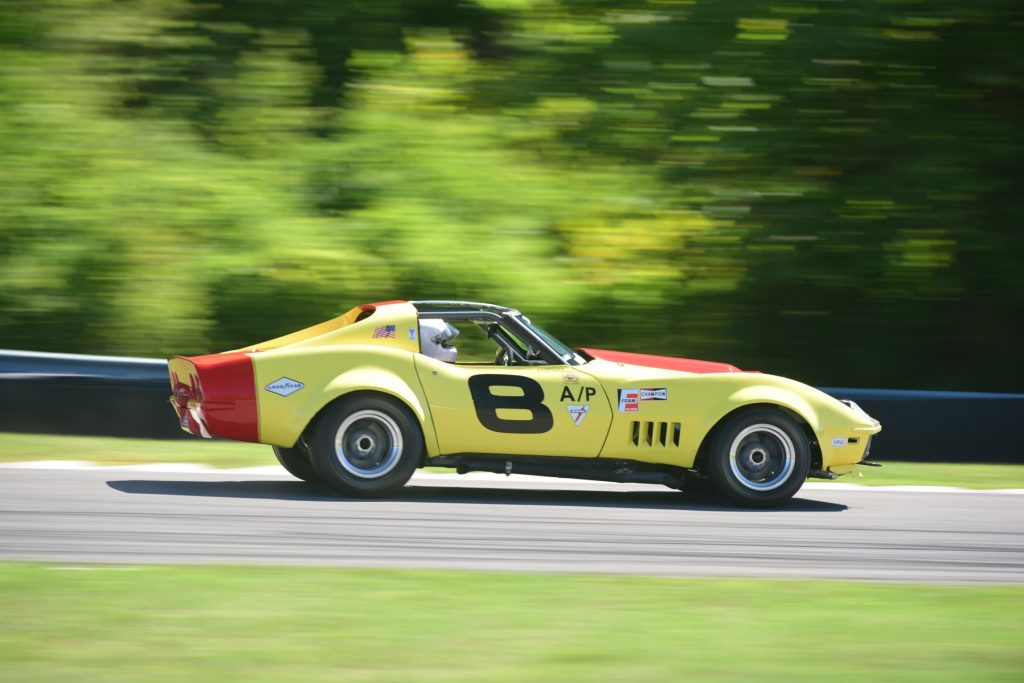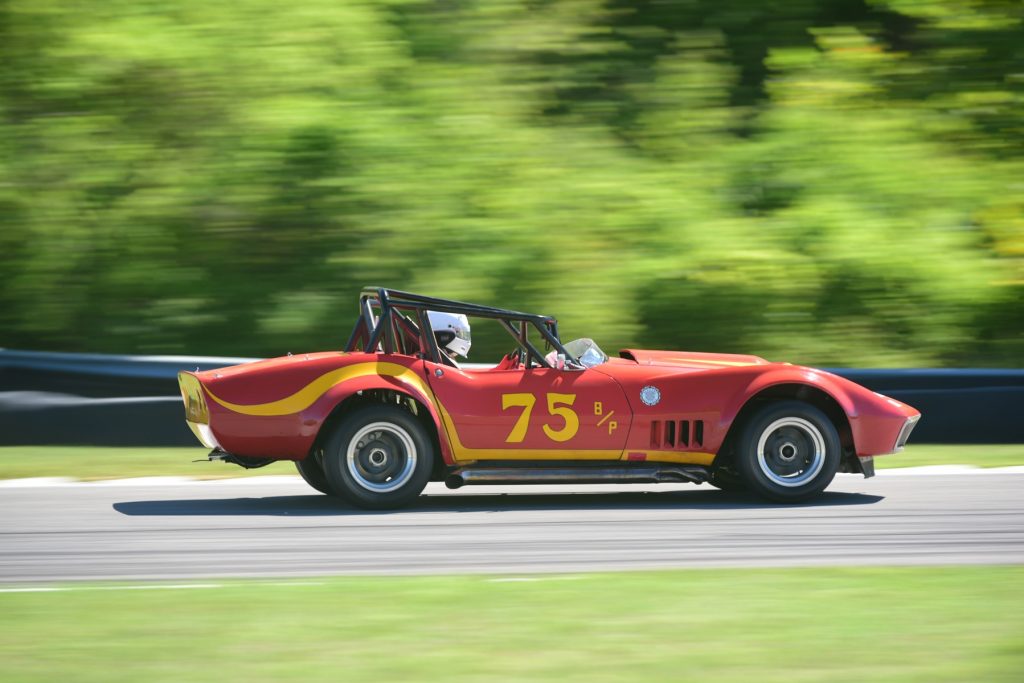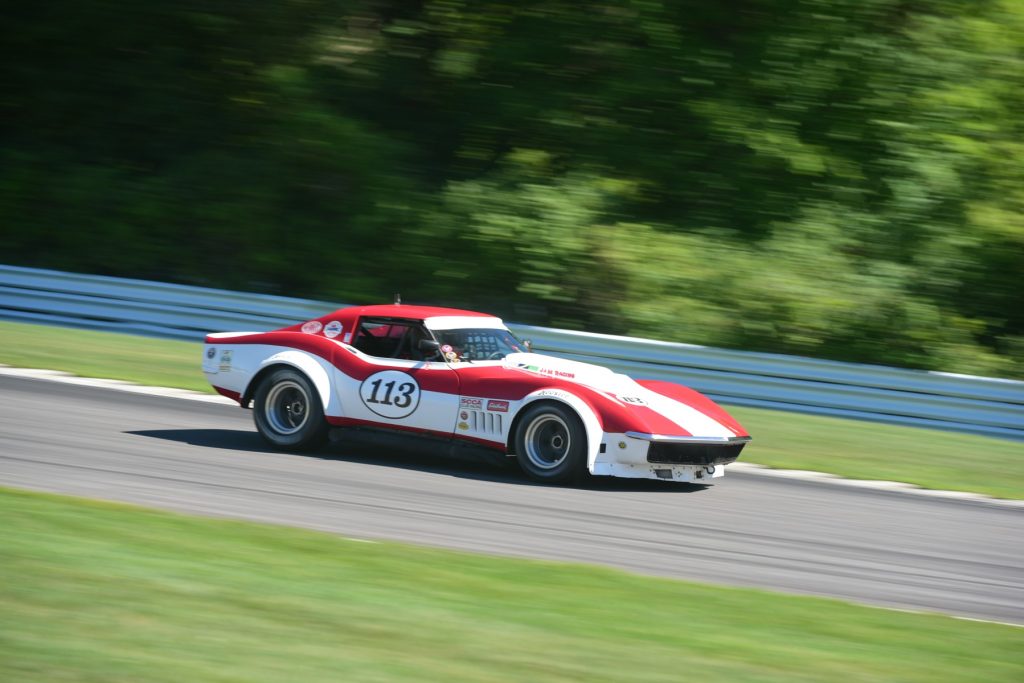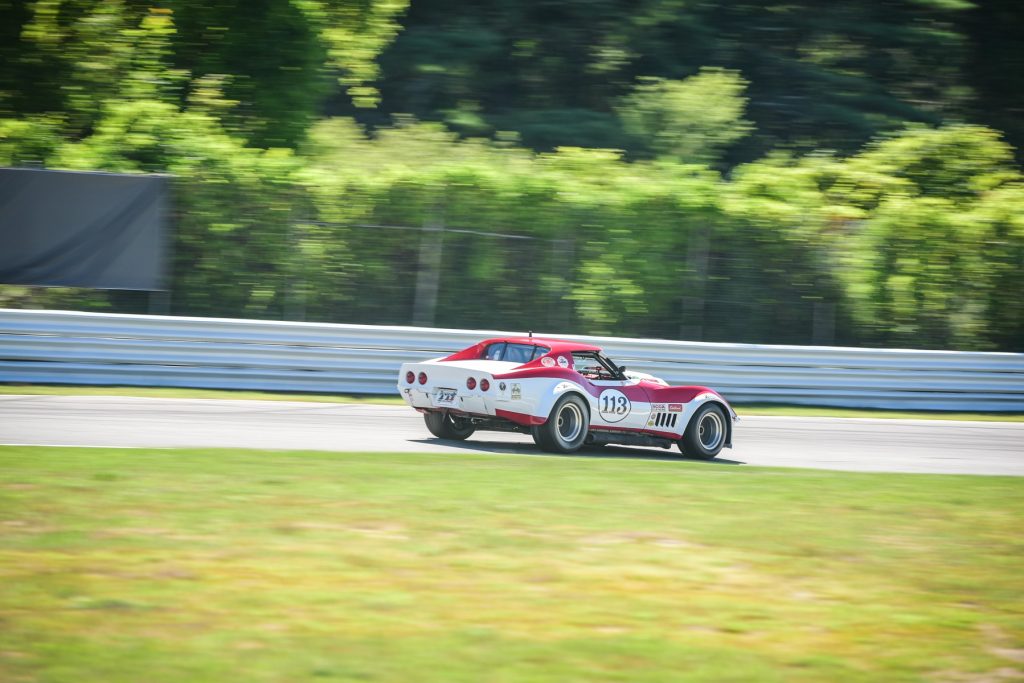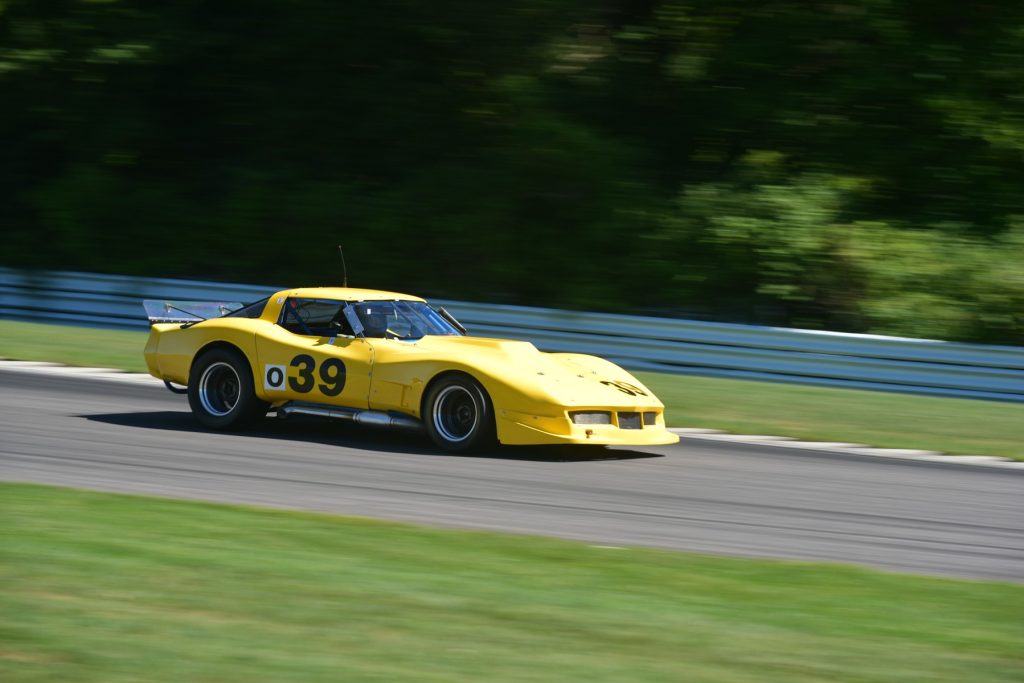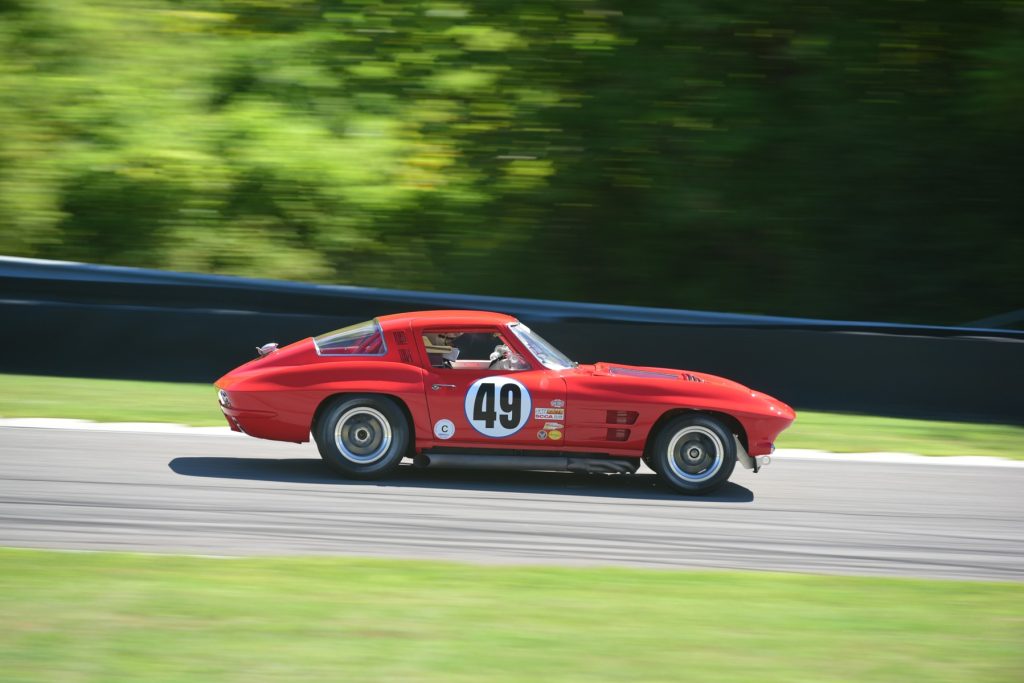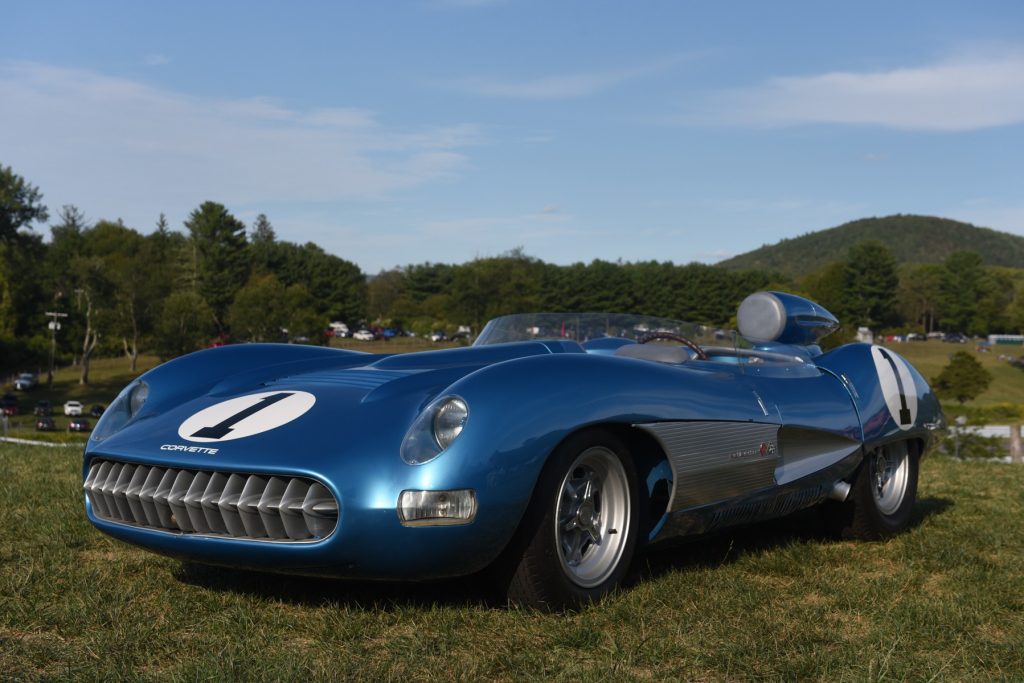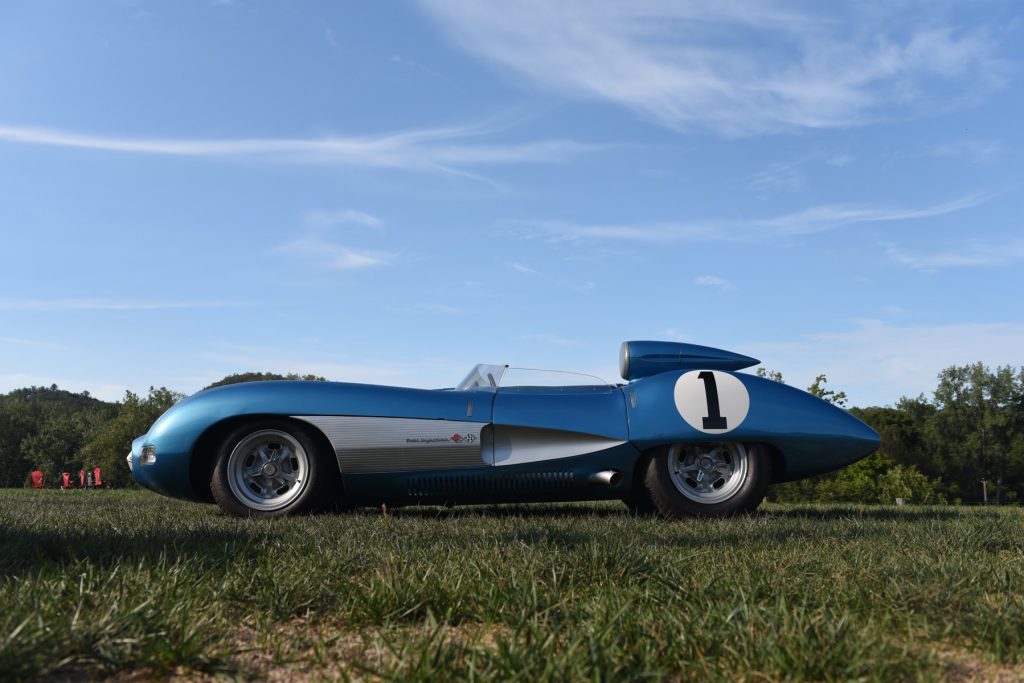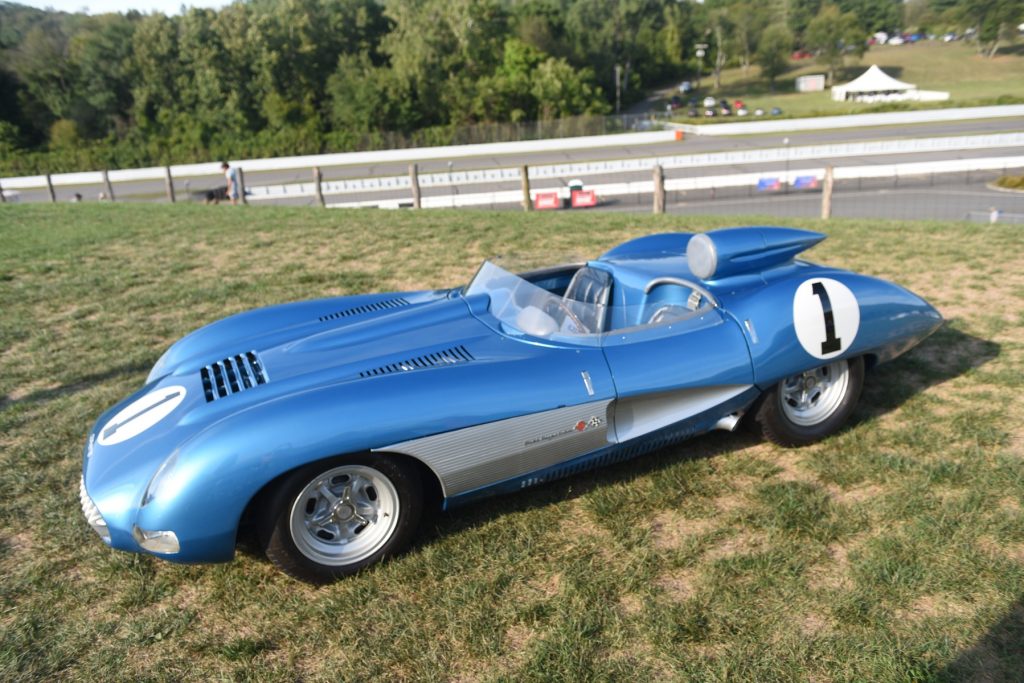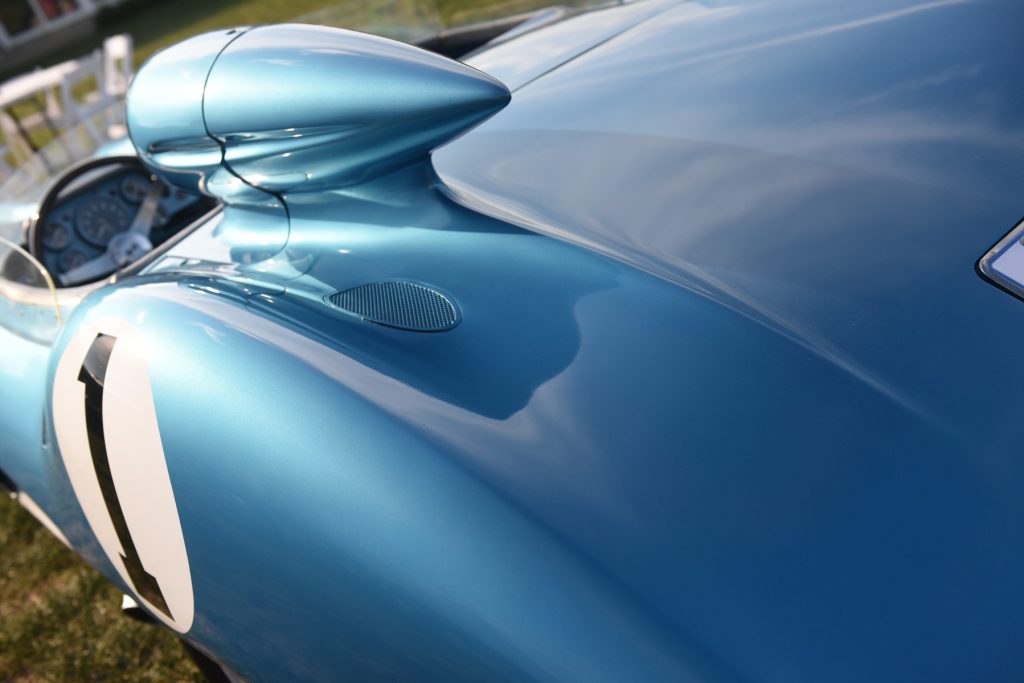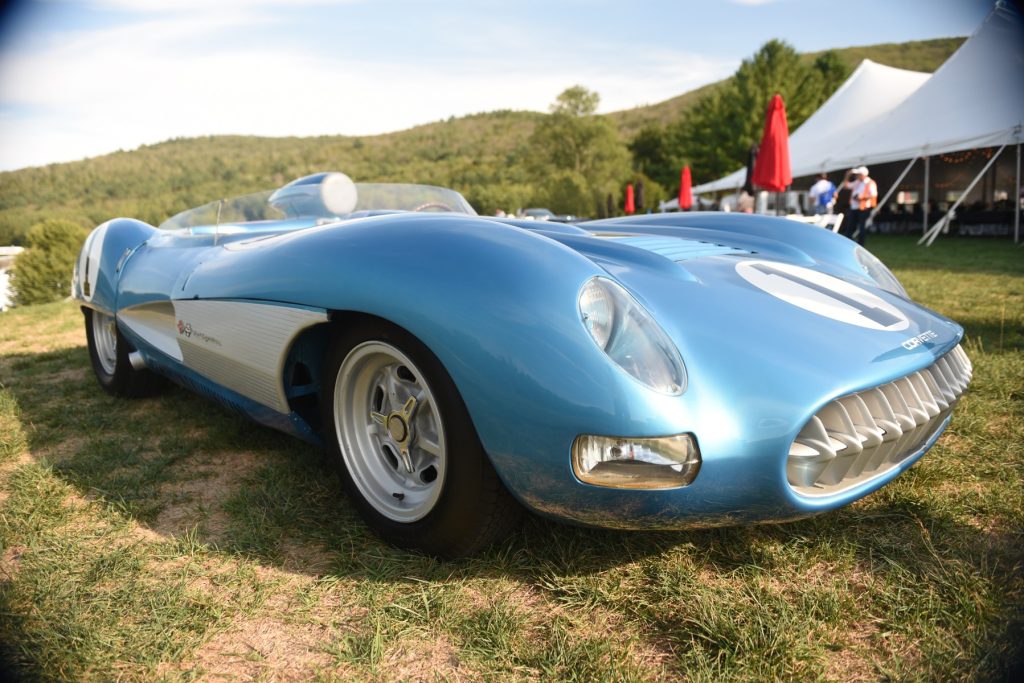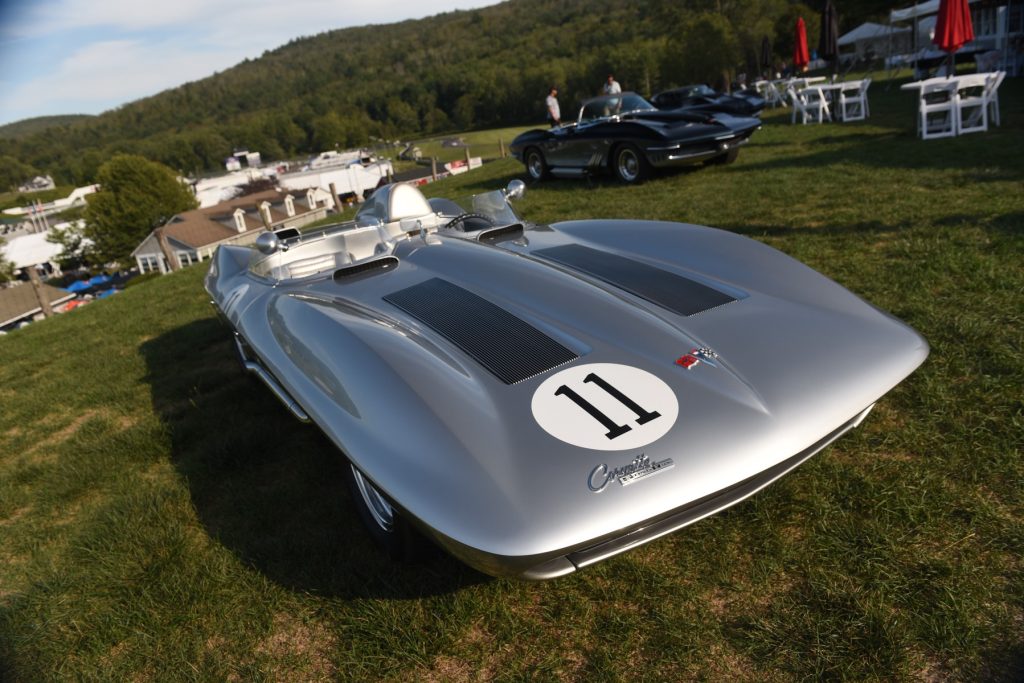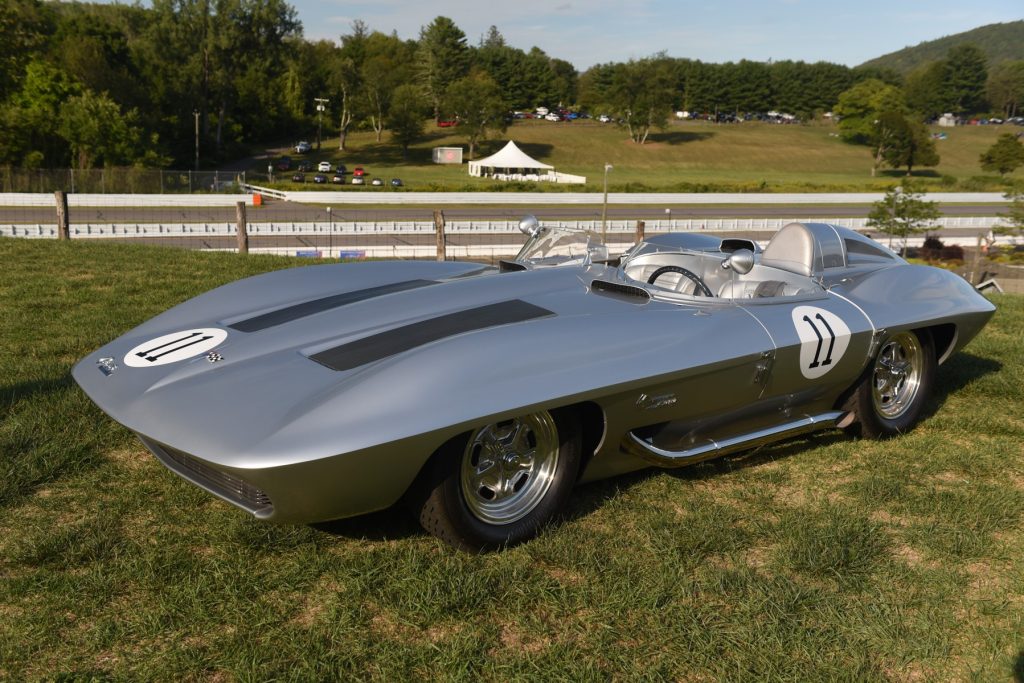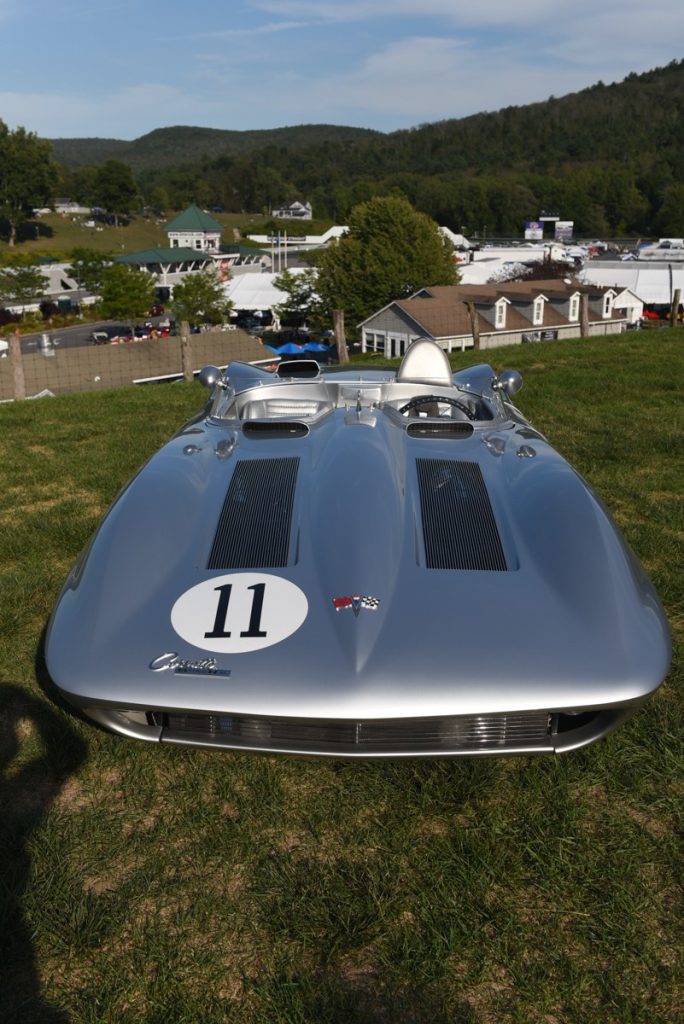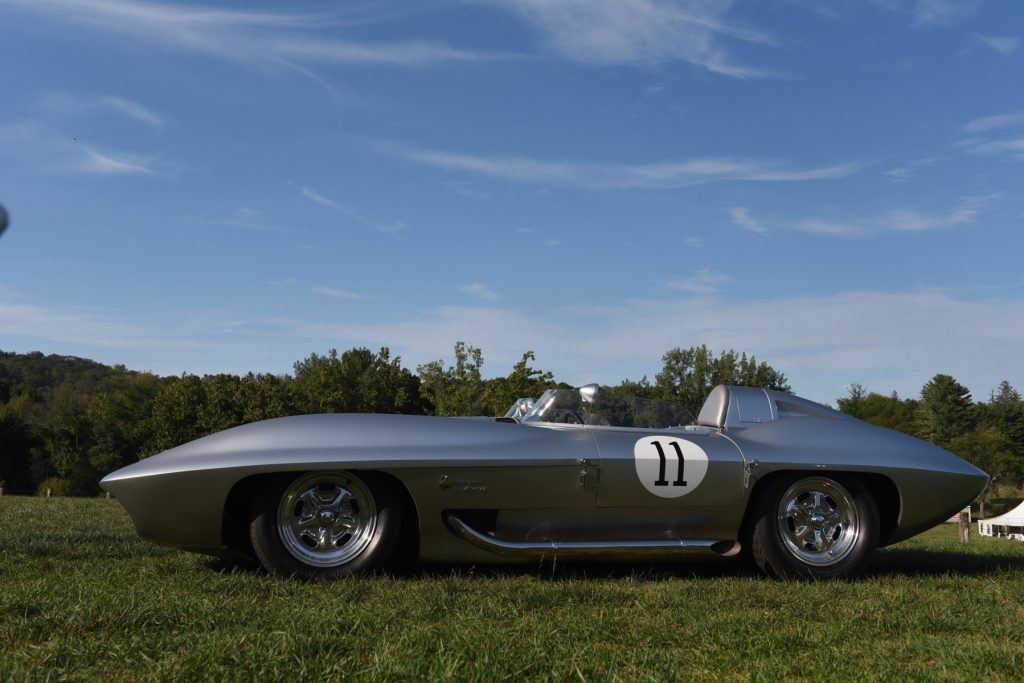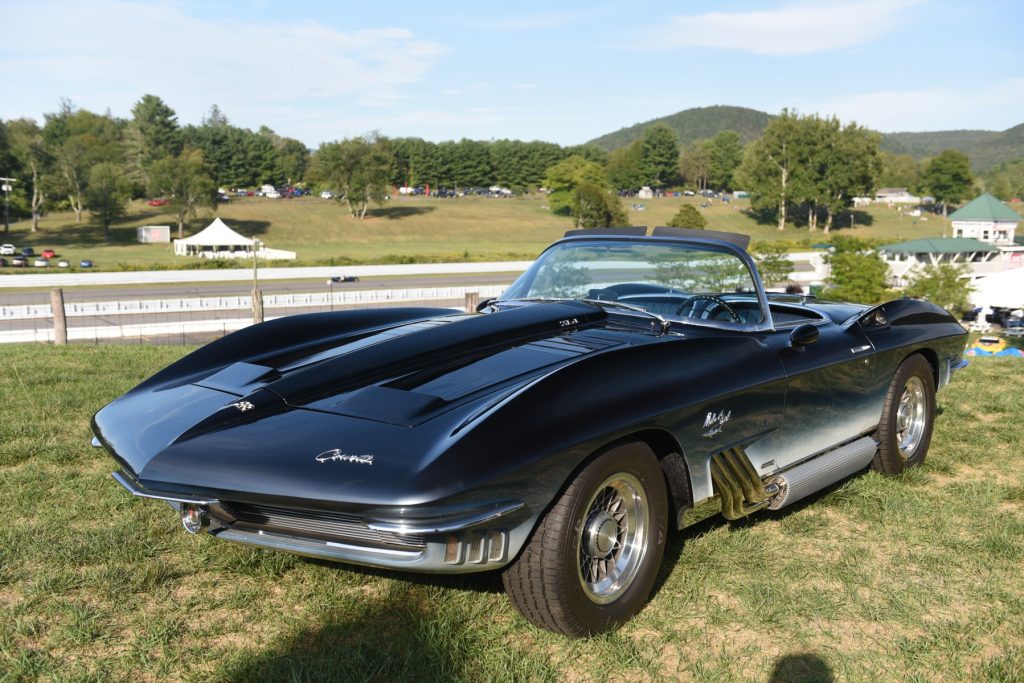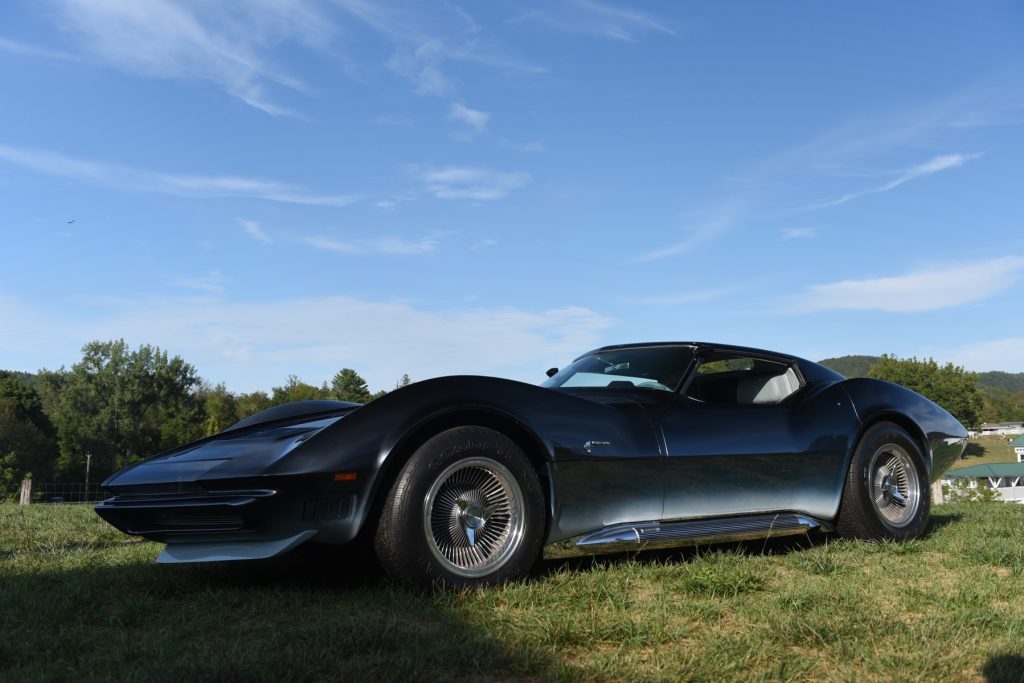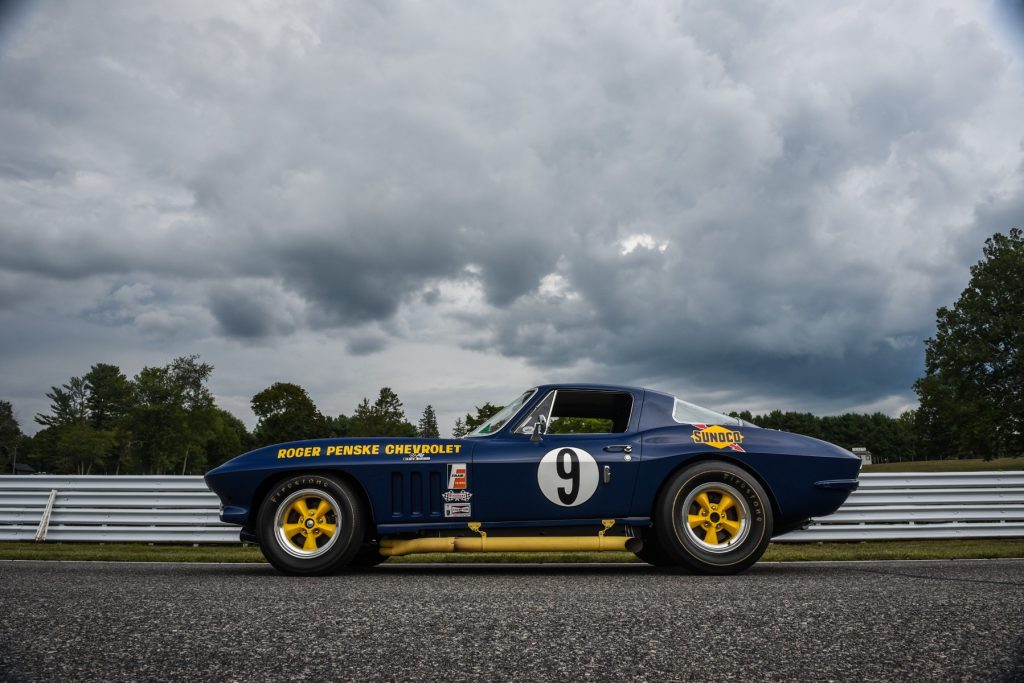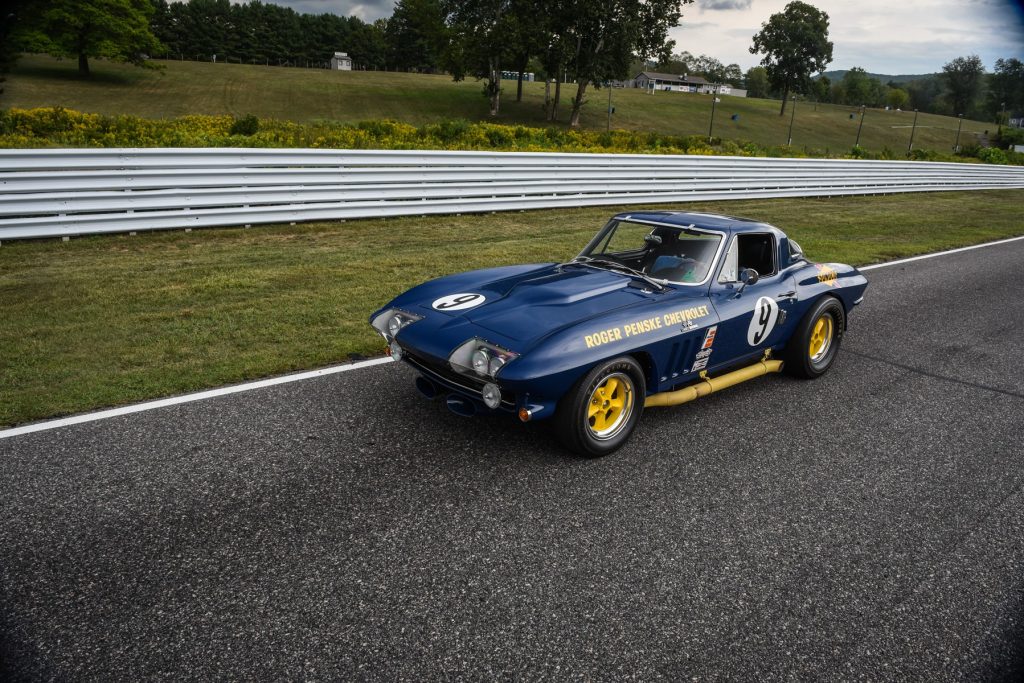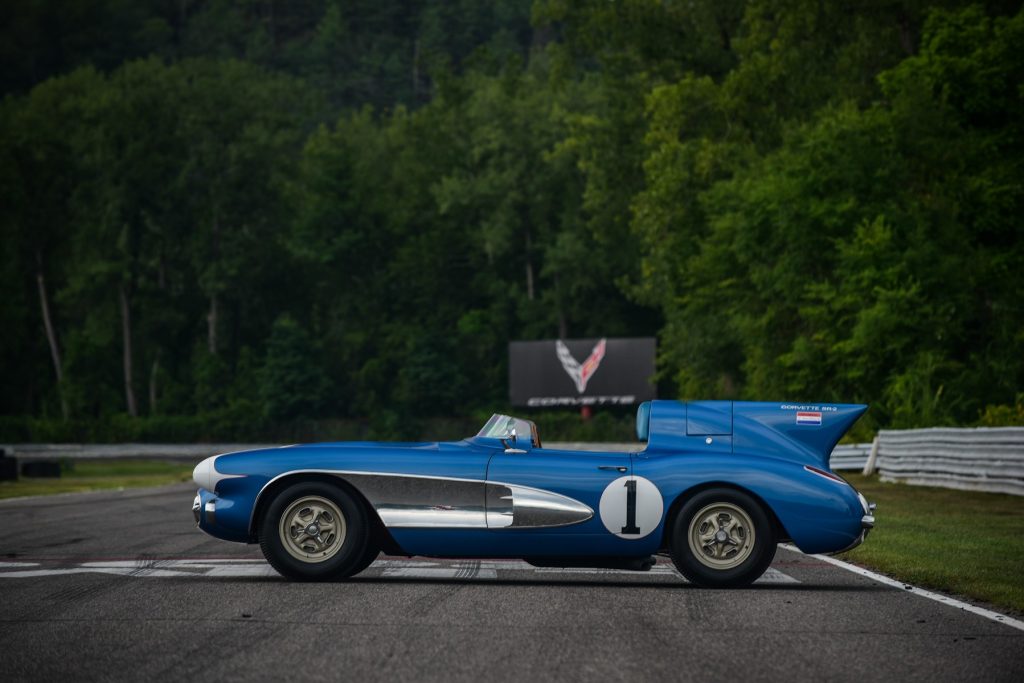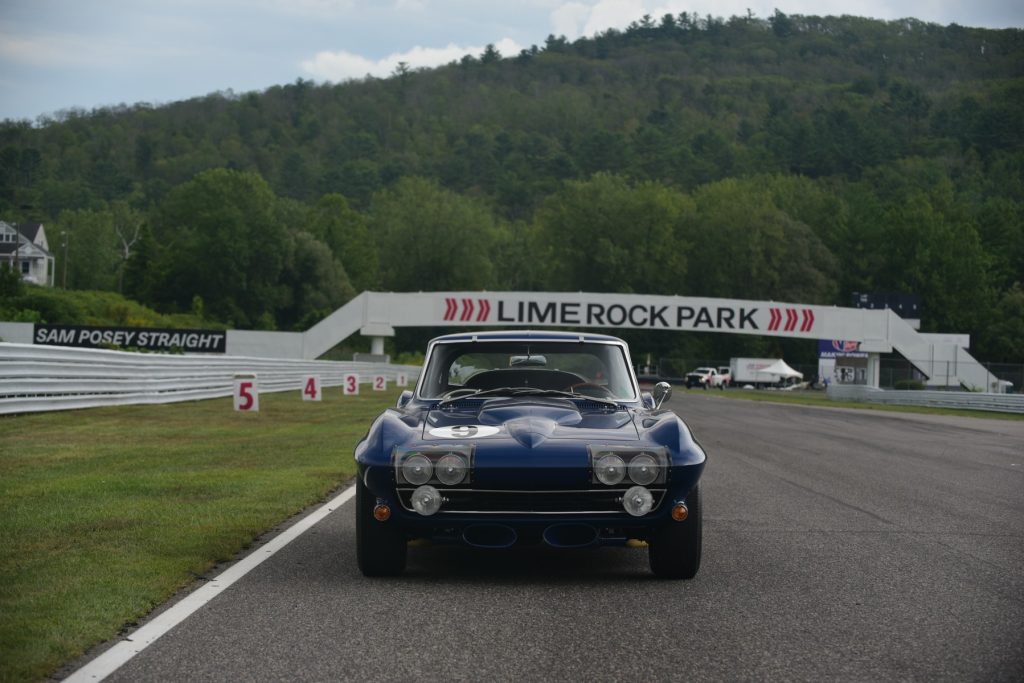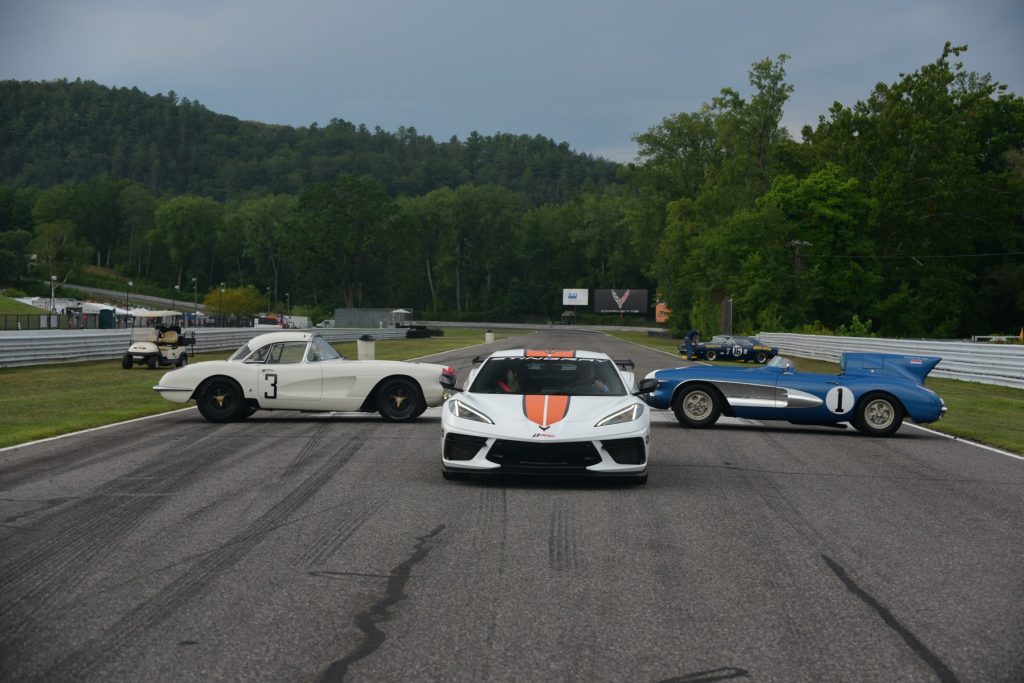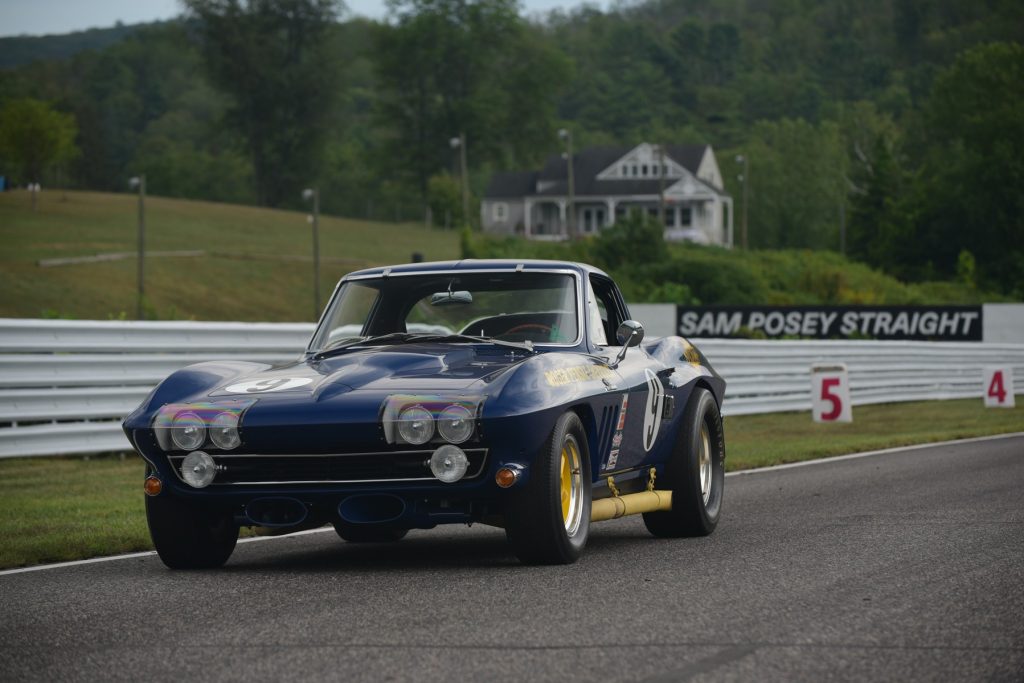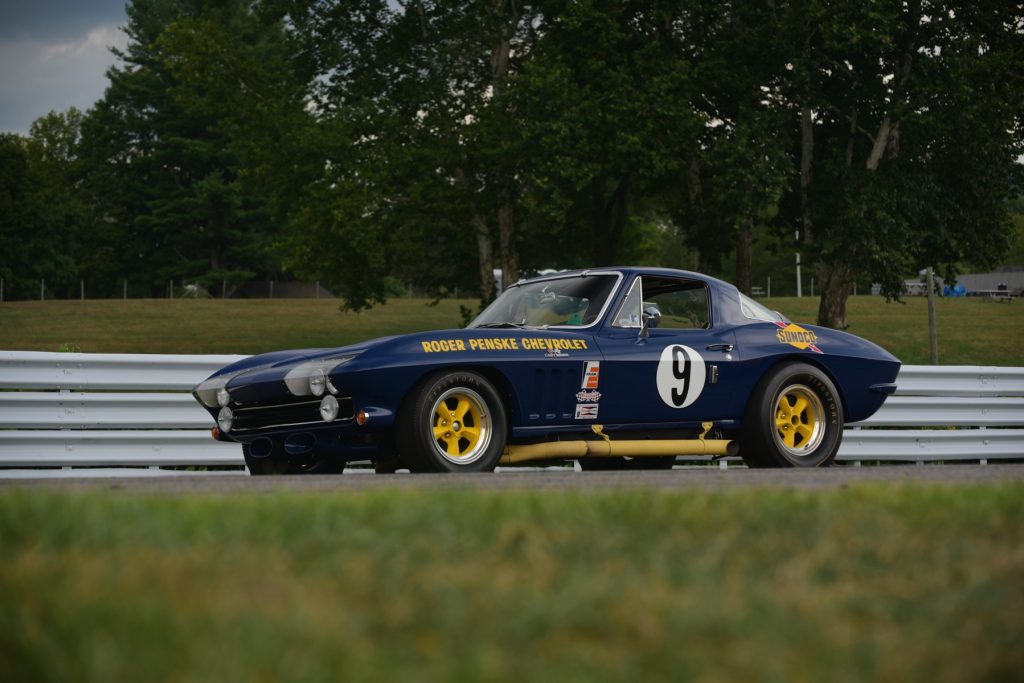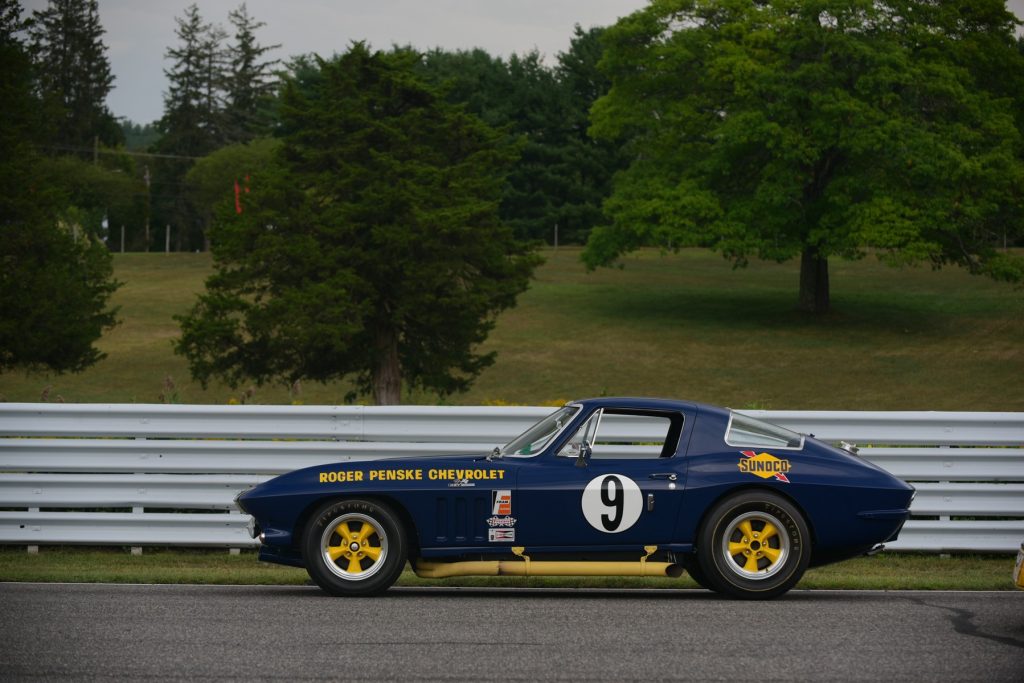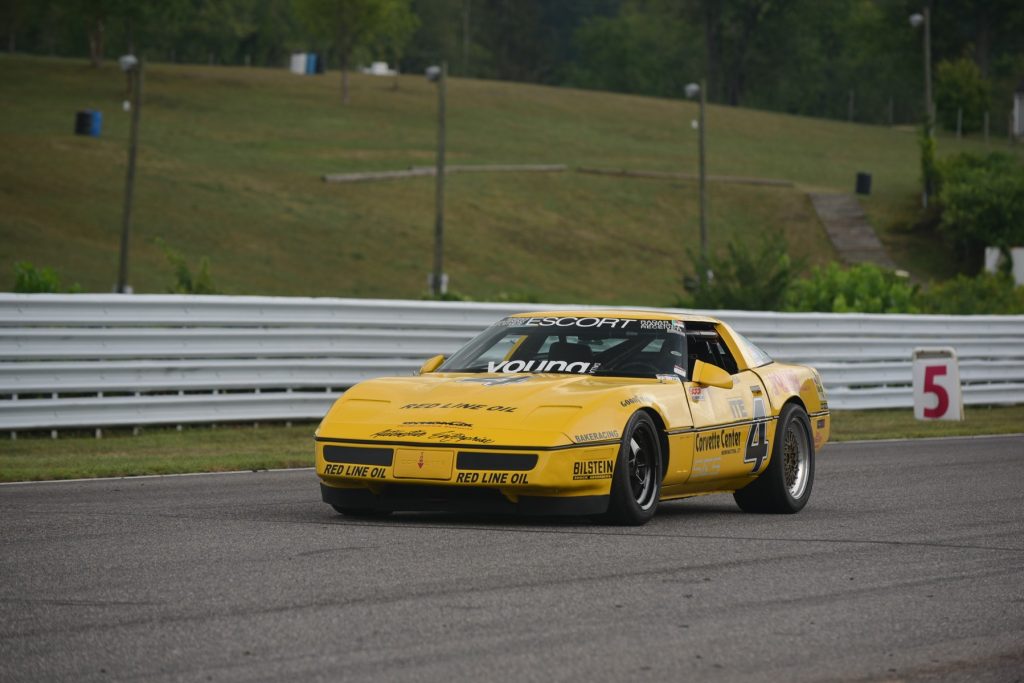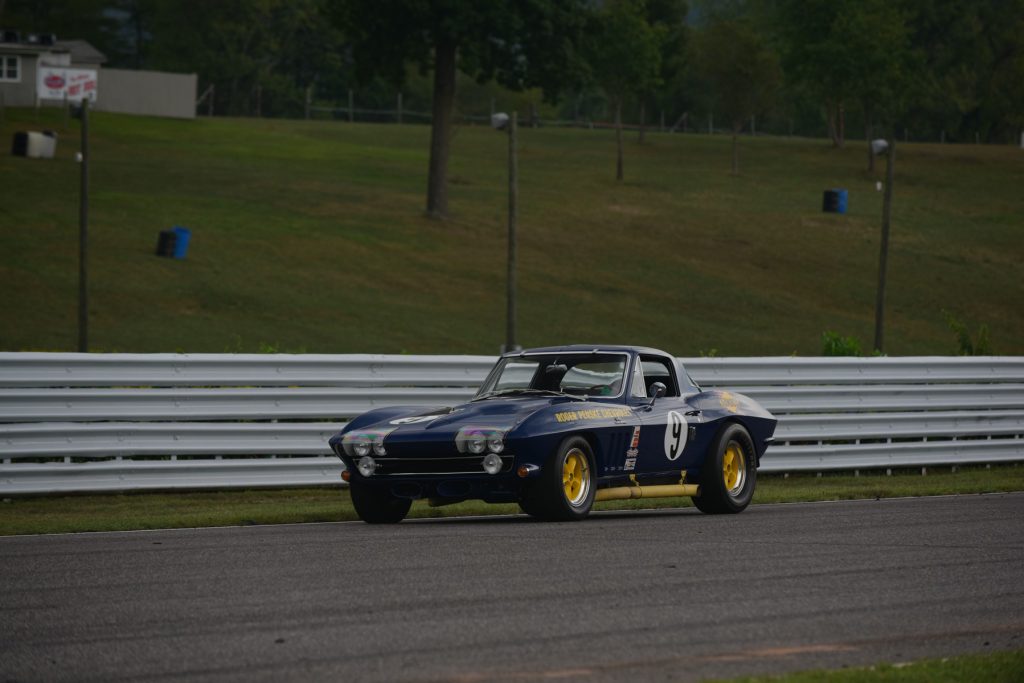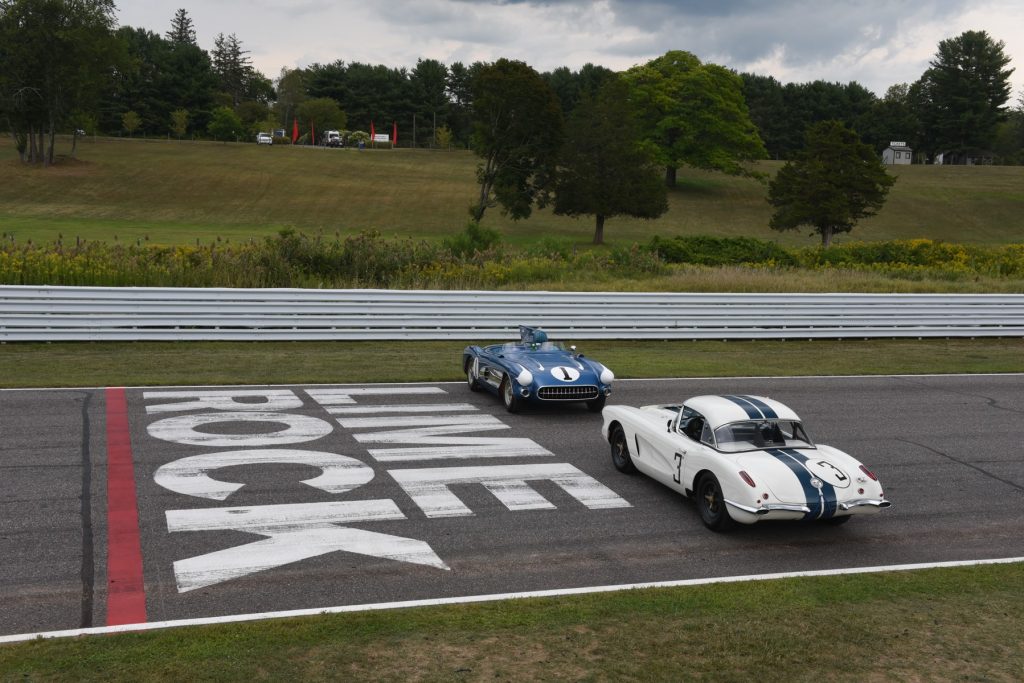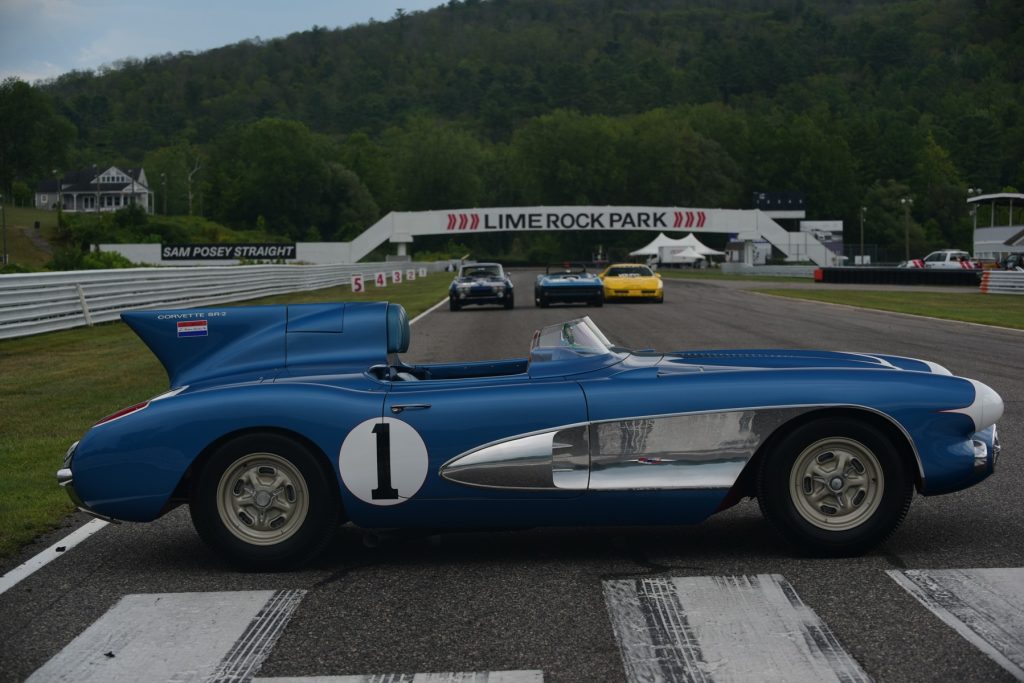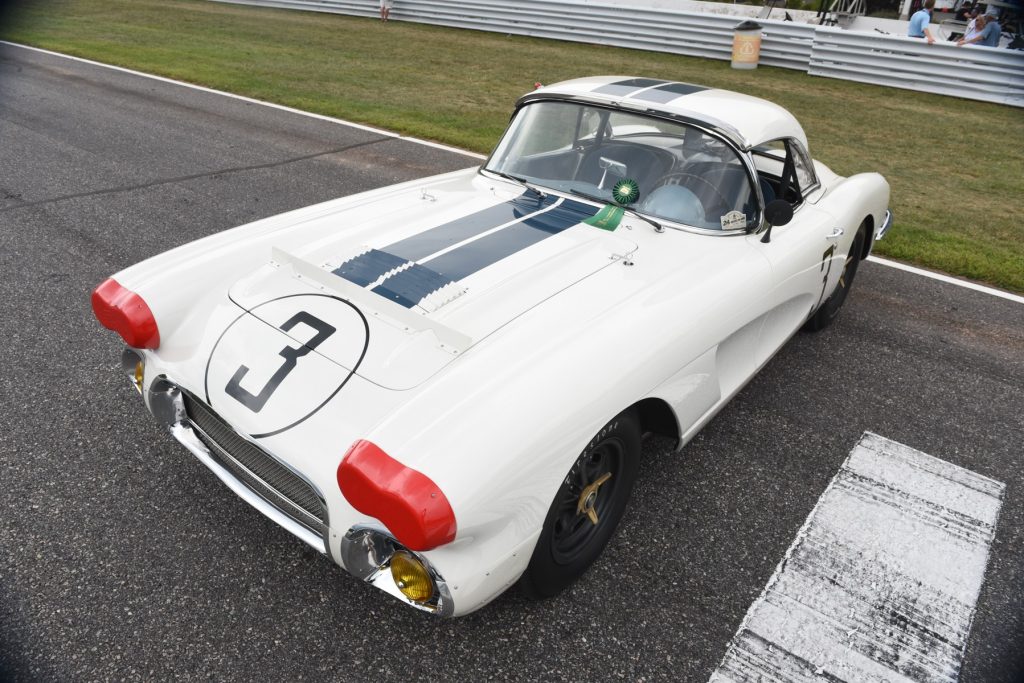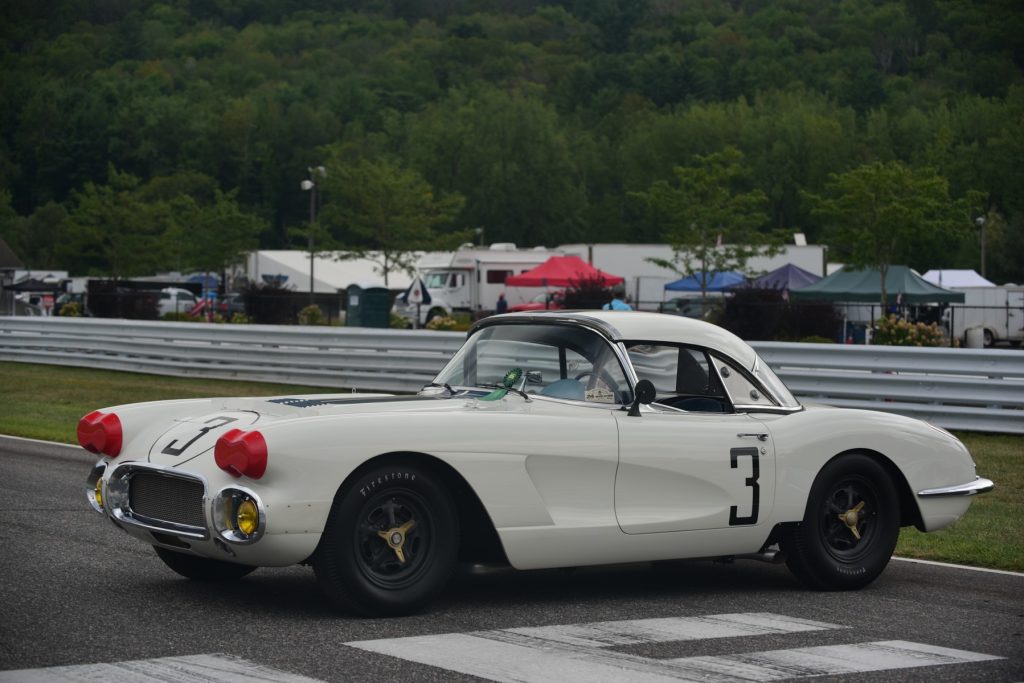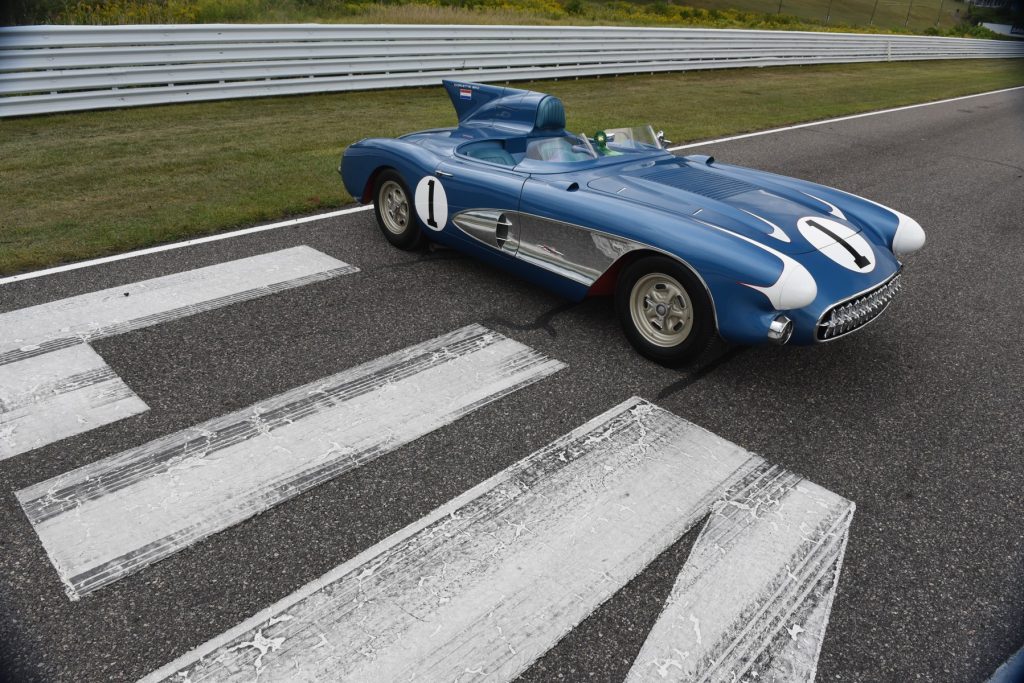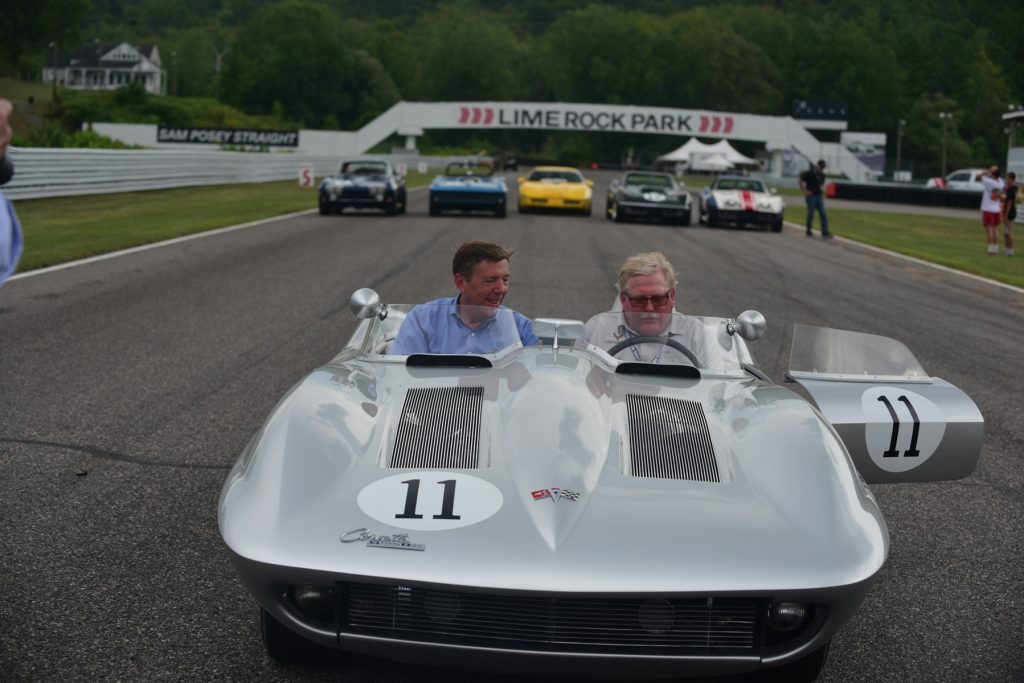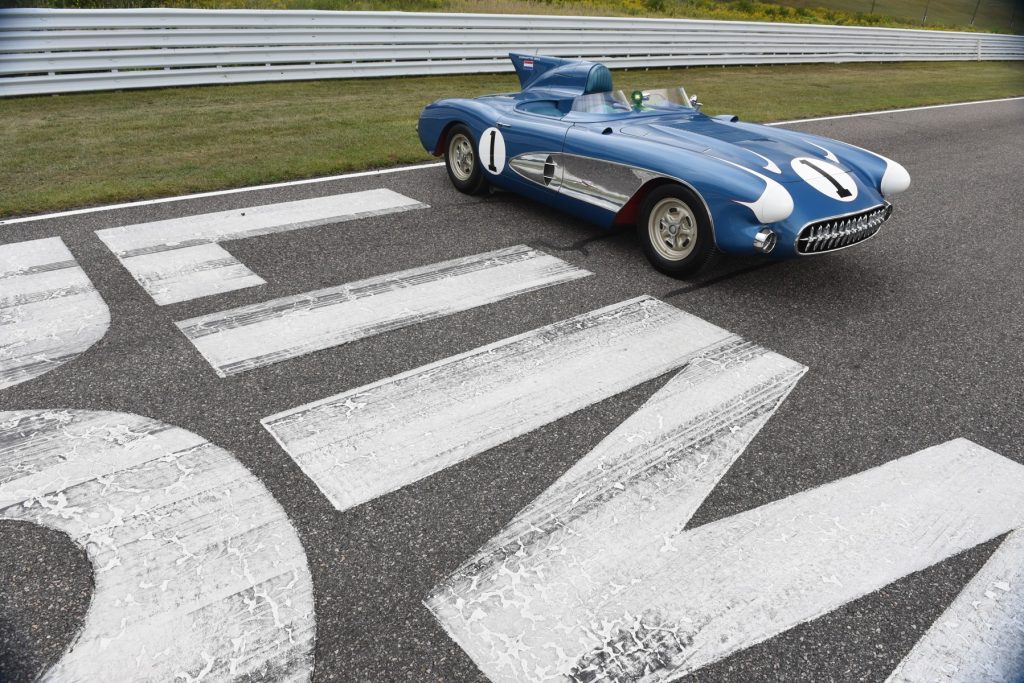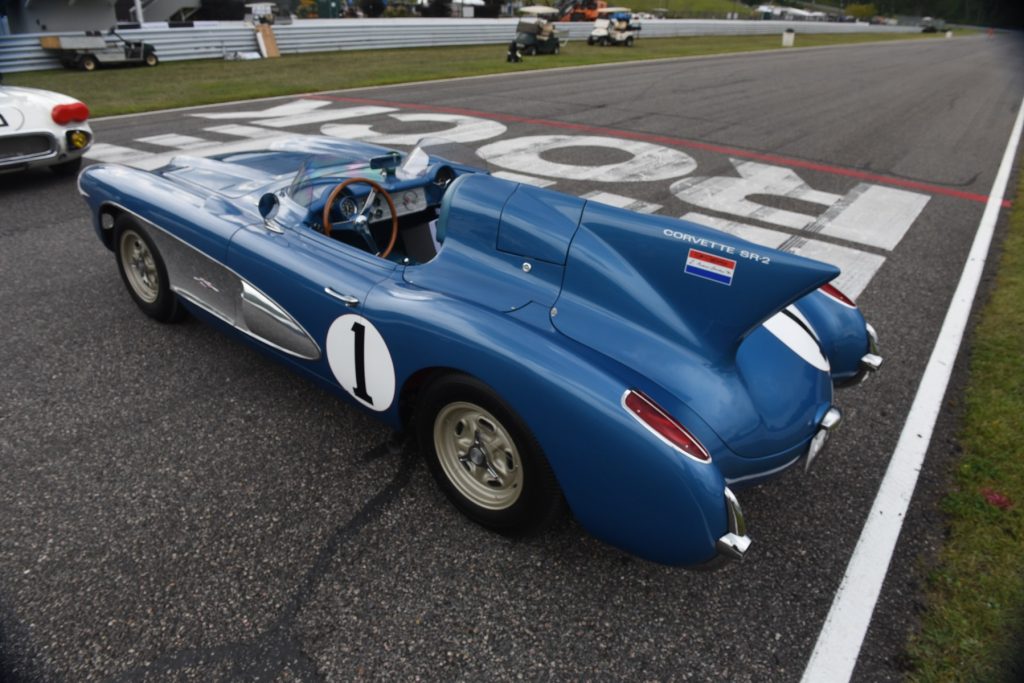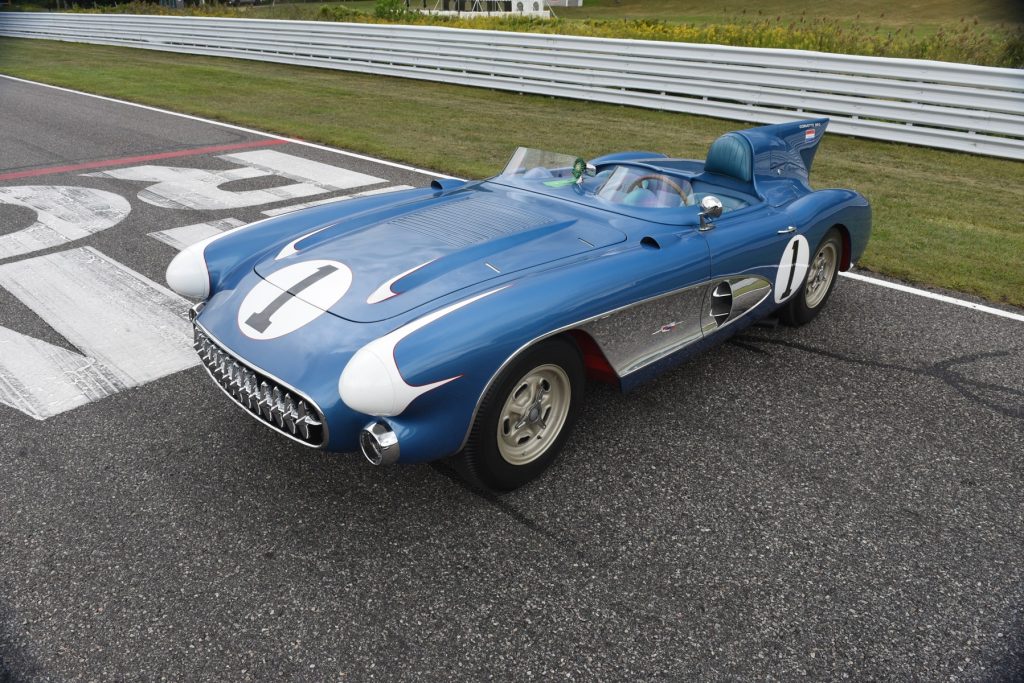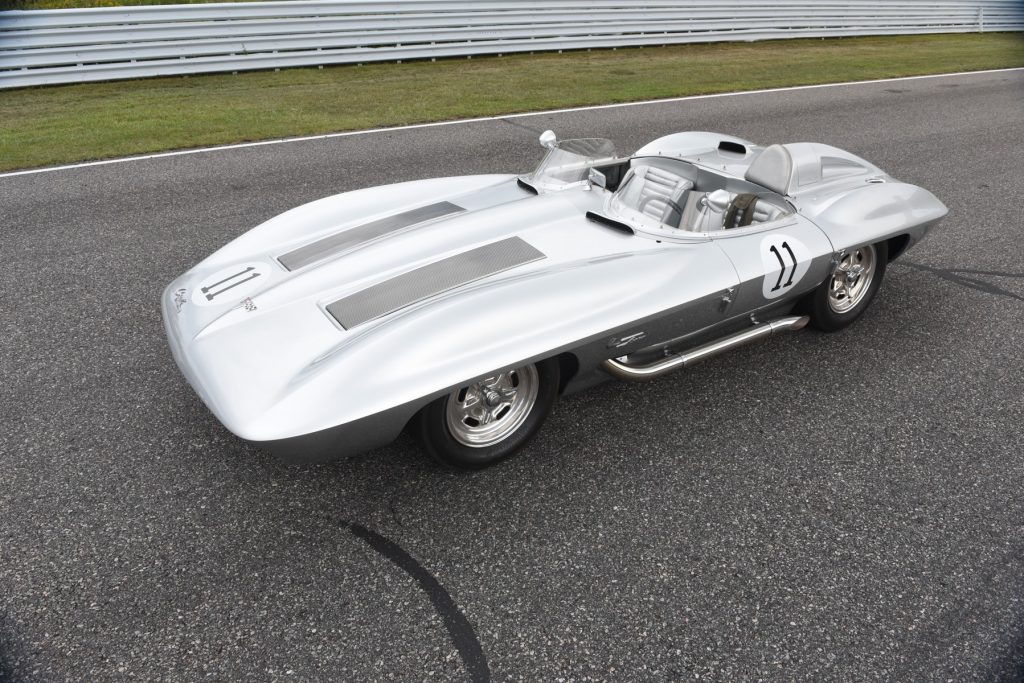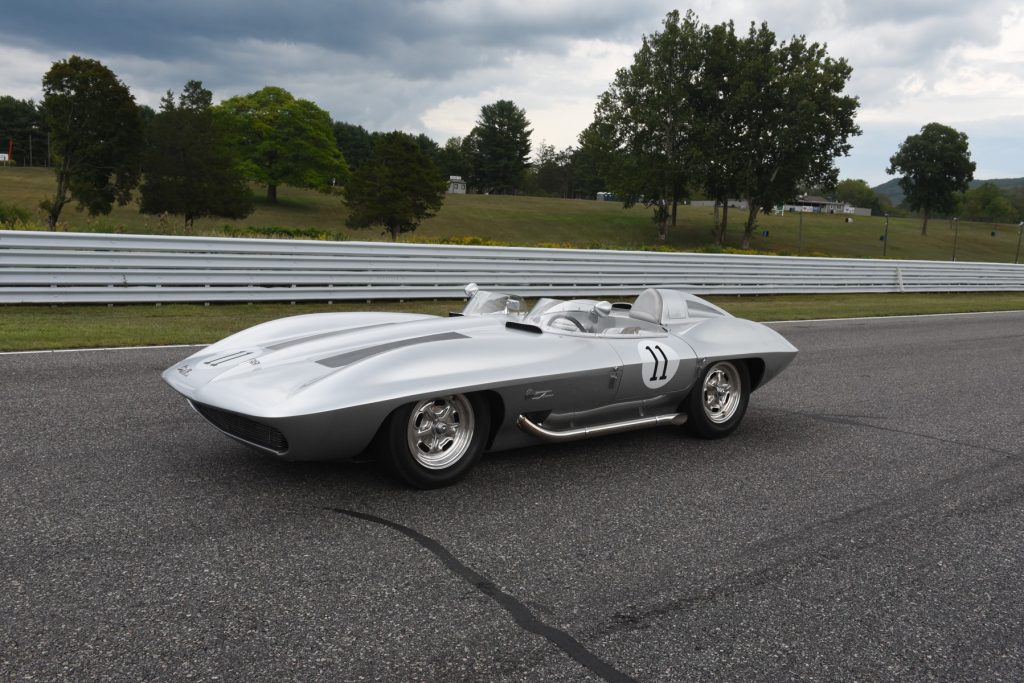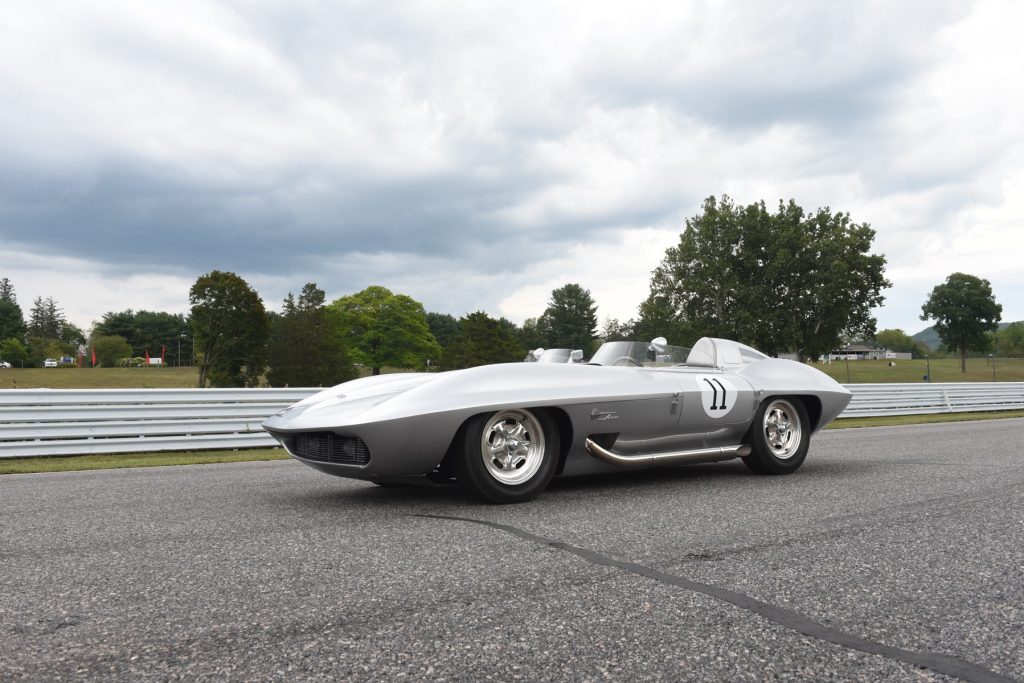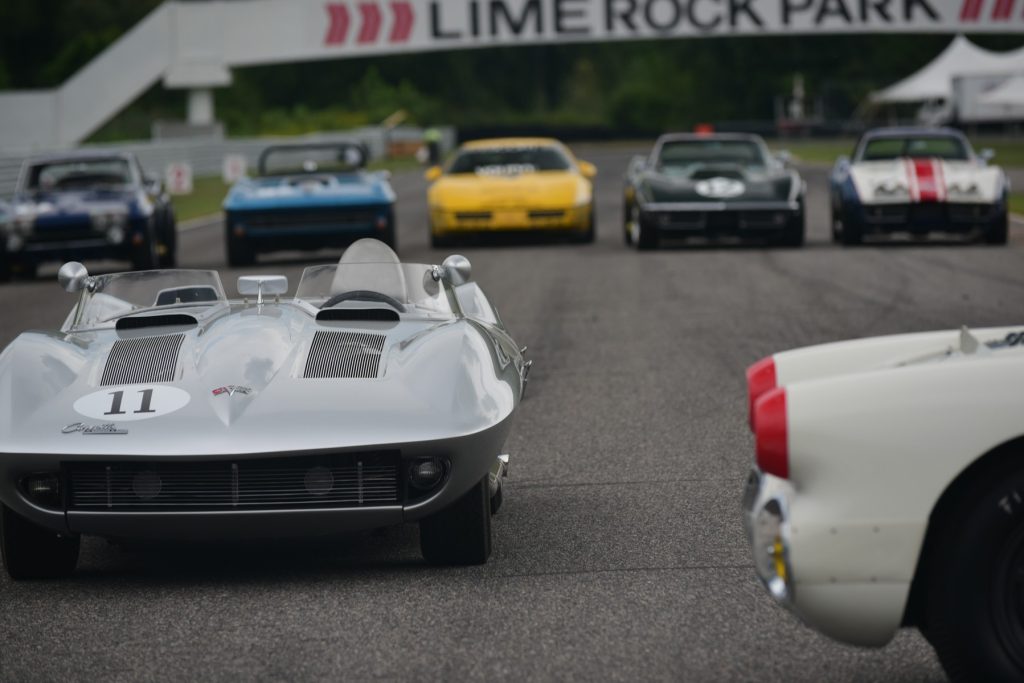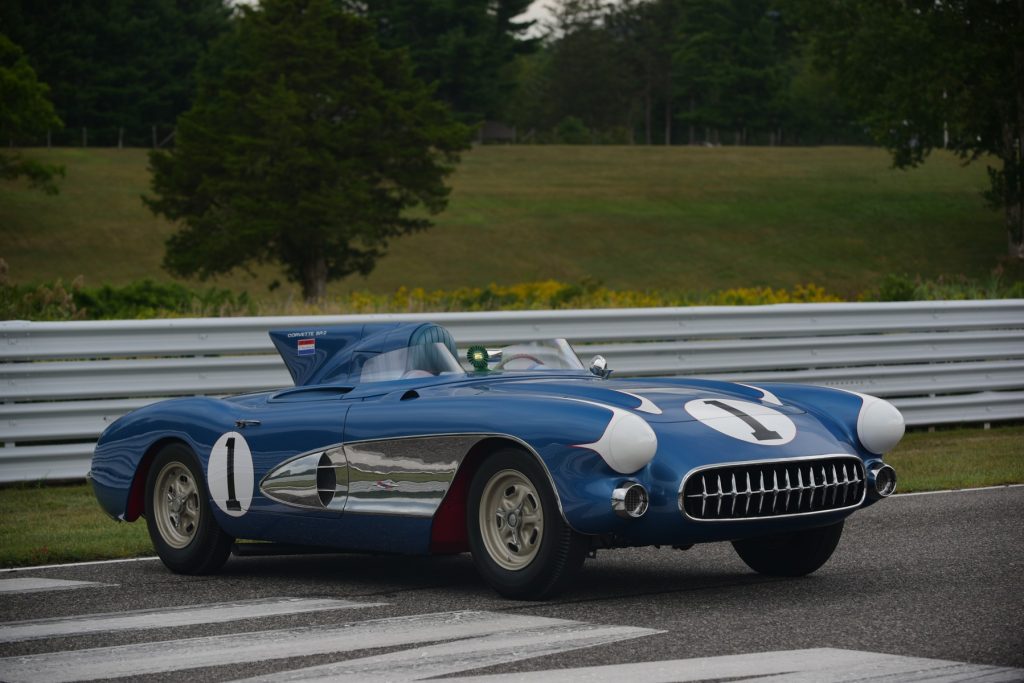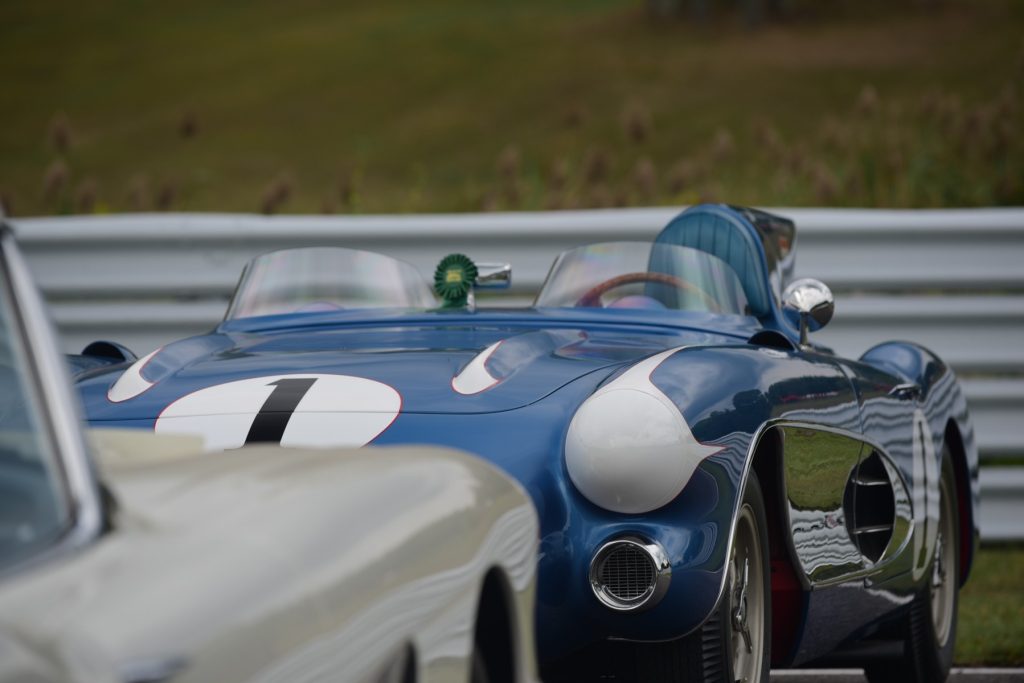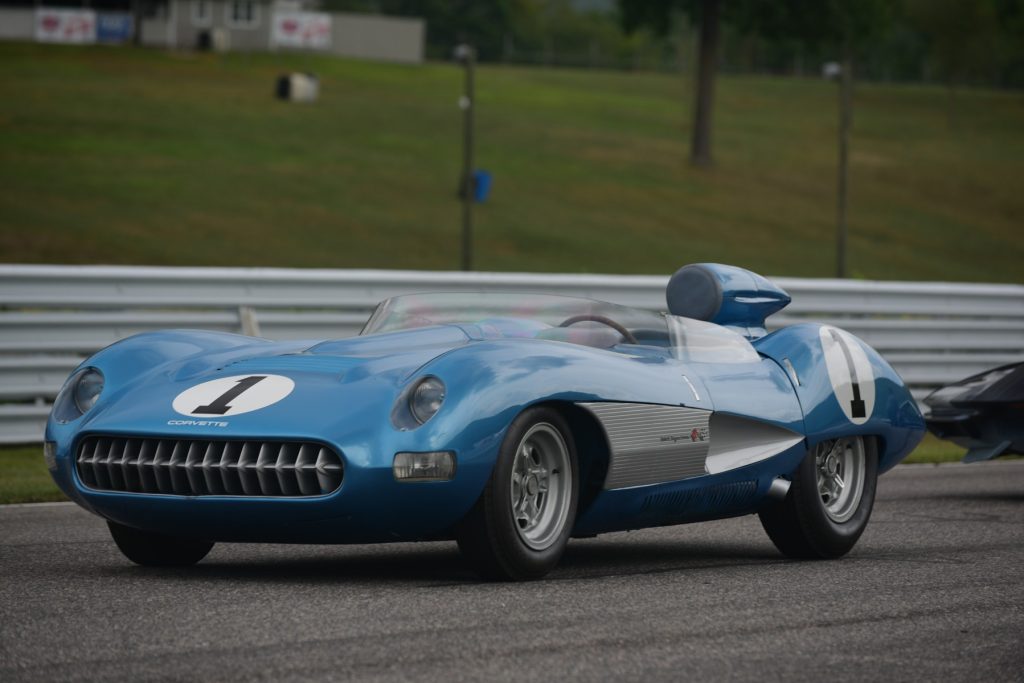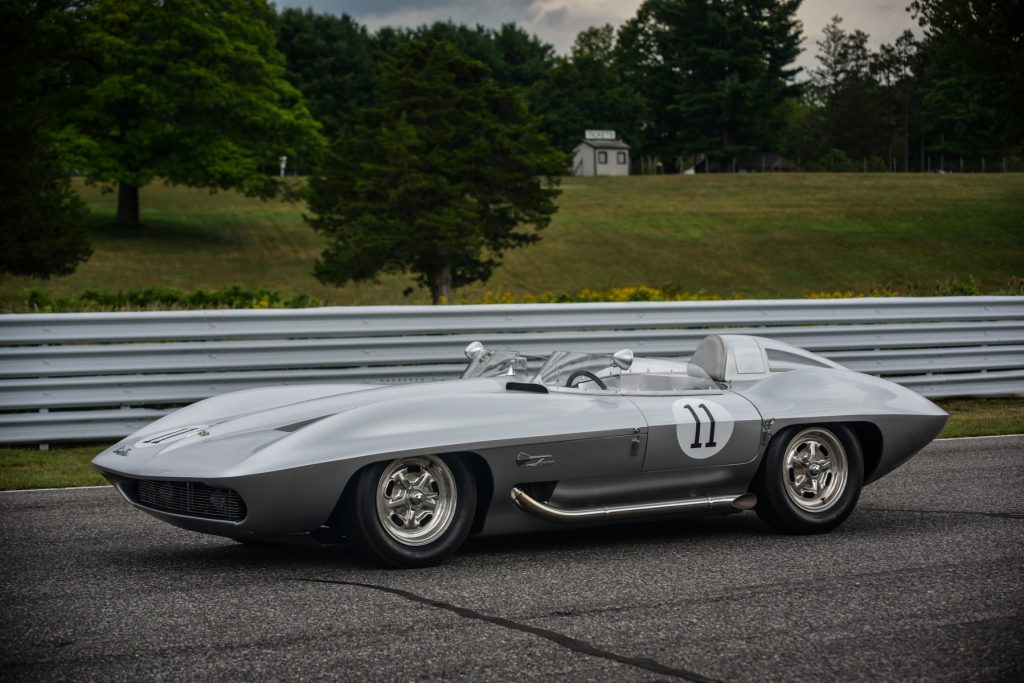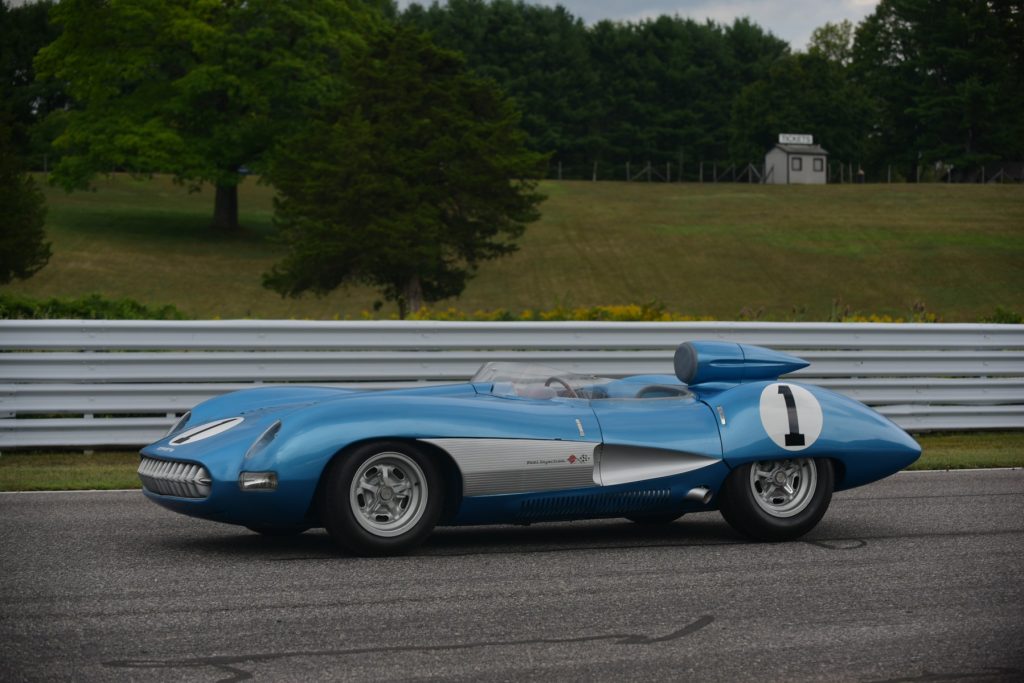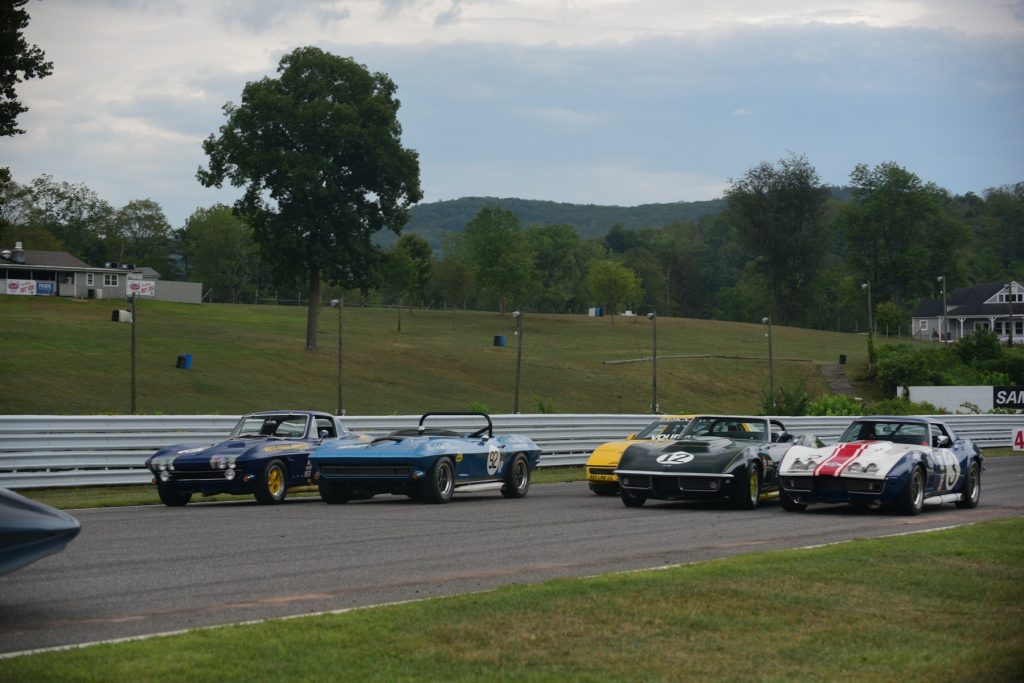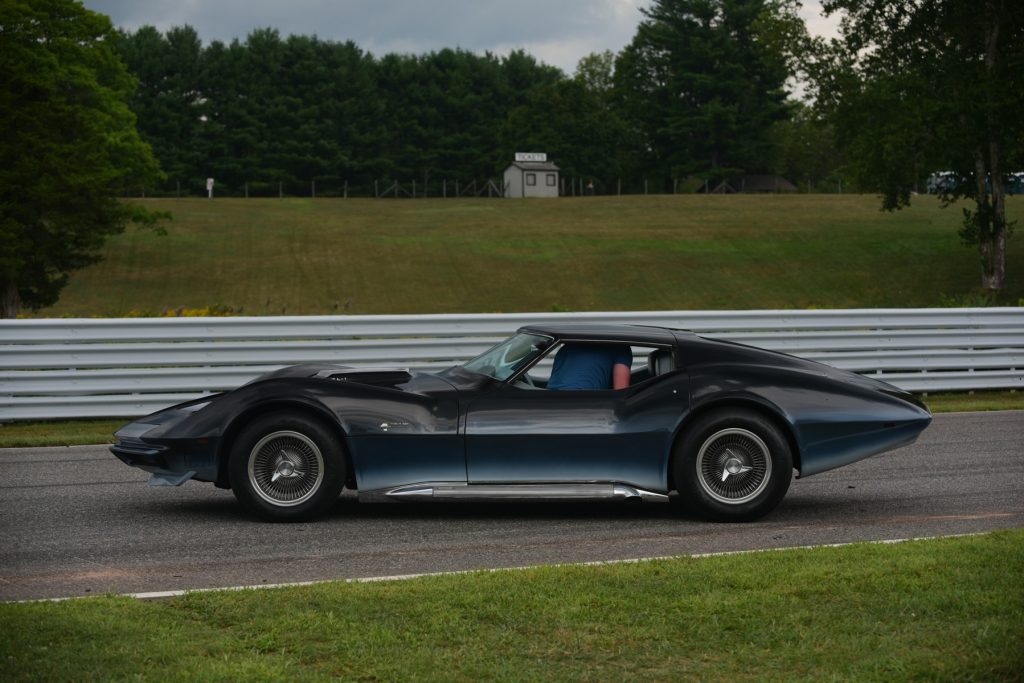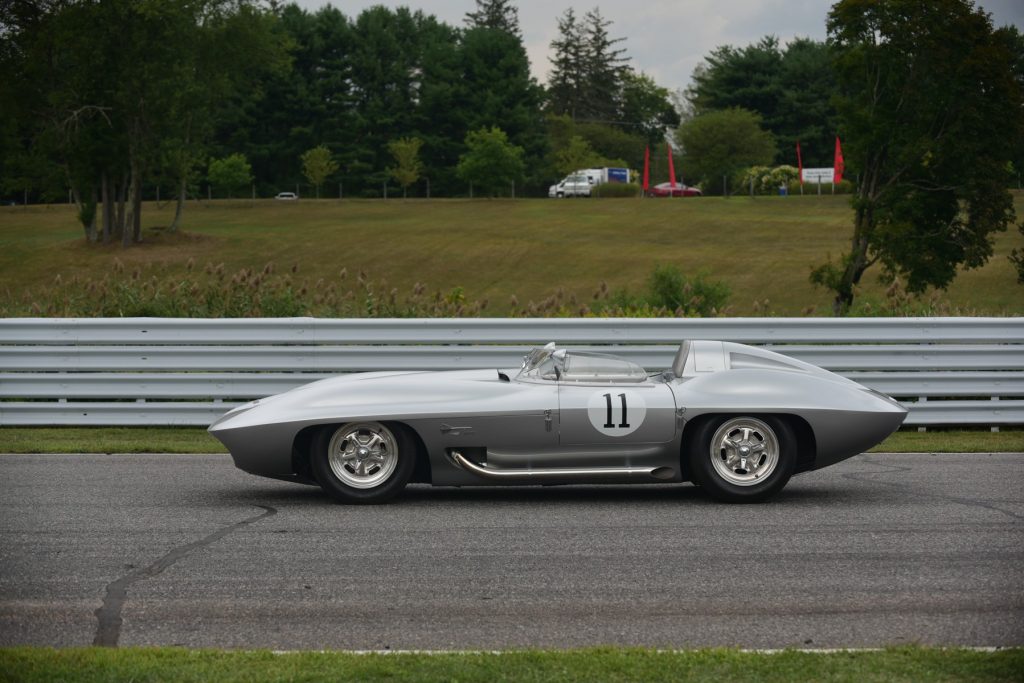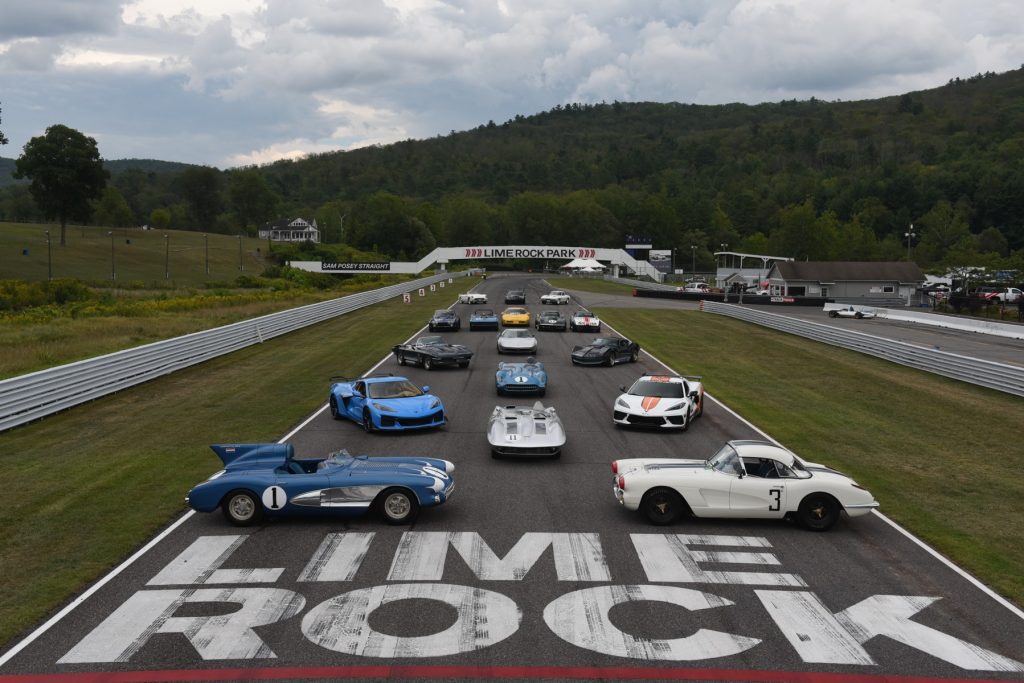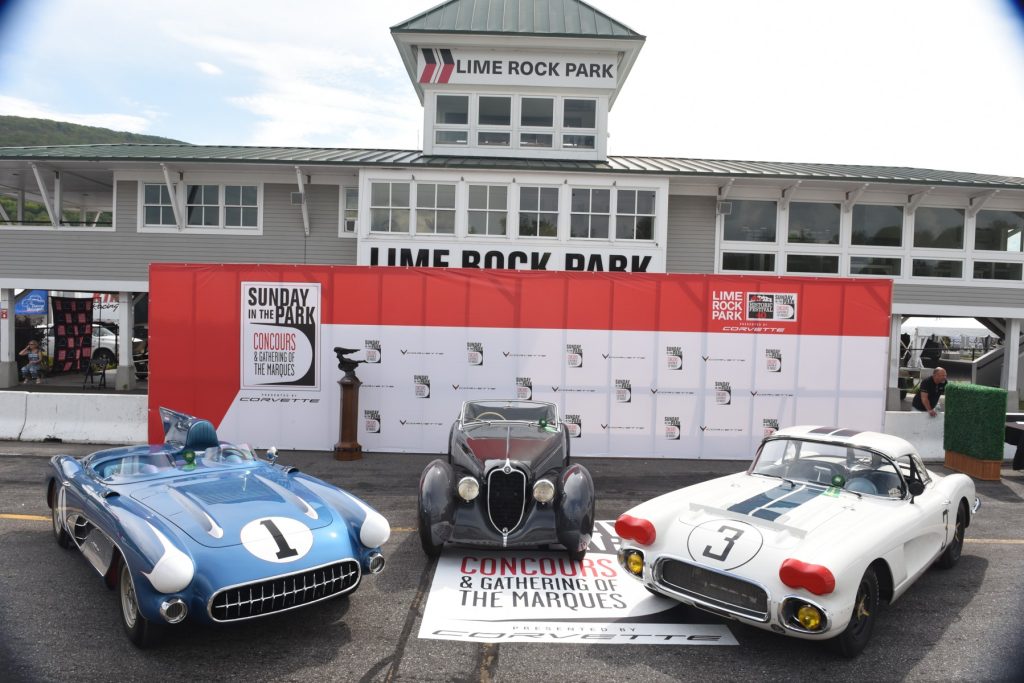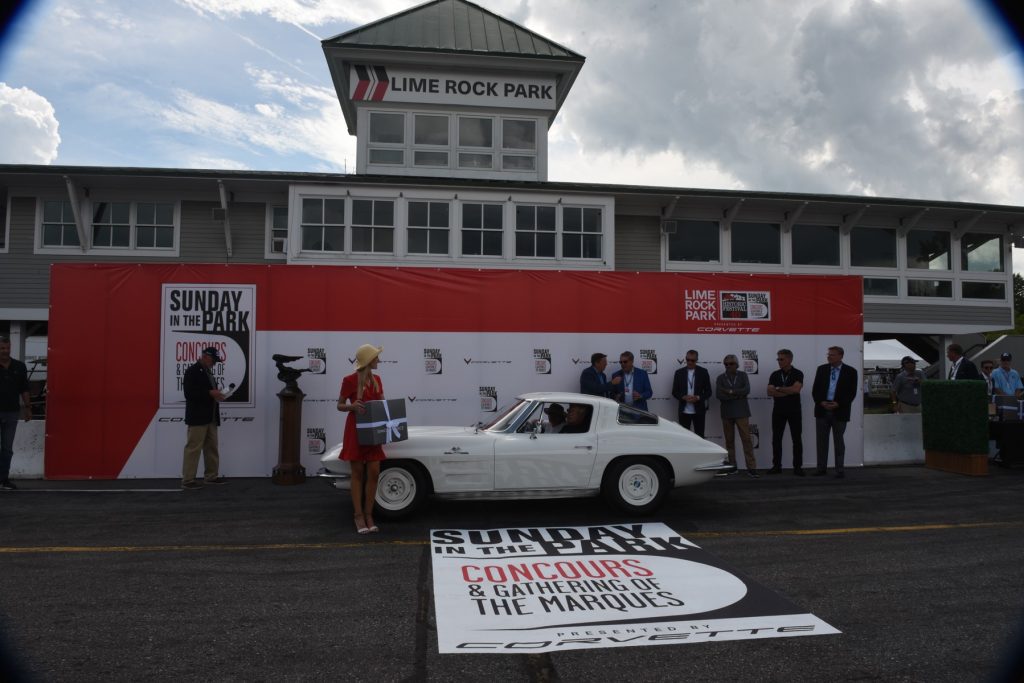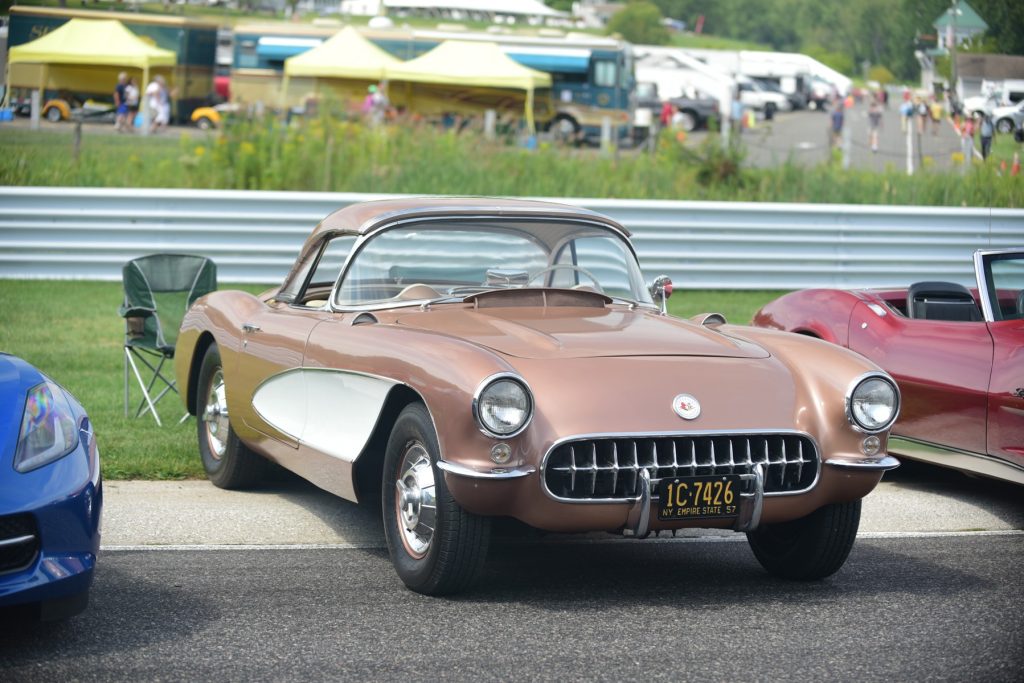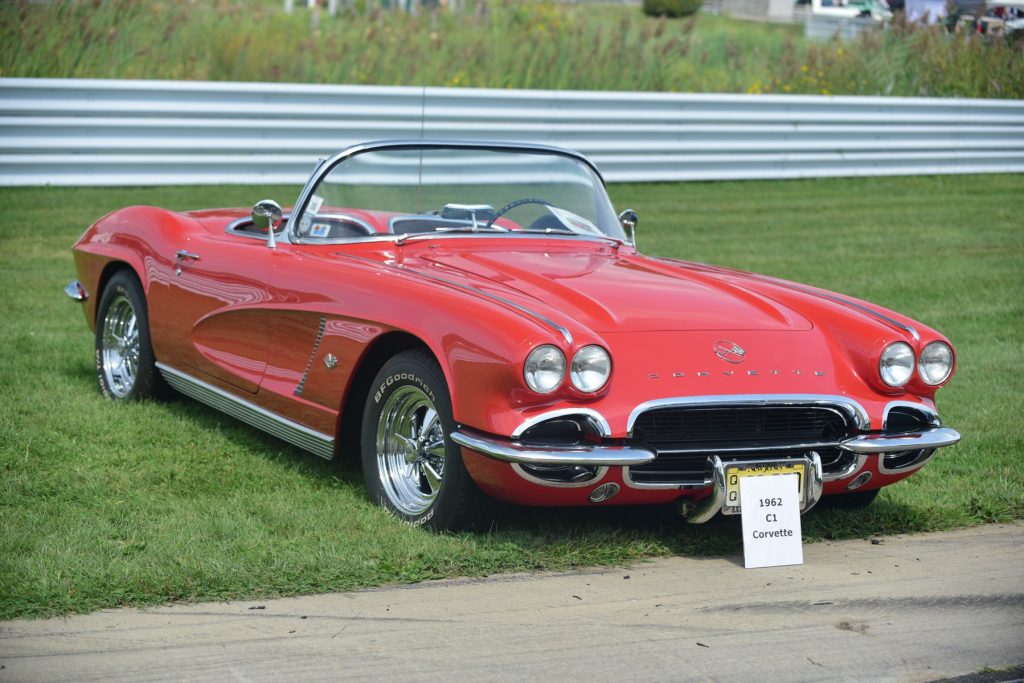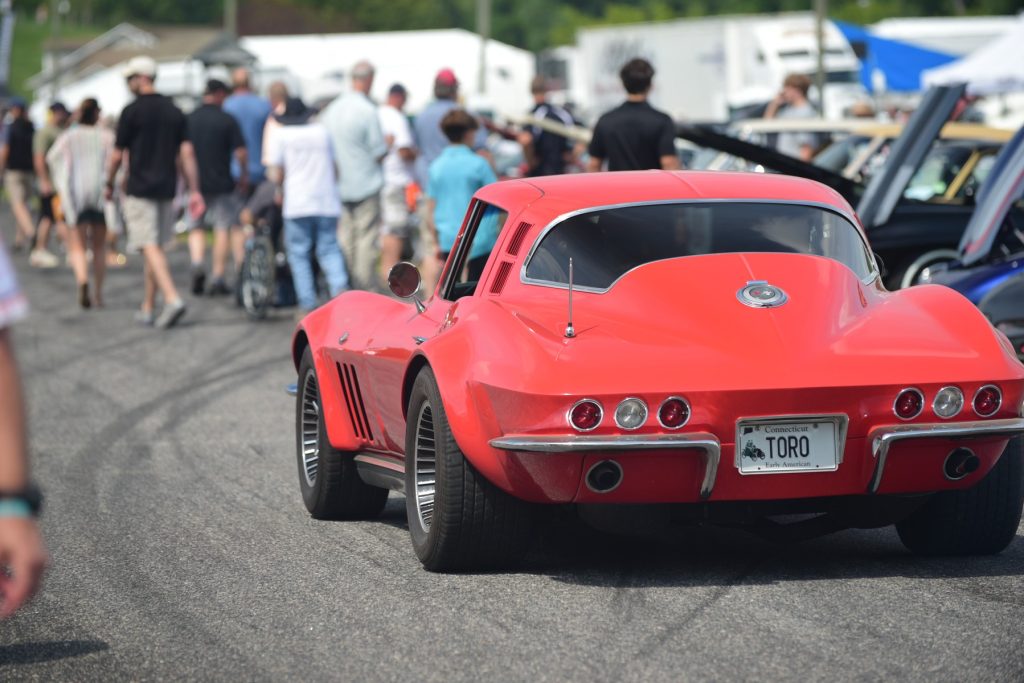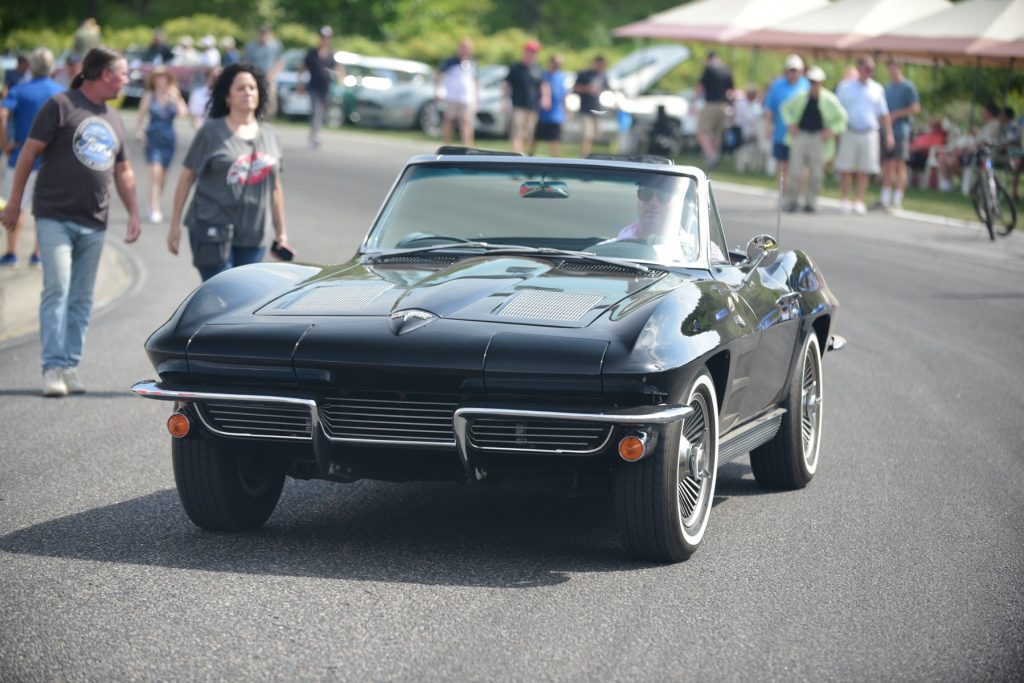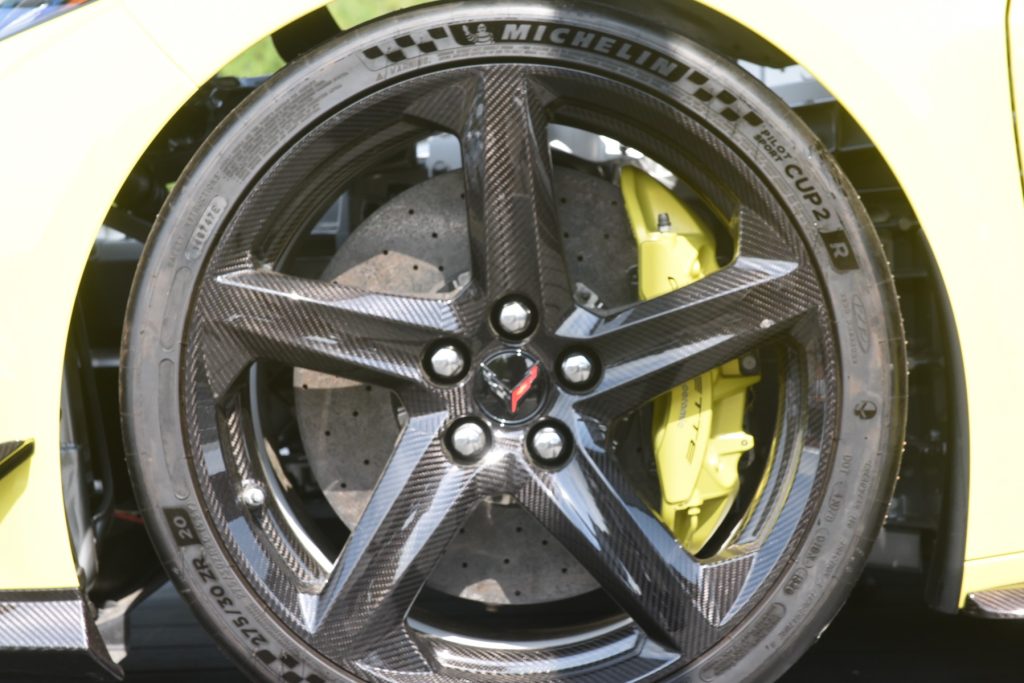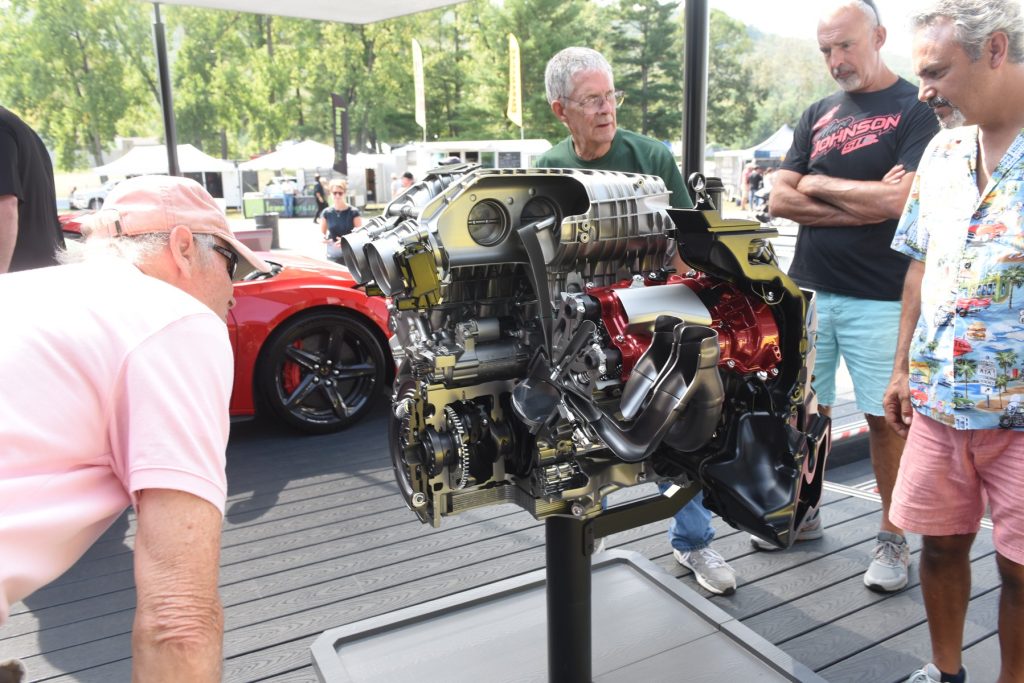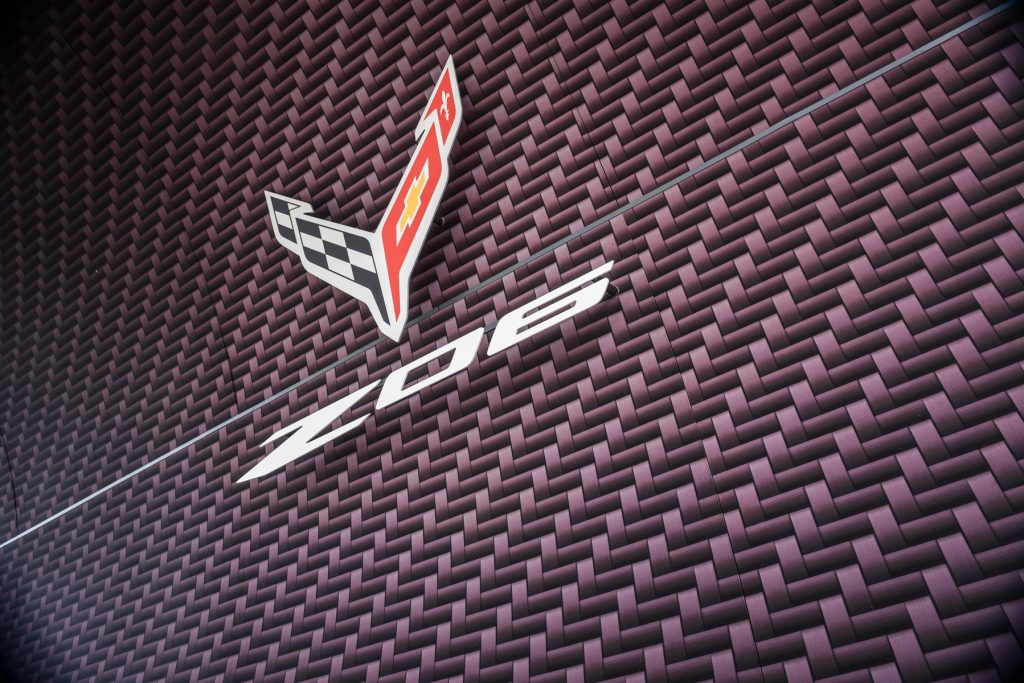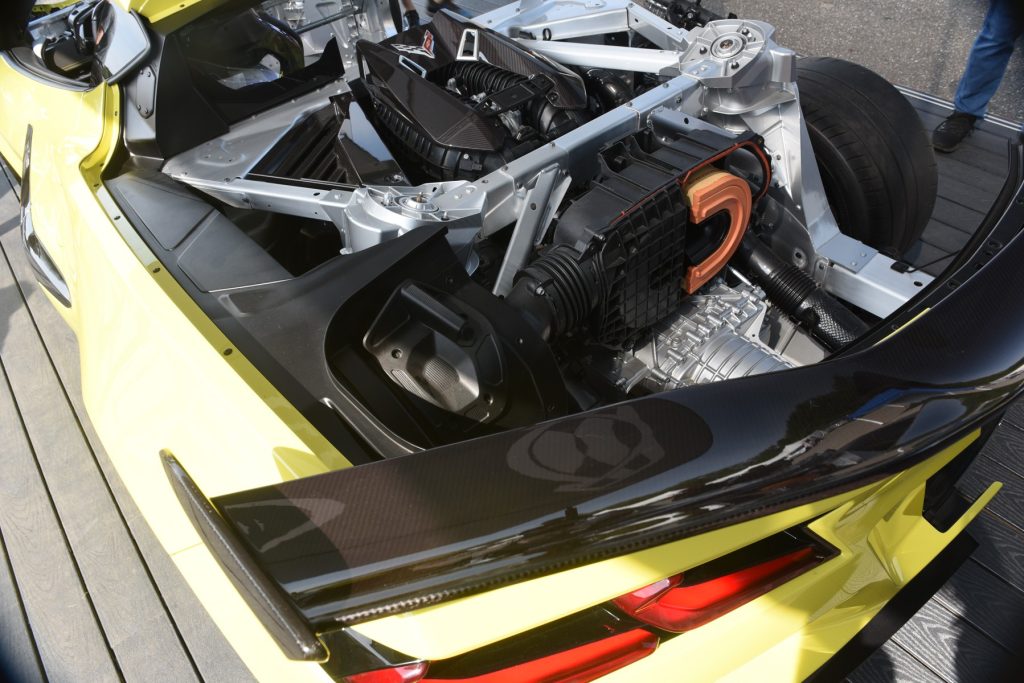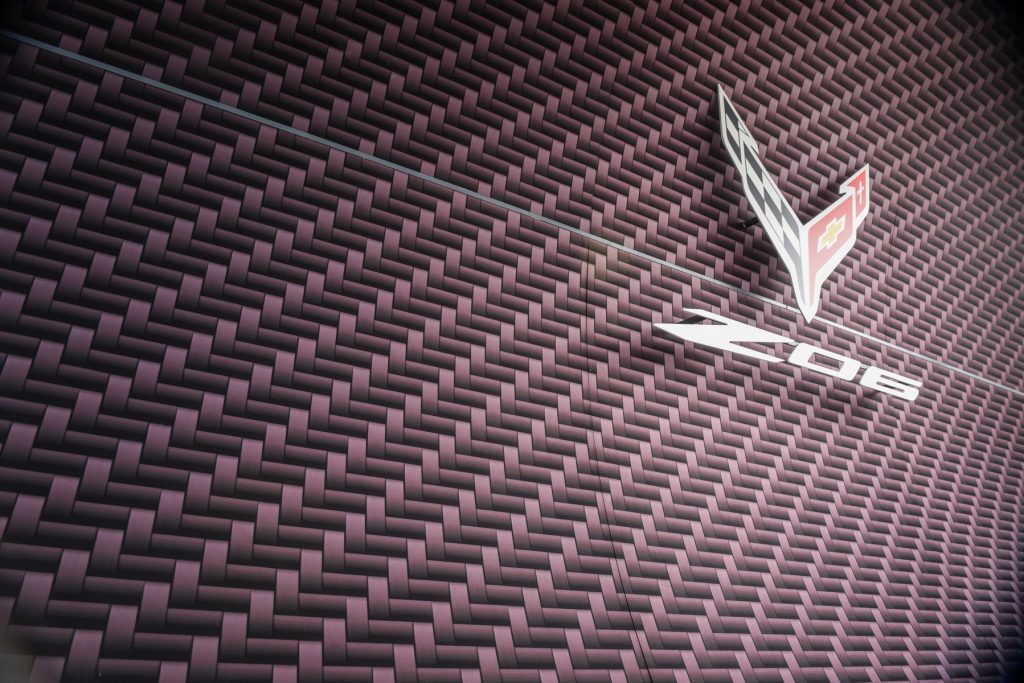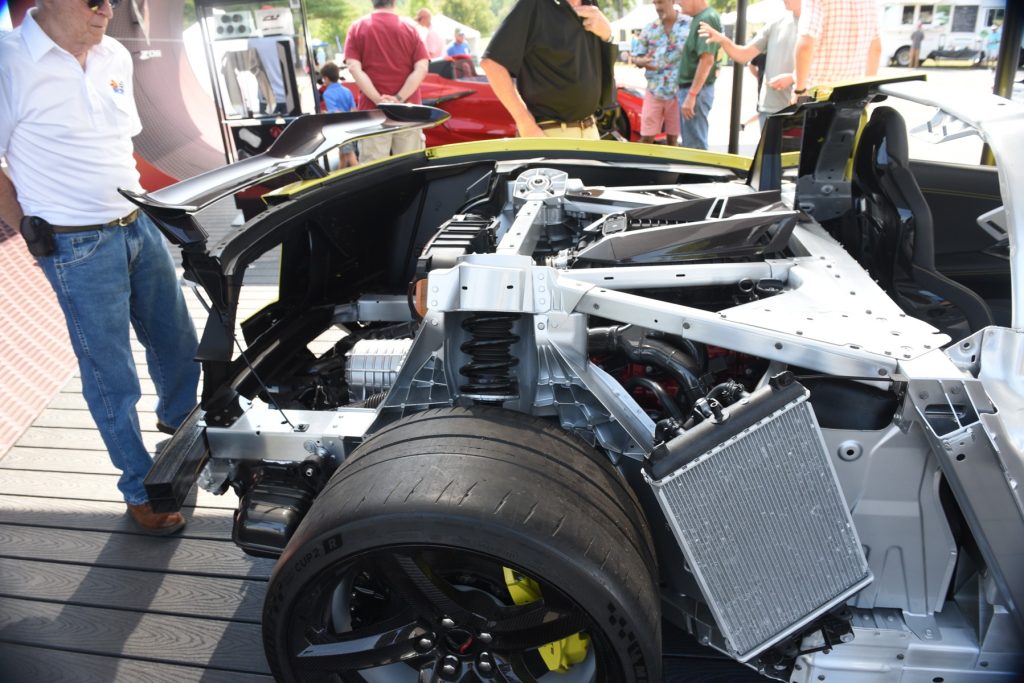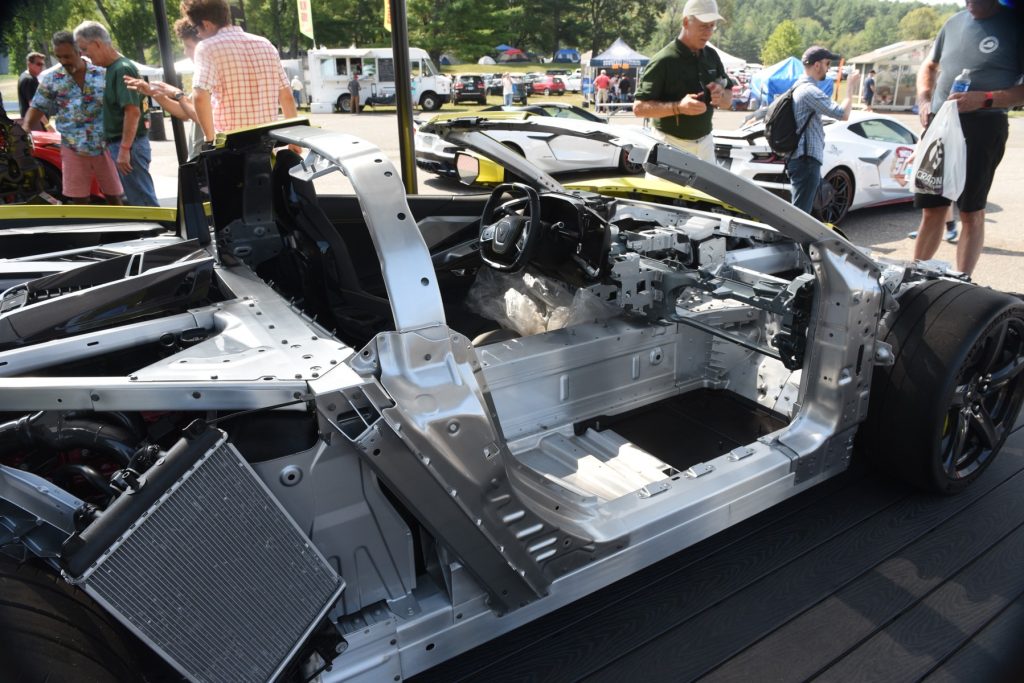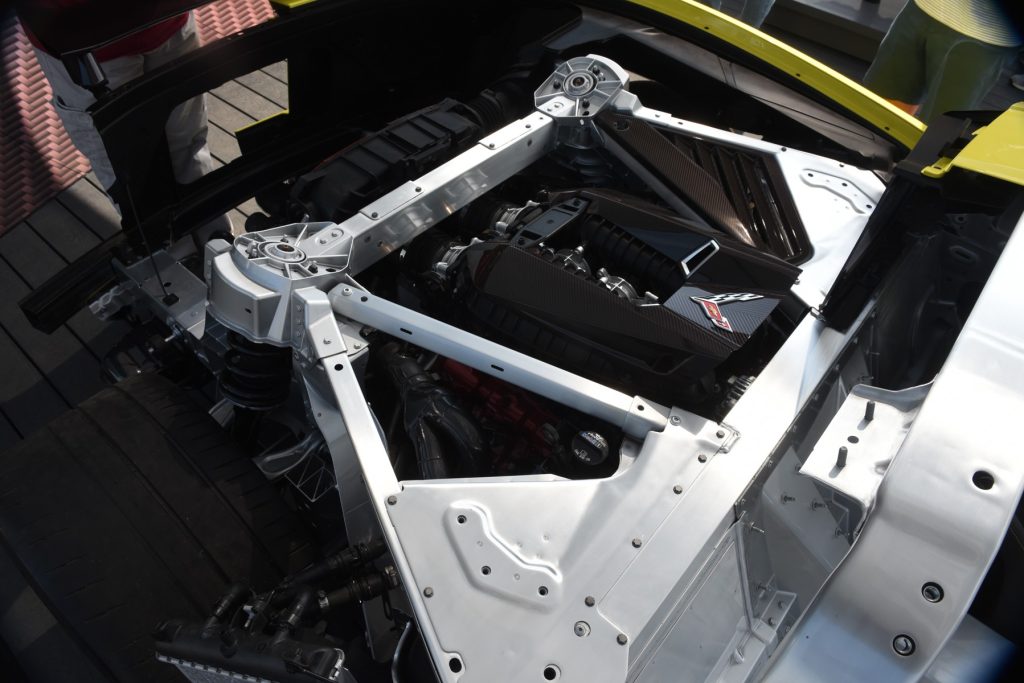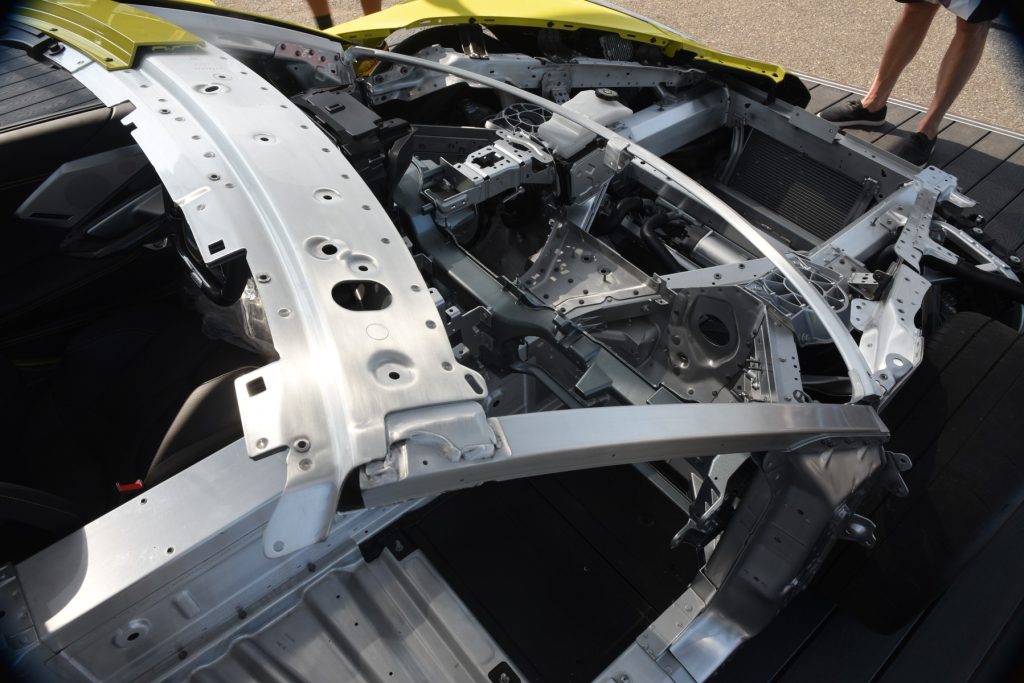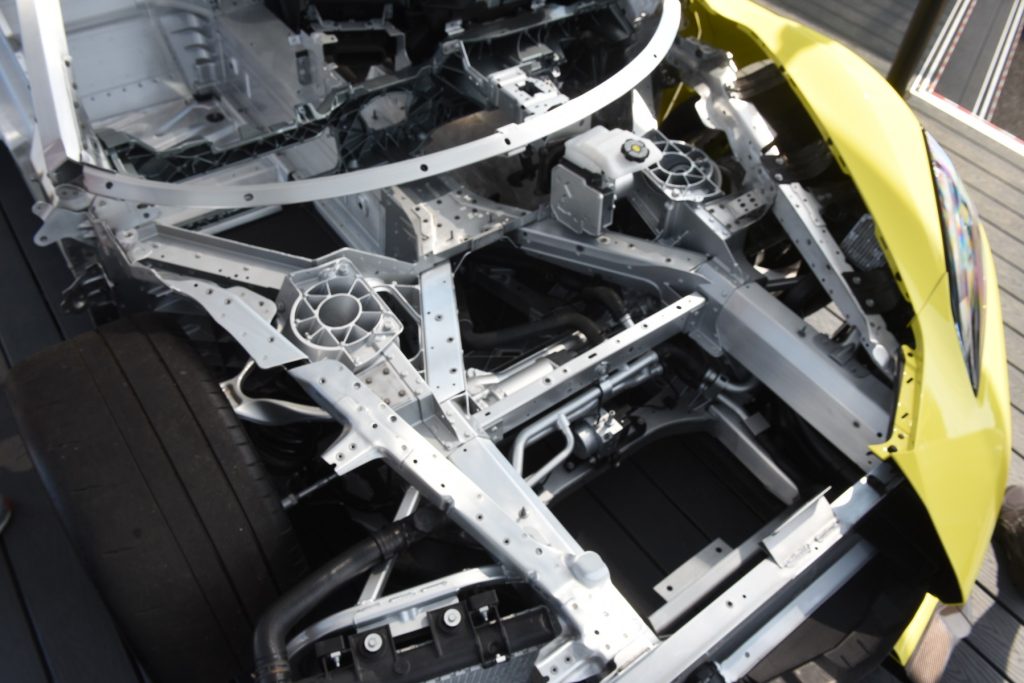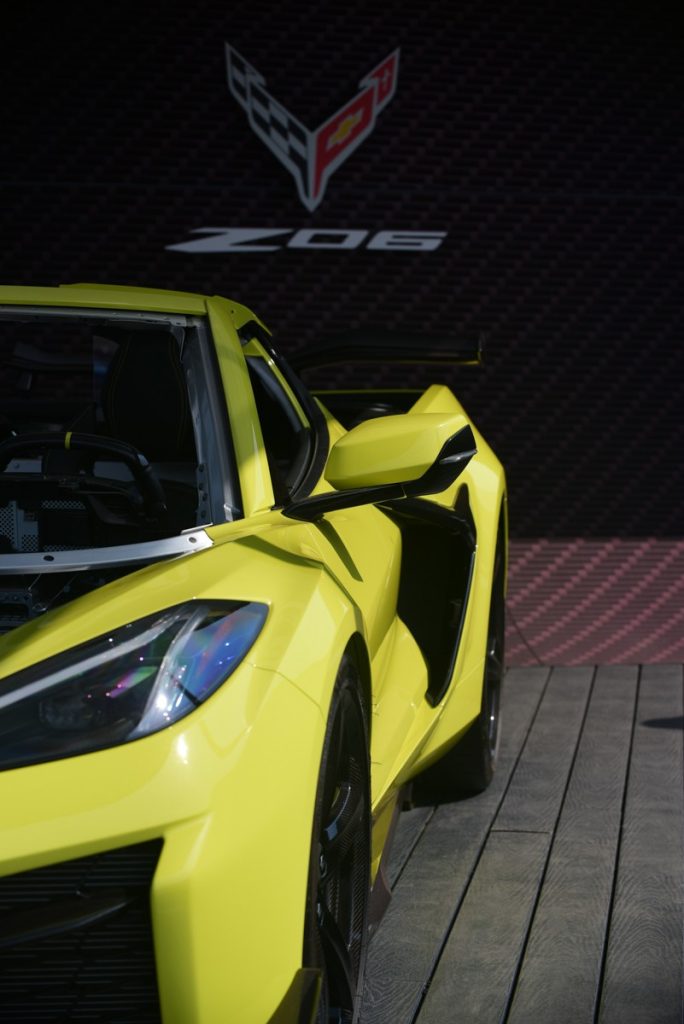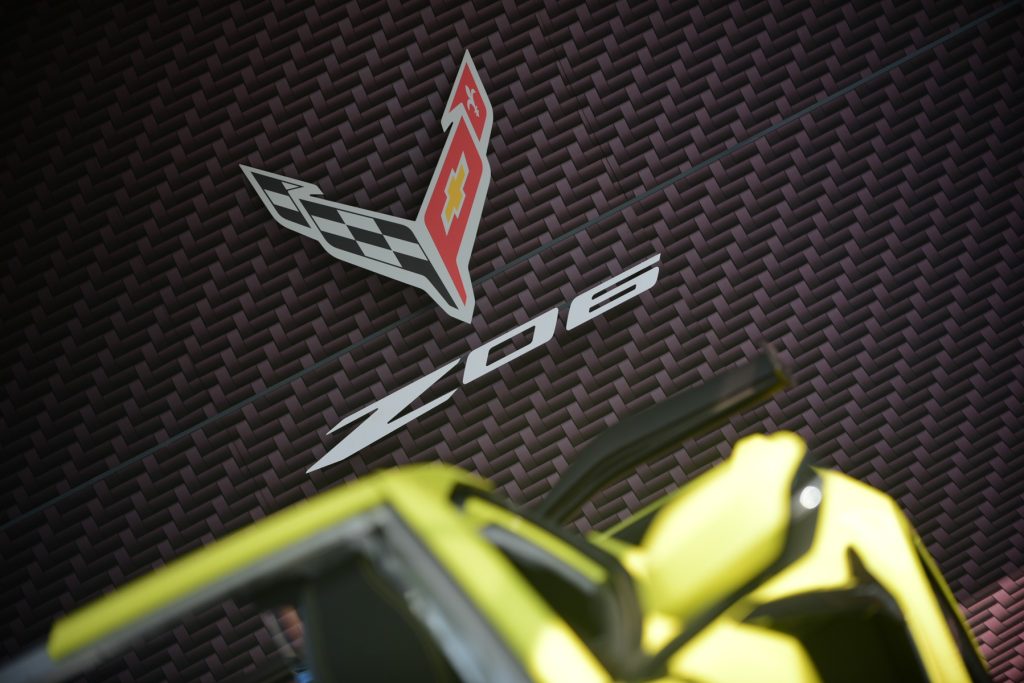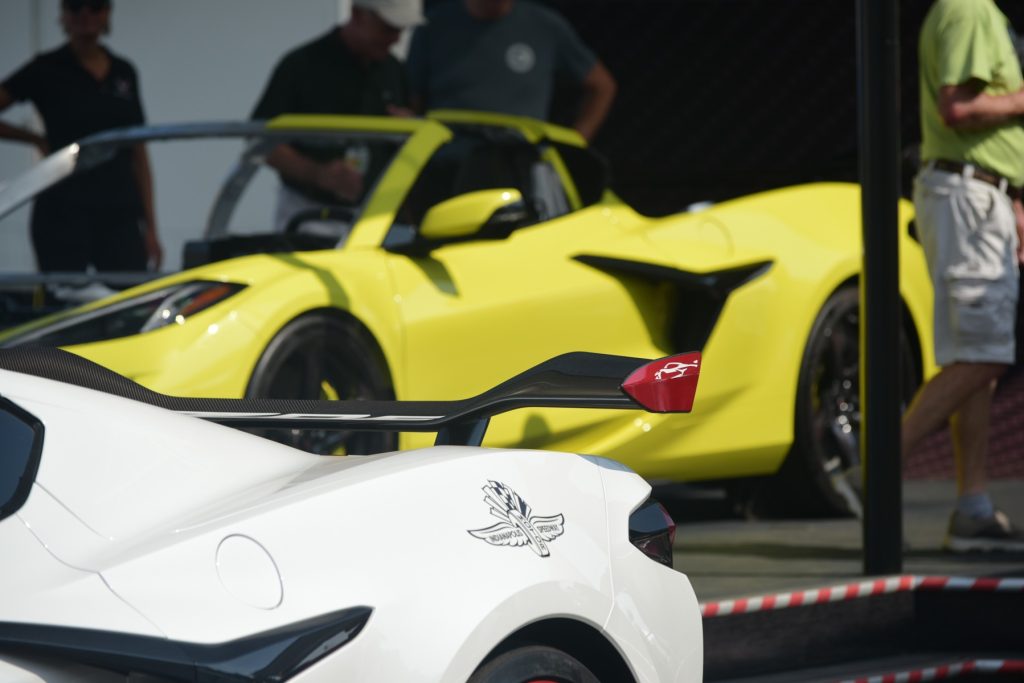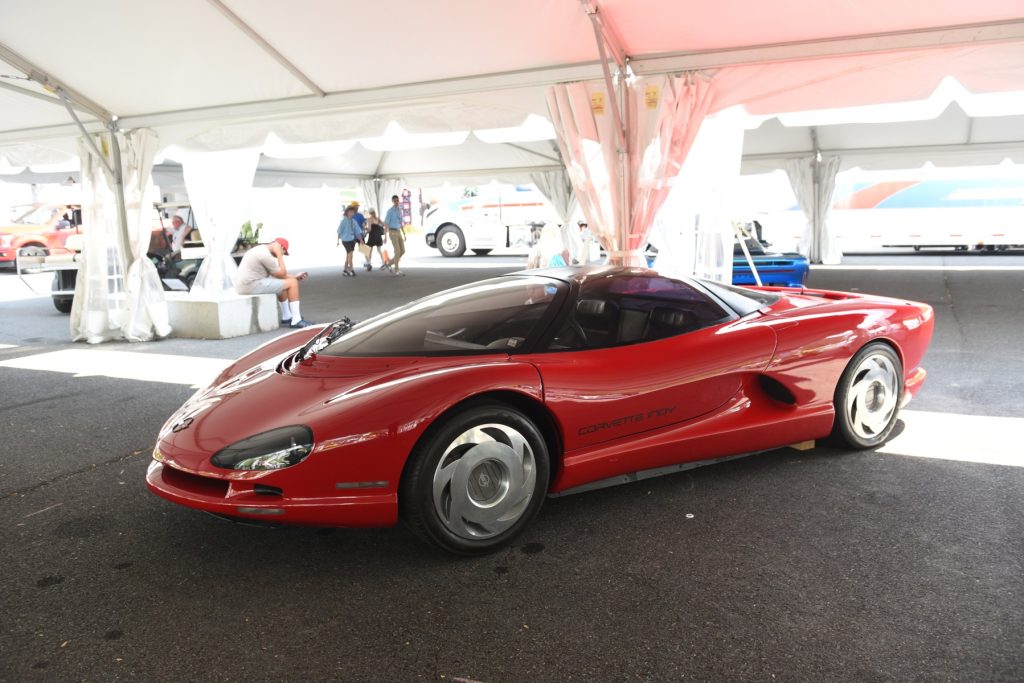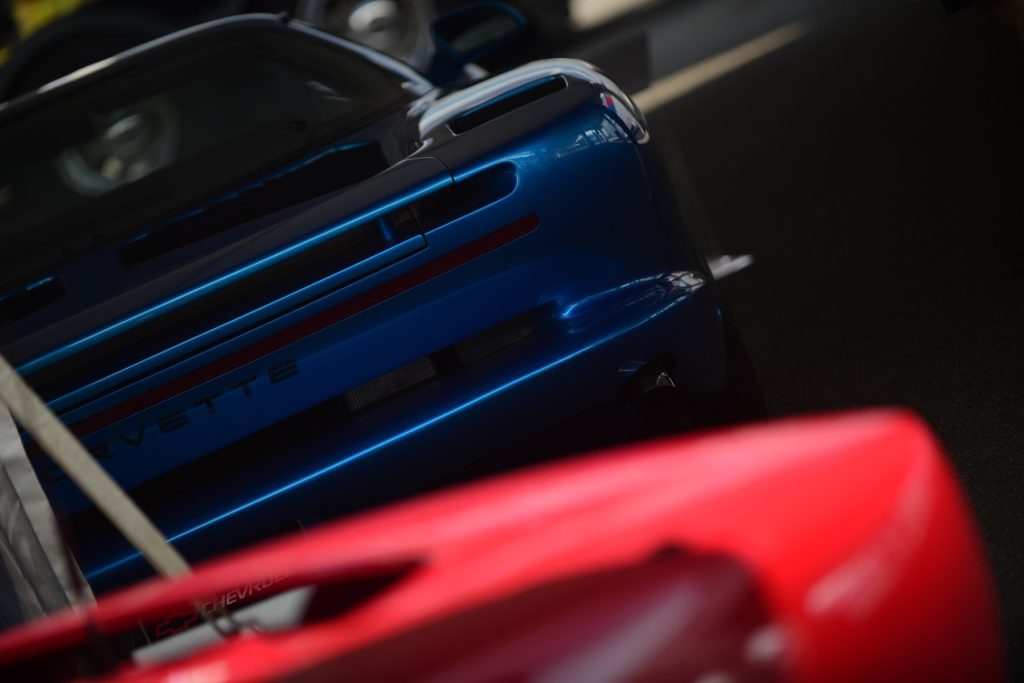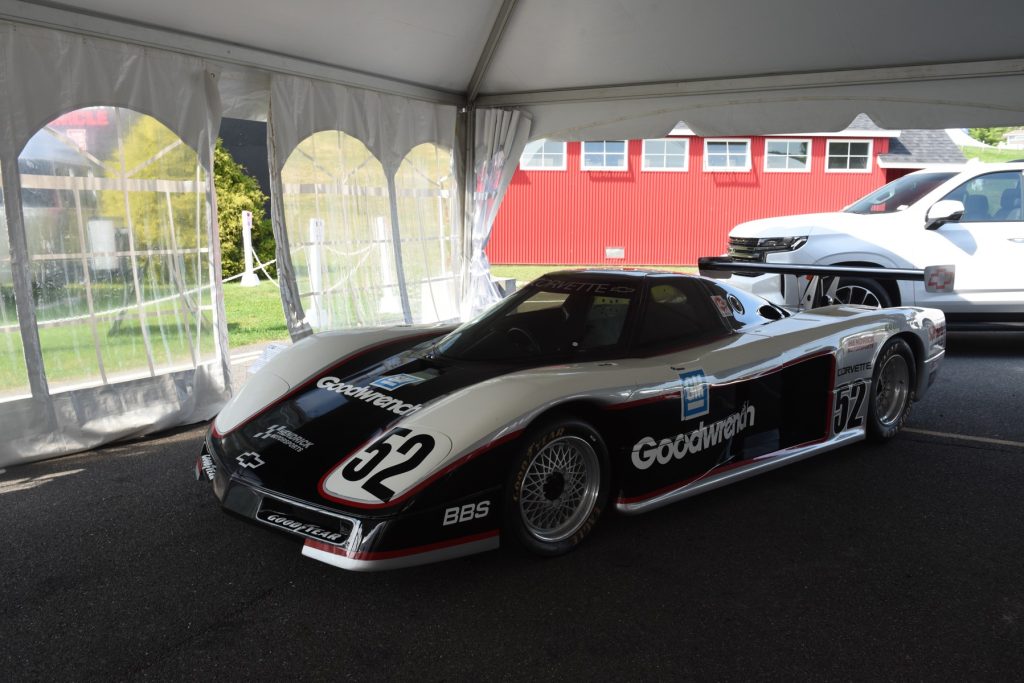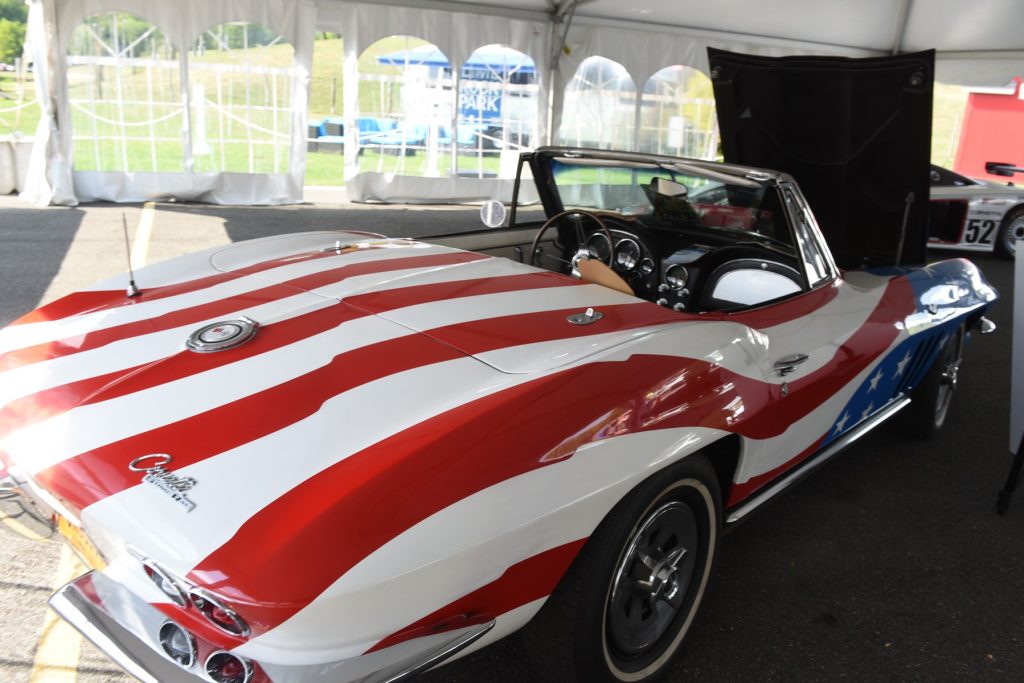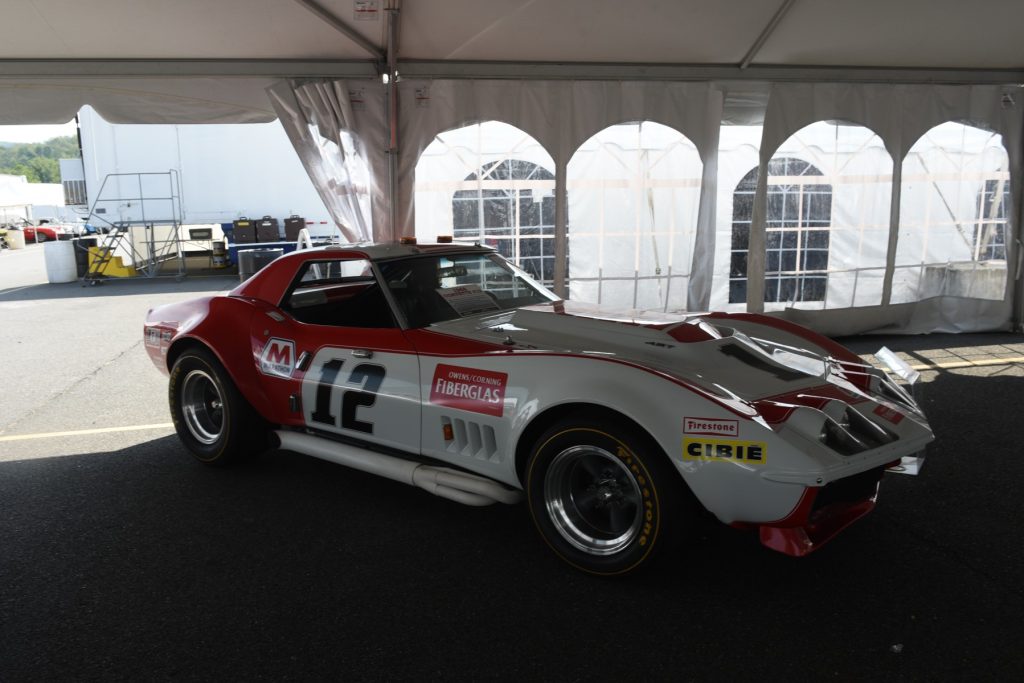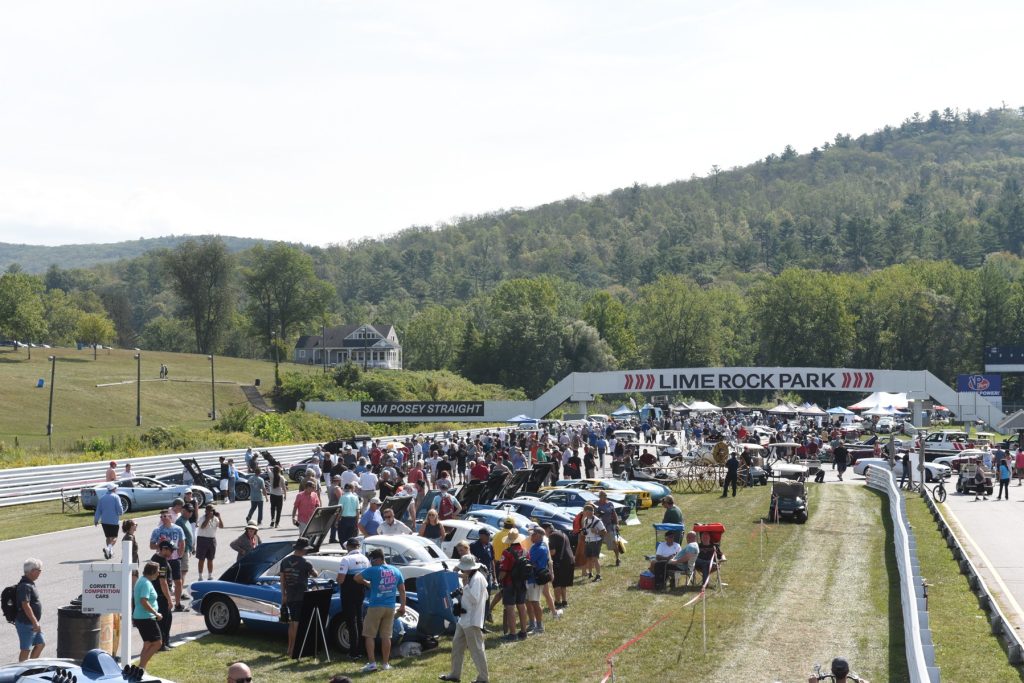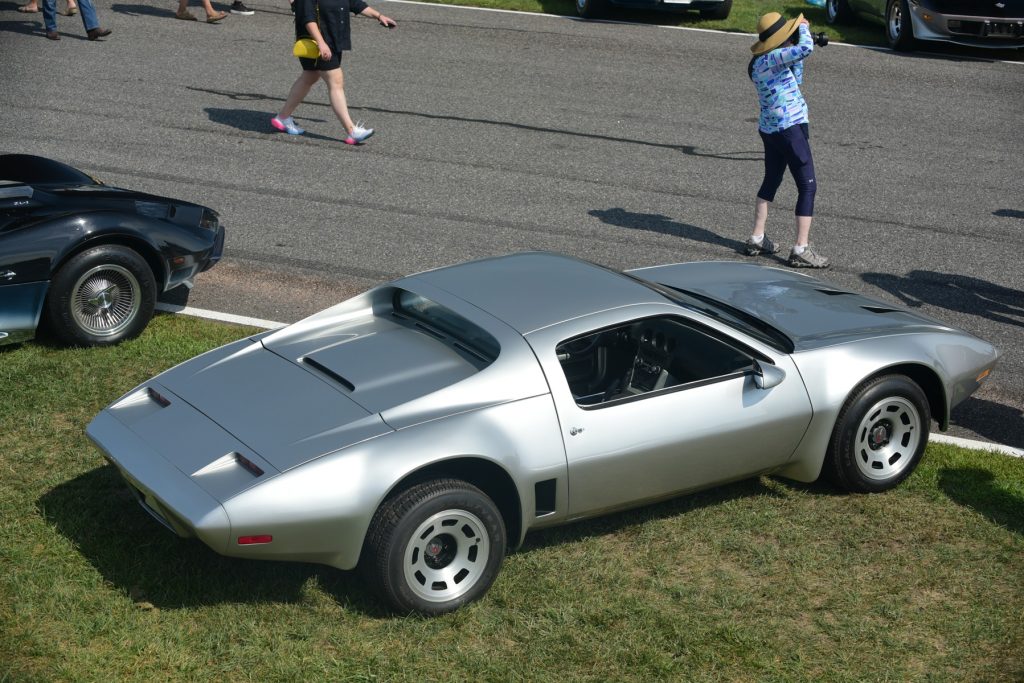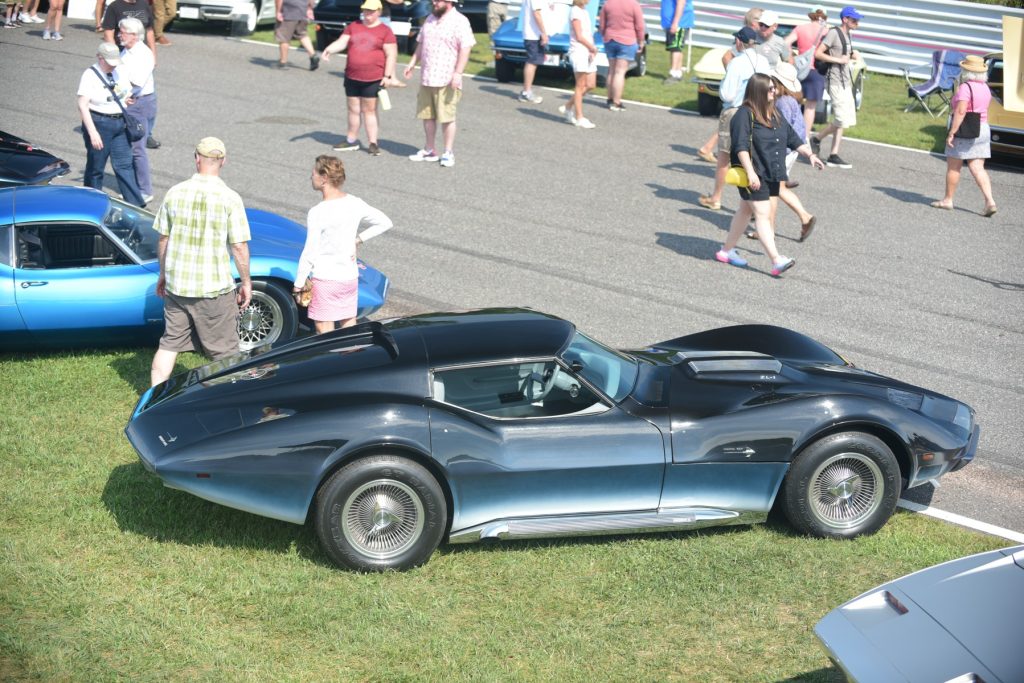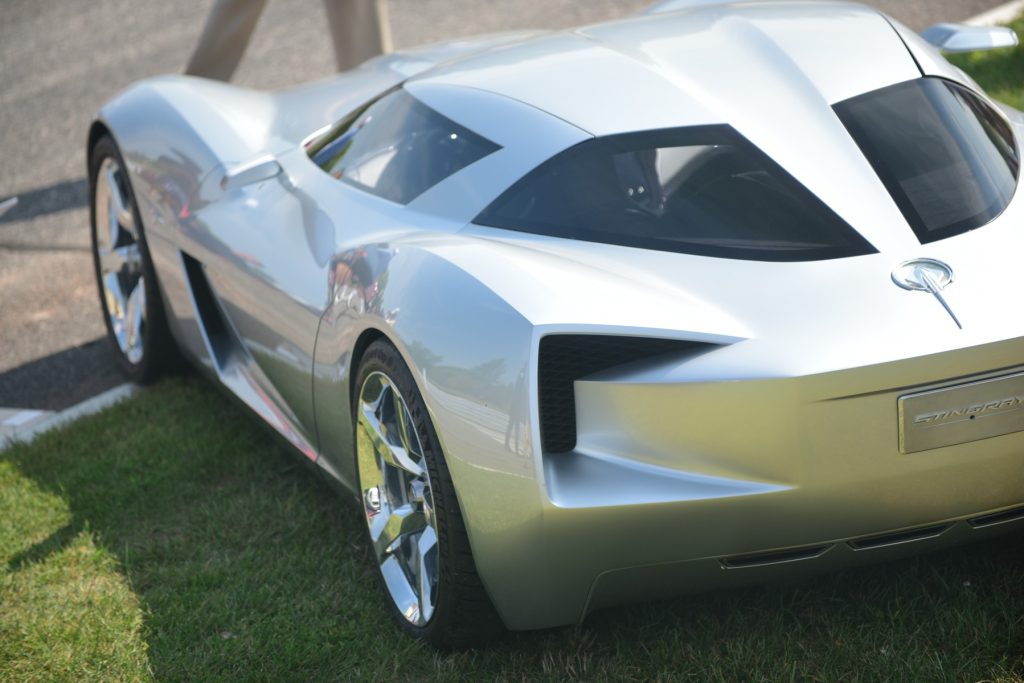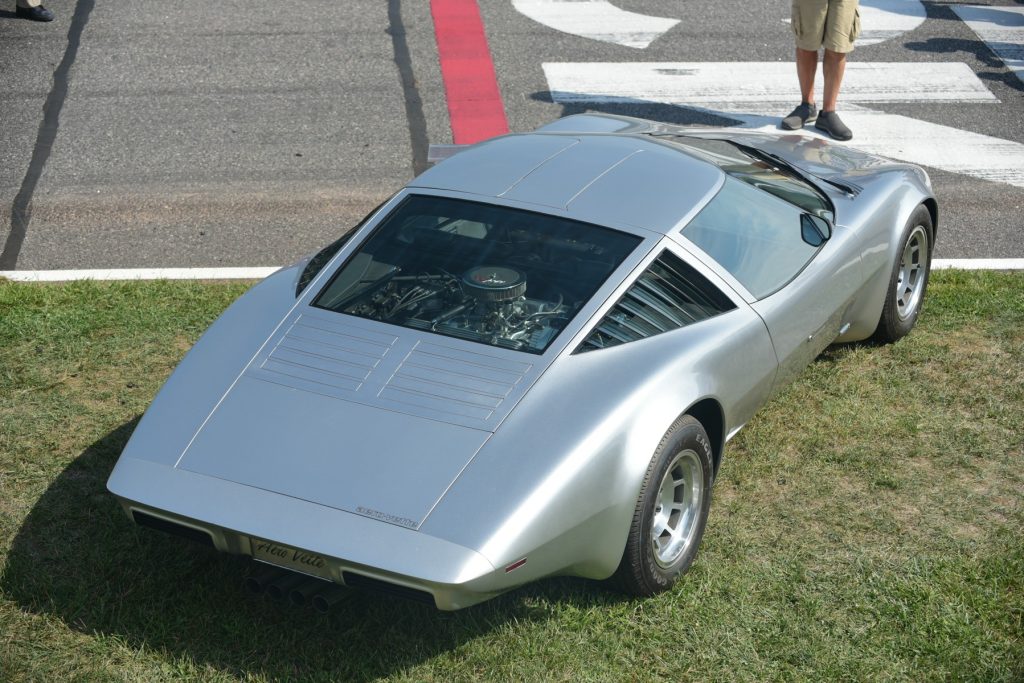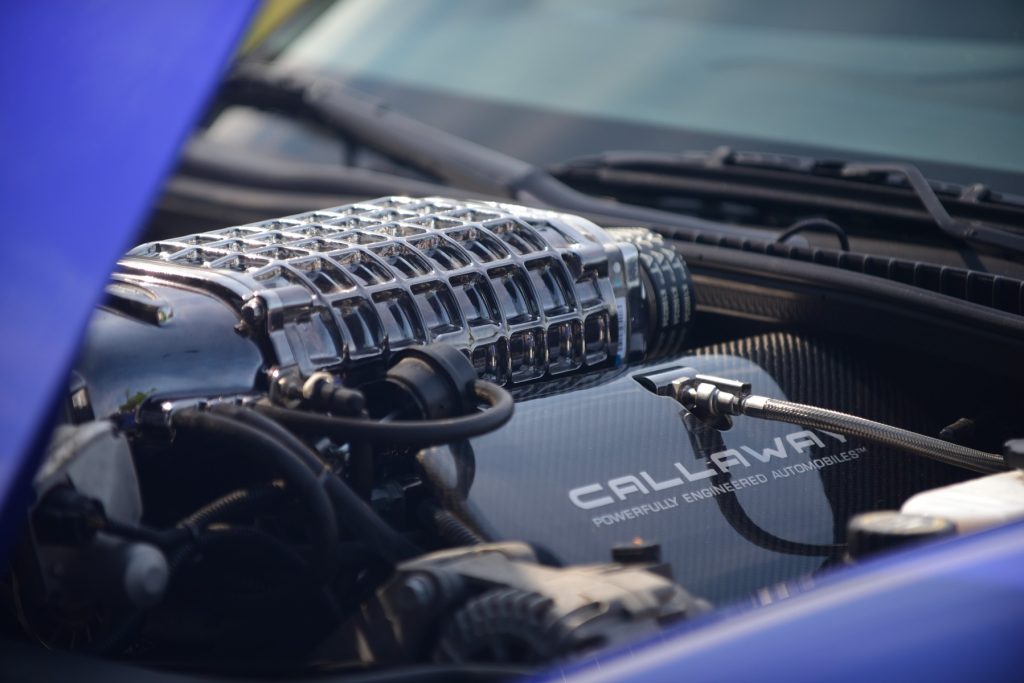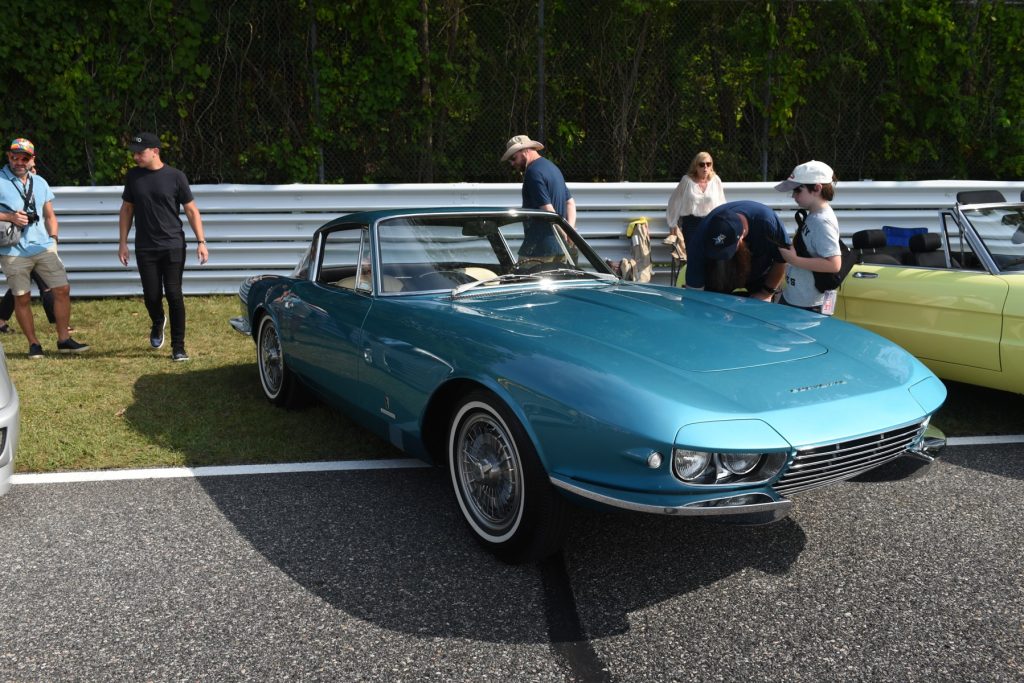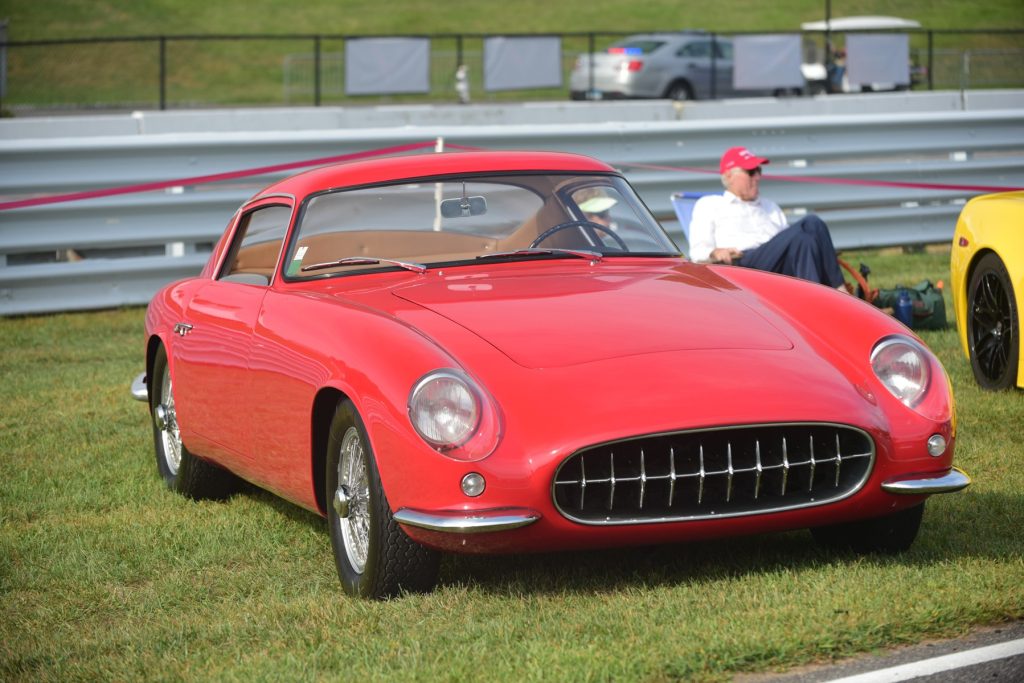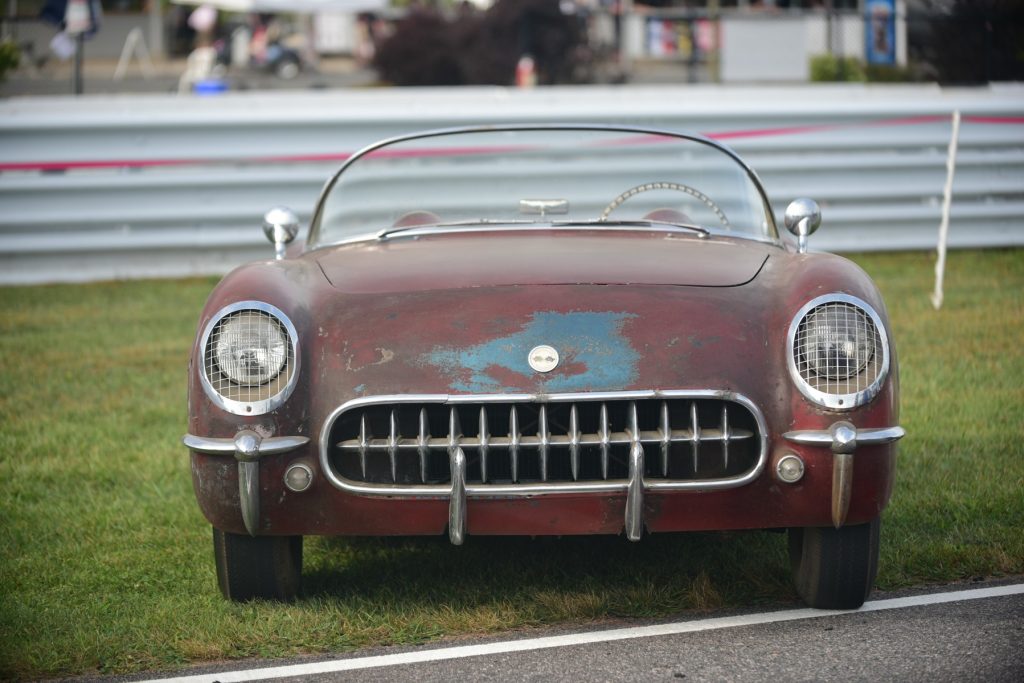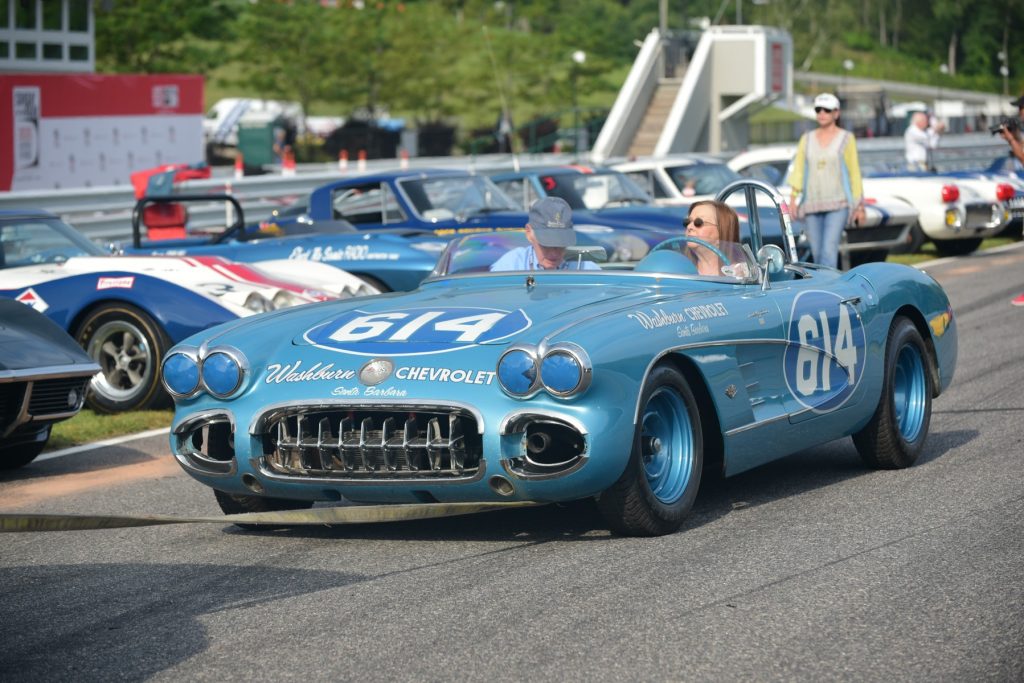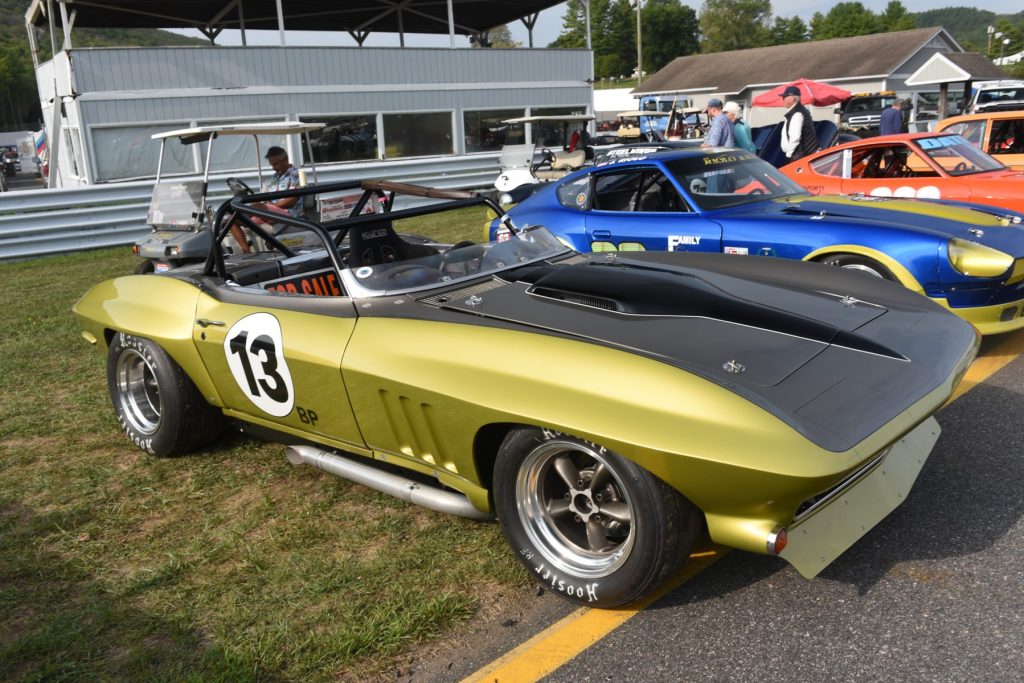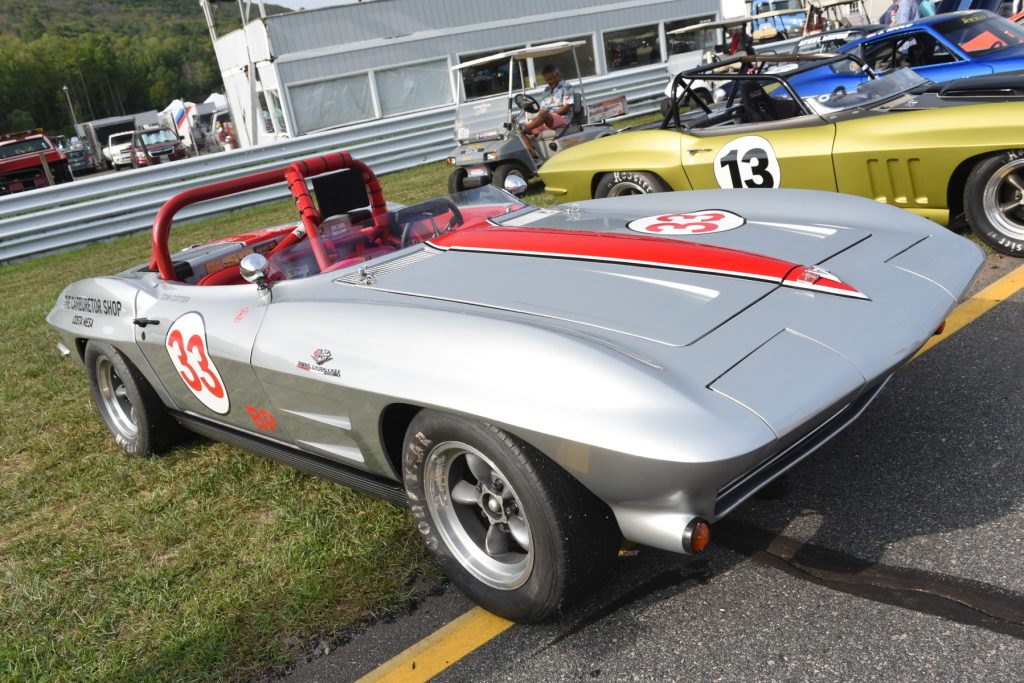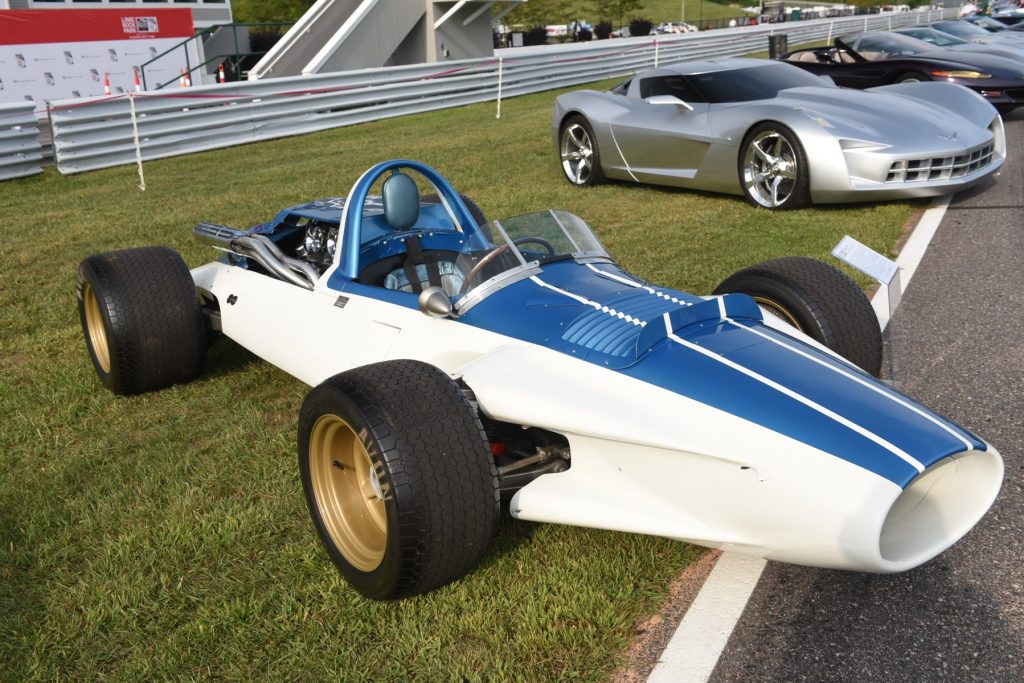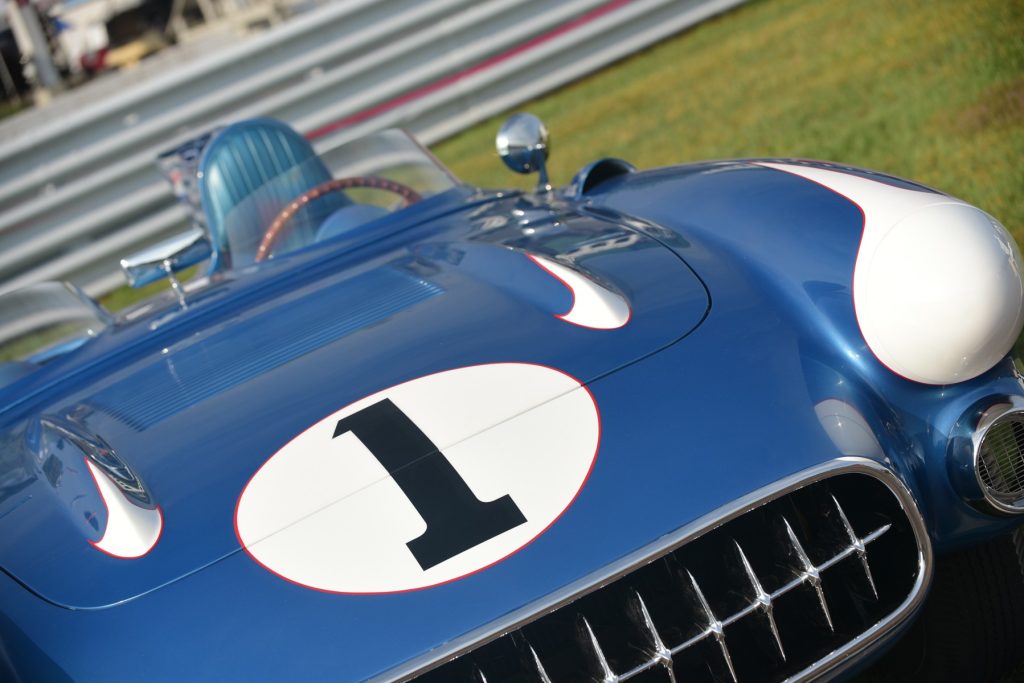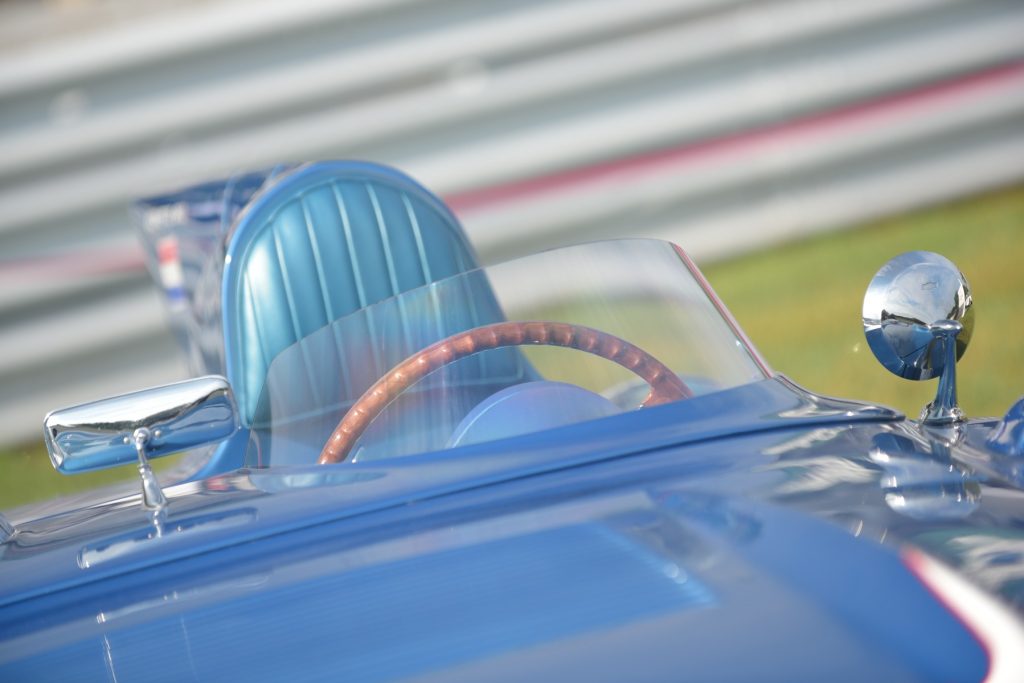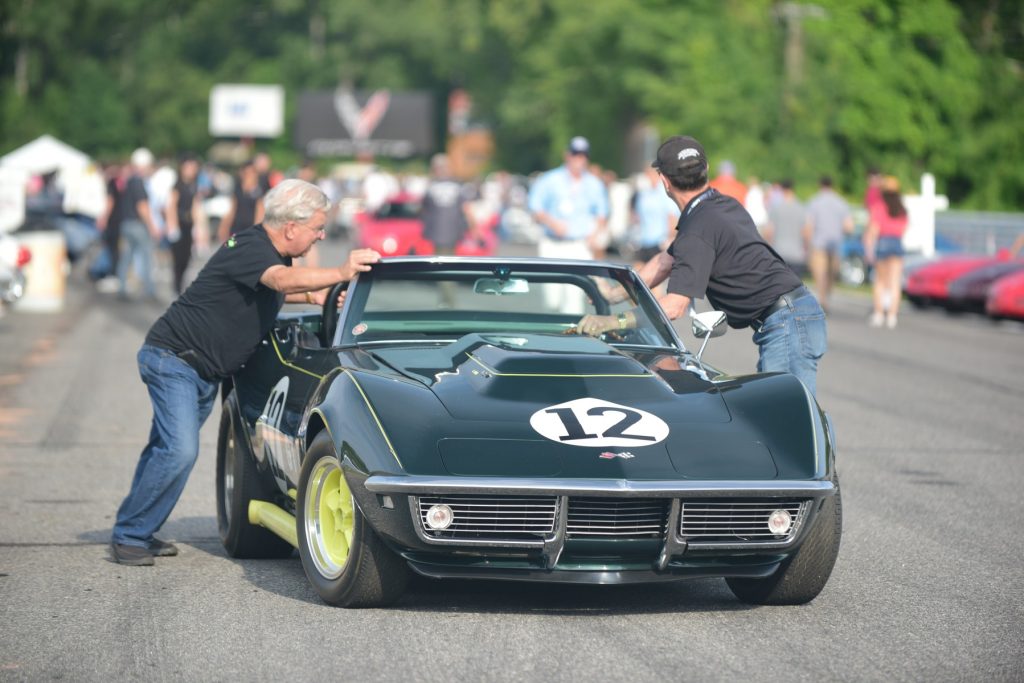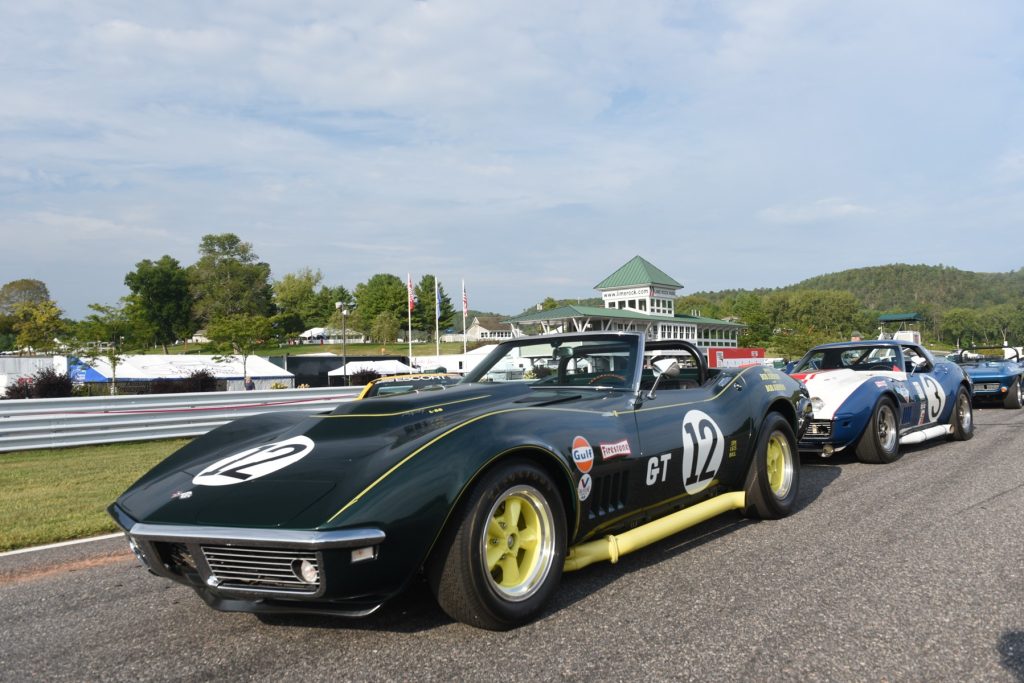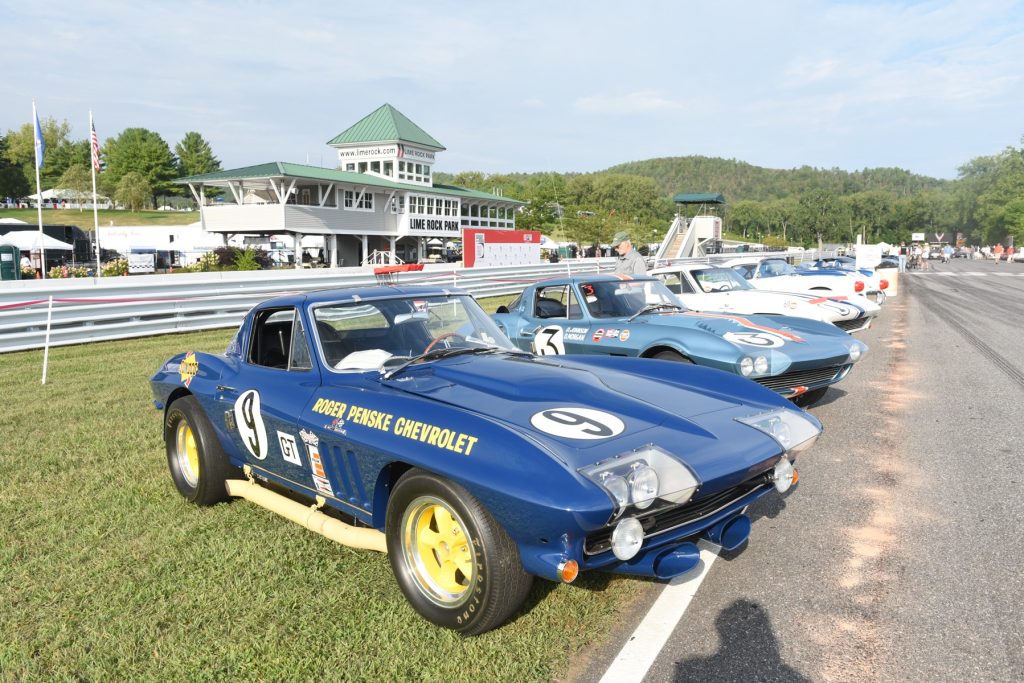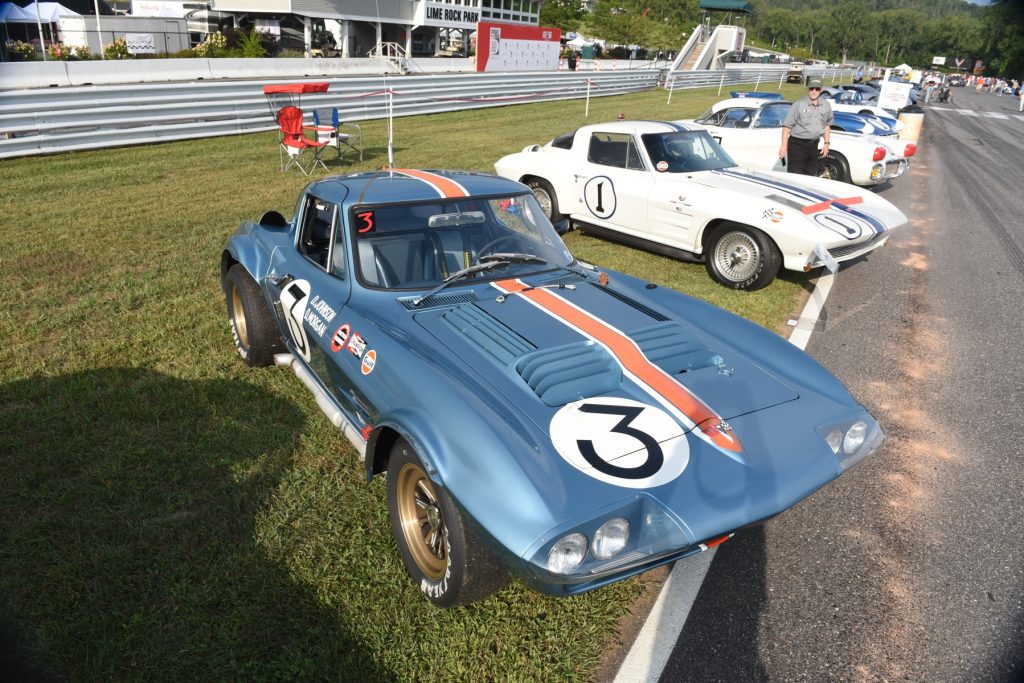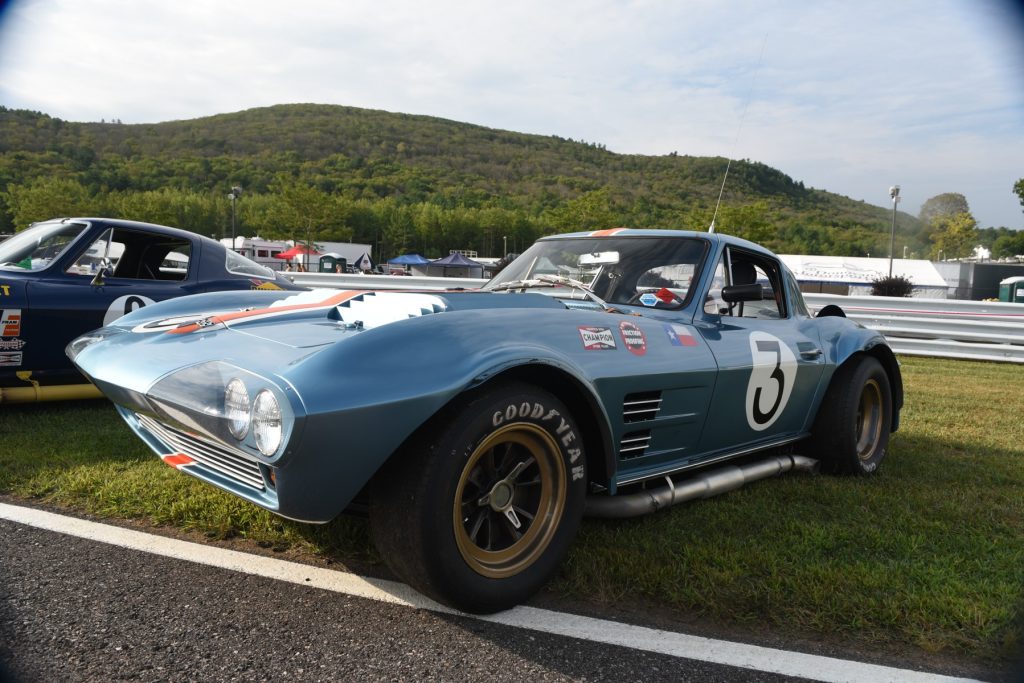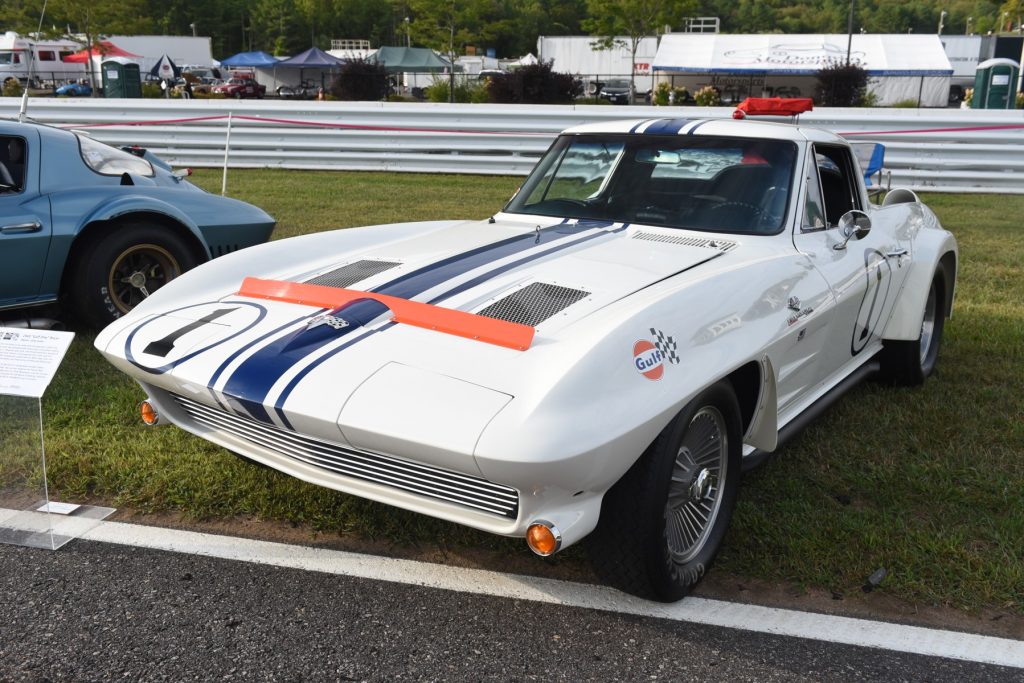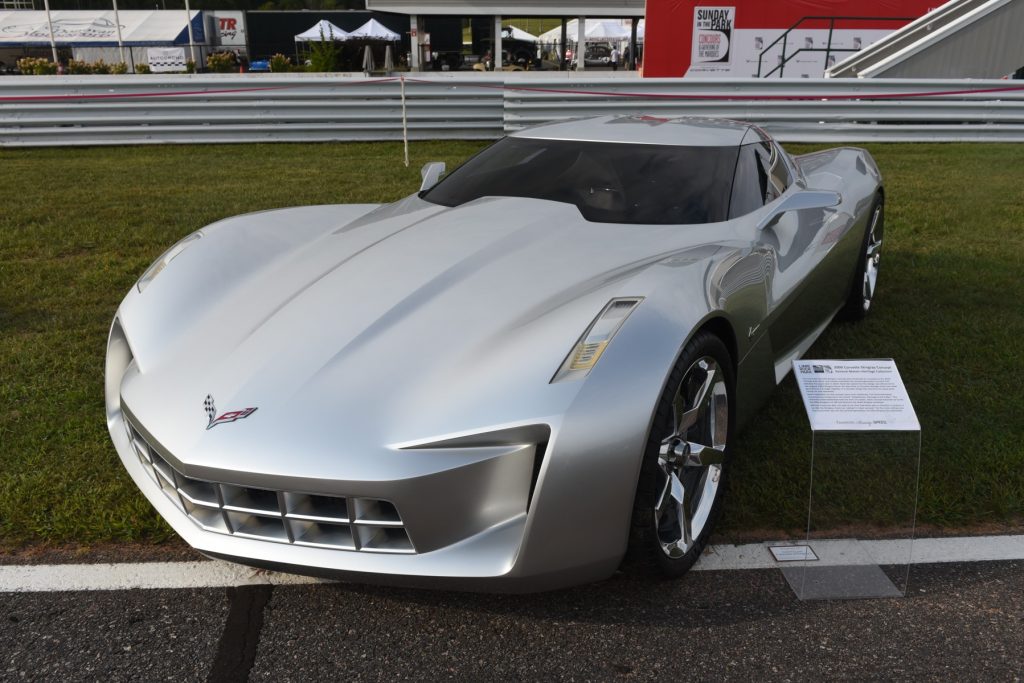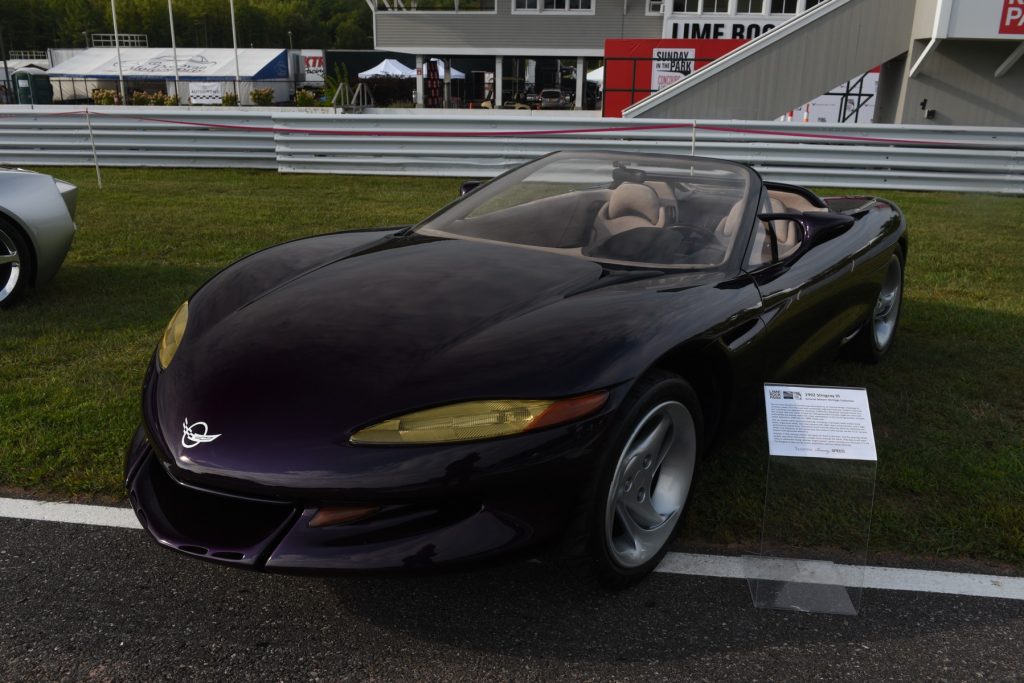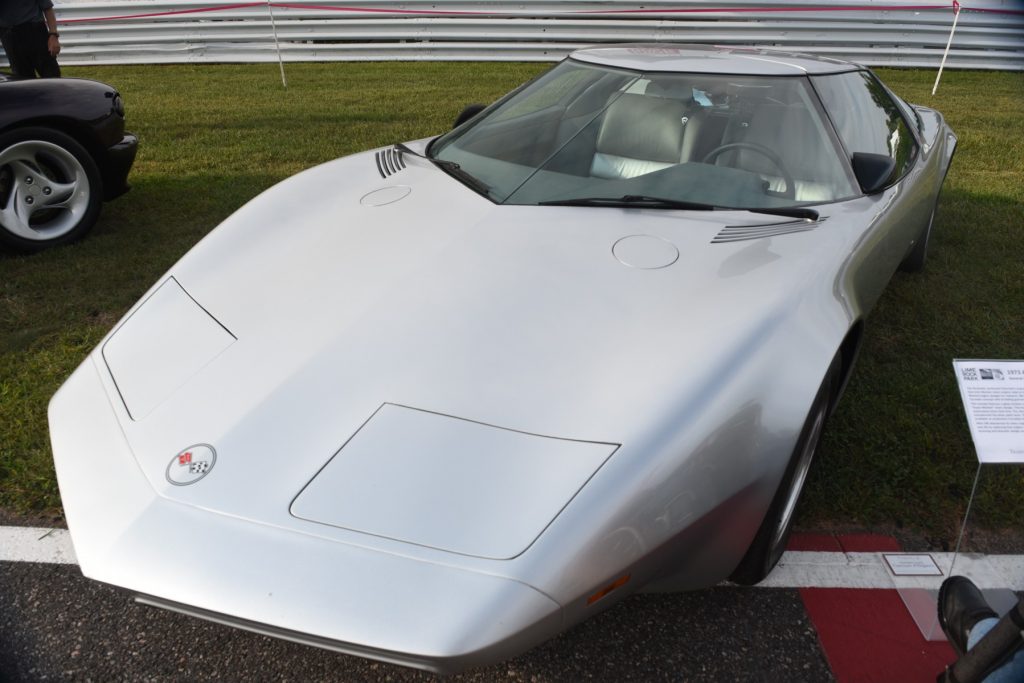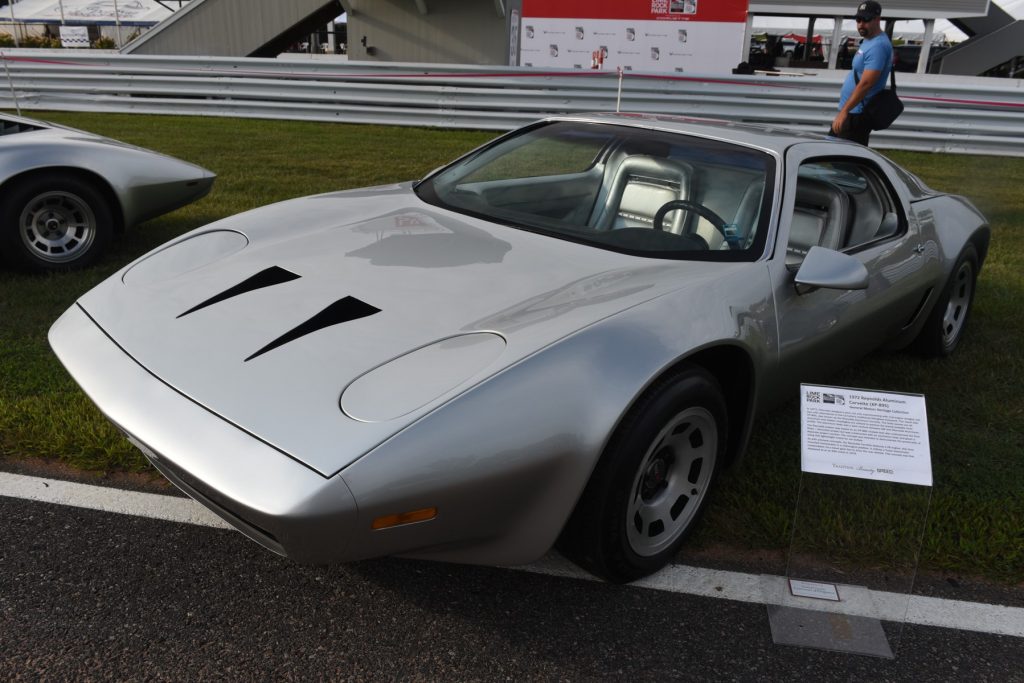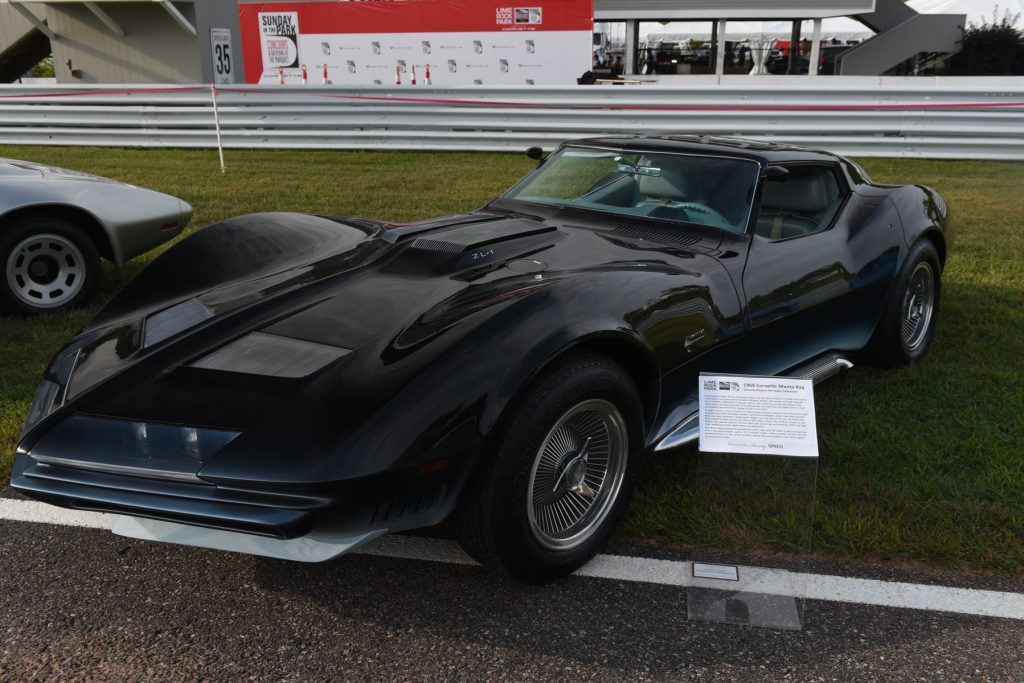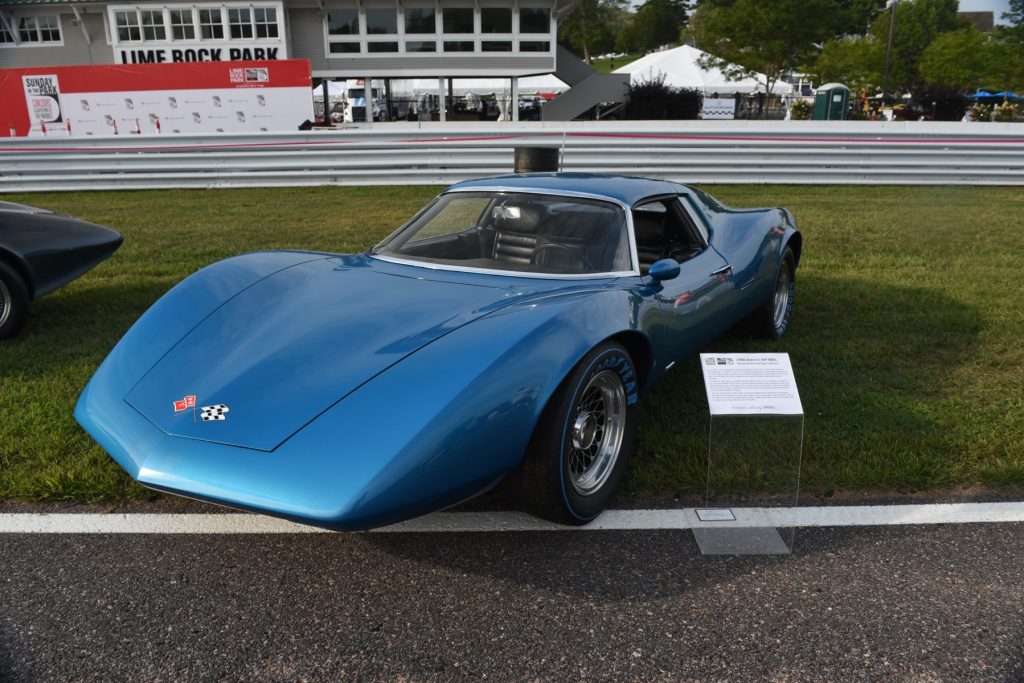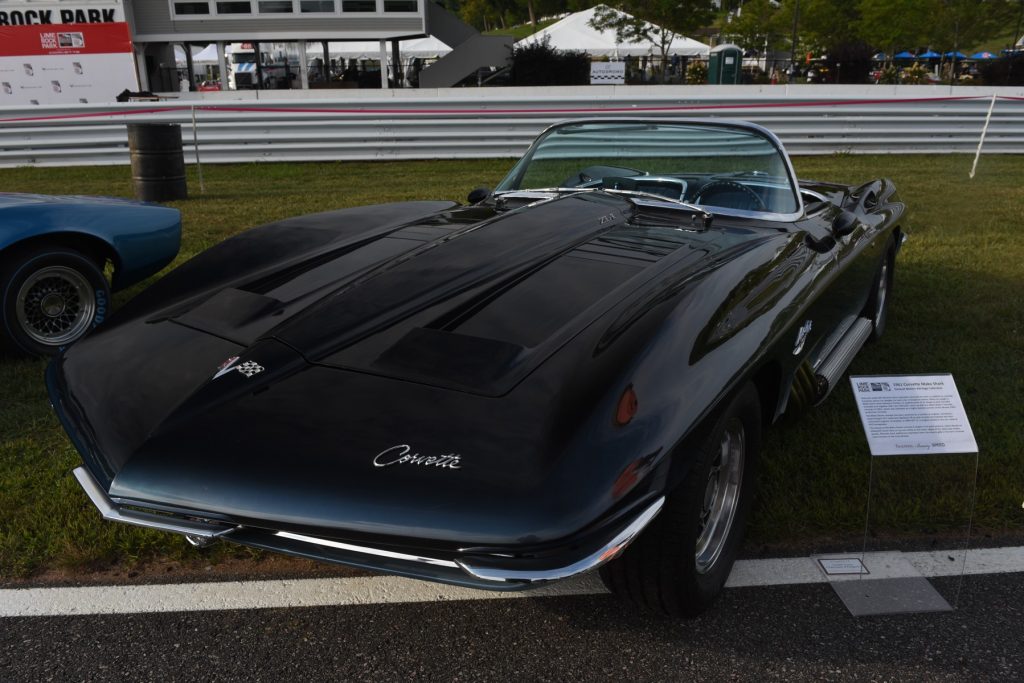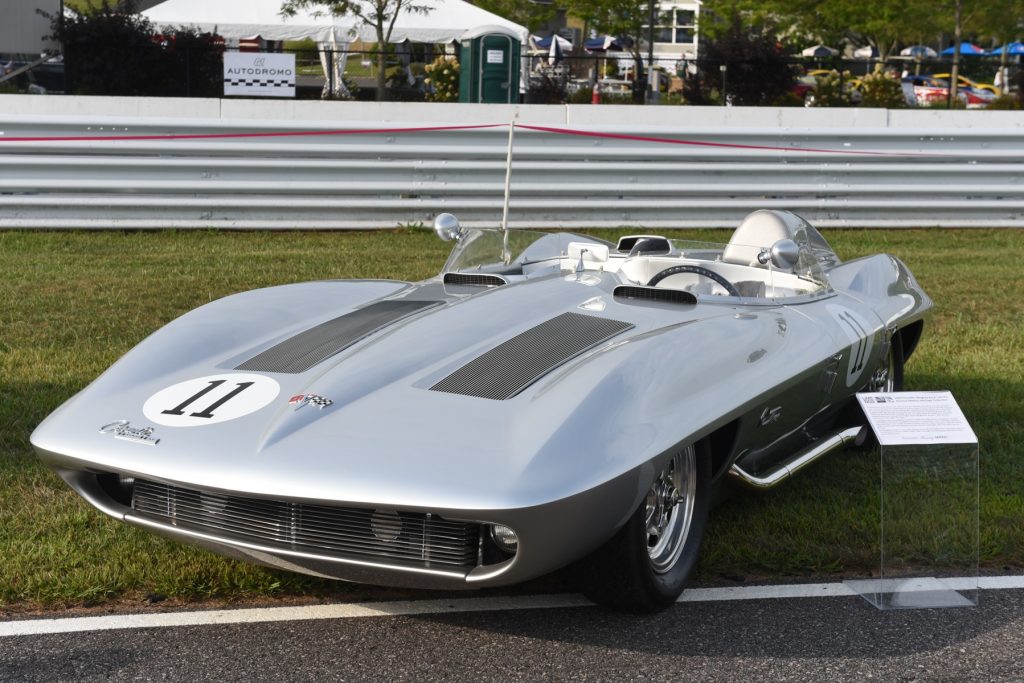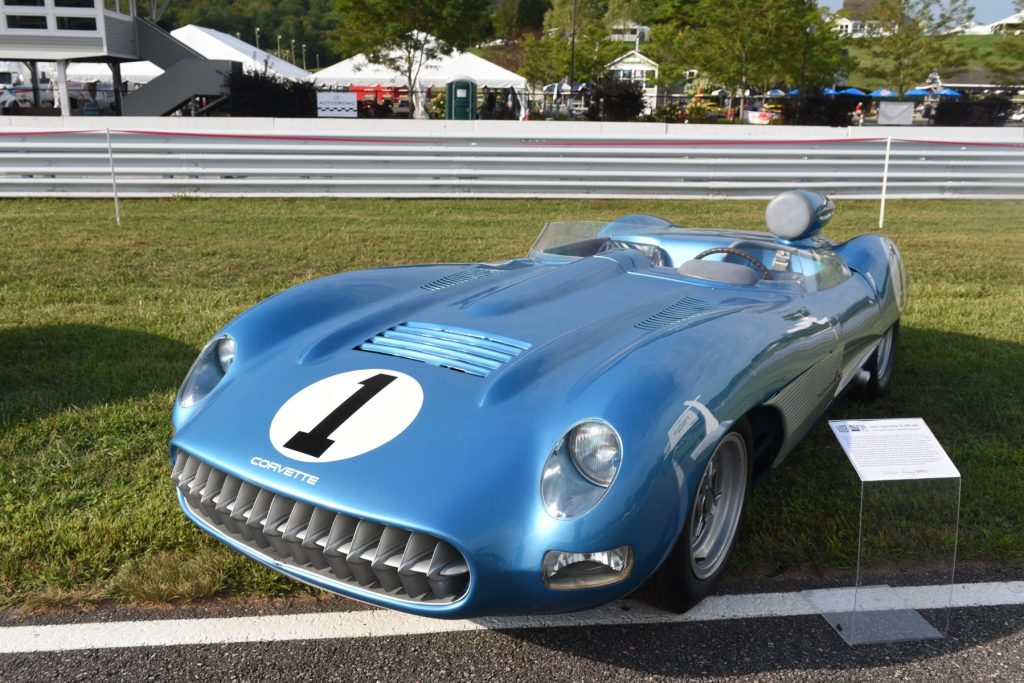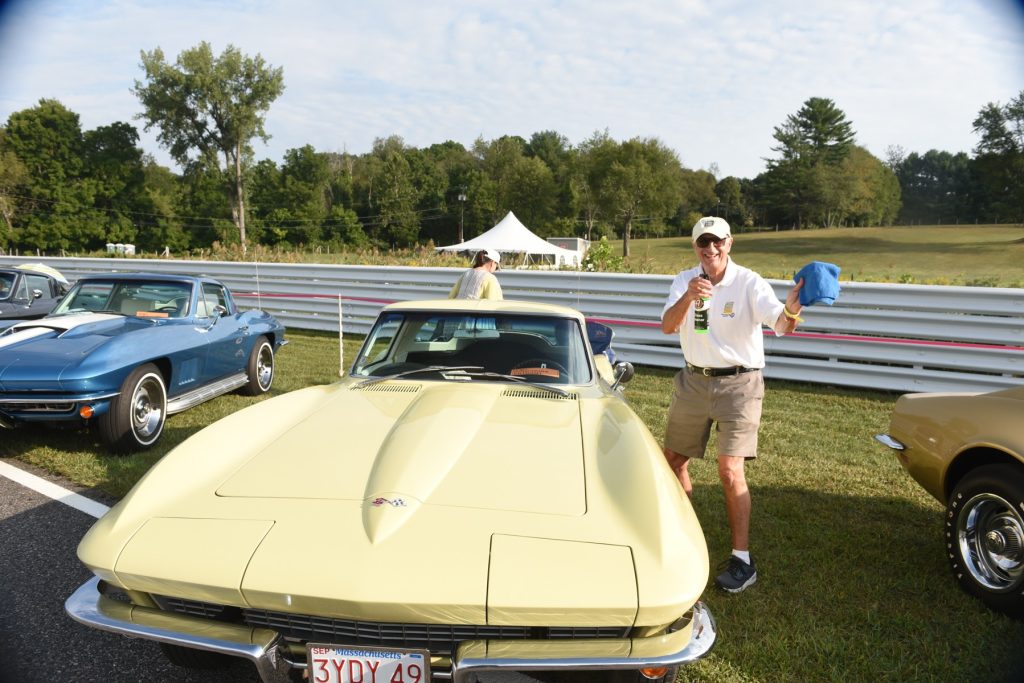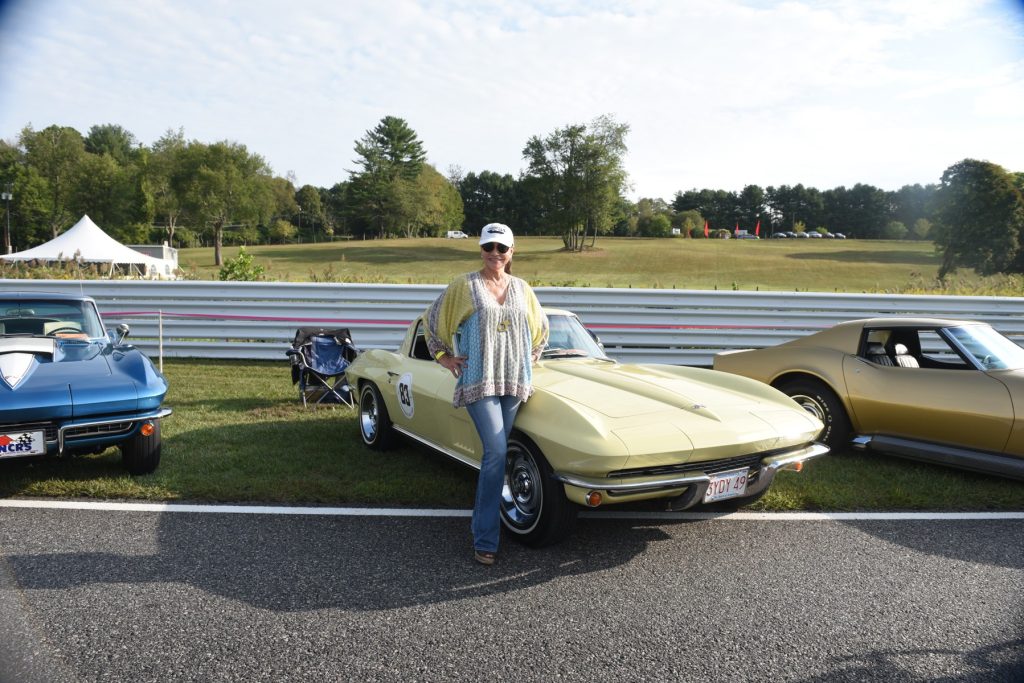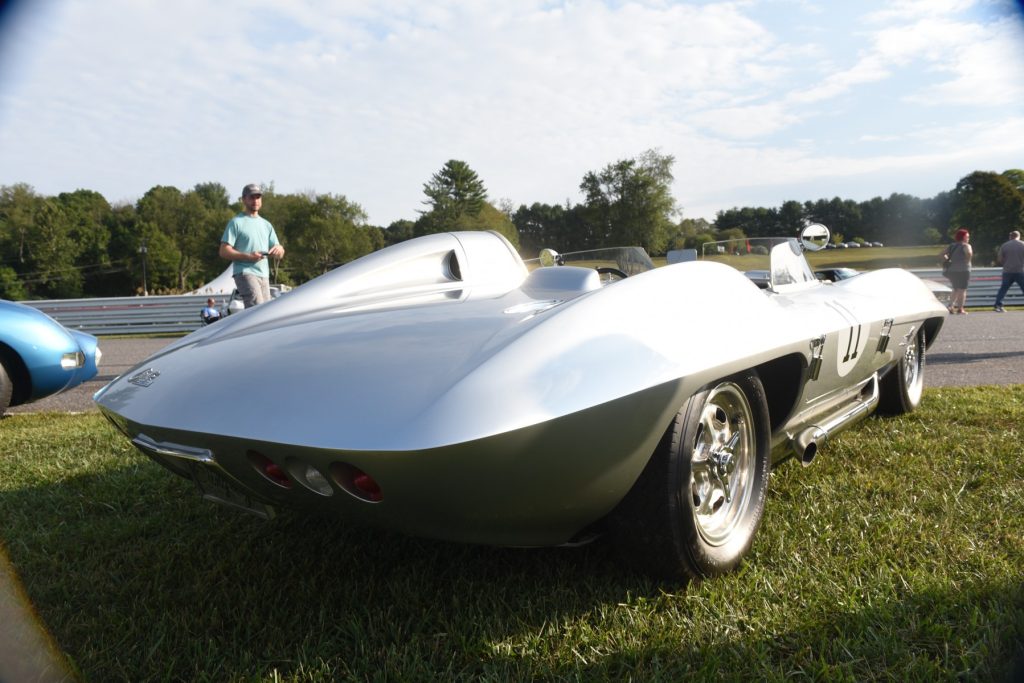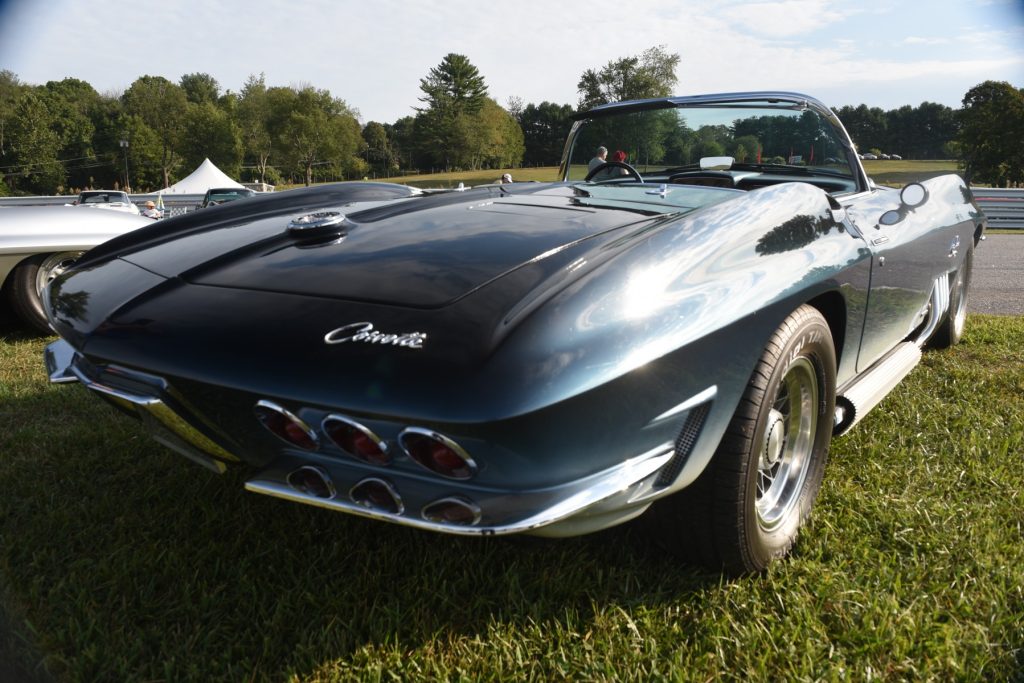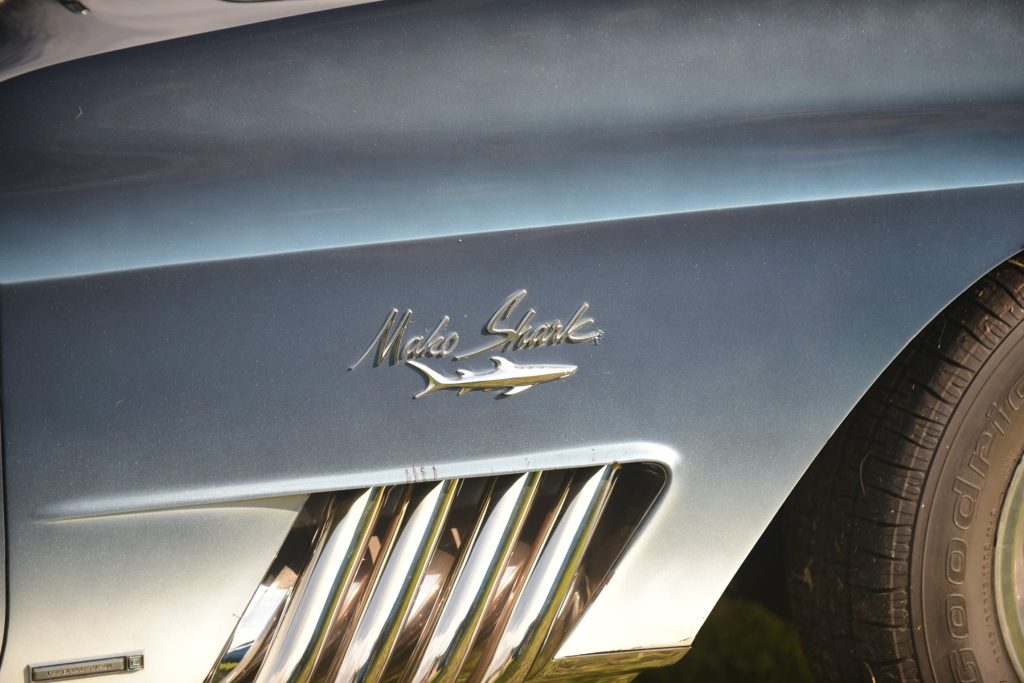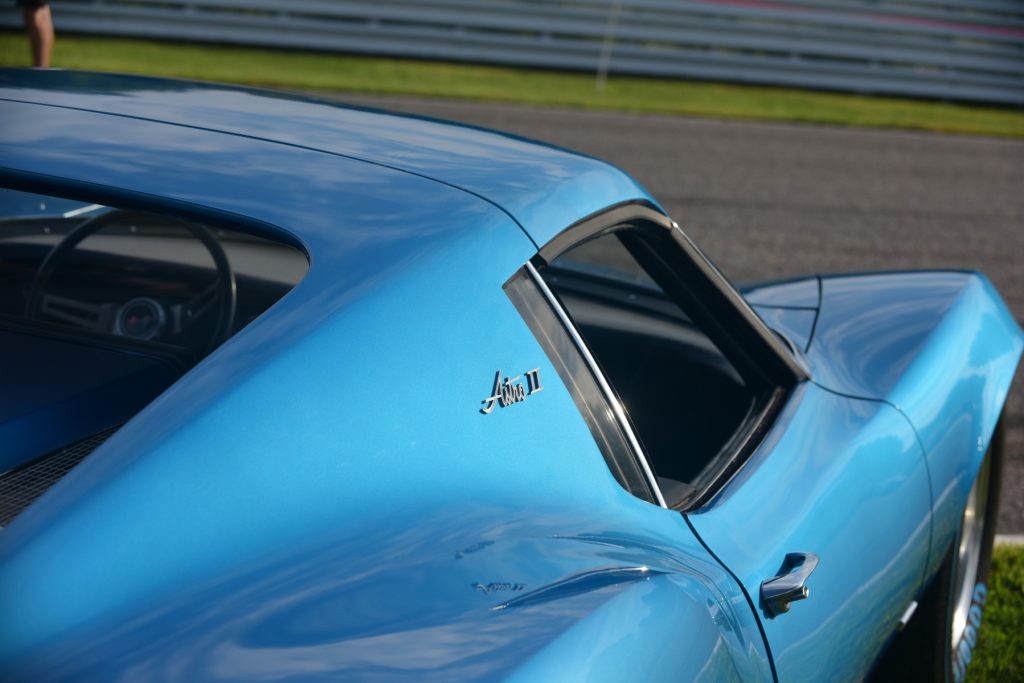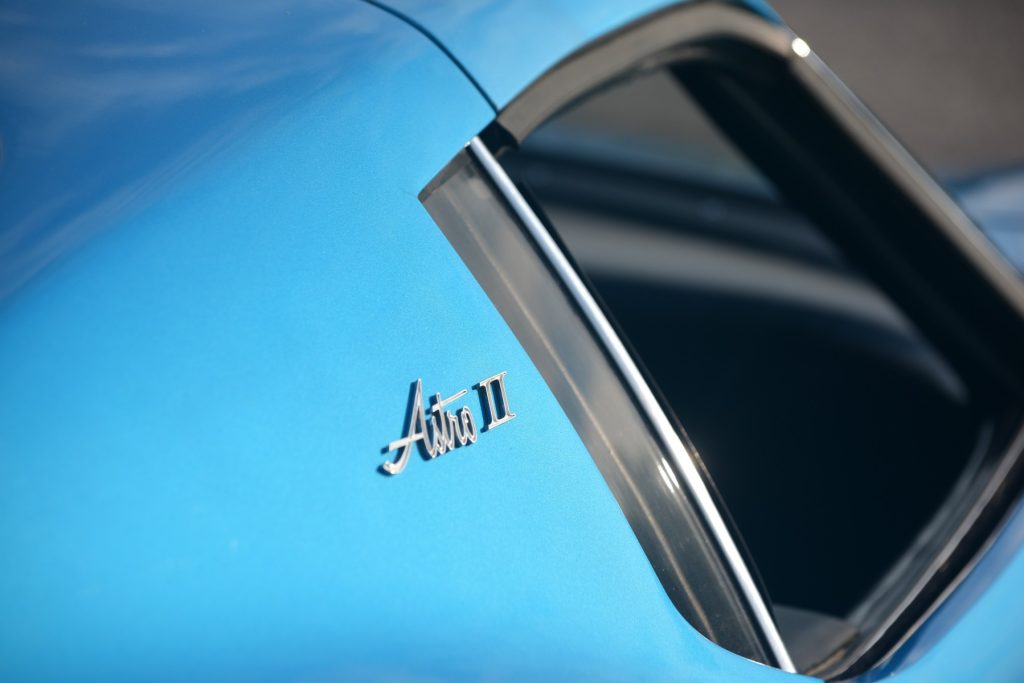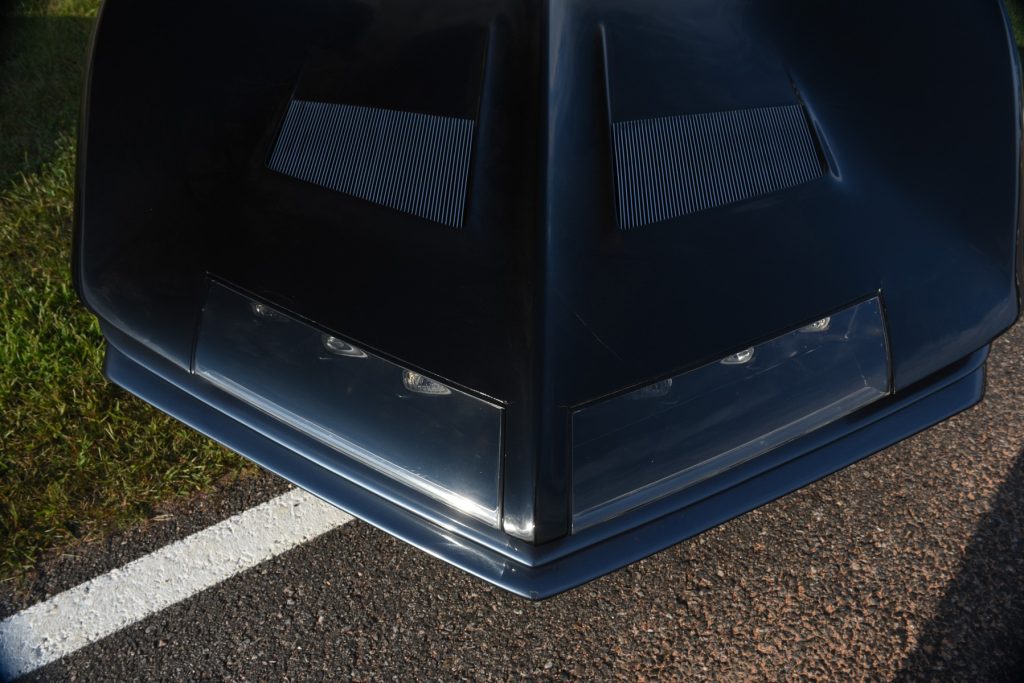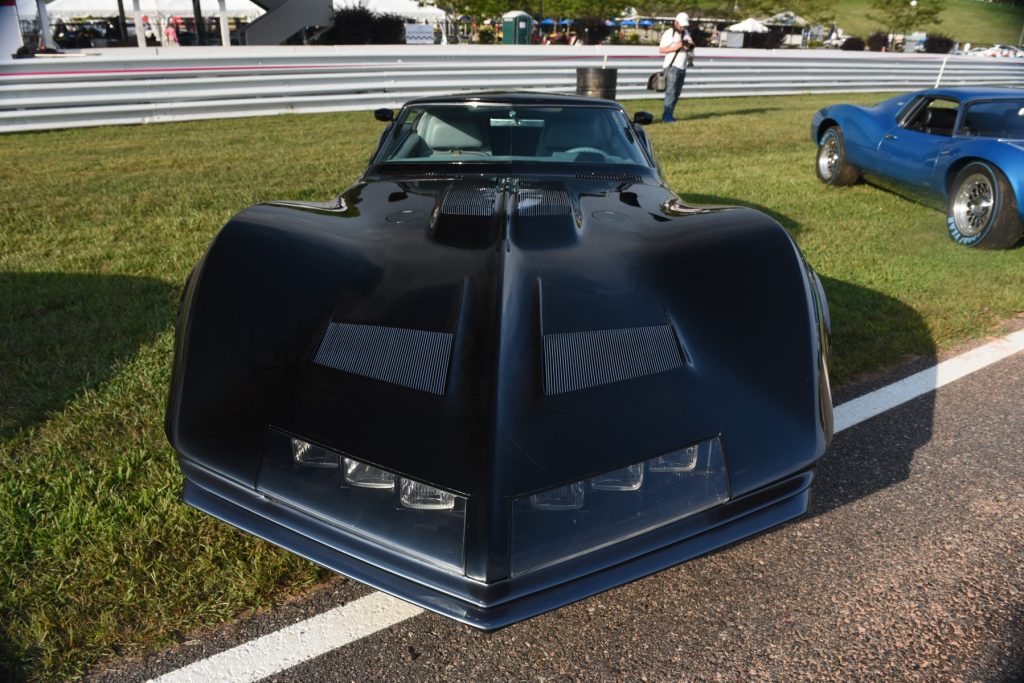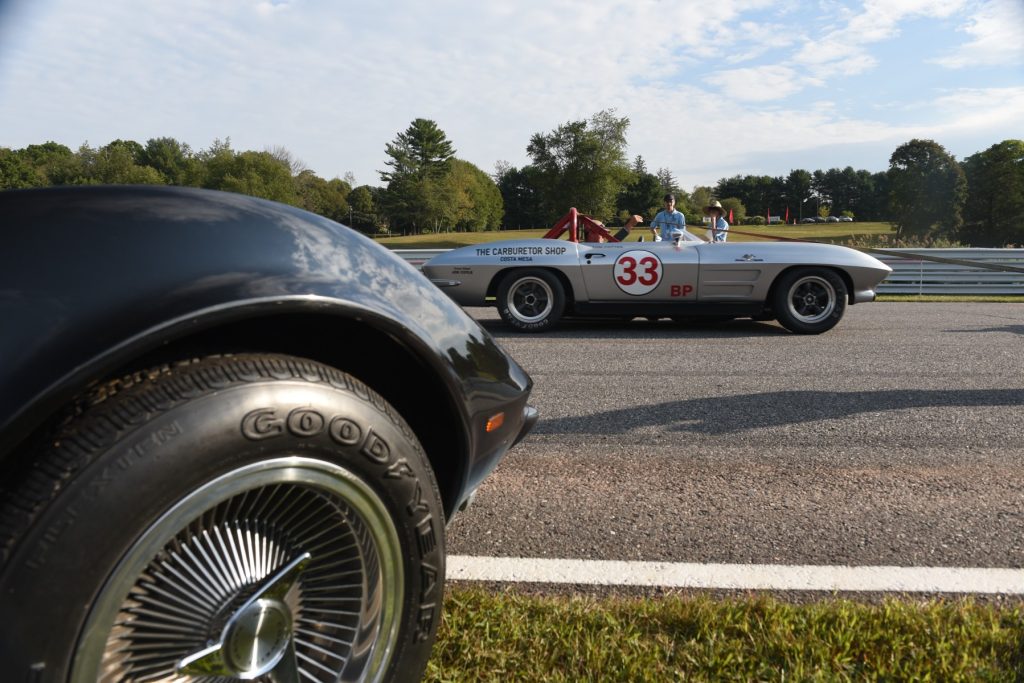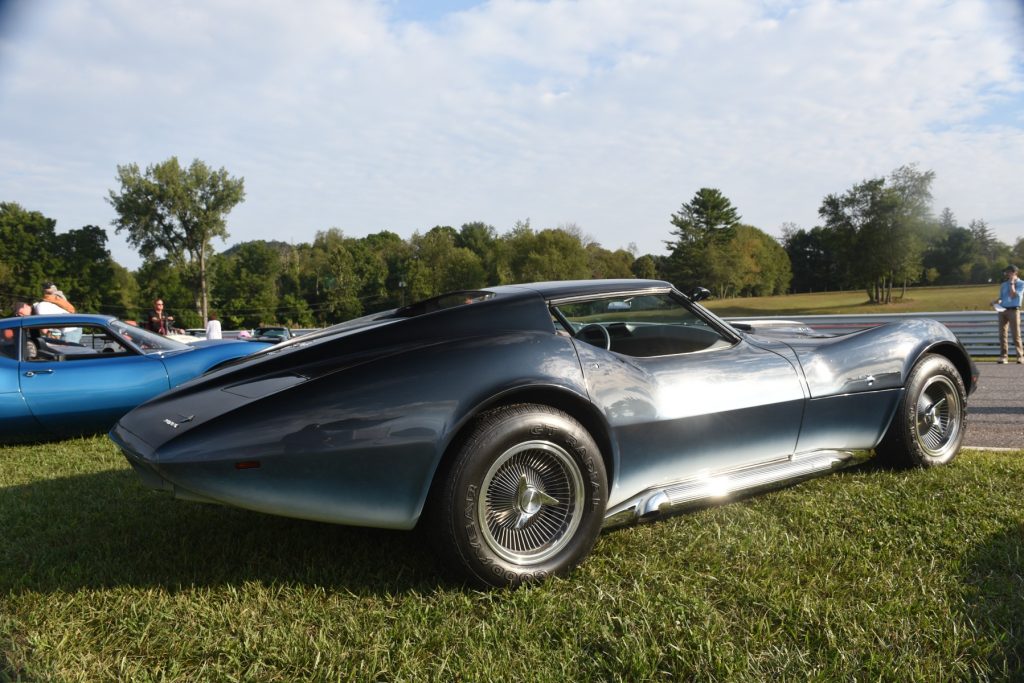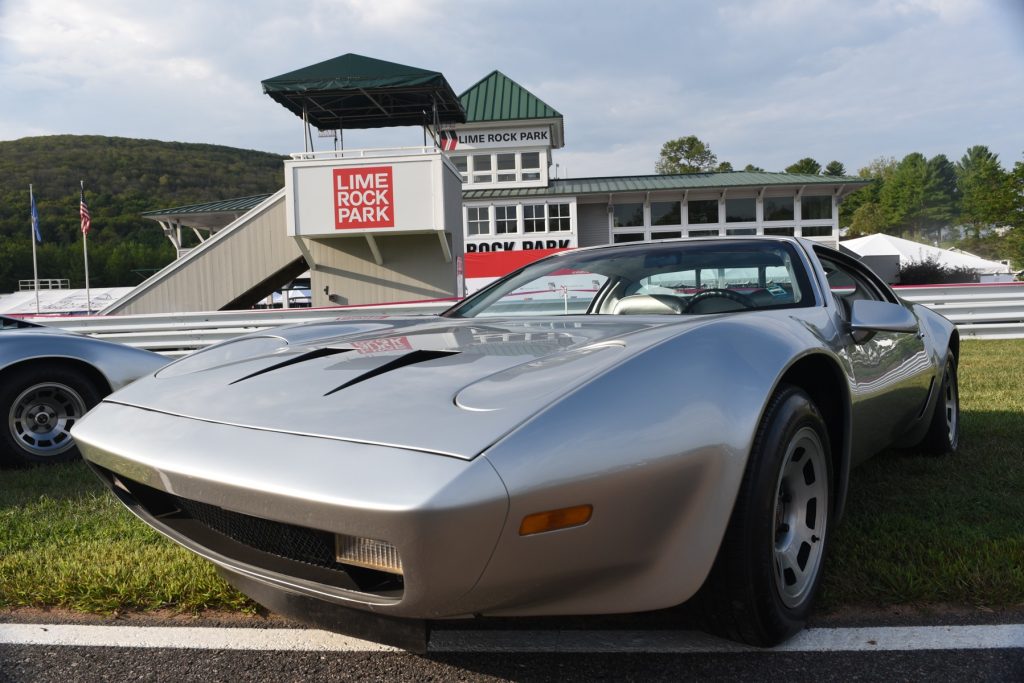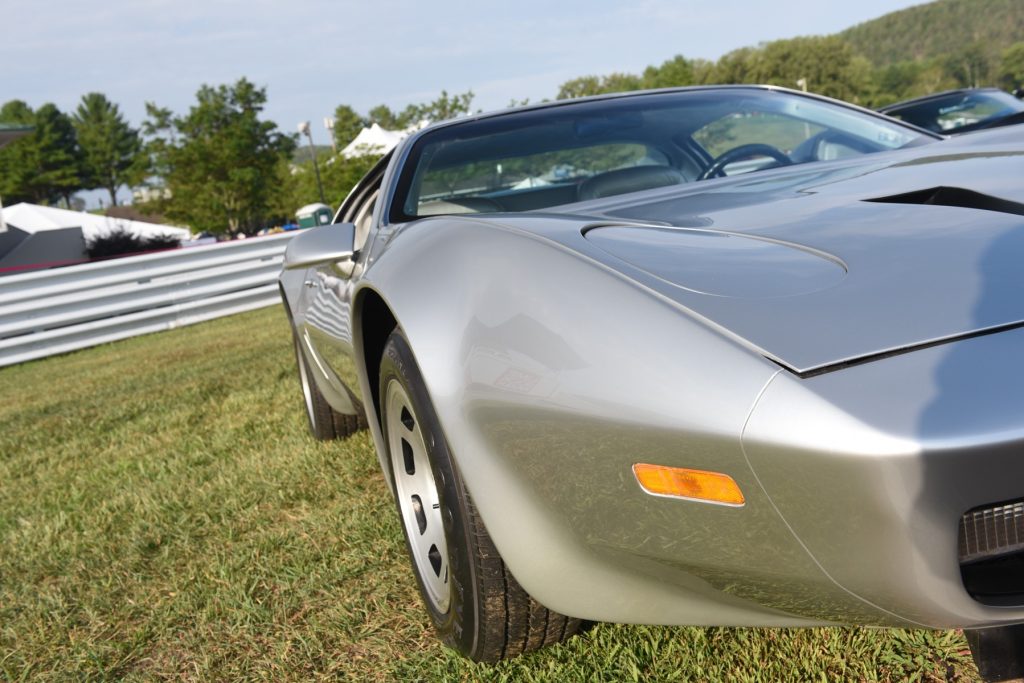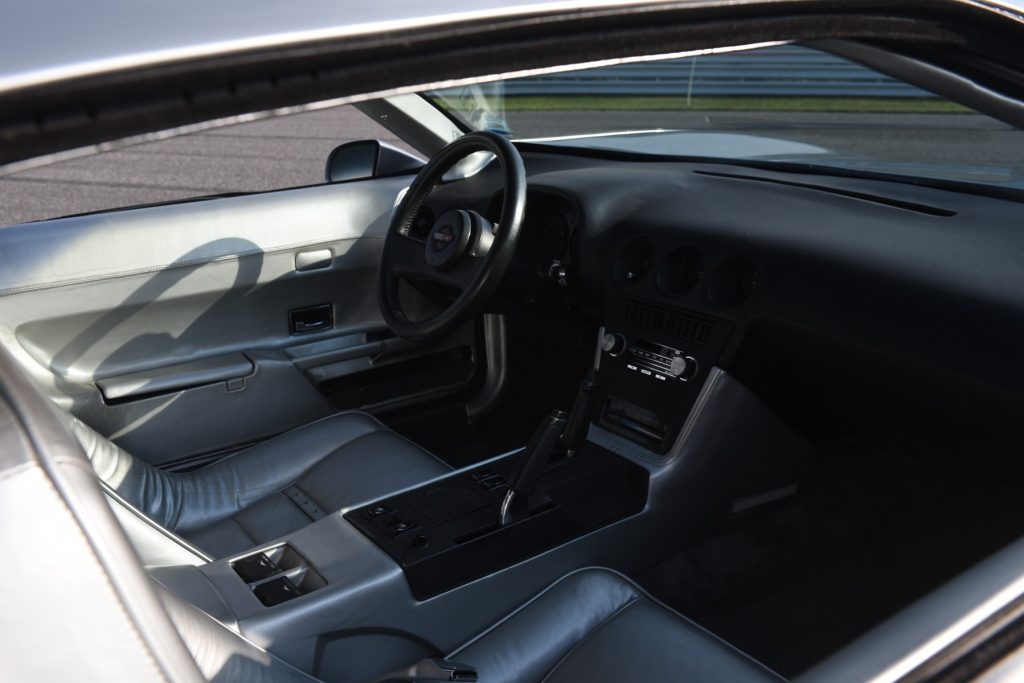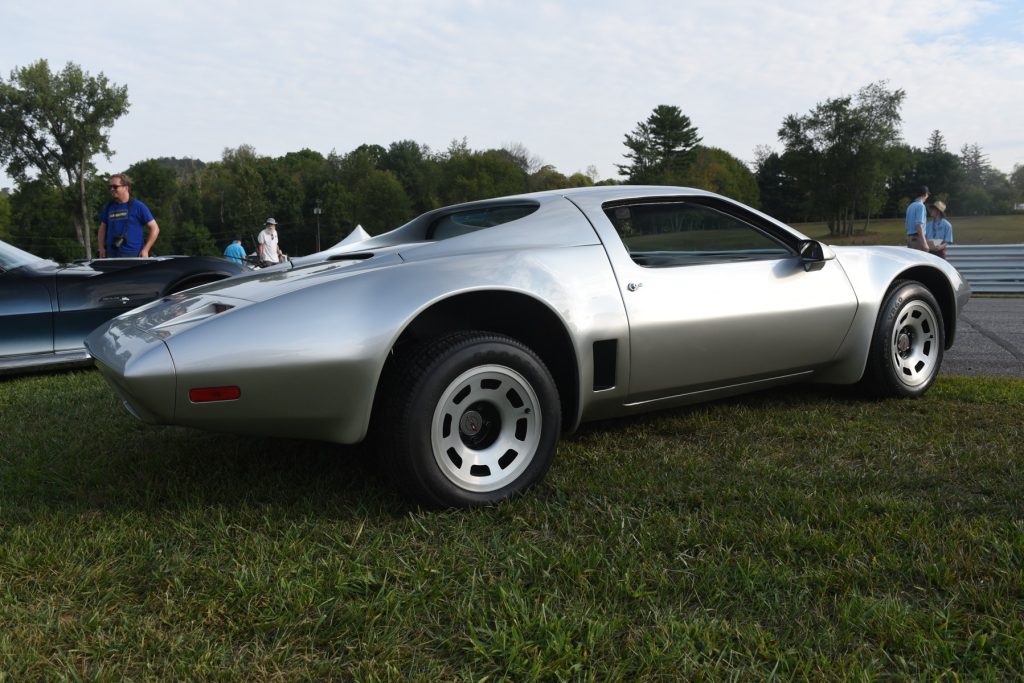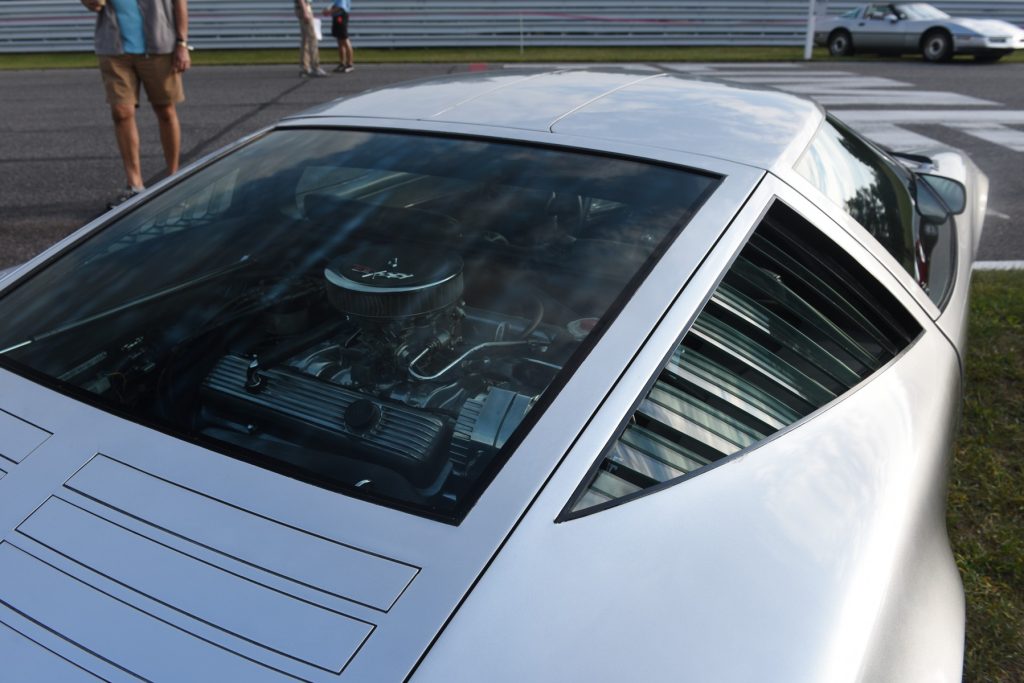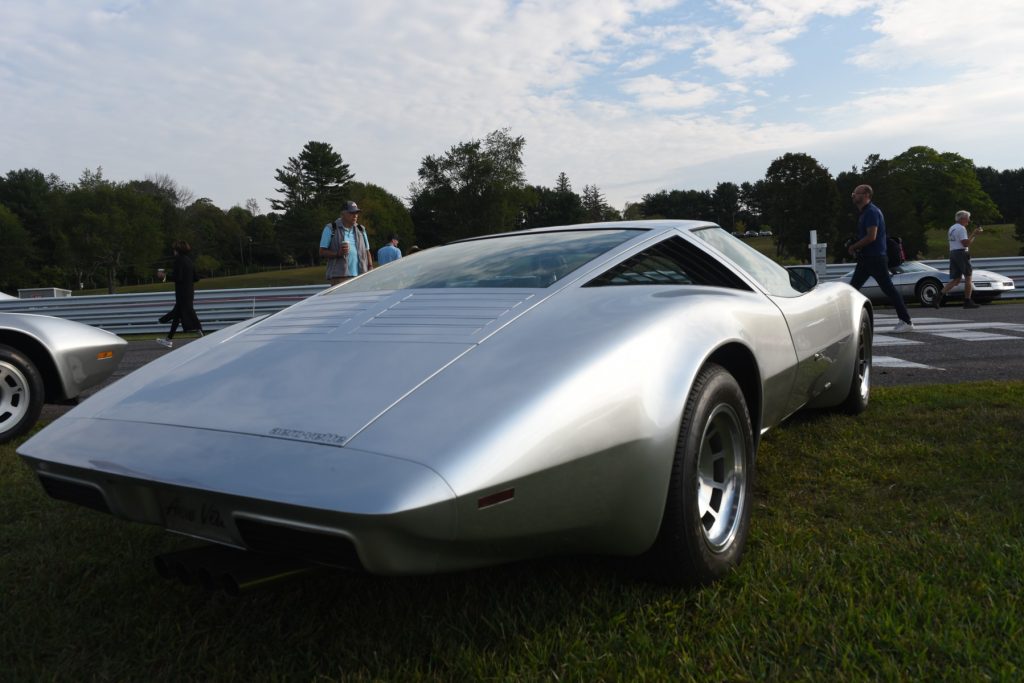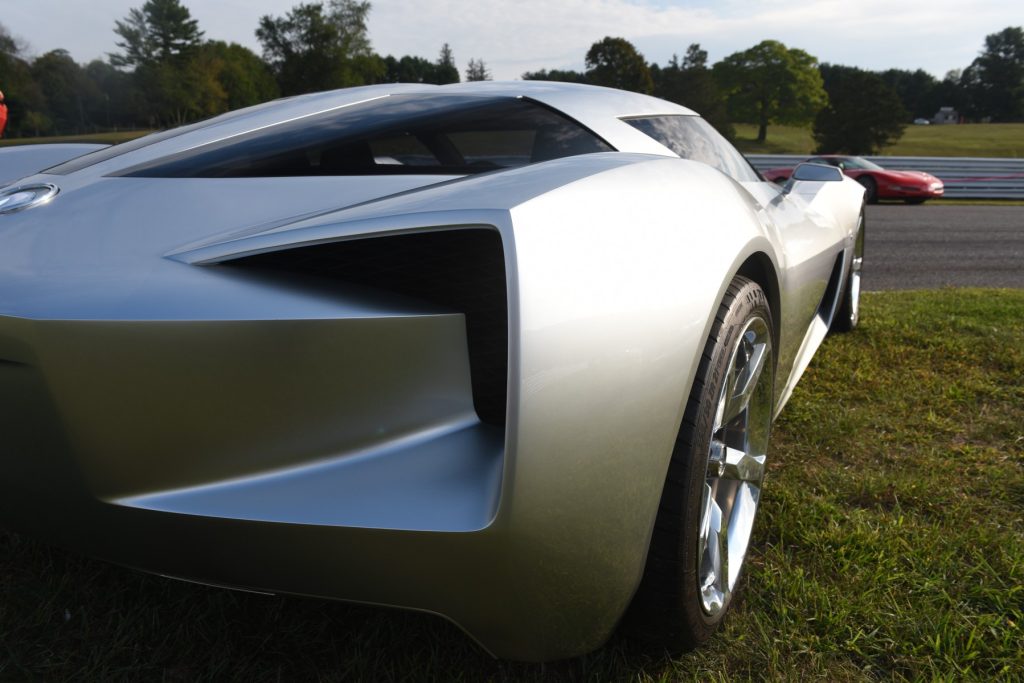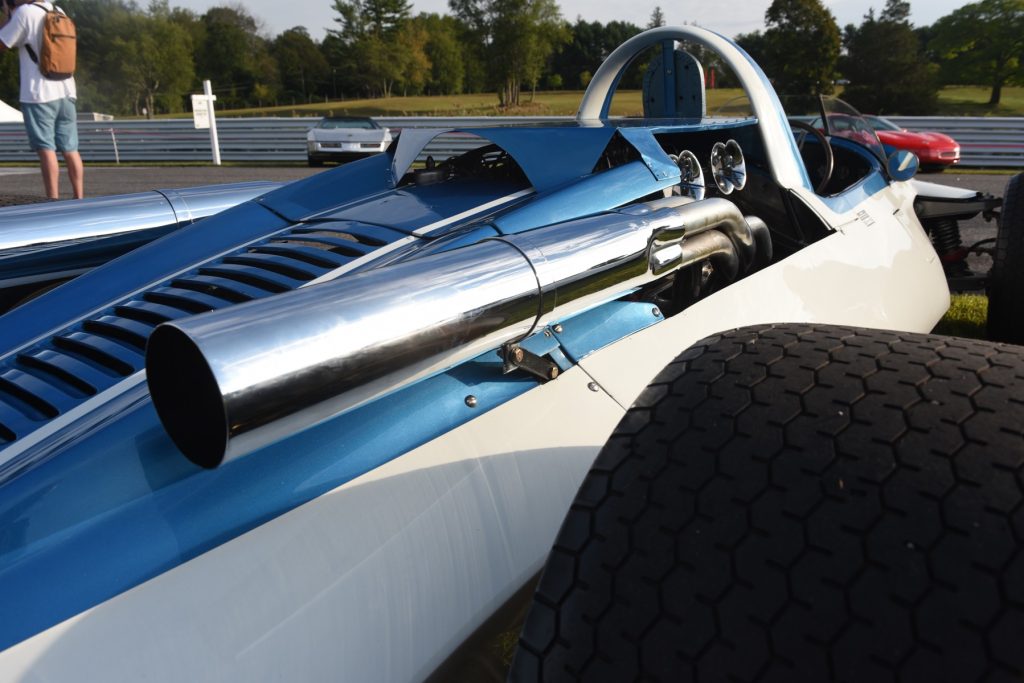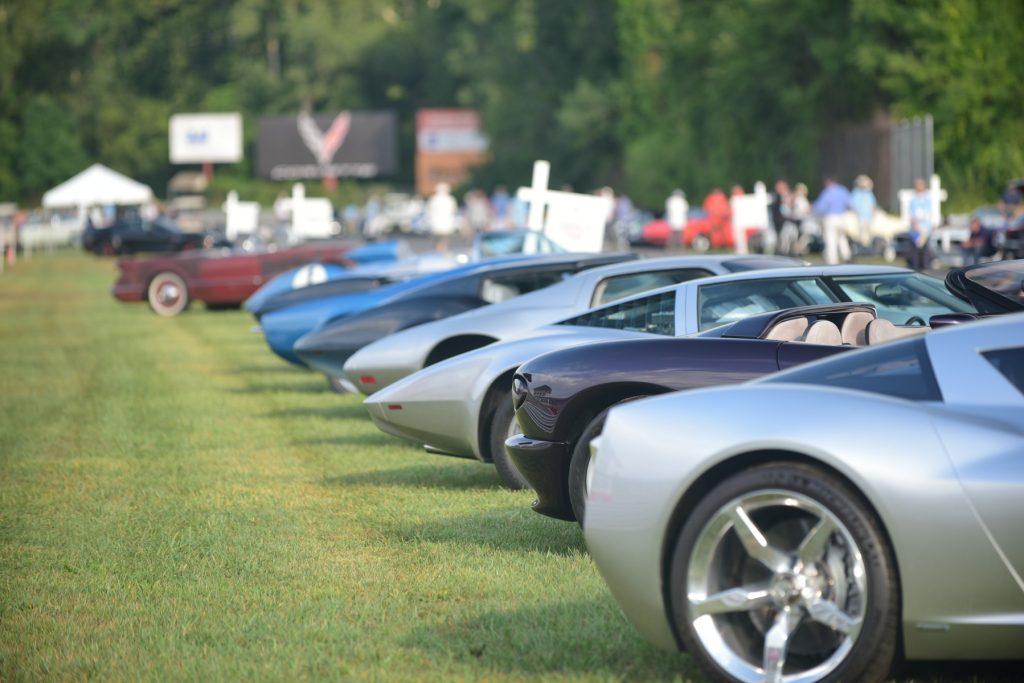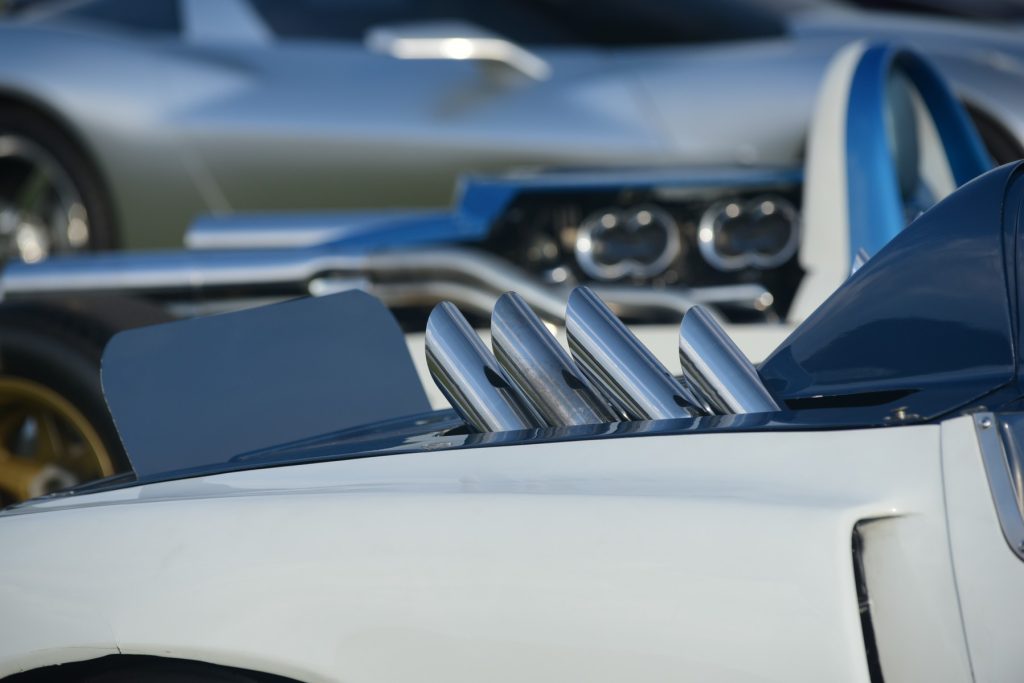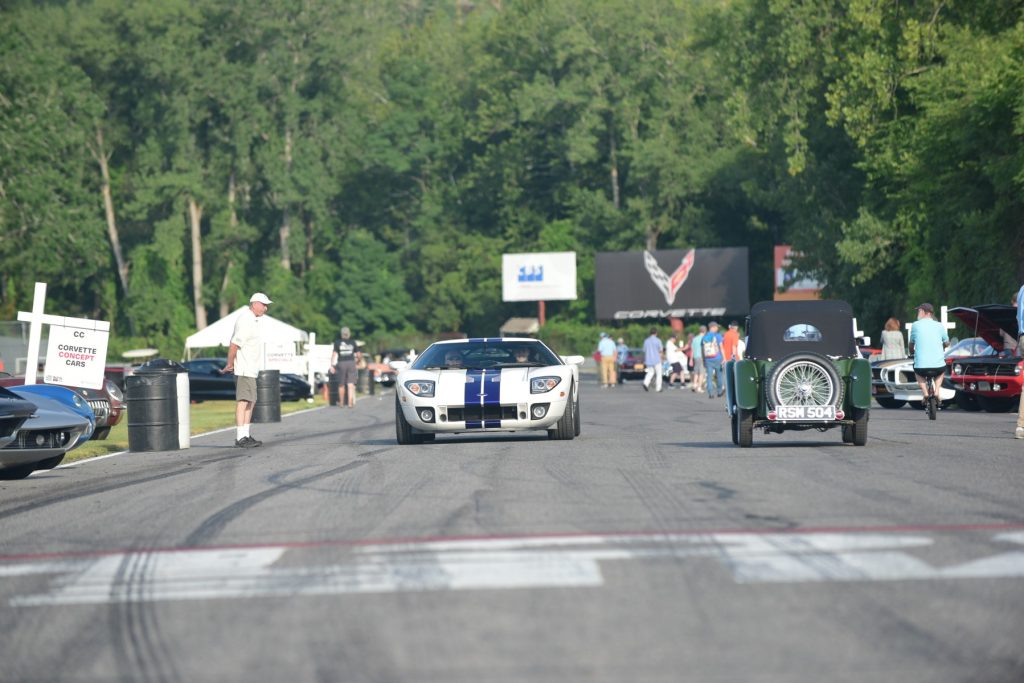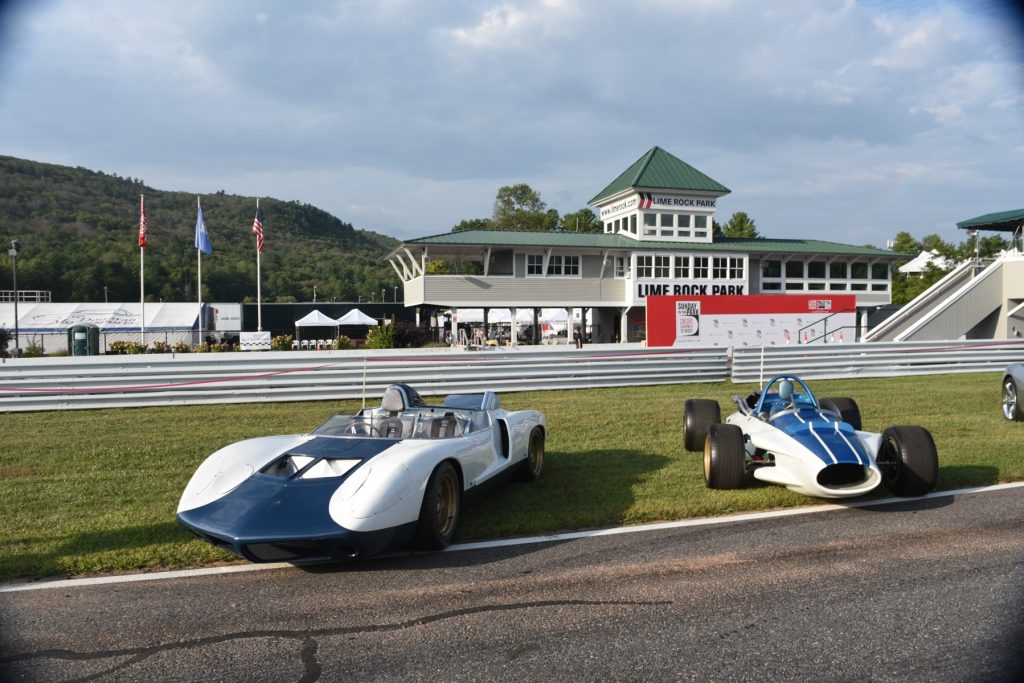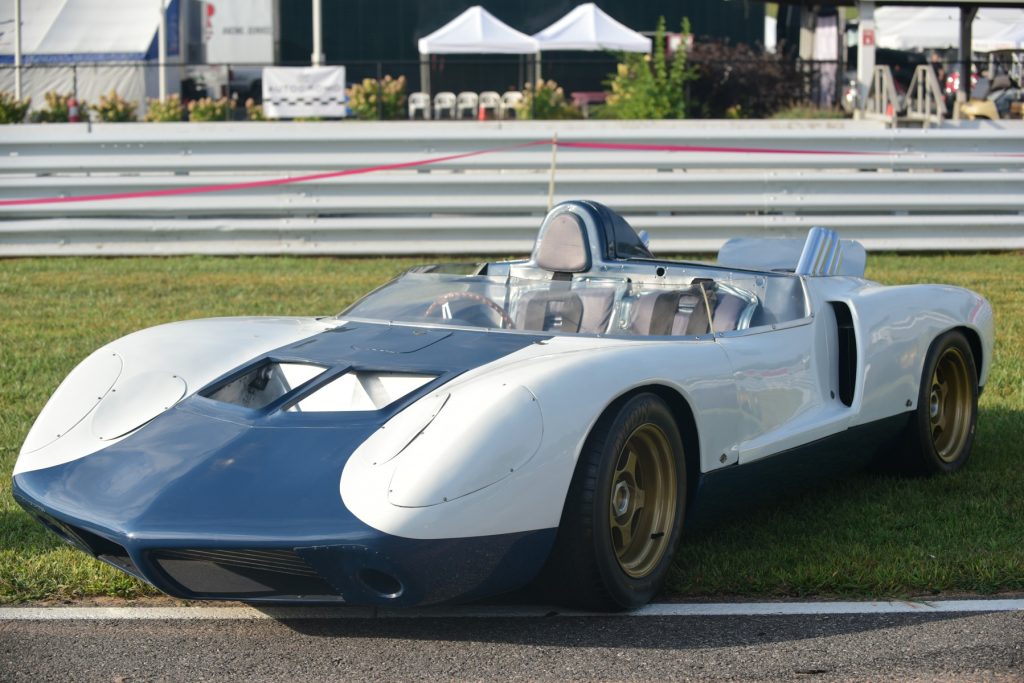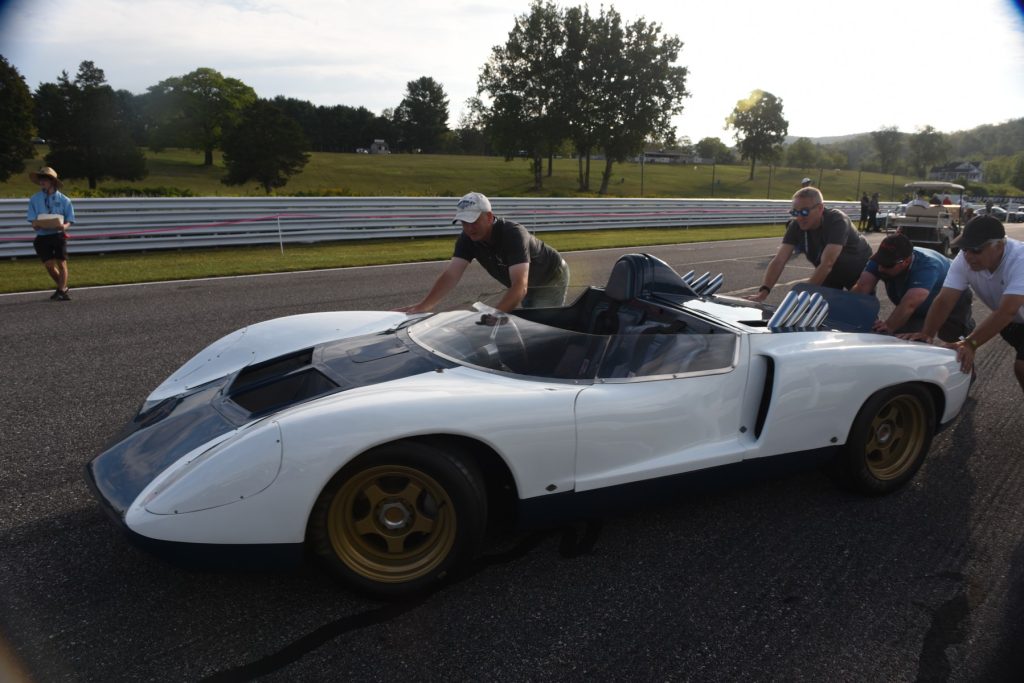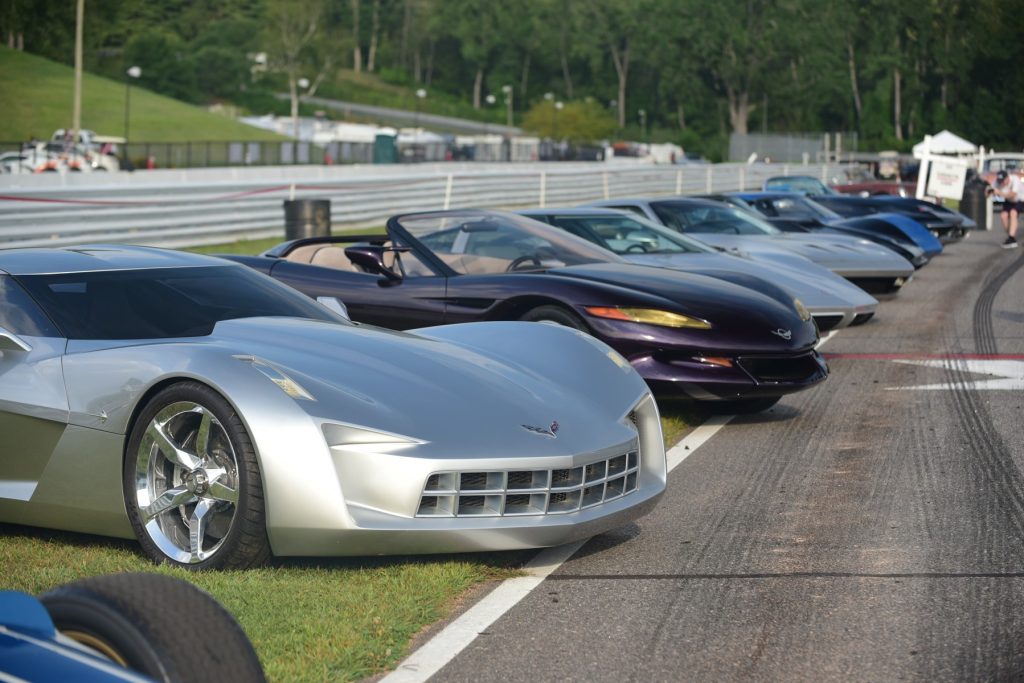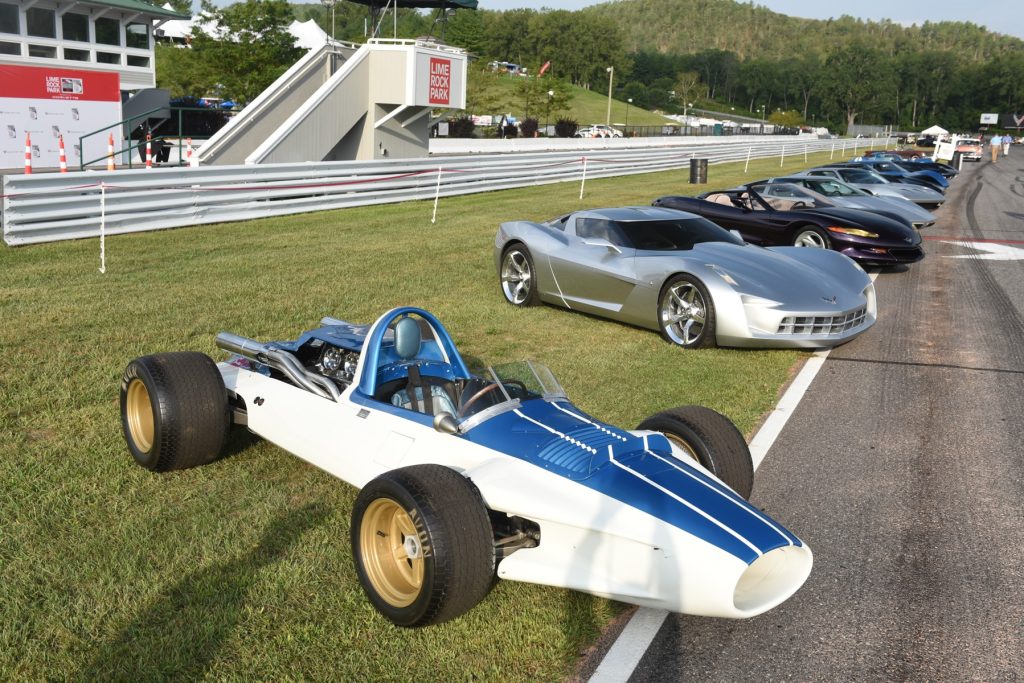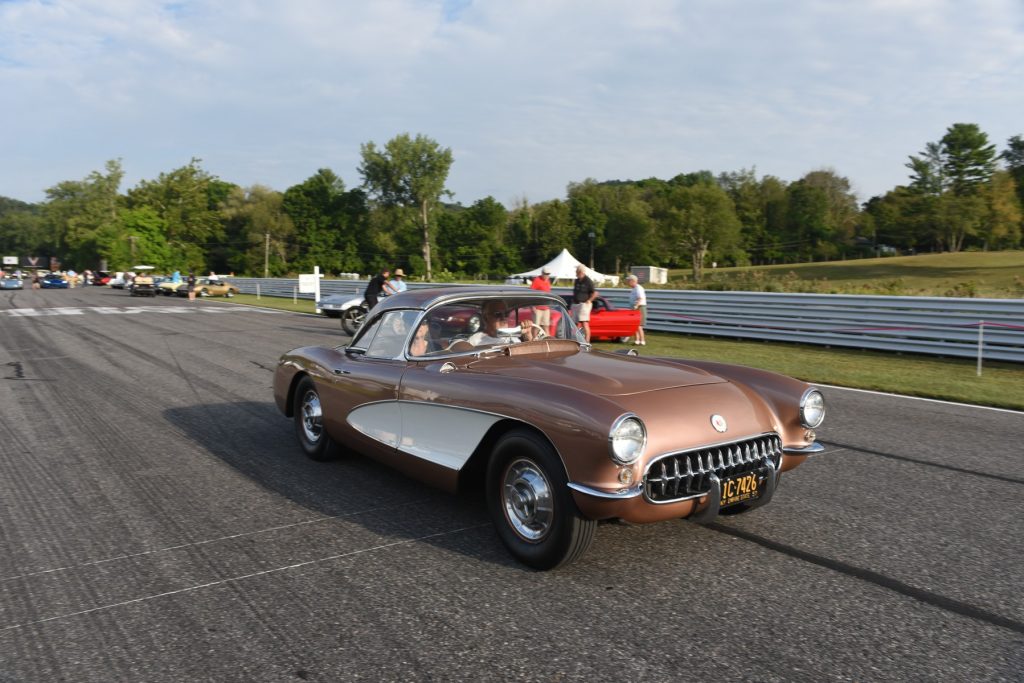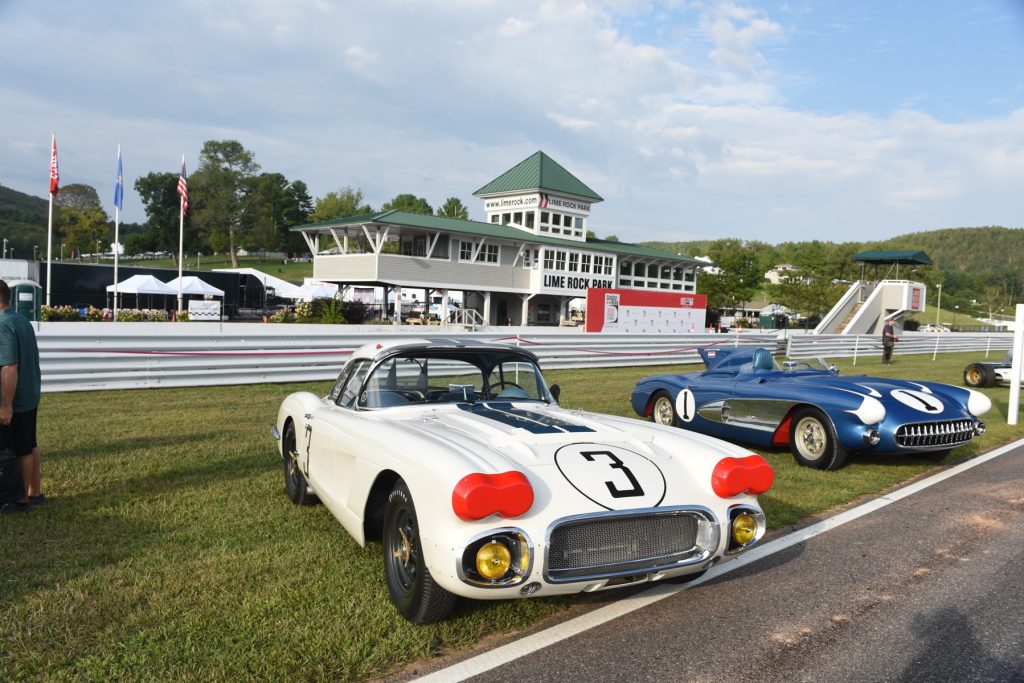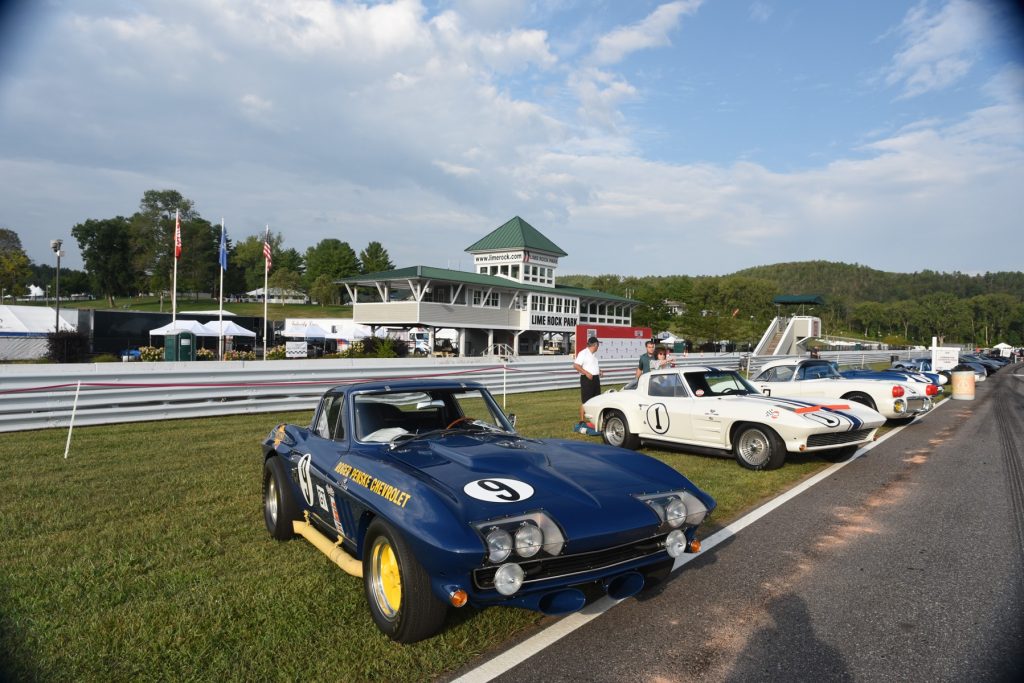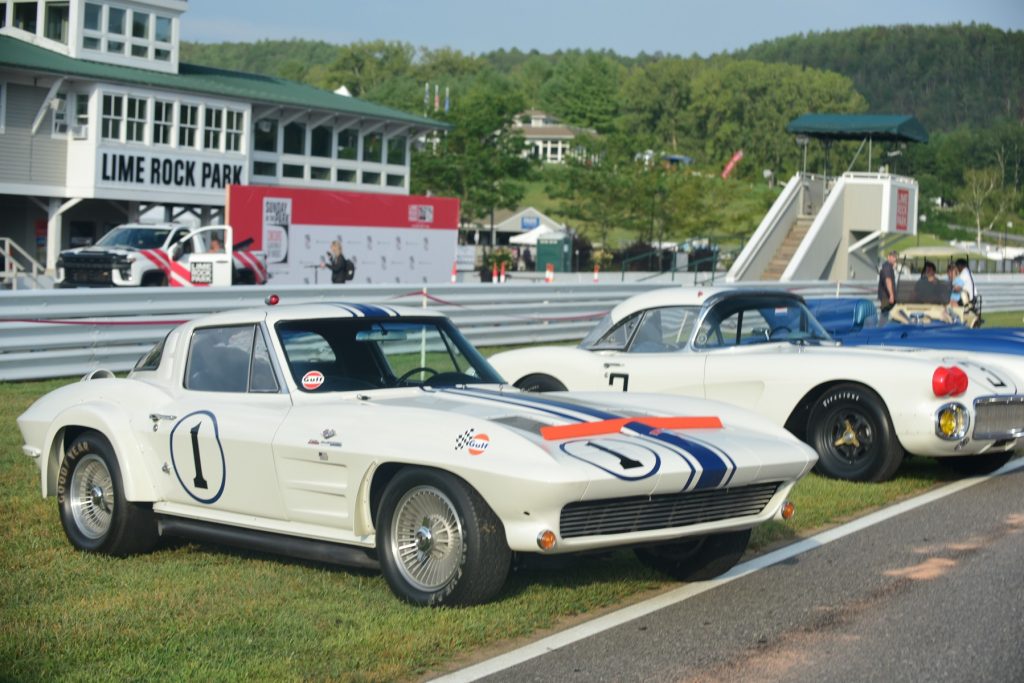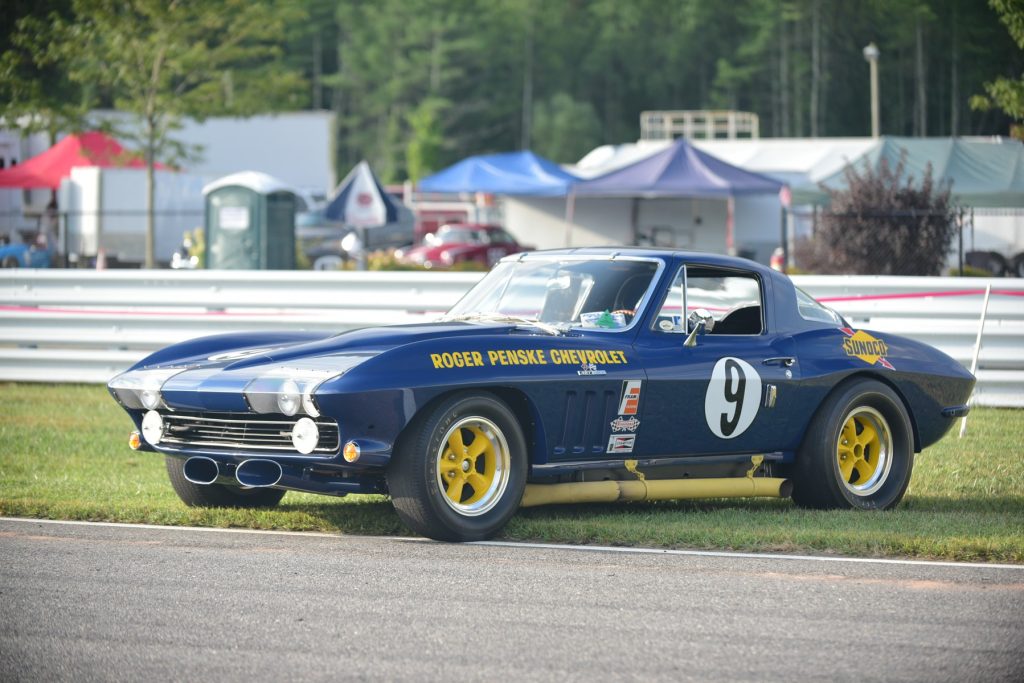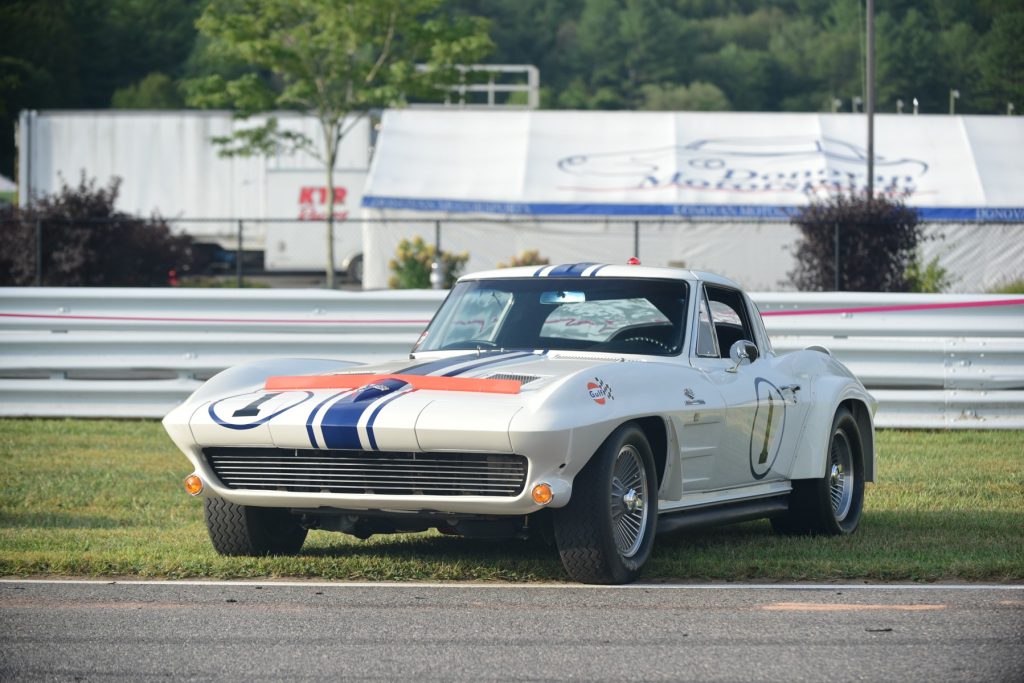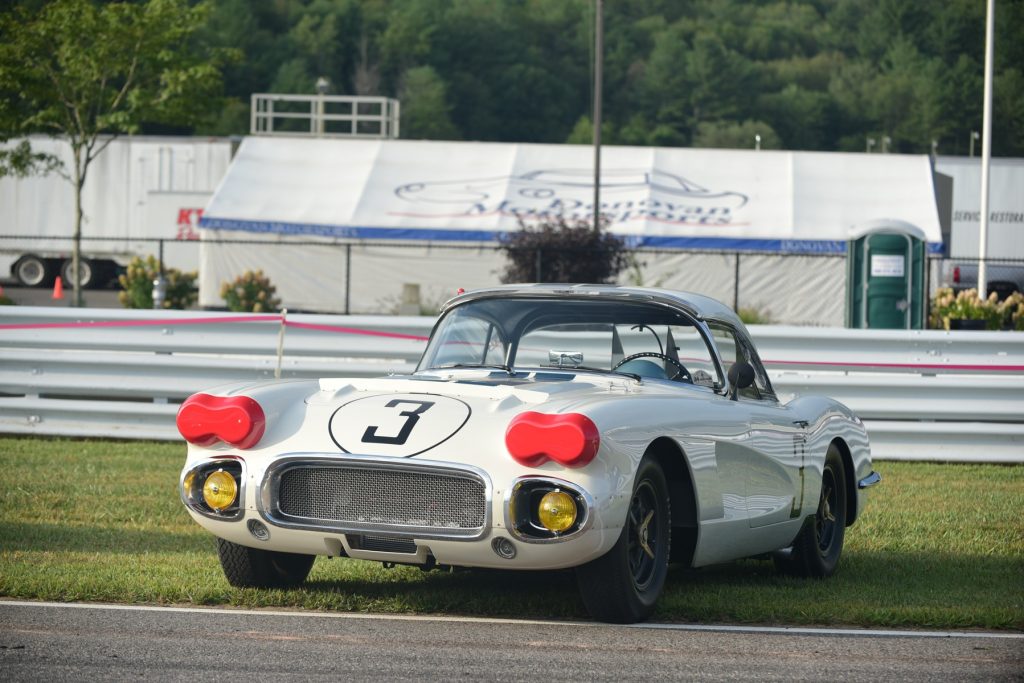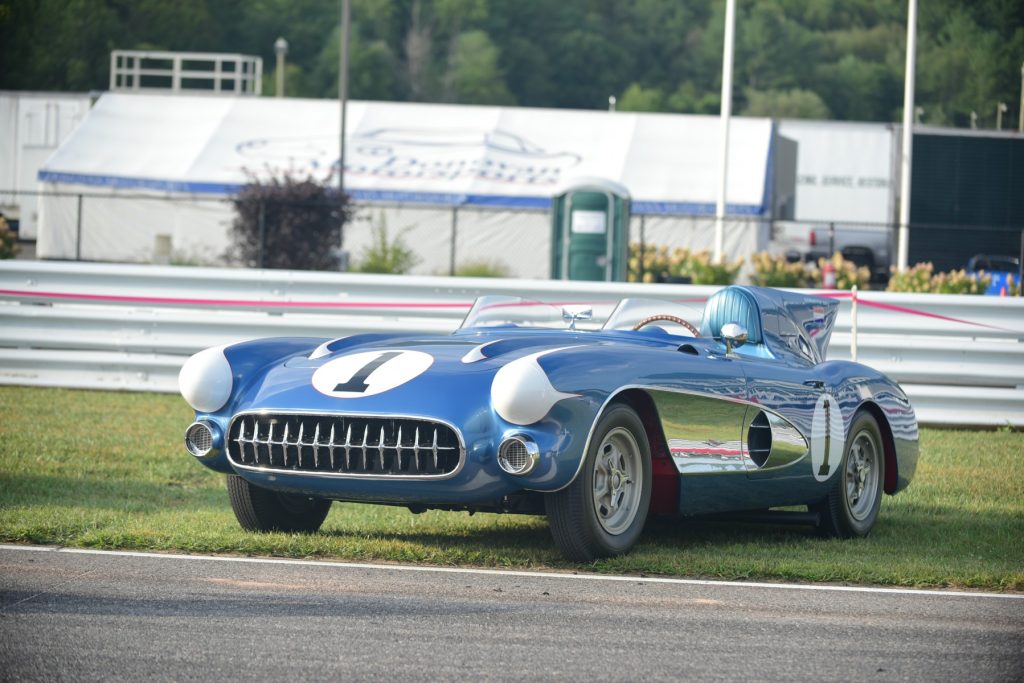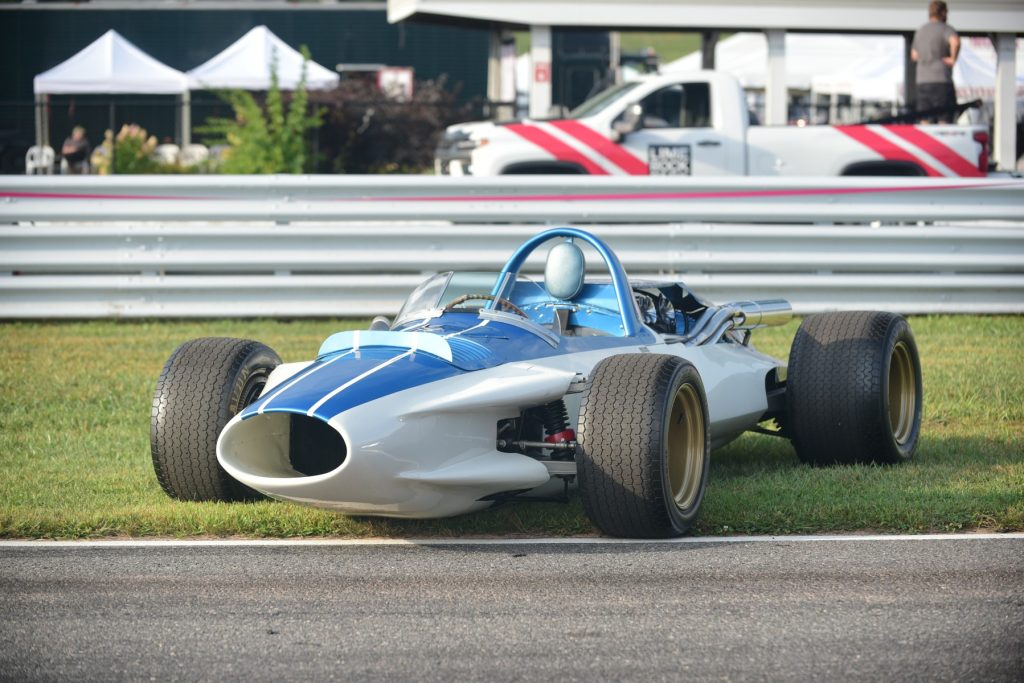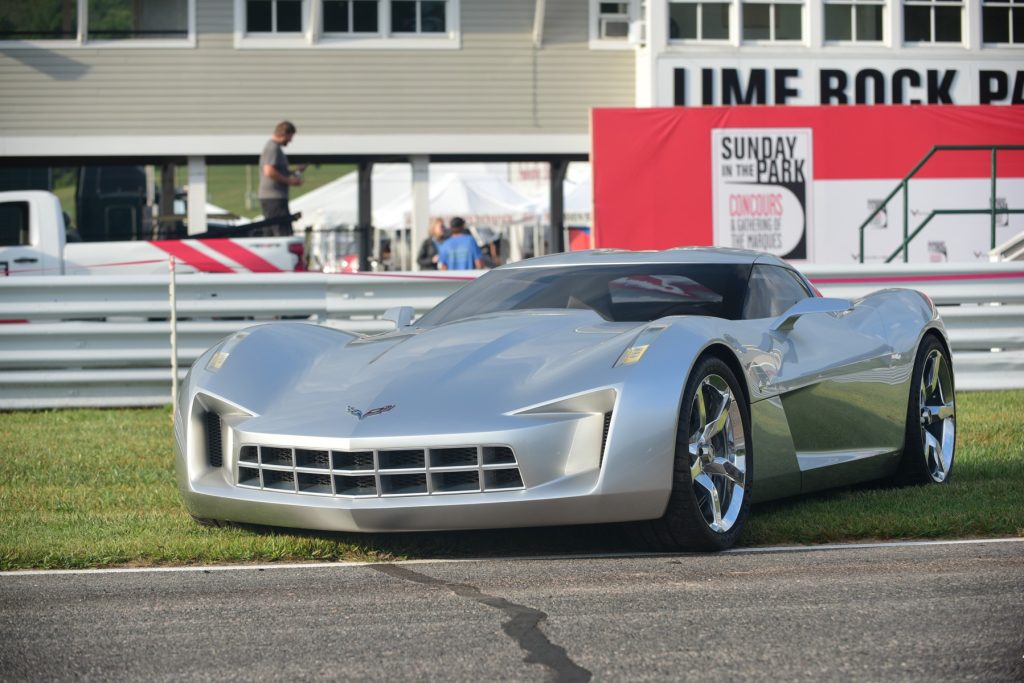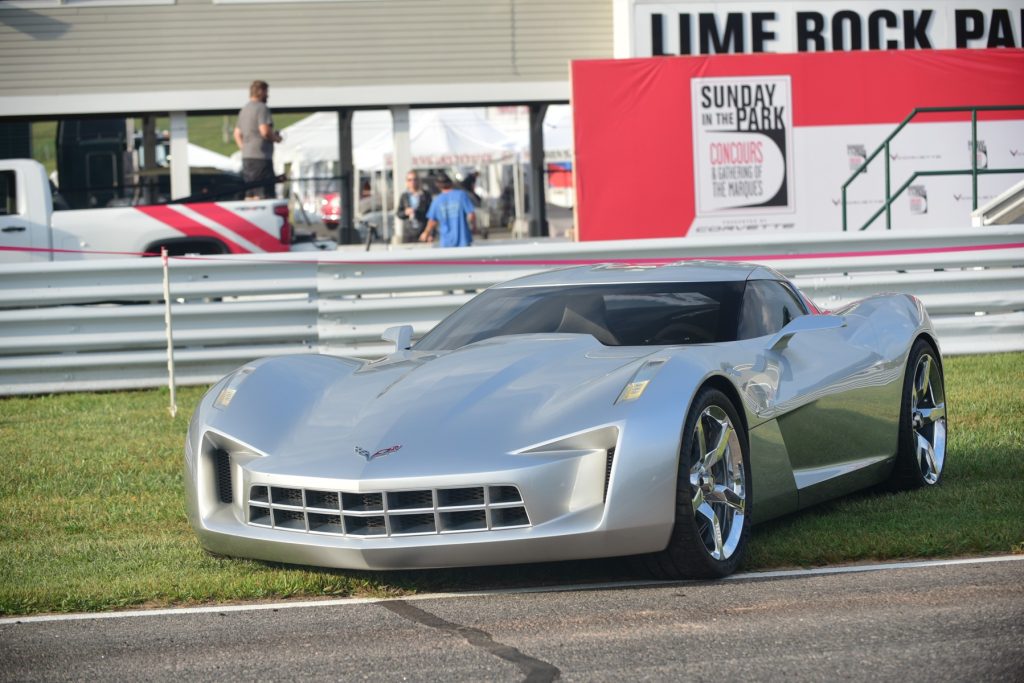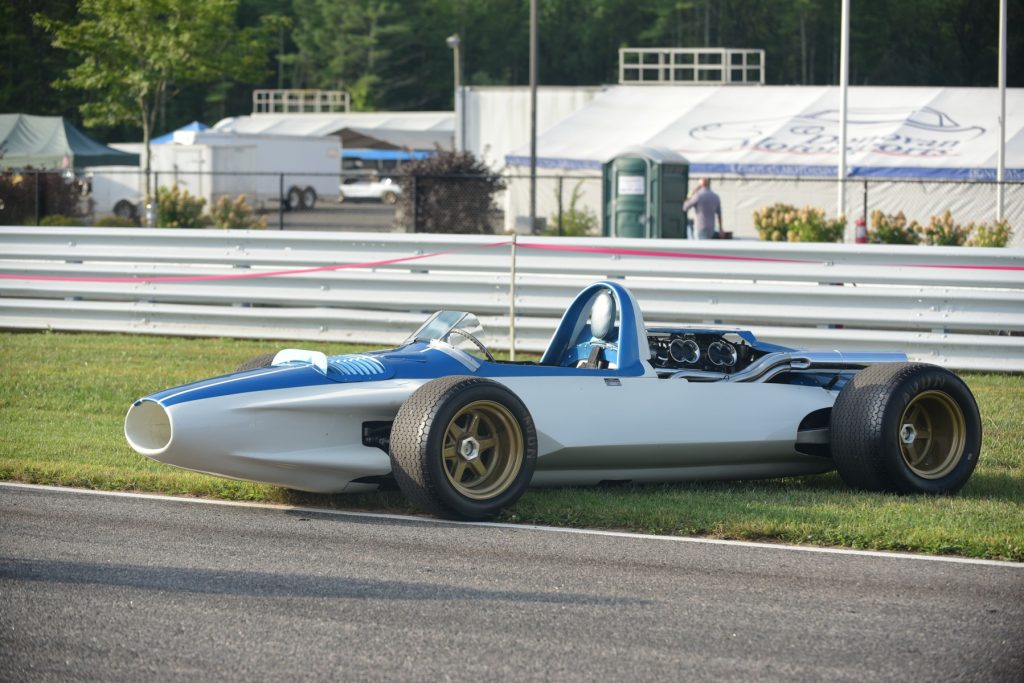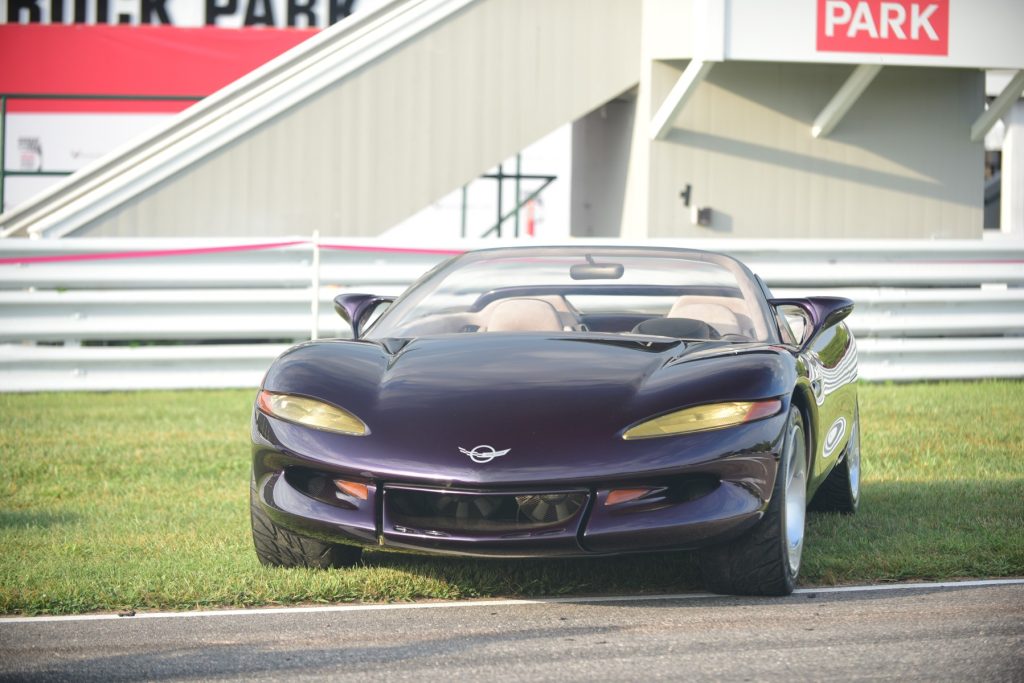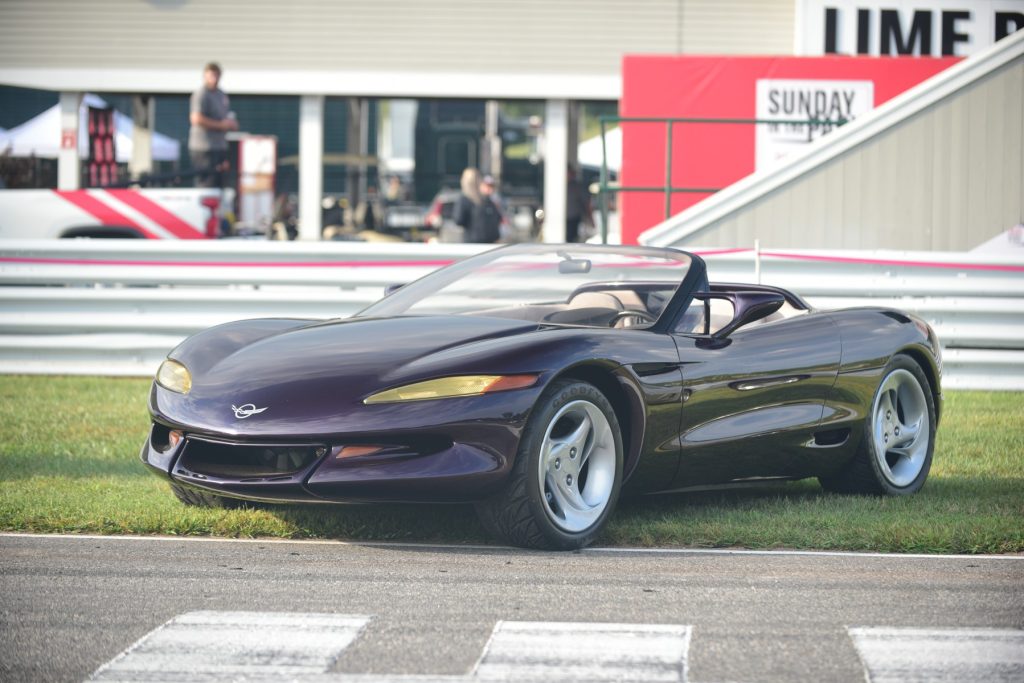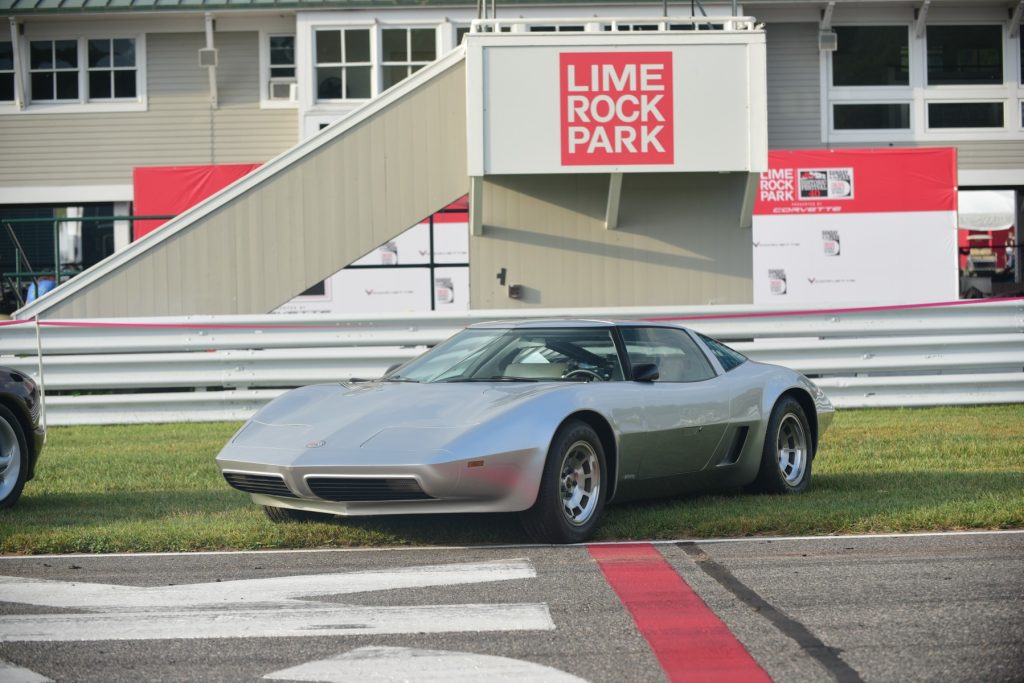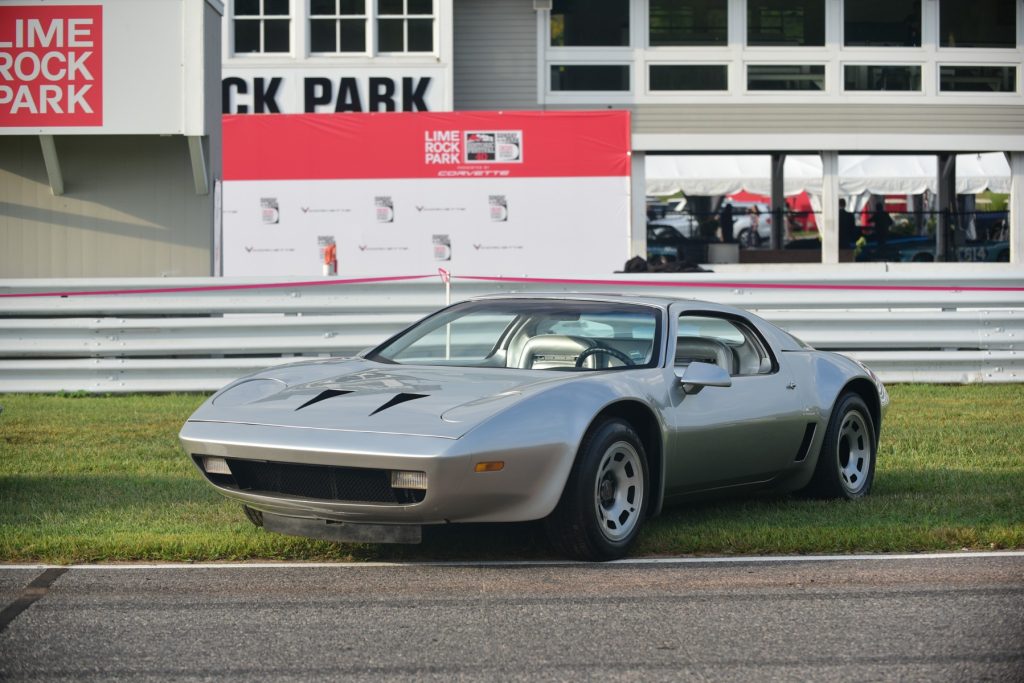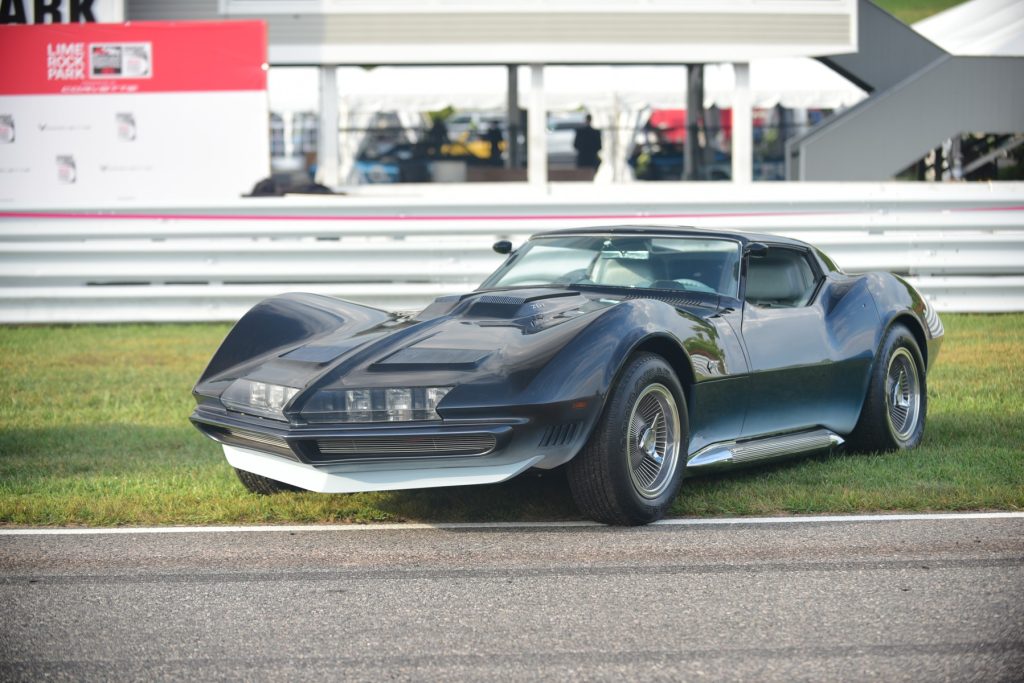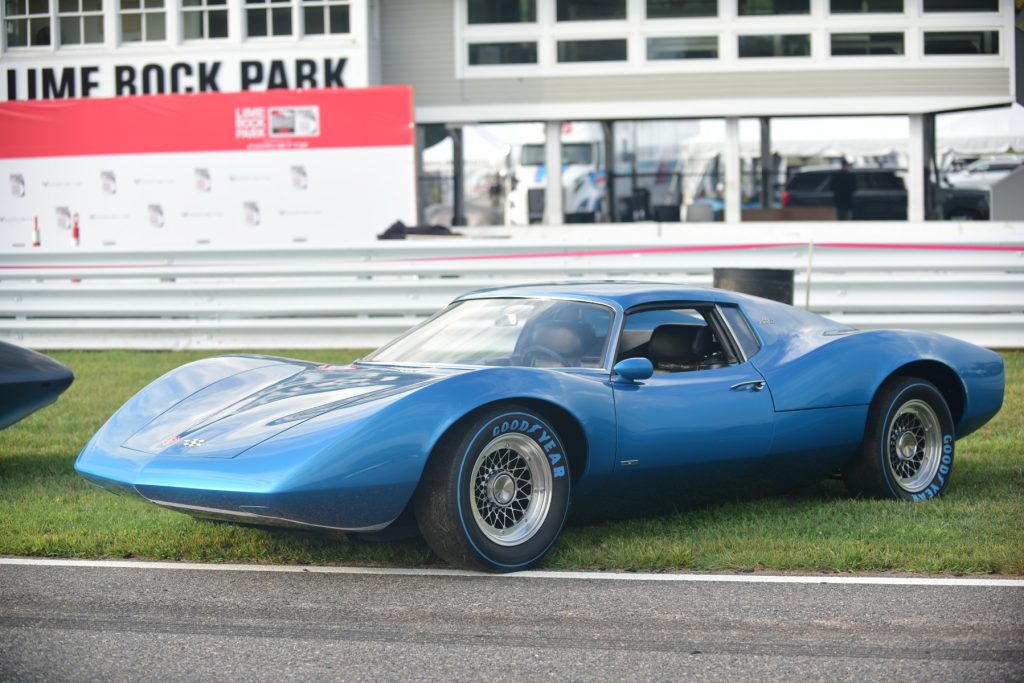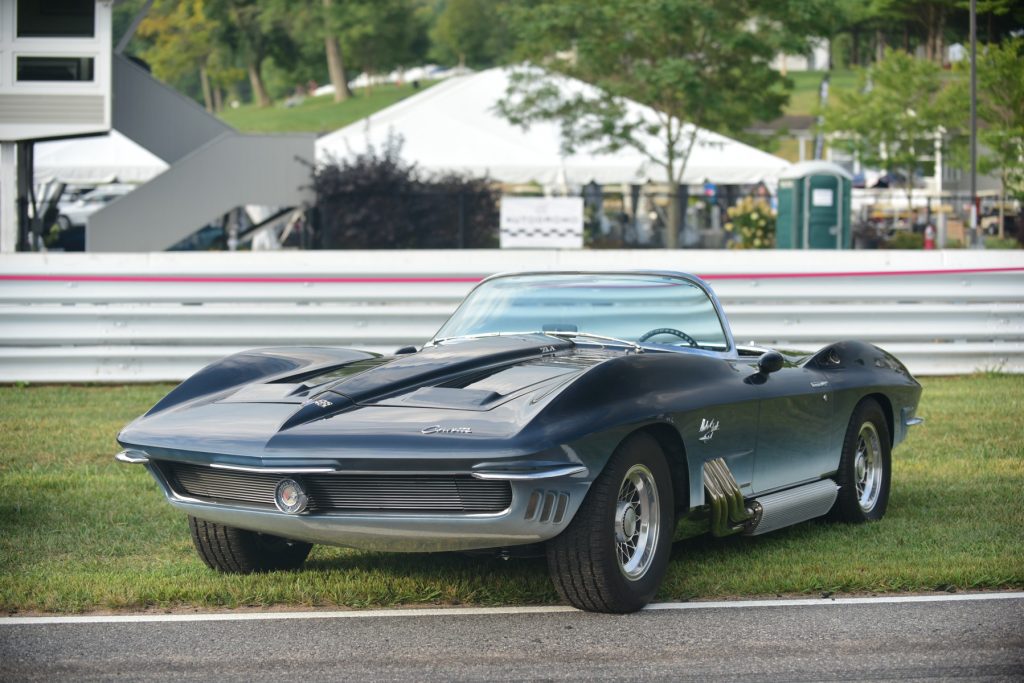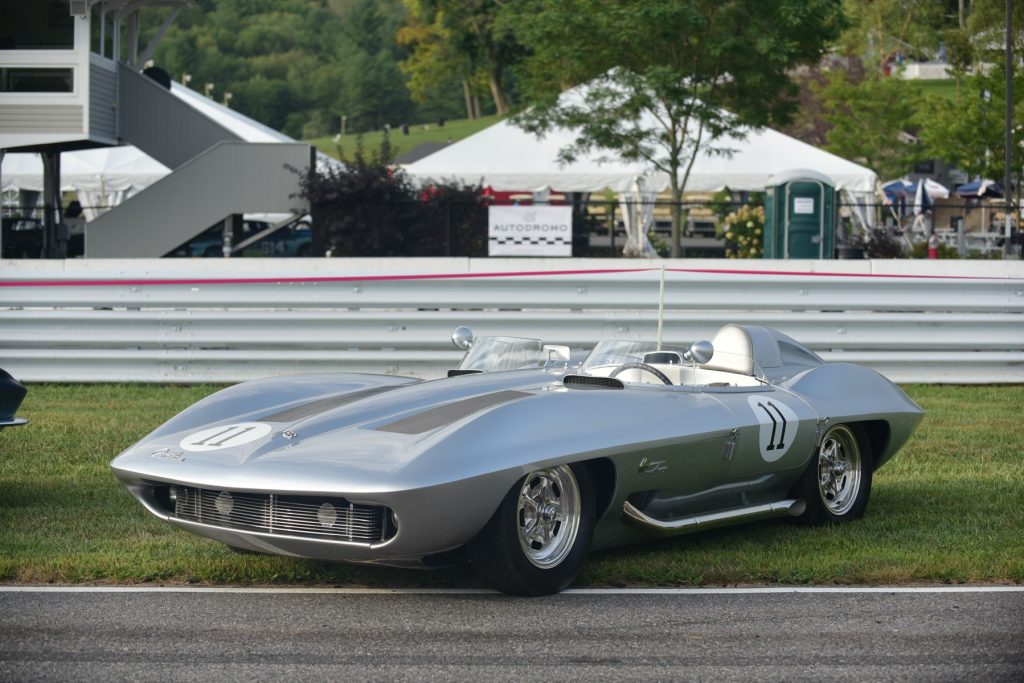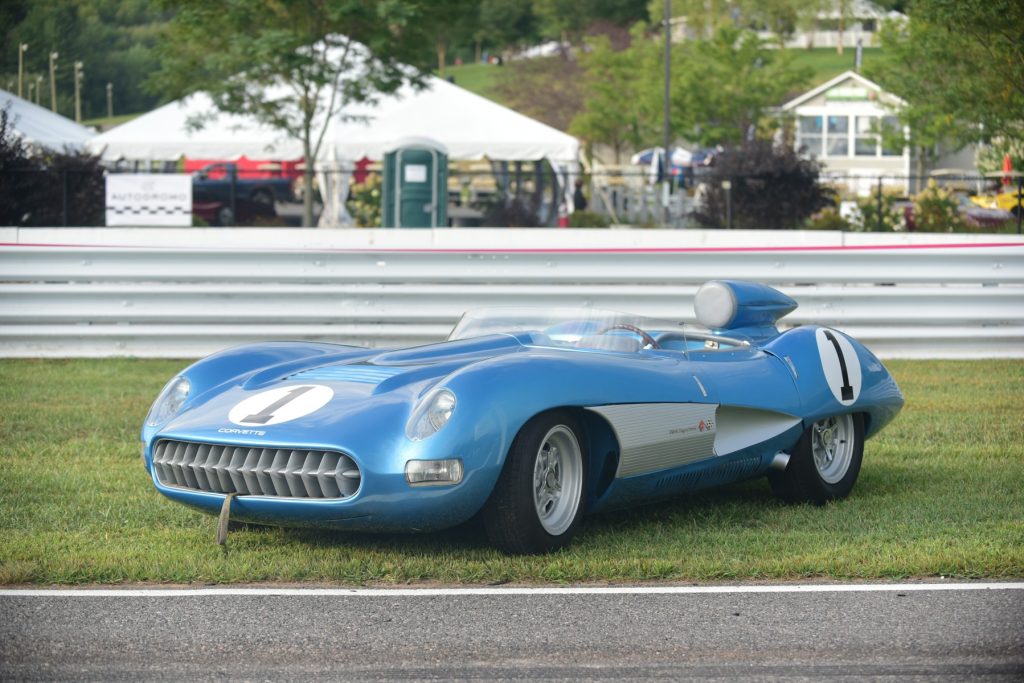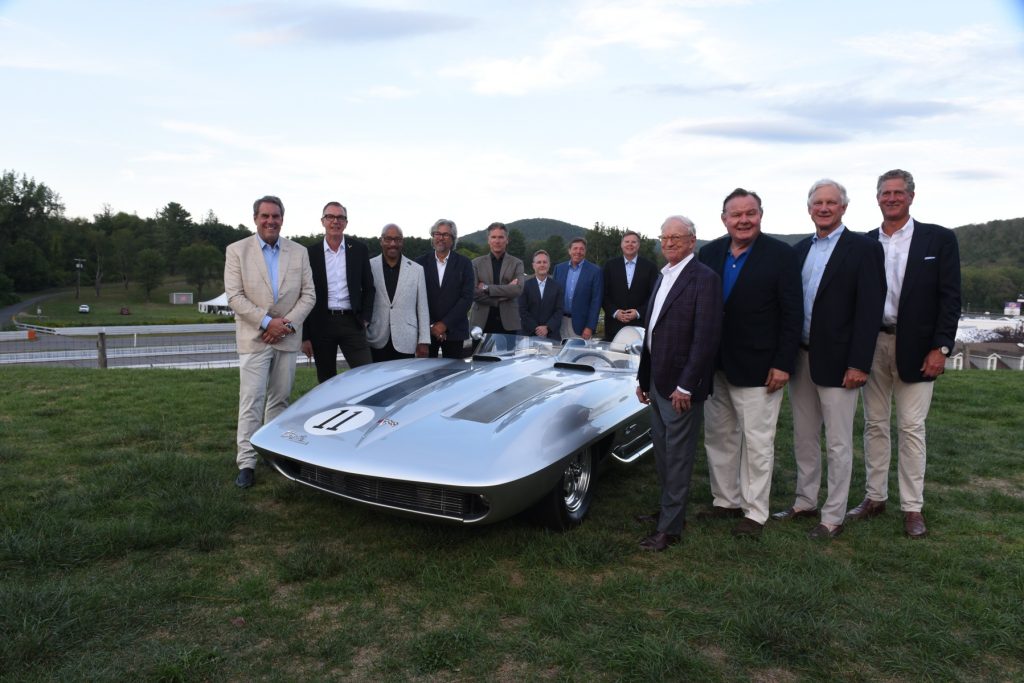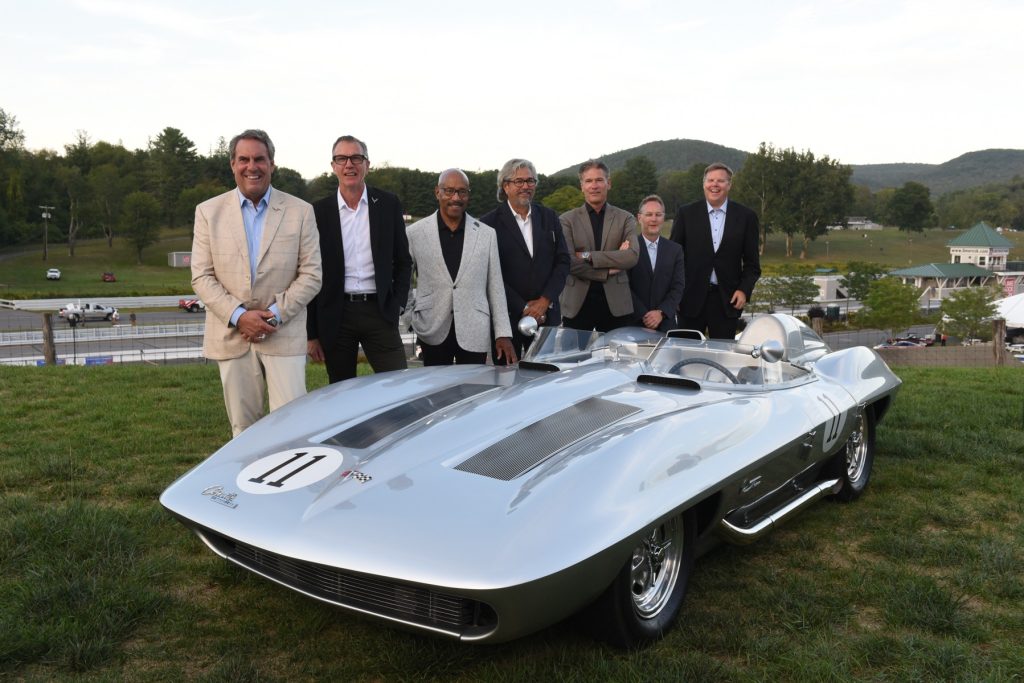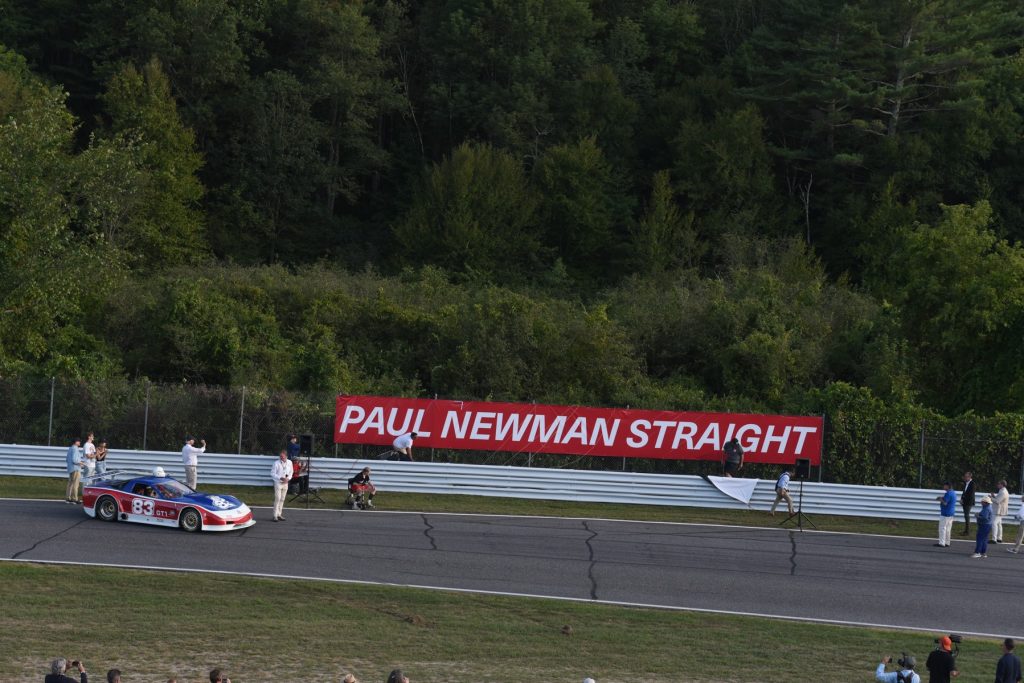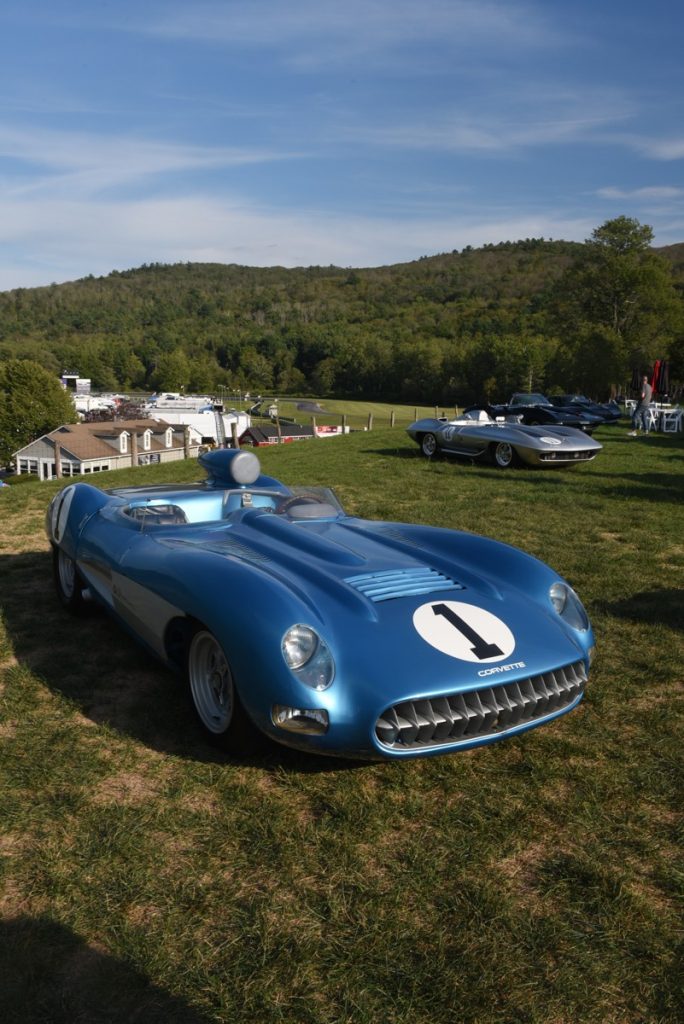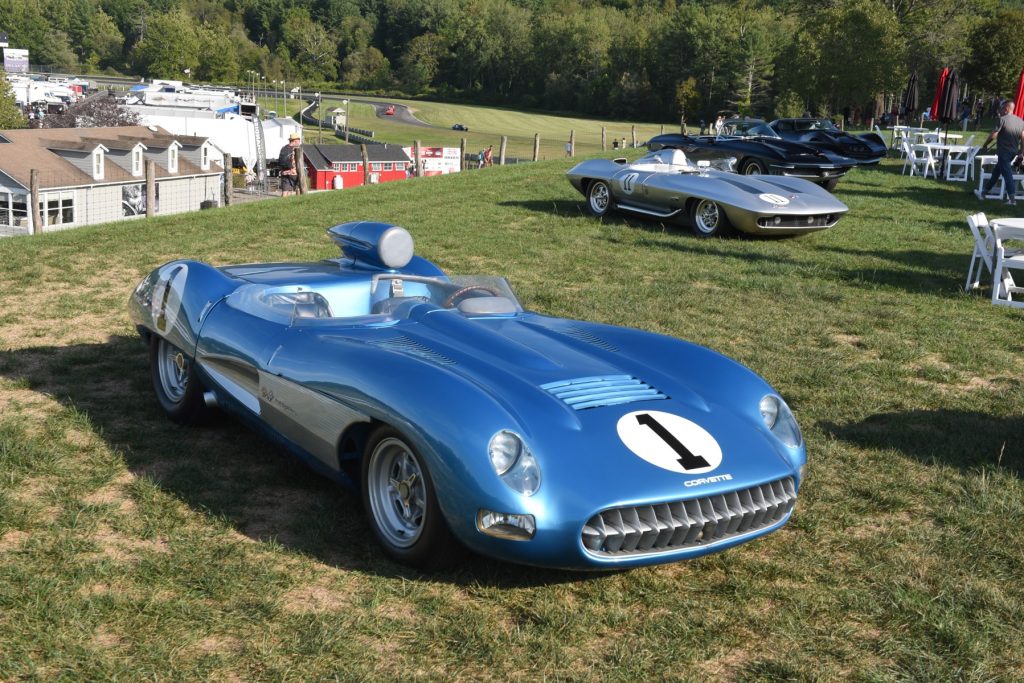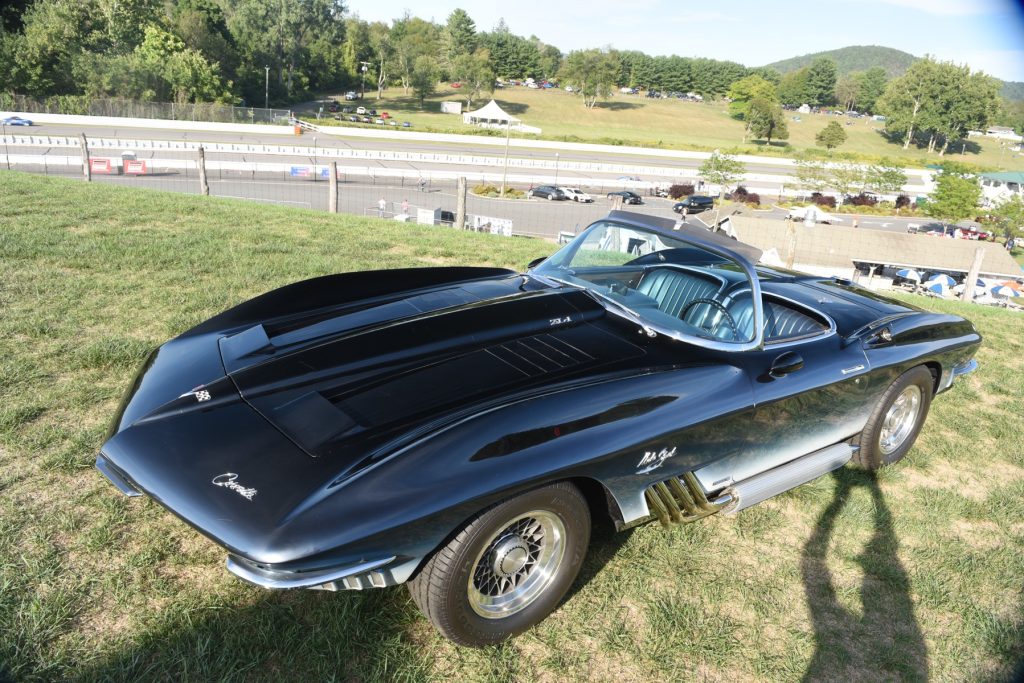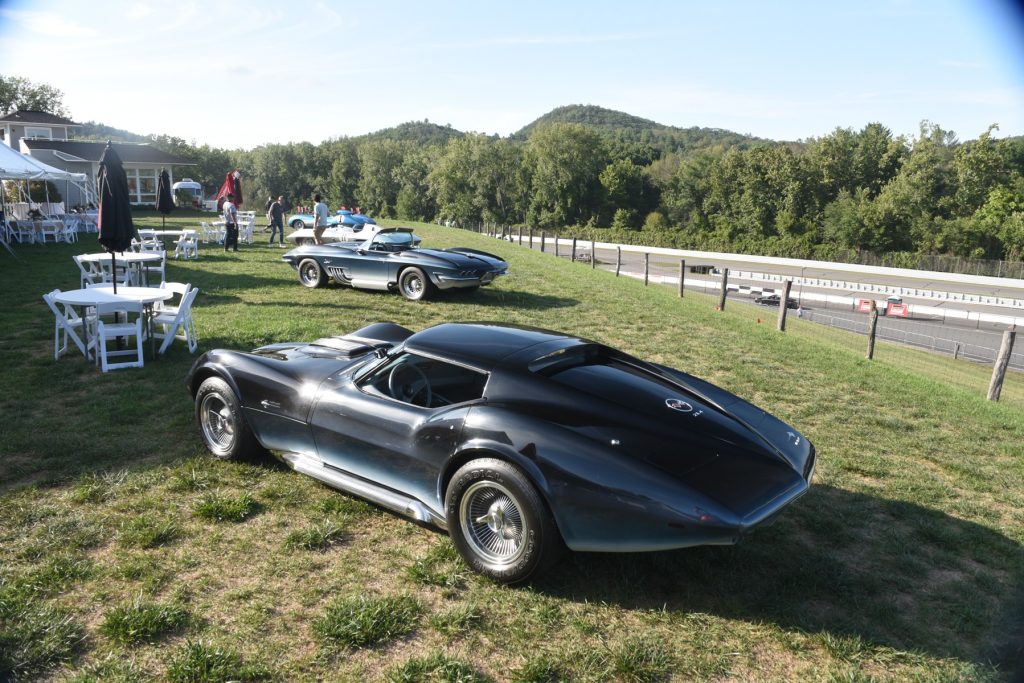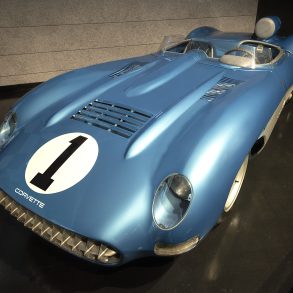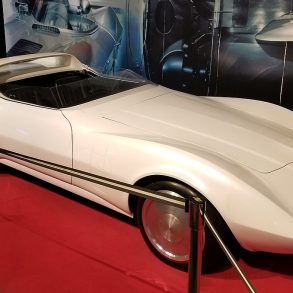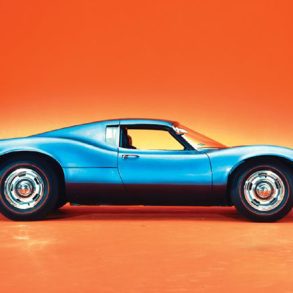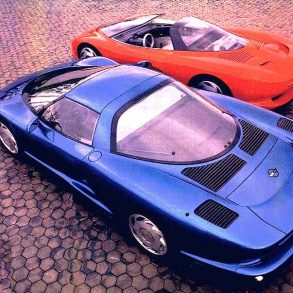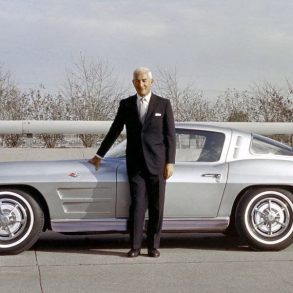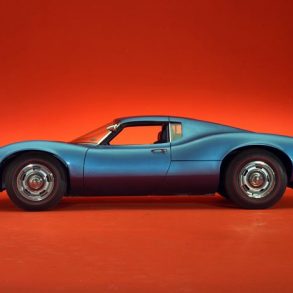On a beautiful late summer weekend, Lime Rock Park celebrated its 40th running of the Historics. This coincided with the 70th anniversary of the iconic Corvette. A top-flight team of enthusiasts put together a mind-boggling array of Chevrolet’s best.
General Motors and heavy-hitting collectors joined forces to help create a display of mind-blowing proportions that will probably not be seen together again.
Cerv I, II, and III were in attendance. The menacing prototype of the 63 Corvette, the Mako Shark, shared space with several early design studies of mid-engined Corvettes that were created decades before the current C8. Brutal Factory L88 racers kept company with the 1960 Cunningham Lemans class-winning team Vette. Other racers in the tent included the 1957 Corvette SS XP-64, a car built to compete in the 12 hours of Sebring. Also, the Peter Brock and Larry Shinoda designed Stingray race car XP-87. If it competed on the world racing stage, it was there. The exhibition was static, but there were plenty of examples roaring and racing around Lime Rock’s 1 1⁄2 mile course. If you were one of the faithful, you were in Corvette heaven that weekend.
GM and a few collectors brought out a variety of Corvette Prototypes, from 1953 to the present day. In 1953 GM executives accepted a suggestion by Myron Scott, then the assistant director of the Public Relations department, to name the company’s new sports car after the corvette a small maneuverable warship.[7] The first model, a convertible, was introduced at the 1953 GM Motorama as a concept car; production models went on sale later that year. In 1963, the second generation was introduced in a coupe and convertible styles. Originally manufactured in Flint, Michigan, and St. Loius the Corvette has been produced in Bowling Green, Kentucky, since 1981, home also to the National Corvette Museum.
In 1953 GM executives accepted a suggestion by Myron Scott, then the assistant director of the Public Relations department, to name the company’s new sports car after the Corvette, a small maneuverable warship.[7] The first model, a convertible, was introduced at the 1953 GM Motorama as a concept car; production models went on sale later that year. In 1963, the second generation was introduced in coupe and convertible styles. Originally manufactured in Flint, Michigan, Flint, and St.Louis, Missouri, the Corvette has been produced in Bowling Green, Kentucky, since 1981, home also to the National Corvette Museum.
Corvette Timeline
- 1953. The first full-scale Corvette concept was displayed as a “dream car” at GM’s
Motorama in New York’s Waldorf Astoria Hotel in January. - 1953. On June 30, the first production Corvette rolled off of the assembly line in Flint, Michigan.
- 1953. Production of the 1954 Corvette began in St. Louis, MO in December of 1953.
- 1955. The small-block V8 displacing 265 cubic inches was introduced. Also, a three-
speed manual transmission was available. - 1956. The restyled Corvette features exposed headlamps, sculpted side coves and rolled
up windows. Factory-installed removable hardtops are offered for the first time. - 1957. Optional fuel injection and option 4-speed manual transmissions are offered for
the first time. - 1958. First time for dual headlights.
- 1960. The last year Corvette features tail lights formed into rounded rear fenders, and
the last with heavy grill “teeth.” - 1963. The Corvette is a total restyle based on Bill Mitchell’s 1959 Sting Ray race car.
- 1963. First year for the Corvette coupe; only year for the split-window coupe. The Z06 is offered
as an option on the 1963 Stingray (199 built). - 1964. The split-window design is eliminated because it “intruded into the driver’s rearward
vision.” - 1965. Big Block V8 engines were introduced for the Corvette with the 396 CID L78 option. It was
rated at 425 HP. - 1966. Factory-installed driver/passenger headrests made their Corvette debut as optional
equipment. First year for the 427 CID engine; up to 425 HP available. Holley Carburetors were
standard with all engines. - 1967. Optional L88 engine offered (only 20 produced).
- 1967. Standard features of the Corvette Sting Ray included an energy-absorbing steering column,
four-way hazard warning flashers and a dual master cylinder brake system. Much of the exterior trim is removed or restyled, as well as the hood and fender vents.1968. The totally restyled Corvette features an industry first for production cars – “T-top” removable roof panels. Lines of the new Corvette closely resemble those of the Mako Shark II show car. Headlamps are now of the “pop-up” design, backlit. - 1969. The 250,000th Corvette – a gold Convertible – comes off the St. Louis production line on November 19. “Stingray” script is added above the fender louvers.
- 1969. The ZR-1 optional factory-installed racing package is offered on Corvette for the first time.
- 1970. The new LT1 Small Block V8 engine option with solid lifters is introduced and rated at 370
HP. - 1971. One of the least-changed models in appearance, Chevrolet essentially handled 1971
production as an extension of 1970. - 1972. The last to feature both front and rear chrome bumpers, a bright egg-crate grill, side-fender
grills. - 1973. 4,000 serial numbers were never built, so the serial number ends with 34,464 but production
totaled 30,464. - 1977. The 500,000th Corvette – a white coupe with red interior – is produced in St. Louis on
March 15. - 1978. The fastback body style marks Corvette’s 25th year of production. The traditional crossed-
flag emblem is replaced with a special anniversary emblem. The special edition of the Corvette is
the Indy 500 Pace Car replica – silver and black. - 1981. Mid-year, production shifted from St. Louis, MO to Bowling Green, KY. This was the first
time a model was built in two locations simultaneously. - 1982. The first Corvette model year to feature the convenience of hatchback design (introduced
with the Collector’s Edition model). Four-speed automatic transmissions with overdrive is
standard, with no manual transmission offered until well into the 1984 model. - 1984. The all-new Corvette has a drag coefficient of a 0.34… that’s 24 percent more aerodynamic
than its predecessor. Top speed over 150 MPH. - 1985. Big news for Corvette is the addition of tuned-port injection of the 230 HP 5.7 liter V8.
- 1986. The first convertible since 1975 is built.
- 1987. Callaway Twin-Turbo engine package introduced (RPO B2K).
- 1988. 35th Anniversary Edition is offered.
- 1990. The Corvette ZR-1 debuts. Driver’s side air bags become a standard feature.
Groundbreaking of the National Corvette Museum in June. - 1992. Performance of the Corvette’s new 300 HP 5.7 liter V8 engine is so impressive that it’s
given the legendary LT1 designation. The One-Millionth Corvette – a white convertible with red interior, matching the first Corvettes of 1953 – rolls off the Bowling Green assembly line on July 2. - 1993. 40th Anniversary package optional with all models – Ruby Red metallic exterior with Ruby Red interior.
- 1994. National Corvette Museum opens Labor Day Weekend.
- 1995. Corvette paces the Indy 500 for the third time (first in 1978, also in 1986).
- 1996. Two unique special Corvette models are available – a Collector’s Edition and a Grand
Sport. The Collector’s Edition features Sebring Silver paint, Collector’s Edition emblems and an LT-1 engine. The Grand Sport has blue paint with a white stripe and red “hash marks” on the left- front fender with an LT-4 engine. - 1996. Only 1,000 Grand Sports are made and it was only the second out of three times in Corvette history that a Grand Sport edition was made. It also provided an alternative for those seeking a little extra horsepower as 1995 marked the final production year of C4 ZR-1s.
- 1997. Corvette featured hydroformed side frame rails, each made of a single piece of tubular steel. Transmission was rear mounted.
- 1998. For the first time since 1962 a separate trunk with outside access returned on the Corvette Convertible.
- 1998. A hardtop model with permanently-fixed roof panel and external trunk lid joins the Corvette family. The LS1 V8 engine in the 1999 Corvette delivers 345 HP.
- 1999. The LS1 V8 engine delivers 348 HP.
- 2000. Optional heads-up display offered.
- 2001. The Z06 is introduced with a 385 HP LS6 V8 and a top speed of over 170 MPH. New front
fascia grilles improve airflow to the engine air inlet. - 2002. Z06 performance reaches another plateau with the infusion of another 20 HP – for 405 – and
14 lb. ft. of more torque – for a total of 400. - 2003. 50th Anniversary of the Corvette is marked by the availability of a 50th Anniversary
package with special red paint, a unique two-tone shale interior, special emblems and Magnetic
Selective Ride. - 2004. Special commemorative package honoring Corvette’s success at LeMans are available.
Corvette paced the Indy 500. - 2005. All new design and engineering. Powered by the new 6.0L 400 HP small block V8. Exposed headlights return for the first time since 1962.
- 2005. Power top option for convertibles for the first time since 1962. OnStar and navigation available for the first time. Corvette paced the Indy 500.
- 2006. Complete redesign of the Z06 after a one year absence. Powered by a new 7.0L (427 CID) small block V8 that produced 505 HP and 470 lb. ft. of torque. Six-speed paddle shift automatic transmission introduced.
- 2008. Powered by a new LS3 6.2L base V8 engine. Performance increased from 400 HP to 430 HP. Green E85 Z06 paced the Indy 500. Introduction of the leather-wrapped interior option.
- 2009. Debut of the new Corvette ZR1 powered by a super-charged 6.2L V8 which produces 638 HP and has a top speed of 205 MPH.
- 2010. Return of the Grand Sport model which included the base LS3 engine and Z06 level chassis. Side air bags standard on all models.
- 2011. Z06 Carbon Limited Edition offered to mark Corvette’s 50th anniversary at Le Mans. Exteriors limited to Supersonic Blue or Inferno Orange.
- 2012. Chevrolet Centennial Edition (available on all models), featuring Carbon Flash metallic paint, satin-black graphics, satin-black cup wheels with red stripe, unique badges, special-trimmed interior with red stitching and Magnetic Selective Ride Control.
- 2013. 60th Anniversary and a special 427 Convertible Collector Edition close out the C6 generation on a high note.
- 2013. Production of the sixth generation ceases February 28.
- 2013. The seventh generation Corvette is introduced at an invitation-only reveal in Detroit on January 13. The Stingray designation returns.
- 2013. Indy 500 is paced by a 2014 Laguna Blue Corvette Z51 driven by San Francisco NFL coach Jim Harbaugh.
- 2013. Aluminum frames become the standard for all coupe and convertible models.
- 2013. Michelin becomes the exclusive tire supplier for Corvette.
- 2013. The Stingray features a LT1 V8 engine with 460 HP making it the quickest, most powerful
standard Corvette to date. - 2014. Chevrolet announces the return of the Z06, powered by a LT4 supercharged 6.2L aluminum
V8 engine with 650 HP. It is the most track capable car yet, and the first to offer a supercharged
engine, automatic transmission and convertible option. - 2015. A new C7.R edition Z06 is offered for the 2016 model year, limited to a production of 500.
- 2017. The famed Grand Sport name returned to the Corvette for another generation utilizing a
combination of Z06 and Z51 elements to create the overall look and performance package. - 2019. This would be the final year of production for the seventh generation Corvette and it went
out on a high note, with the highest performance Corvette produced to date. The new ZR1
optioned Corvette produced 755 horsepower and went 0-60 mph in under three seconds. - 2020. The ‘next generation’ Corvette debuts in Tustin, California on July 18, 2019 and is the
brand’s first-ever production mid-engine Corvette. The car features the fastest 0-60 time of any
entry Corvette ever — under three seconds when equipped with Z51 Performance Package.
1957 Corvette SS (XP-64)
The Corvette Super Sport was built to compete in the 1957 12 Hours of Sebring road race, with an eye towards eventual competition at Le Mans. The project was headed by GM’s Harley Earl and engineer Zora Arkus-Duntov. The Corvette SS development mule’s tubular chassis was derived from the Mercedes-Benz 300SL’s space frame design, and two SS chassis were built using the mule as a template. Instead of the traditional Corvette fiberglass body, custom magnesium alloy bodywork was created for the SS.
The engine was a modified production 283-cubic-inch Chevrolet small-block V8 with Rochester mechanical fuel injection, aluminum cylinder heads, and solid lifters, making 310 horsepower and 295 lb-ft torque. The suspension features a rear DeDion tube with inboard drum brakes. A four-speed Borg Warner transmission and Halibrand quick-change rear end complete the driveline. Curb weight is just 1,850 pounds.
The Corvette SS competed at the 1957 Sebring race, starting from pole position but retiring early with braking and suspension troubles. Chevrolet’s withdrawal from organized racing prevented further development of the SS project.
1960 CERV I
The first Chevrolet Engineering Research Vehicle (CERV) was developed in 1959 as an engineering research platform under the direction of Zora Arkus-Duntov. The stated goal was to create an open-wheel vehicle so that direct observations of ride and handling could be made by watching or photographing the suspension. At the time, Chevrolet was not officially participating in motorsports.
The CERV I used bodywork made of fiberglass. Weighing in at just 80 pounds, there’s nothing on the body that doesn’t have to be there for aerodynamic reasons. The underlying space frame is made of chrome-molybdenum steel tubing and weighs just 125 pounds. The advanced four-wheel independent suspension uses a rear multi-link design that is similar to a modern sports car. This car also carries a twin-piston brake master cylinder to guard against brake failure. In practice, the car became a forward look at formula racing car development in the 1960s. With the all-aluminum 283 cubic-inch V8 engine mounted behind the driver and independent rear suspension, the CERV I presaged the new designs that would take over at the Indianapolis 500 within a few years.
1959 Corvette Stingray Racer (XP-87)
Envisioned by Pete Brock and refined by Larry Shinoda, the XP-87 Corvette Stingray (yes, one word) Racer of 1959 was the first concept of what would eventually become the second- generation Corvette Sting Ray. Inspired by Italian sports cars, Chevrolet’s master stylist Bill Mitchell shepherded the development of the Stingray as the first project of his new Studio X design center. The lightweight fiberglass and aluminum bonded bodywork reduced the weight of the Stingray by almost 1,000 pounds compared to the 1960 Corvette.
The Stingray was campaigned during the 1959 and 1960 SCCA competition seasons (including at Lime Rock, during the famous “Formula Libre” race), earning a national championship in the hands of noted Corvette racer Dr. Dick Thompson. After its racing career ended, Mitchell installed a windshield and passenger seat and drove the car himself.
The Stingray made an on-screen appearance in Elvis Presley’s film Clambake and in a Transformers movie in 2014. Today, GM’s Heritage Center displays this car at select automotive events.
1961 Corvette Mako Shark
Chevrolet stylist Bill Mitchell drew inspiration wherever he went. In addition to noticing European sports car designs, he took note of shapes in nature. When he caught a Mako shark while fishing in Florida, he applied some of its shape to prior Corvette concepts and together with Larry Shinoda, came up with the Mako Shark I Corvette concept of 1961, which was intended as a highly stylized preview of the all-new 1963 production Corvette.
The Mako Shark concept has been powered by a number of engines, including a supercharged 427-cubic-inch big-block V8 as well as both fuel-injected and twin-carbureted engines. At present, a 1969 427 ZL-1 engine resides in the car, rated at 425 horsepower.
The beauty of the Mako Shark concept is largely in its paint scheme, which blends an iridescent ocean blue on top into white on the lower edges of the doors and rocker panels. Shinoda drew additional inspiration from the shark’s gills in the form of small vents forward of the front wheels.
1964 CERV II
Despite GM’s rule against official participation in motorsports, Zora Arkus-Duntov kept racing at the heart of Corvette development. The second Chevrolet Engineering Research Vehicle (CERV II) was developed in 1963 and completed in 1964.
With styling by Larry Shinoda and Tony Lapine, CERV II was again mid-engined and aerodynamic. The smooth sports racer bodywork and V8 powered design was similar to that being developed for the new SCCA US Road Racing Championship, later to become the Can-Am series.
Among the innovations in CERV II, the vehicle is built on a monocoque chassis. Like its predecessor, the V8 engine was entirely made of aluminum. The 377-cubic-inch engine was fitted with Hilborn fuel injection and capable of 500 horsepower. Uniquely, the CERV II features all-wheel-drive, with a Powerglide torque converter feeding separate two-speed clutchless manual transmissions for the front and rear axles. This concept vehicle was capable of 0-60 acceleration in under 3 seconds, and a top speed of 210 MPH
1969 Corvette Manta Ray
Following the Mako Shark concept of 1961 and the Mako Shark II of 1965 that looked towards the third-generation Corvette Stingray design, GM design chief Bill Mitchell found another inspiration in aquatic nature, the powerful and graceful Manta Ray, which led to the development of the Manta Ray concept after the Mako Shark II had successfully previewed the design of the C3 Corvette.
Though similar in overall layout, the Manta Ray concept featured more prominent side exhaust pipes than the Mako Shark II and fixed headlights rather than pop-up units. Both concepts featured a swept-back design over the rear of the car, but where the Mako Shark II used louvers, the Manta Ray kept a small rear window. Unique to the Manta Ray, special flaps in the rear deck rise up during hard braking, reflecting light from additional brake lights within the bodywork. The Manta Ray concept is powered by a 427 cubic inch V8 rated at 430 horsepower. This is the same engine used in ZL-1 models. Inside, cabin controls moved from the dashboard down to the center console, where they are located in the latest eighth-generation Corvette.
1968 Astro II (XP-880)
The dream of a mid-engined Corvette persisted in the minds of Chevrolet engineers and designers. In 1968, the Astro II concept showcased how a mid-engined production Corvette
might appear. Except for the smooth flowing lines characteristic of its era, the Astro II is not that far off the design of the actual mid-engine eighth-generation Corvette. The Astro II was built on a welded steel backbone frame, with a radiator mounted in the rear and a Mark IV 427 cubic inch V8 engine mounted with the flywheel and ring gear facing forward. The engine had a torque converter mounted to what was usually the front of the engine, driving the rear wheels with a two-speed transaxle borrowed from an older Pontiac Tempest.
The rear body section of the Astro II could be raised directly behind the passenger compartment to access the fuel tank, engine, and rear storage areas. Notably, most of the Astro II was made using standard parts, raising speculation that this concept could actually be put into production for the 1970s.
1972 Reynolds Aluminum Corvette (XP-895)
In 1972, Chevrolet designers were not only experimenting with mid-engine designs, but also with alternatives to the Corvette’s traditional fiberglass bodywork. The result was XP-895, also known as the Reynolds Aluminum Corvette. The body panels are all aluminum and hidden headlights are utilized to achieve the lowest possible front profile. The aluminum body was a joint venture between GM and Reynolds Aluminum.
The Reynolds project was based on an XP-882 chassis that also underpinned the Four-Rotor / Aerovette project but was constructed with an aluminum body and given a separate project number. The concept was intended to demonstrate the practicality of using this lightweight metal for car bodies.
As with previous concepts, the Reynolds Corvette features a V8 engine, this time mounted transversely in a mid-engine position. It utilizes a Turbo Hydramatic transmission via a bevel gear box to drive the rear wheels. This concept was first displayed at an SAE event in 1974.
1973 Aerovette (XP-882)
The Aerovette continued Chevrolet’s exploration of mid-engine designs, this time with a four- rotor Wankel rotary engine rated at 420 horsepower. Chevrolet had licensed the Wankel engine designs for research. Bill Mitchell directed designer Henry Haga in this futuristic concept with bi- folding gull-wing doors.
The concept features a glass window over the engine compartment to show off the “Super- Wankel” rotary design. This feature has often been copied by exotic automakers since that time. The ultra-modern interior was created in silver leather to complement the silver paint work. The wheels foreshadow the optional alloy wheels available on production Corvettes later in the 1970s.
After GM abandoned its rotary engine program, Bill Mitchell gave the 4-Rotor concept a new life by replacing that engine with a small-block Chevrolet V8 and christening the stunning and dramatic design as the Aerovette.
1986 Corvette Indy
The Corvette Indy resulted from a challenge by GM leadership to design a completely new Corvette. Chuck Jordan gave the assignment to Jerry Palmer who selected a theme from then- new GM designer Tom Peters. It was unveiled at the 1986 Detroit Auto Show.
This time, the mid-mounted V8 engine featured twin turbochargers, four valves per cylinder, and just 2.6 liters of displacement. Still, the engine was estimated to produce about 600 horsepower. The Corvette Indy concept used all-wheel-drive and four-wheel steering, active suspension, and a then-revolutionary rear-view camera with a screen mounted in the dash. This forward-looking prototype also included anti-lock brakes, electronic traction control, and a drive-by-wire electronic throttle control. Instead of two doors, there is a clamshell that lifts up, allowing both driver and passenger to enter or exit the vehicle.
1990 CERV III
Based on the Corvette Indy concept, the 1990 Chevrolet Engineering Research Vehicle (CERV III) was developed as a technology showcase. With a huge budget to work with, Chevrolet engineers put everything they could develop into this concept to make it a true “car of the future.”
Like its predecessors, the CERV III was a mid-engine design, with bodywork made from a composite of carbon fiber, Nomex, and Kevlar, layered in a sandwich over aluminum honeycomb for strength. The engine is a twin-turbocharged Chevrolet 5.7-liter V8, with special tuning performed by Lotus. Output is estimated at 650 horsepower. With the extreme aerodynamics of the body, the CERV III can reach speeds of 225 MPH, at least in theory.
1992 Stingray III
The Corvette Stingray III Concept was developed as an internal design challenge to combine classic Corvette cues with surprisingly high-tech features, modern materials, and a striking new appearance. Southern California’s Advanced Concept Center won the contest with this vision of what the fifth-generation Corvette might be. Chevrolet enthusiasts will quickly notice the close resemblance to the fourth-generation Camaro, which debuted in 1983 for the 1984 model year. The car carries many advanced features, including a clamshell hood, scissor-style doors, ergonomic seats, rear-view camera with night vision enhancement, and a high-performance hybrid drive. Interactive touch controls allow the driver to customize the power and efficiency of the vehicle and then share it with friends via the in-car camera system and advanced telemetry. Notably, in this concept vehicle the seats are fixed to the floor, and the steering wheel, pedals, and driver information cockpit move towards the driver. This idea is still used today in advanced racing vehicles. Engine power comes courtesy of a Chevrolet LT1 V8. The Stingray III also carries active suspension and four-wheel steering.
2009 Corvette Stingray Concept
The Chevrolet Corvette Stingray concept was introduced as a surprise at the 2009 Chicago Auto Show, and closely resembles the seventh-generation Corvette that debuted five years later in 2014. Chevrolet stated that the design was influenced by the original 1959 Stingray Racer, but also drew on Corvette heritage clues from other generations. It brought together in a futuristic shape that seems to be equal parts racing car and spaceship.
Some inspiration for this concept came from Hollywood. Five Chevrolet-based characters were featured in the movie “Transformers: Revenge of the Fallen.” The character called Sideswipe took the form of a sleek, vision concept dreamed up by the Corvette designers at GM and became the latest Stingray prototype.
GM Vice Chairman Bob Lutz said at the time that there was no intention to produce a car like the Stingray movie car, calling it a “pure concept.” Yet the many styling cues that found their way into the seventh-generation Corvette Stingray are undeniable.


